Tag #question
1766 papers:
 POPL-2020-LazarekKSFD
POPL-2020-LazarekKSFD - Does blame shifting work? (LL, AK, SS, RBF, CD), p. 29.
 POPL-2020-MigeedP #decidability #what
POPL-2020-MigeedP #decidability #what- What is decidable about gradual types? (ZM, JP), p. 29.
 EDM-2019-AguerrebereBCGK #education #feedback #how #online #student
EDM-2019-AguerrebereBCGK #education #feedback #how #online #student- How Should Online Teachers of English as a Foreign Language (EFL) Write Feedback to Students? (CA, MB, CC, SG, GK, JW).
 ICPC-2019-BauerSPHA #comprehension #matter #named
ICPC-2019-BauerSPHA #comprehension #matter #named- Indentation: simply a matter of style or support for program comprehension? (JB, JS, NP, JCH, SA), pp. 154–164.
 ICPC-2019-EposhiOGSOO #design #problem #refactoring
ICPC-2019-EposhiOGSOO #design #problem #refactoring- Removal of design problems through refactorings: are we looking at the right symptoms? (AE, WNO, AG, LdSS, RFO, AO), pp. 148–153.
 ICPC-2019-SaidQK #embedded #modelling #state machine
ICPC-2019-SaidQK #embedded #modelling #state machine- Do extracted state machine models help to understand embedded software? (WS, JQ, RK), pp. 191–196.
 ICPC-2019-SantosS #configuration management #dependence #how
ICPC-2019-SantosS #configuration management #dependence #how- How does feature dependency affect configurable system comprehensibility? (DS, CS), pp. 19–29.
 ICPC-2019-TranTNNN #migration
ICPC-2019-TranTNNN #migration- Does BLEU score work for code migration? (NMT, HT, SN, HN, TNN), pp. 165–176.
 ICPC-2019-Weimer #what
ICPC-2019-Weimer #what- What goes on in your brain when you read and understand code? (WW), p. 1.
 ICSME-2019-0002AGLX #energy #maintenance
ICSME-2019-0002AGLX #energy #maintenance- Do Energy-Oriented Changes Hinder Maintainability? (LC0, RA, JCG, LL, XX0), pp. 29–40.
 ICSME-2019-ElazharySEZ #git #guidelines #process
ICSME-2019-ElazharySEZ #git #guidelines #process- Do as I Do, Not as I Say: Do Contribution Guidelines Match the GitHub Contribution Process? (OE, MADS, NAE, AZ), pp. 286–290.
 ICSME-2019-IammarinoZAP #refactoring #self #technical debt
ICSME-2019-IammarinoZAP #refactoring #self #technical debt- Self-Admitted Technical Debt Removal and Refactoring Actions: Co-Occurrence or More? (MI, FZ, LA, MDP), pp. 186–190.
 ICSME-2019-JinCX #api #developer #what
ICSME-2019-JinCX #api #developer #what- What Do Developers Discuss about Biometric APIs? (ZJ, KYC, XX0), pp. 348–352.
 ICSME-2019-Sae-LimHS #automation #impact analysis #predict
ICSME-2019-Sae-LimHS #automation #impact analysis #predict- Can Automated Impact Analysis Techniques Help Predict Decaying Modules? (NSL, SH, MS), pp. 541–545.
 MSR-2019-AbricCCGM #community #development #stack overflow
MSR-2019-AbricCCGM #community #development #stack overflow- Can duplicate questions on stack overflow benefit the software development community? (DA, OEC, MC, KG, SM), pp. 230–234.
 MSR-2019-HabchiMR #android #smell
MSR-2019-HabchiMR #android #smell- The rise of Android code smells: who is to blame? (SH, NM, RR), pp. 445–456.
 MSR-2019-ManesB #developer #git #how #stack overflow #what
MSR-2019-ManesB #developer #git #how #stack overflow #what- How often and what StackOverflow posts do developers reference in their GitHub projects? (SSM, OB), pp. 235–239.
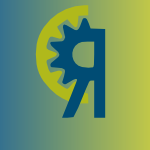 SANER-2019-BusingeKOBS #eclipse #framework #how #interface
SANER-2019-BusingeKOBS #eclipse #framework #how #interface- How Stable Are Eclipse Application Framework Internal Interfaces? (JB, SK, MO, EB, AS), pp. 117–127.
 SANER-2019-GaoLKBK
SANER-2019-GaoLKBK - Should You Consider Adware as Malware in Your Study? (JG, LL0, PK, TFB, JK), pp. 604–608.
 SANER-2019-SierraTST #architecture #self #technical debt
SANER-2019-SierraTST #architecture #self #technical debt- Is Self-Admitted Technical Debt a Good Indicator of Architectural Divergences? (GS, AT, ES, NT), pp. 534–543.
 FM-2019-Ehlers #how #model checking
FM-2019-Ehlers #how #model checking- How Hard Is Finding Shortest Counter-Example Lassos in Model Checking? (RE), pp. 245–261.
 CHI-PLAY-2019-WohnJESSD #comprehension #people #why
CHI-PLAY-2019-WohnJESSD #comprehension #people #why- Understanding Digital Patronage: Why Do People Subscribe to Streamers on Twitch? (DYW, PJ, PE, JSSJ, MS, PD), pp. 99–110.
 CoG-2019-JooK #game studies #how #learning #using #visualisation
CoG-2019-JooK #game studies #how #learning #using #visualisation- Visualization of Deep Reinforcement Learning using Grad-CAM: How AI Plays Atari Games? (HTJ, KJK), pp. 1–2.
 CoG-2019-JustesenDR #game studies
CoG-2019-JustesenDR #game studies- When Are We Done with Games? (NJ, MSD, SR), pp. 1–8.
 FDG-2019-OSheaF #design #framework #game studies
FDG-2019-OSheaF #design #framework #game studies- Game design frameworks: where do we start? (ZO, JF), p. 10.
 ICGJ-2019-MillerDK #game studies
ICGJ-2019-MillerDK #game studies- Can Game Jams Boost Confidence and Sense of Preparedness? (MM, JD, FK), p. 5.
 CIKM-2019-SunQYCCC #what
CIKM-2019-SunQYCCC #what- What Can History Tell Us? (KS, TQ, HY, TC, YC, LC0), pp. 1593–1602.
 ECIR-p1-2019-AlbahemSSC #how #metric #topic
ECIR-p1-2019-AlbahemSSC #how #metric #topic- Meta-evaluation of Dynamic Search: How Do Metrics Capture Topical Relevance, Diversity and User Effort? (AA, DS, FS, LC), pp. 607–620.
 ECIR-p2-2019-ShengLM #image #multimodal #retrieval
ECIR-p2-2019-ShengLM #image #multimodal #retrieval- Can Image Captioning Help Passage Retrieval in Multimodal Question Answering? (SS, KL, MFM), pp. 94–101.
 ICML-2019-ByrdL #learning #what
ICML-2019-ByrdL #learning #what- What is the Effect of Importance Weighting in Deep Learning? (JB, ZCL), pp. 872–881.
 ICML-2019-LiBS #classification #generative #robust
ICML-2019-LiBS #classification #generative #robust- Are Generative Classifiers More Robust to Adversarial Attacks? (YL, JB, YS), pp. 3804–3814.
 ICML-2019-OymakS #learning
ICML-2019-OymakS #learning- Overparameterized Nonlinear Learning: Gradient Descent Takes the Shortest Path? (SO, MS), pp. 4951–4960.
 ICML-2019-RajputFCLP
ICML-2019-RajputFCLP - Does Data Augmentation Lead to Positive Margin? (SR, ZF, ZBC, PLL, DSP), pp. 5321–5330.
 ICML-2019-RechtRSS #classification
ICML-2019-RechtRSS #classification- Do ImageNet Classifiers Generalize to ImageNet? (BR, RR, LS, VS), pp. 5389–5400.
 ICML-2019-Yu0YNTS #how
ICML-2019-Yu0YNTS #how- How does Disagreement Help Generalization against Label Corruption? (XY, BH0, JY, GN, IWT, MS), pp. 7164–7173.
 KDD-2019-JiaLZKK #how #learning #robust #towards
KDD-2019-JiaLZKK #how #learning #robust #towards- Towards Robust and Discriminative Sequential Data Learning: When and How to Perform Adversarial Training? (XJ, SL0, HZ, SK, VK), pp. 1665–1673.
 KDD-2019-LiCZZ0L #ecosystem #social
KDD-2019-LiCZZ0L #ecosystem #social- Fates of Microscopic Social Ecosystems: Keep Alive or Dead? (HL, PC, CZ, TZ, WZ0, YL), pp. 668–676.
 KDD-2019-Rudin #how #modelling
KDD-2019-Rudin #how #modelling- Do Simpler Models Exist and How Can We Find Them? (CR), pp. 1–2.
 Onward-2019-Smaragdakis #programming language #what
Onward-2019-Smaragdakis #programming language #what- Next-paradigm programming languages: what will they look like and what changes will they bring? (YS), pp. 187–197.
 OOPSLA-2019-MarcozziTDC #compilation #fuzzing #how #matter
OOPSLA-2019-MarcozziTDC #compilation #fuzzing #how #matter- Compiler fuzzing: how much does it matter? (MM, QT0, AFD, CC), p. 29.
 PLATEAU-2019-HaoG #programming #what
PLATEAU-2019-HaoG #programming #what- Approaching Polyglot Programming: What Can We Learn from Bilingualism Studies? (RLH, ELG), p. 7.
 PLATEAU-2019-Wu
PLATEAU-2019-Wu - Is a Dataframe Just a Table? (YW), p. 10.
 ASE-2019-TaoTLXQ #api #data analysis #how #performance #runtime
ASE-2019-TaoTLXQ #api #data analysis #how #performance #runtime- How Do API Selections Affect the Runtime Performance of Data Analytics Tasks? (YT, ST, YL, ZX, SQ), pp. 665–668.
- ICSE-2019-AlamiCW #code review #community #open source #overview #why
- Why does code review work for open source software communities? (AA, MLC, AW), pp. 1073–1083.
- ICSE-2019-BarcombSR0 #community #volunteer #why
- Why do episodic volunteers stay in FLOSS communities? (AB, KJS, DR, BF0), pp. 948–954.
- ICSE-2019-ChenFMWG #crowdsourcing #how #implementation #reliability #security
- How reliable is the crowdsourced knowledge of security implementation? (MC, FF, NM, XW, JG), pp. 536–547.
- ICSE-2019-Murphy-HillSSJW #developer #tool support
- Do developers discover new tools on the toilet? (ERMH, EKS, CS, CJ, CW, MJ, AK, AT, SG), pp. 465–475.
- ICSE-2019-WangWWLTZYC #dependence #stack
- Could I have a stack trace to examine the dependency conflict issue? (YW, MW, RW, ZL, SHT, ZZ0, HY, SCC), pp. 572–583.
- ICSE-2019-YatishJTT #fault #mining
- Mining software defects: should we consider affected releases? (SY, JJ, PT, CT), pp. 654–665.
 ICST-2019-PlazarAPDC #configuration management #satisfiability
ICST-2019-PlazarAPDC #configuration management #satisfiability- Uniform Sampling of SAT Solutions for Configurable Systems: Are We There Yet? (QP, MA, GP, XD, MC), pp. 240–251.
 ICST-2019-ZhangZHWZ #correlation #effectiveness #pseudo #testing
ICST-2019-ZhangZHWZ #correlation #effectiveness #pseudo #testing- Do Pseudo Test Suites Lead to Inflated Correlation in Measuring Test Effectiveness? (JMZ, LZ, DH, MW, LZ), pp. 252–263.
 TAP-2019-0002JPW #approximate #hardware #verification
TAP-2019-0002JPW #approximate #hardware #verification- When Are Software Verification Results Valid for Approximate Hardware? (TI0, MCJ, FP, HW), pp. 3–20.
 TAP-2019-KapusNC #constraints #execution #integer #symbolic computation
TAP-2019-KapusNC #constraints #execution #integer #symbolic computation- Constraints in Dynamic Symbolic Execution: Bitvectors or Integers? (TK, MN, CC), pp. 41–54.
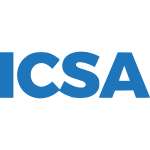 ICSA-2018-BhatSKHBM #design #recommendation
ICSA-2018-BhatSKHBM #design #recommendation- An Expert Recommendation System for Design Decision Making: Who Should be Involved in Making a Design Decision? (MB, KS, KK, UH, AB, FM), pp. 85–94.
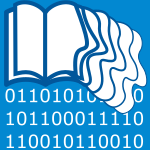 JCDL-2018-RischK #approach
JCDL-2018-RischK #approach- My Approach = Your Apparatus? (JR, RK), pp. 283–292.
 EDM-2018-KoedingerSS #multi #robust #set
EDM-2018-KoedingerSS #multi #robust #set- Is the Doer Effect Robust Across Multiple Data Sets? (KRK, RS, PS).
 EDM-2018-MonteroAKMM #interactive
EDM-2018-MonteroAKMM #interactive- Does Deep Knowledge Tracing Model Interactions Among Skills? (SM, AA, SK, BM, MM).
 ICPC-2018-DoiHASK #automation #identification #on the
ICPC-2018-DoiHASK #automation #identification #on the- On the naturalness of auto-generated code: can we identify auto-generated code automatically? (MD, YH, RA, KS, SK), pp. 340–343.
 ICPC-2018-DoseaSS #design #how #metric
ICPC-2018-DoseaSS #design #how #metric- How do design decisions affect the distribution of software metrics? (MD, CS, BCdS), pp. 74–85.
 ICPC-2018-SalzaPNDLF #developer #library #mobile
ICPC-2018-SalzaPNDLF #developer #library #mobile- Do developers update third-party libraries in mobile apps? (PS, FP, DDN, CD, ADL, FF), pp. 255–265.
 ICPC-2018-VivianiJFXM #design #developer #topic #what
ICPC-2018-VivianiJFXM #design #developer #topic #what- What design topics do developers discuss? (GV, CJJ, MF, XX0, GCM), pp. 328–331.
 ICSME-2018-MillsPPBH #debugging #locality
ICSME-2018-MillsPPBH #debugging #locality- Are Bug Reports Enough for Text Retrieval-Based Bug Localization? (CM, JP, EP, GB, SH), pp. 381–392.
 MSR-2018-AmlekarGGM #developer
MSR-2018-AmlekarGGM #developer- Do software engineers use autocompletion features differently than other developers? (RA, AFRG, KG, SM), pp. 86–89.
 MSR-2018-ArimaHK08 #case study #commit #how #java #what
MSR-2018-ArimaHK08 #case study #commit #how #java #what- A study on inappropriately partitioned commits: how much and what kinds of IP commits in Java projects? (RA, YH, SK), pp. 336–340.
 MSR-2018-CalciatiKBG #what
MSR-2018-CalciatiKBG #what- What did really change with the new release of the app? (PC, KK, XB, AG), pp. 142–152.
 MSR-2018-GeorgiouKLS #energy #programming language #what
MSR-2018-GeorgiouKLS #energy #programming language #what- What are your programming language's energy-delay implications? (SG, MK, PL, DS), pp. 303–313.
 MSR-2018-PascarellaPPB08 #development #game studies #how #open source #video
MSR-2018-PascarellaPPB08 #development #game studies #how #open source #video- How is video game development different from software development in open source? (LP, FP, MDP, AB), pp. 392–402.
 MSR-2018-Rahman #comprehension #process #programming
MSR-2018-Rahman #comprehension #process #programming- Comprehension effort and programming activities: related? or not related? (AR), pp. 66–69.
 SANER-2018-AlkadhiNGB #developer #how
SANER-2018-AlkadhiNGB #developer #how- How do developers discuss rationale? (RA, MN, EG, BB), pp. 357–369.
 SANER-2018-BaoLL #mining
SANER-2018-BaoLL #mining- Mining sandboxes: Are we there yet? (LB, TDBL, DL0), pp. 445–455.
 SANER-2018-DigkasLACA #developer #ecosystem #how #technical debt
SANER-2018-DigkasLACA #developer #ecosystem #how #technical debt- How do developers fix issues and pay back technical debt in the Apache ecosystem? (GD, ML, PA, AC, AA), pp. 153–163.
 SANER-2018-FakhouryANKA #detection #learning #smell
SANER-2018-FakhouryANKA #detection #learning #smell- Keep it simple: Is deep learning good for linguistic smell detection? (SF, VA, CN, FK, GA), pp. 602–611.
 SANER-2018-KhomhG #design pattern #quality
SANER-2018-KhomhG #design pattern #quality- Design patterns impact on software quality: Where are the theories? (FK, YGG), pp. 15–25.
 SANER-2018-NucciPTSL #detection #machine learning #smell #using
SANER-2018-NucciPTSL #detection #machine learning #smell #using- Detecting code smells using machine learning techniques: Are we there yet? (DDN, FP, DAT, AS, ADL), pp. 612–621.
 SCAM-2018-DeckerNDCMK #research #smell
SCAM-2018-DeckerNDCMK #research #smell- [Research Paper] Which Method-Stereotype Changes are Indicators of Code Smells? (MJD, CDN, ND, MLC, JIM, NAK), pp. 82–91.
 DiGRA-2018-ToftedahlBE #game studies #how #locality #why
DiGRA-2018-ToftedahlBE #game studies #how #locality #why- Localization from an Indie Game Production Perspective - Why, When and How? (MT, PB, HE).
 FDG-2018-FiebelkornCS
FDG-2018-FiebelkornCS - Would gamers collaborate given the opportunity? (NF, BC, KS), p. 4.
 VS-Games-2018-Pietrass #how
VS-Games-2018-Pietrass #how- How Real Can Virtual Become? (MP), pp. 1–4.
 CIKM-2018-AllerhandYYA #detection #interactive
CIKM-2018-AllerhandYYA #detection #interactive- Detecting Parkinson's Disease from Interactions with a Search Engine: Is Expert Knowledge Sufficient? (LIA, BY, EYT, DA), pp. 1539–1542.
 CIKM-2018-MedlarG #consistency #feedback #how
CIKM-2018-MedlarG #consistency #feedback #how- How Consistent is Relevance Feedback in Exploratory Search? (AM, DG), pp. 1615–1618.
 CIKM-2018-ZhuangTD #behaviour #sequence
CIKM-2018-ZhuangTD #behaviour #sequence- Can User Behaviour Sequences Reflect Perceived Novelty? (MZ, EGT, GD), pp. 1507–1510.
 ICML-2018-0003FK #constraints
ICML-2018-0003FK #constraints- Weakly Submodular Maximization Beyond Cardinality Constraints: Does Randomization Help Greedy? (LC0, MF, AK), pp. 803–812.
 ICML-2018-HuNSS #classification #learning #robust
ICML-2018-HuNSS #classification #learning #robust- Does Distributionally Robust Supervised Learning Give Robust Classifiers? (WH, GN, IS, MS), pp. 2034–2042.
 ICML-2018-KleinbergLY
ICML-2018-KleinbergLY - An Alternative View: When Does SGD Escape Local Minima? (RK, YL, YY), pp. 2703–2712.
 ICML-2018-MeschederGN
ICML-2018-MeschederGN - Which Training Methods for GANs do actually Converge? (LMM, AG, SN), pp. 3478–3487.
 ICML-2018-OdenaBOBORG #generative #performance
ICML-2018-OdenaBOBORG #generative #performance- Is Generator Conditioning Causally Related to GAN Performance? (AO, JB, CO, TBB, CO, CR, IJG), pp. 3846–3855.
 ICML-2018-Qiao #collaboration
ICML-2018-Qiao #collaboration- Do Outliers Ruin Collaboration? (MQ), pp. 4177–4184.
 ICML-2018-RaghuIAKLK #game studies #learning
ICML-2018-RaghuIAKLK #game studies #learning- Can Deep Reinforcement Learning Solve Erdos-Selfridge-Spencer Games? (MR, AI, JA, RK, QVL, JMK), pp. 4235–4243.
 ICML-2018-ZhouMBGYLF #bound #distributed #how #optimisation
ICML-2018-ZhouMBGYLF #bound #distributed #how #optimisation- Distributed Asynchronous Optimization with Unbounded Delays: How Slow Can You Go? (ZZ, PM, NB, PWG, YY, LJL, LFF0), pp. 5965–5974.
 ICPR-2018-AbateNBM #smarttech #what
ICPR-2018-AbateNBM #smarttech #what- What are you doing while answering your smartphone? (AFA, MN, SB, MDM), pp. 3120–3125.
 ICPR-2018-JollyIKU #design #how #network
ICPR-2018-JollyIKU #design #how #network- How do Convolutional Neural Networks Learn Design? (SJ, BKI, RK, SU), pp. 1085–1090.
 ICPR-2018-YuanWZ #image
ICPR-2018-YuanWZ #image- Does A Body Image Tell Age? (BY, AW, WSZ), pp. 2142–2147.
 KDD-2018-SifferFTL
KDD-2018-SifferFTL - Are your data gathered? (AS, PAF, AT, CL), pp. 2210–2218.
 KDD-2018-YardimKMG #predict
KDD-2018-YardimKMG #predict- Can Who-Edits-What Predict Edit Survival? (ABY, VK, LM, MG), pp. 2604–2613.
 ECMFA-2018-Stevens #bidirectional
ECMFA-2018-Stevens #bidirectional- Is Bidirectionality Important? (PS), pp. 1–11.
 POPL-2018-MajumdarN #debugging #effectiveness #random testing #testing #why
POPL-2018-MajumdarN #debugging #effectiveness #random testing #testing #why- Why is random testing effective for partition tolerance bugs? (RM, FN), p. 24.
 ASE-2018-KovalenkoPB #branch #mining
ASE-2018-KovalenkoPB #branch #mining- Mining file histories: should we consider branches? (VK, FP, AB), pp. 202–213.
 ASE-2018-LiuXHLXW #commit #generative #how
ASE-2018-LiuXHLXW #commit #generative #how- Neural-machine-translation-based commit message generation: how far are we? (ZL, XX0, AEH, DL0, ZX, XW0), pp. 373–384.
 ASE-2018-VassalloPBG #quality
ASE-2018-VassalloPBG #quality- Continuous code quality: are we (really) doing that? (CV, FP, AB, HCG), pp. 790–795.
 ESEC-FSE-2018-BarikFMP #compilation #developer #how #problem
ESEC-FSE-2018-BarikFMP #compilation #developer #how #problem- How should compilers explain problems to developers? (TB, DF, ERMH, CP), pp. 633–643.
 ESEC-FSE-2018-ChenSFMXLX #mobile #what
ESEC-FSE-2018-ChenSFMXLX #mobile #what- Are mobile banking apps secure? what can be improved? (SC, TS, LF, GM, MX, YL0, LX), pp. 797–802.
 ESEC-FSE-2018-McNamaraSM #development
ESEC-FSE-2018-McNamaraSM #development- Does ACM's code of ethics change ethical decision making in software development? (AM, JS0, ERMH), pp. 729–733.
 ESEC-FSE-2018-PauckBW #analysis #android #tool support
ESEC-FSE-2018-PauckBW #analysis #android #tool support- Do Android taint analysis tools keep their promises? (FP, EB, HW), pp. 331–341.
 ESEC-FSE-2018-WangS #how #regular expression
ESEC-FSE-2018-WangS #how #regular expression- How well are regular expressions tested in the wild? (PW, KTS), pp. 668–678.
 ESEC-FSE-2018-WangWLWWYYZC #dependence #matter
ESEC-FSE-2018-WangWLWWYYZC #dependence #matter- Do the dependency conflicts in my project matter? (YW, MW, ZL, RW, RW, BY, HY, ZZ0, SCC), pp. 319–330.
- ICSE-2018-0008ZBPLO #analysis #how #re-engineering #sentiment
- Sentiment analysis for software engineering: how far can we go? (BL0, FZ, GB, MDP, ML, RO), pp. 94–104.
- ICSE-2018-ClaesMKA
- Do programmers work at night or during the weekend? (MC, MVM, MK, BA), pp. 705–715.
- ICSE-2018-HannebauerHG #programming #syntax
- Does syntax highlighting help programming novices? (CH, MH, VG), p. 704.
- ICSE-2018-KalliamvakouB0B #what
- What makes a great manager of software engineers? (EK, CB, TZ0, AB, RD, DMG), p. 701.
- ICSE-2018-KrugerWFSL #source code
- Do you remember this source code? (JK, JW, WF, GS, TL), pp. 764–775.
- ICSE-2018-Mayr-DornE #dependence
- Does the propagation of artifact changes across tasks reflect work dependencies? (CMD, AE), pp. 397–407.
- ICSE-2018-MorrisonPXCW #fault
- Are vulnerabilities discovered and resolved like other defects? (PJM, RP, XX, RC, LW), p. 498.
- ICSE-2018-MotwaniSJB #automation #debugging #program repair
- Do automated program repair techniques repair hard and important bugs? (MM, SS, RJ, YB), p. 25.
 CAV-2018-AkshayCGKS #functional #synthesis #what
CAV-2018-AkshayCGKS #functional #synthesis #what- What's Hard About Boolean Functional Synthesis? (SA, SC, SG, SK, SS), pp. 251–269.
 ICST-2018-ShamshiriRGWF #automation #how #maintenance #testing
ICST-2018-ShamshiriRGWF #automation #how #maintenance #testing- How Do Automatically Generated Unit Tests Influence Software Maintenance? (SS, JMR, JPG, NW, GF), pp. 250–261.
 ICST-2018-TimperleyAKHG #debugging #detection #simulation
ICST-2018-TimperleyAKHG #debugging #detection #simulation- Crashing Simulated Planes is Cheap: Can Simulation Detect Robotics Bugs Early? (CST, AA, DSK, JMH, CLG), pp. 331–342.
 ICSA-2017-NassarS #fault #metric #predict #traceability
ICSA-2017-NassarS #fault #metric #predict #traceability- Traceability Metrics as Early Predictors of Software Defects? (BN, RS), pp. 235–238.
 CSEET-2017-SaiedianLW #how #re-engineering #source code
CSEET-2017-SaiedianLW #how #re-engineering #source code- CSEE&T 2017 Panel Proposal How to Enhance Diversity in Software Engineering Programs? (HS, GAL, ABW), pp. 122–123.
 CSEET-2017-SilvaSC #problem
CSEET-2017-SilvaSC #problem- Is It Better to Learn from Problems or Erroneous Examples? (WAFS, IFS, TUC), pp. 222–231.
 EDM-2017-AnKM #behaviour
EDM-2017-AnKM #behaviour- Can Typical Behaviors Identified in MOOCs be Discovered in Other Courses? (TSA, CK, AM).
 EDM-2017-LalwaniA #parametricity
EDM-2017-LalwaniA #parametricity- Few hundred parameters outperform few hundred thousand? (AL, SA).
 EDM-2017-LiuCBLR #education #game studies
EDM-2017-LiuCBLR #education #game studies- The Antecedents of and Associations with Elective Replay in An Educational Game: Is Replay Worth It? (ZL, CC, TB, CL, TR).
 EDM-2017-Tang
EDM-2017-Tang - Can AI help MOOCs? (JT).
 ICPC-2017-AjamiWF #complexity #syntax #what
ICPC-2017-AjamiWF #complexity #syntax #what- Syntax, predicates, idioms: what really affects code complexity? (SA, YW, DGF), pp. 66–76.
 ICPC-2017-AlmeidaMWH #developer #open source
ICPC-2017-AlmeidaMWH #developer #open source- Do software developers understand open source licenses? (DAA, GCM, GW, MH), pp. 1–11.
 ICPC-2017-DaoZM #debugging #execution #how #locality
ICPC-2017-DaoZM #debugging #execution #how #locality- How does execution information help with information-retrieval based bug localization? (TD, LZ, NM), pp. 241–250.
 ICPC-2017-SaboridoKAG #android #comprehension
ICPC-2017-SaboridoKAG #android #comprehension- Comprehension of ads-supported and paid Android applications: are they different? (RS, FK, GA, YGG), pp. 143–153.
 ICSME-2017-BeskerMB #technical debt
ICSME-2017-BeskerMB #technical debt- The Pricey Bill of Technical Debt: When and by Whom will it be Paid? (TB, AM, JB), pp. 13–23.
 ICSME-2017-PalombaZ #refactoring #smell #testing
ICSME-2017-PalombaZ #refactoring #smell #testing- Does Refactoring of Test Smells Induce Fixing Flaky Tests? (FP, AZ), pp. 1–12.
 ICSME-2017-SilvaWGSG #how #what
ICSME-2017-SilvaWGSG #how #what- How Long and How Much: What to Expect from Summer of Code Participants? (JDOS, ISW, DMG, IFS, MAG), pp. 69–79.
 ICSME-2017-VasquezBMP #android #developer #how
ICSME-2017-VasquezBMP #android #developer #how- How do Developers Test Android Applications? (MLV, CBC, KM, DP), pp. 613–622.
 MSR-2017-ReboucasSPC #how #open source
MSR-2017-ReboucasSPC #how #open source- How does contributors' involvement influence the build status of an open-source software project? (MR, ROS, GP0, FC), pp. 475–478.
 MSR-2017-YangMSL #git #stack overflow
MSR-2017-YangMSL #git #stack overflow- Stack overflow in github: any snippets there? (DY, PM0, VS, CVL), pp. 280–290.
 SANER-2017-AnMKA #framework #platform #stack overflow
SANER-2017-AnMKA #framework #platform #stack overflow- Stack Overflow: A code laundering platform? (LA, OM, FK, GA), pp. 283–293.
 SANER-2017-FujibayashiISKM #library
SANER-2017-FujibayashiISKM #library- Does the release cycle of a library project influence when it is adopted by a client project? (DF, AI, HS, RGK, KiM), pp. 569–570.
 SANER-2017-NorikaneIM #feedback #overview
SANER-2017-NorikaneIM #feedback #overview- Which review feedback did long-term contributors get on OSS projects? (TN, AI, KM), pp. 571–572.
 SANER-2017-NucciPPPZL #android #energy #performance #profiling #reliability
SANER-2017-NucciPPPZL #android #energy #performance #profiling #reliability- Software-based energy profiling of Android apps: Simple, efficient and reliable? (DDN, FP, AP, AP, AZ, ADL), pp. 103–114.
 SCAM-2017-SwidanSH #how
SCAM-2017-SwidanSH #how- How do Scratch Programmers Name Variables and Procedures? (AS, AS, FH), pp. 51–60.
- IFM-2017-KordyW #how
- How Well Can I Secure My System? (BK, WW), pp. 332–347.
 CHI-PLAY-2017-Peddycord-LiuCK #game studies #student #using #what
CHI-PLAY-2017-Peddycord-LiuCK #game studies #student #using #what- Using Serious Game Analytics to Inform Digital Curricular Sequencing: What Math Objective Should Students Play Next? (ZPL, CC, SK, TB, CFL, TR), pp. 195–204.
 CHI-PLAY-2017-SeeleMBHS #artificial reality #behaviour #exclamation #game studies #how #social
CHI-PLAY-2017-SeeleMBHS #artificial reality #behaviour #exclamation #game studies #how #social- Here's Looking At You Anyway!: How Important is Realistic Gaze Behavior in Co-located Social Virtual Reality Games? (SS, SM, HB, RH, JS), pp. 531–540.
 CHI-PLAY-2017-WongRB #game studies
CHI-PLAY-2017-WongRB #game studies- Game & Watch: Are “Let's Play” Gaming Videos as Immersive as Playing Games? (PNYW, JMR, DPB), pp. 401–409.
 FDG-2017-Smith #generative #what
FDG-2017-Smith #generative #what- What do we value in procedural content generation? (GS), p. 2.
 FDG-2017-Whitehead #design #what
FDG-2017-Whitehead #design #what- Art and science of engineered design: what kind of discipline is PCG? (JW), p. 3.
 CIKM-2017-Stanojevic #how
CIKM-2017-Stanojevic #how- How Safe is Your (Taxi) Driver? (RS), pp. 2319–2322.
 CIKM-2017-WilkieA #algorithm #bias #documentation
CIKM-2017-WilkieA #algorithm #bias #documentation- Algorithmic Bias: Do Good Systems Make Relevant Documents More Retrievable? (CW, LA), pp. 2375–2378.
 ECIR-2017-BampoulidisPLBH #evaluation #online #query
ECIR-2017-BampoulidisPLBH #evaluation #online #query- Does Online Evaluation Correspond to Offline Evaluation in Query Auto Completion? (AB, JRMP, ML, JB, AH), pp. 713–719.
 ECIR-2017-LiR #correlation #query #topic
ECIR-2017-LiR #correlation #query #topic- Do Topic Shift and Query Reformulation Patterns Correlate in Academic Search? (XL0, MdR), pp. 146–159.
 ECIR-2017-MishraB #how #order #proximity #readability #summary
ECIR-2017-MishraB #how #order #proximity #readability #summary- How Do Order and Proximity Impact the Readability of Event Summaries? (AM, KB), pp. 212–225.
 ECIR-2017-RoiteroMM #effectiveness #predict #topic
ECIR-2017-RoiteroMM #effectiveness #predict #topic- Do Easy Topics Predict Effectiveness Better Than Difficult Topics? (KR, EM, SM), pp. 605–611.
 ICML-2017-BalduzziFLLMM #problem #what
ICML-2017-BalduzziFLLMM #problem #what- The Shattered Gradients Problem: If resnets are the answer, then what is the question? (DB, MF, LL, JPL, KWDM, BM), pp. 342–350.
 ICML-2017-Loukas #how #matrix
ICML-2017-Loukas #how #matrix- How Close Are the Eigenvectors of the Sample and Actual Covariance Matrices? (AL), pp. 2228–2237.
 ICML-2017-OsbandR #learning #why
ICML-2017-OsbandR #learning #why- Why is Posterior Sampling Better than Optimism for Reinforcement Learning? (IO, BVR), pp. 2701–2710.
 KDD-2017-Dwork #what
KDD-2017-Dwork #what- What's Fair? (CD), p. 1.
 KDD-2017-FayyadCRPCL #benchmark #metric #process
KDD-2017-FayyadCRPCL #benchmark #metric #process- Benchmarks and Process Management in Data Science: Will We Ever Get Over the Mess? (UMF, AC, EAdlR, SP, AC, JYL), pp. 31–32.
 KDD-2017-LiTWSCB
KDD-2017-LiTWSCB - Is the Whole Greater Than the Sum of Its Parts? (LL, HT, YW0, CS, NC, NB), pp. 295–304.
 KDD-2017-Pafka #machine learning
KDD-2017-Pafka #machine learning- Machine Learning Software in Practice: Quo Vadis? (SP), p. 25.
 MoDELS-2017-MaozPRS #component #satisfiability #specification #why
MoDELS-2017-MaozPRS #component #satisfiability #specification #why- Why is My Component and Connector Views Specification Unsatisfiable? (SM, NP, JOR, RS), pp. 134–144.
 Onward-2017-WilsonPK #crowdsourcing #design
Onward-2017-WilsonPK #crowdsourcing #design- Can we crowdsource language design? (PTW, JP, SK), pp. 1–17.
 OOPSLA-2017-WuC #fault #how #student #what
OOPSLA-2017-WuC #fault #how #student #what- How type errors were fixed and what students did? (BW, SC0), p. 27.
 ASE-2017-Han #mining #re-engineering
ASE-2017-Han #mining #re-engineering- Mining structures from massive text data: will it help software engineering? (JH0), p. 2.
 ASE-2017-MirhosseiniP #automation #dependence #developer
ASE-2017-MirhosseiniP #automation #dependence #developer- Can automated pull requests encourage software developers to upgrade out-of-date dependencies? (SM, CP), pp. 84–94.
 ASE-2017-PaixaoKHRH #architecture #developer
ASE-2017-PaixaoKHRH #architecture #developer- Are developers aware of the architectural impact of their changes? (MP, JK, DH, CR, MH), pp. 95–105.
 ASE-2017-ScalabrinoBVVPO #automation #how
ASE-2017-ScalabrinoBVVPO #automation #how- Automatically assessing code understandability: how far are we? (SS, GB, CV, MLV, DP, RO), pp. 417–427.
 ESEC-FSE-2017-GalsterAMT #agile #architecture
ESEC-FSE-2017-GalsterAMT #agile #architecture- Reference architectures and Scrum: friends or foes? (MG, SA, SMF, DT), pp. 896–901.
 ESEC-FSE-2017-HellendoornD #modelling #network #source code
ESEC-FSE-2017-HellendoornD #modelling #network #source code- Are deep neural networks the best choice for modeling source code? (VJH, PTD), pp. 763–773.
 ESEC-FSE-2017-KnuppelTMMS #feature model #modelling #product line #research
ESEC-FSE-2017-KnuppelTMMS #feature model #modelling #product line #research- Is there a mismatch between real-world feature models and product-line research? (AK, TT, SM, JM, IS), pp. 291–302.
 ESEC-FSE-2017-LamWLWZLYDX #android #case study #industrial
ESEC-FSE-2017-LamWLWZLYDX #android #case study #industrial- Record and replay for Android: are we there yet in industrial cases? (WL, ZW, DL0, WW, HZ, HL, PY, YD, TX0), pp. 854–859.
- ICSE-2017-BarikSLHFMP #compilation #developer #error message #fault
- Do developers read compiler error messages? (TB, JS0, KL, EH, JF, ERMH, CP), pp. 575–585.
- ICSE-2017-GopalakrishnanS #architecture #predict #source code #topic
- Can latent topics in source code predict missing architectural tactics? (RG, PS, MM, MG), pp. 15–26.
 SLE-2017-Pereira0RRCFS #energy #how #memory management #performance #programming language
SLE-2017-Pereira0RRCFS #energy #how #memory management #performance #programming language- Energy efficiency across programming languages: how do energy, time, and memory relate? (RP, MC, FR, RR, JC, JPF, JS), pp. 256–267.
 ICST-2017-ArmstrongKA #matter #overview
ICST-2017-ArmstrongKA #matter #overview- Broadcast vs. Unicast Review Technology: Does It Matter? (FA, FK, BA), pp. 219–229.
 ICST-2017-ChenBHZZX #how #reduction #testing
ICST-2017-ChenBHZZX #how #reduction #testing- How Do Assertions Impact Coverage-Based Test-Suite Reduction? (JC0, YB, DH, LZ, LZ0, BX), pp. 418–423.
 ICST-2017-WangBO #behaviour #comparison #execution #testing
ICST-2017-WangBO #behaviour #comparison #execution #testing- Behavioral Execution Comparison: Are Tests Representative of Field Behavior? (QW, YB, AO), pp. 321–332.
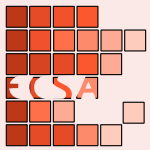 ECSA-2016-AngelovMG #agile #architecture #challenge #what
ECSA-2016-AngelovMG #agile #architecture #challenge #what- Architects in Scrum: What Challenges Do They Face? (SA, MM, MG), pp. 229–237.
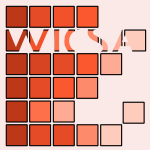 WICSA-2016-GalsterW #architecture #empirical #how #research
WICSA-2016-GalsterW #architecture #empirical #how #research- Empirical Research in Software Architecture: How Far have We Come? (MG, DW), pp. 11–20.
 JCDL-2016-NishiokaS #matter #profiling #recommendation #twitter #what
JCDL-2016-NishiokaS #matter #profiling #recommendation #twitter #what- Profiling vs. Time vs. Content: What does Matter for Top-k Publication Recommendation based on Twitter Profiles? (CN, AS), pp. 171–180.
 CSEET-2016-Bass #education #re-engineering #what
CSEET-2016-Bass #education #re-engineering #what- Software Engineering Education in the New World: What Needs to Change? (MB), pp. 213–221.
 CSEET-2016-SunagaSWKFYO #effectiveness #learning
CSEET-2016-SunagaSWKFYO #effectiveness #learning- Which Combinations of Personal Characteristic Types are more Effective in Different Project-Based Learning Courses? (YS, MS, HW, KK, YF, SY, MO), pp. 137–141.
 EDM-2016-BoroujeniKD #how
EDM-2016-BoroujeniKD #how- How employment constrains participation in MOOCs? (MSB, LK, PD), pp. 638–639.
 EDM-2016-CaiLHG #documentation #word
EDM-2016-CaiLHG #documentation #word- Can Word Probabilities from LDA be Simply Added up to Represent Documents? (ZC, HL, XH, AG), pp. 577–578.
 EDM-2016-KhajahLM #how
EDM-2016-KhajahLM #how- How Deep is Knowledge Tracing? (MK, RVL, MM).
 EDM-2016-KhajahLM_ #how
EDM-2016-KhajahLM_ #how- How Deep is Knowledge Tracing? (MK, RVL, MM).
 EDM-2016-LabartheBBY #recommendation #student
EDM-2016-LabartheBBY #recommendation #student- Does a Peer Recommender Foster Students' Engagement in MOOCs? (HL, FB, RB, KY), pp. 418–423.
 EDM-2016-LuH #scalability
EDM-2016-LuH #scalability- Seeking Programming-related Information from Large Scaled Discussion Forums, Help or Harm? (YL, SIHH), pp. 442–447.
 EDM-2016-MatsudaCS #detection #how
EDM-2016-MatsudaCS #detection #how- How quickly can wheel spinning be detected? (NM, SC, JCS), pp. 607–608.
 EDM-2016-Yudelson16a #parametricity #student
EDM-2016-Yudelson16a #parametricity #student- Individualizing Bayesian Knowledge Tracing. Are Skill Parameters More Important Than Student Parameters? (MY), pp. 556–561.
 ICPC-2016-KawumaBB #eclipse #interface
ICPC-2016-KawumaBB #eclipse #interface- Can we find stable alternatives for unstable Eclipse interfaces? (SK, JB, EB), pp. 1–10.
 ICPC-2016-KothariTM #control flow #human-computer
ICPC-2016-KothariTM #control flow #human-computer- Human-machine resolution of Invisible Control Flow? (SK, AT, JM), pp. 1–4.
 ICSME-2016-AbdouSBN #fault #what
ICSME-2016-AbdouSBN #fault #what- What is the Cause for a Defect to be Re-Assigned? (TA, BS, AB, AN), pp. 502–508.
 ICSME-2016-DiasSPCG #collaboration #git #how
ICSME-2016-DiasSPCG #collaboration #git #how- How Does the Shift to GitHub Impact Project Collaboration? (LFD, IS, GP0, DAdC, MAG), pp. 473–477.
 ICSME-2016-NguyenTN #migration #source code #statistics
ICSME-2016-NguyenTN #migration #source code #statistics- Do Contexts Help in Phrase-Based, Statistical Source Code Migration? (ATN0, ZT, TNN), pp. 155–165.
 MSR-2016-AsaduzzamanARS #developer #exception #how #java
MSR-2016-AsaduzzamanARS #developer #exception #how #java- How developers use exception handling in Java? (MA, MA, CKR, KAS), pp. 516–519.
 MSR-2016-ChowdhuryH16a #energy
MSR-2016-ChowdhuryH16a #energy- Characterizing energy-aware software projects: are they different? (SAC, AH), pp. 508–511.
 MSR-2016-MantylaADGO #detection #mining
MSR-2016-MantylaADGO #detection #mining- Mining valence, arousal, and dominance: possibilities for detecting burnout and productivity? (MM, BA, GD, DG, MO), pp. 247–258.
 MSR-2016-SharmaFS #smell
MSR-2016-SharmaFS #smell- Does your configuration code smell? (TS, MF, DS), pp. 189–200.
 SANER-2016-NayebiAR #developer #mobile #what
SANER-2016-NayebiAR #developer #mobile #what- Release Practices for Mobile Apps - What do Users and Developers Think? (MN, BA, GR), pp. 552–562.
 SANER-2016-SohYKG #maintenance #process #programming #smell
SANER-2016-SohYKG #maintenance #process #programming #smell- Do Code Smells Impact the Effort of Different Maintenance Programming Activities? (ZS, AY, FK, YGG), pp. 393–402.
 SCAM-2016-BaloghGBG #testing
SCAM-2016-BaloghGBG #testing- Are My Unit Tests in the Right Package? (GB, TG, ÁB, TG), pp. 137–146.
- IFM-2016-0002HB #code review #formal method #performance
- Can Formal Methods Improve the Efficiency of Code Reviews? (MH0, RH, RB), pp. 3–19.
 CHI-PLAY-2016-RaptisFA #behaviour #difference #game studies #performance
CHI-PLAY-2016-RaptisFA #behaviour #difference #game studies #performance- Do Field Dependence-Independence Differences of Game Players Affect Performance and Behaviour in Cultural Heritage Games? (GER, CAF, NMA), pp. 38–43.
 CIG-2016-ViljanenAPH16a #difference #equation #game studies #mobile #process
CIG-2016-ViljanenAPH16a #difference #equation #game studies #mobile #process- User activity decay in mobile games determined by simple differential equations? (MV, AA, TP, JH), pp. 1–8.
 DiGRA-FDG-2016-BergstromCJ #game studies #multi #online #what
DiGRA-FDG-2016-BergstromCJ #game studies #multi #online #what- Digital Detritus: What Can We Learn From Abandoned Massively Multiplayer Online Game Avatars? (KB, SdC, JJ).
 CIKM-2016-AnderssonLPHR #natural language #retrieval
CIKM-2016-AnderssonLPHR #natural language #retrieval- When is the Time Ripe for Natural Language Processing for Patent Passage Retrieval? (LA, ML, JRMP, AH, AR), pp. 1453–1462.
 CIKM-2016-OuCC #why
CIKM-2016-OuCC #why- Influence Maximization for Complementary Goods: Why Parties Fail to Cooperate? (HCO, CKC, MSC), pp. 1713–1722.
 ECIR-2016-KimCCM #optimisation
ECIR-2016-KimCCM #optimisation- Does Selective Search Benefit from WAND Optimization? (YK, JC, JSC, AM), pp. 145–158.
 ICML-2016-ArpitZNG #representation #why
ICML-2016-ArpitZNG #representation #why- Why Regularized Auto-Encoders learn Sparse Representation? (DA, YZ, HQN0, VG), pp. 136–144.
 ICPR-2016-Ohn-BarT16b #what
ICPR-2016-Ohn-BarT16b #what- What makes an on-road object important? (EOB, MMT), pp. 3392–3397.
 ICPR-2016-RotaSCP #analysis #education #forensics #image #learning #student
ICPR-2016-RotaSCP #analysis #education #forensics #image #learning #student- Bad teacher or unruly student: Can deep learning say something in Image Forensics analysis? (PR, ES, VC, CP), pp. 2503–2508.
 ICPR-2016-RozsaGRB #robust
ICPR-2016-RozsaGRB #robust- Are facial attributes adversarially robust? (AR, MG, EMR, TEB), pp. 3121–3127.
 ICPR-2016-UchidaS #what
ICPR-2016-UchidaS #what- What does scene text tell us? (SU, YS), pp. 4047–4052.
 KDD-2016-KarimiTFSG
KDD-2016-KarimiTFSG - Smart Broadcasting: Do You Want to be Seen? (MRK, ET, MF, LS, MGR), pp. 1635–1644.
 PLATEAU-2016-Ko #programming language #what
PLATEAU-2016-Ko #programming language #what- What is a programming language, really? (AJK0), pp. 32–33.
 PLATEAU-2016-Salvaneschi #data flow #what
PLATEAU-2016-Salvaneschi #data flow #what- What do we really know about data flow languages? (GS), pp. 30–31.
 POPL-2016-TakikawaFGNVF #type system
POPL-2016-TakikawaFGNVF #type system- Is sound gradual typing dead? (AT, DF, BG, MSN, JV, MF), pp. 456–468.
 FSE-2016-AhmedGBGJ #effectiveness
FSE-2016-AhmedGBGJ #effectiveness- Can testedness be effectively measured? (IA0, RG, CB, AG, CJ), pp. 547–558.
 FSE-2016-Barik #developer #how #static analysis #tool support
FSE-2016-Barik #developer #how #static analysis #tool support- How should static analysis tools explain anomalies to developers? (TB), pp. 1118–1120.
 FSE-2016-HoraVRA #interface
FSE-2016-HoraVRA #interface- When should internal interfaces be promoted to public? (ACH, MTV, RR, NA), pp. 278–289.
 FSE-2016-ZengLZXDLYX #android #automation #case study #generative #industrial
FSE-2016-ZengLZXDLYX #android #automation #case study #generative #industrial- Automated test input generation for Android: are we really there yet in an industrial case? (XZ, DL0, WZ, FX, YD, WL, WY0, TX0), pp. 987–992.
- ICSE-2016-LuLCZHZ0 #evolution #how #testing
- How does regression test prioritization perform in real-world software evolution? (YL, YL, SC0, LZ, DH, YZ, LZ0), pp. 535–546.
- ICSE-2016-MeloBW #debugging #how #variability
- How does the degree of variability affect bug finding? (JM, CB, AW), pp. 679–690.
- ICSE-2016-NadiKMB #api #developer #encryption #java #why
- Jumping through hoops: why do Java developers struggle with cryptography APIs? (SN, SK, MM, EB), pp. 935–946.
 ICST-2016-ArtsH #how #requirements
ICST-2016-ArtsH #how #requirements- How Well are Your Requirements Tested? (TA, JH), pp. 244–254.
 ICST-2016-Gao #interactive #testing #what
ICST-2016-Gao #interactive #testing #what- Making System User Interactive Tests Repeatable: When and What Should we Control? (ZG), pp. 379–380.
 ICST-2016-HammoudiRT #testing #web #why
ICST-2016-HammoudiRT #testing #web #why- Why do Record/Replay Tests of Web Applications Break? (MH, GR, PT), pp. 180–190.
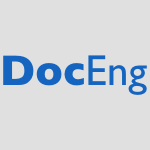 DocEng-2015-AtenciaDG #linked data #open data #what
DocEng-2015-AtenciaDG #linked data #open data #what- What Is This Thing Called Linked Data? (MA, JD, PG), pp. 233–234.
 DocEng-2015-FranzeMW #documentation #navigation
DocEng-2015-FranzeMW #documentation #navigation- Does a Split-View Aid Navigation Within Academic Documents? (JF, KM, MW), pp. 211–214.
 JCDL-2015-AlkwaiNW #how
JCDL-2015-AlkwaiNW #how- How Well Are Arabic Websites Archived? (LMA, MLN, MCW), pp. 223–232.
 JCDL-2015-ChenSTL #social #social media #why
JCDL-2015-ChenSTL #social #social media #why- Why Do Social Media Users Share Misinformation? (XC, SCJS, YLT, CSL), pp. 111–114.
 PODS-2015-PraveenS #graph #how
PODS-2015-PraveenS #graph #how- Defining Relations on Graphs: How Hard is it in the Presence of Node Partitions? (MP, BS), pp. 159–172.
 SIGMOD-2015-ReABCJKR #database #machine learning
SIGMOD-2015-ReABCJKR #database #machine learning- Machine Learning and Databases: The Sound of Things to Come or a Cacophony of Hype? (CR, DA, MB, MIC, MIJ, TK, RR), pp. 283–284.
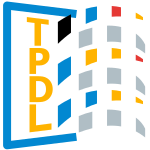 TPDL-2015-KernM #difference #retrieval #set
TPDL-2015-KernM #difference #retrieval #set- Are There Any Differences in Data Set Retrieval Compared to Well-Known Literature Retrieval? (DK, BM), pp. 197–208.
 VLDB-2015-Balazinska15a #big data #data analysis #industrial #problem
VLDB-2015-Balazinska15a #big data #data analysis #industrial #problem- Big Data Research: Will Industry Solve all the Problems? (MB), pp. 2053–2064.
 EDM-2015-BrownLEABBBM #community #performance
EDM-2015-BrownLEABBBM #community #performance- Good Communities and Bad Communities: Does Membership Affect Performance? (RB, CL, ME, JA, TB, RSB, YB, DSM), pp. 612–613.
 EDM-2015-JiangZLL #analysis #network #what
EDM-2015-JiangZLL #analysis #network #what- Influence Analysis by Heterogeneous Network in MOOC Forums: What can We Discover? (ZJ, YZ, CL, XL), pp. 242–249.
 EDM-2015-JohnPM #detection #graph #problem #semantics #similarity #word
EDM-2015-JohnPM #detection #graph #problem #semantics #similarity #word- Semantic Similarity Graphs of Mathematics Word Problems: Can Terminology Detection Help? (RJLJ, RJP, TSM), pp. 452–455.
 EDM-2015-Pelanek15b #learning #modelling #student
EDM-2015-Pelanek15b #learning #modelling #student- Modeling Student Learning: Binary or Continuous Skill? (RP), pp. 560–561.
 EDM-2015-SameiOKNDBG #modelling #predict
EDM-2015-SameiOKNDBG #modelling #predict- Modeling Classroom Discourse: Do Models of Predicting Dialogic Instruction Properties Generalize across Populations? (BS, AO, SK, MN, SKD, NB, ACG), pp. 444–447.
 EDM-2015-VigentiniC15a #design #education
EDM-2015-VigentiniC15a #design #education- Pacing through MOOCs: Course Design or Teaching Effect? (LV, AC), pp. 572–573.
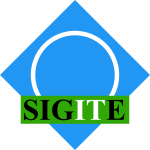 SIGITE-2015-MacKellarHSS #how #source code
SIGITE-2015-MacKellarHSS #how #source code- Information Technology and Computer Science Programs: How Do We Relate? (BM, GWH, MS, AS), pp. 125–126.
 ICPC-2015-SaiedABS #api #library #source code #using
ICPC-2015-SaiedABS #api #library #source code #using- Could we infer unordered API usage patterns only using the library source code? (MAS, HA, OB, HAS), pp. 71–81.
 ICSME-2015-KononenkoBGCG #code review #matter #overview #people #quality
ICSME-2015-KononenkoBGCG #code review #matter #overview #people #quality- Investigating code review quality: Do people and participation matter? (OK, OB, LG, YC, MWG), pp. 111–120.
 ICSME-2015-SharmaTL #re-engineering #twitter #what
ICSME-2015-SharmaTL #re-engineering #twitter #what- What’s hot in software engineering Twitter space? (AS, YT, DL), pp. 541–545.
 MSR-2015-LabuschagneH #source code
MSR-2015-LabuschagneH #source code- Do Onboarding Programs Work? (AL, RH), pp. 381–385.
 MSR-2015-SahaLKP #debugging
MSR-2015-SahaLKP #debugging- Are These Bugs Really “Normal”? (RKS, JL, SK, DEP), pp. 258–268.
 SANER-2015-Cleland-Huang #on the
SANER-2015-Cleland-Huang #on the- On whose shoulders? (JCH), p. 1.
 SANER-2015-EshkevariSCA #php
SANER-2015-EshkevariSCA #php- Are PHP applications ready for Hack? (LME, FDS, JRC, GA), pp. 63–72.
 SANER-2015-Mirakhorli #architecture #how #re-engineering #what #why
SANER-2015-Mirakhorli #architecture #how #re-engineering #what #why- Software architecture reconstruction: Why? What? How? (MM), p. 595.
 SANER-2015-PanichellaAPA #code review #developer #static analysis #tool support
SANER-2015-PanichellaAPA #code review #developer #static analysis #tool support- Would static analysis tools help developers with code reviews? (SP, VA, MDP, GA), pp. 161–170.
 SANER-2015-SilvaRVBA #javascript
SANER-2015-SilvaRVBA #javascript- Does JavaScript software embrace classes? (LS, MR, MTV, AB, NA), pp. 73–82.
 SCAM-2015-LemosPSL #code search #query #scalability #using
SCAM-2015-LemosPSL #code search #query #scalability #using- Can the use of types and query expansion help improve large-scale code search? (OALL, ACdP, HS, CVL), pp. 41–50.
 SCAM-2015-SteidlD #how #java
SCAM-2015-SteidlD #how #java- How do Java methods grow? (DS, FD), pp. 151–160.
 ICALP-v1-2015-BienvenuDS #source code #what
ICALP-v1-2015-BienvenuDS #source code #what- What Percentage of Programs Halt? (LB, DD, AS), pp. 219–230.
 ICALP-v2-2015-Klein0 #game studies #how #infinity #lookahead
ICALP-v2-2015-Klein0 #game studies #how #infinity #lookahead- How Much Lookahead is Needed to Win Infinite Games? (FK, MZ), pp. 452–463.
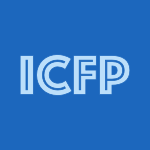 ICFP-2015-SchererR
ICFP-2015-SchererR - Which simple types have a unique inhabitant? (GS, DR), pp. 243–255.
 CHI-PLAY-2015-PontiHS #gamification
CHI-PLAY-2015-PontiHS #gamification- Science and Gamification: The Odd Couple? (MP, TH, IS), pp. 679–684.
 DiGRA-2015-Hoblitz #experience #game studies
DiGRA-2015-Hoblitz #experience #game studies- Gaming Experience as a Prerequisite for the Adoption of Digital Games in the Classroom? (AH).
 FDG-2015-CookESSTTZ #game studies #what
FDG-2015-CookESSTTZ #game studies #what- AI-based Games: Contrabot and What Did You Do? (MC0, ME, AMS, GS, TT, JT, AZ).
 FDG-2015-KnauerM #artificial reality #game studies #what
FDG-2015-KnauerM #artificial reality #game studies #what- Augmented Reality Games: What Do We Know and Where Should We Go? (MK, JM).
 CHI-2015-BoyDF #visualisation
CHI-2015-BoyDF #visualisation- Storytelling in Information Visualizations: Does it Engage Users to Explore Data? (JB, FD, JDF), pp. 1449–1458.
 CHI-2015-CramerJ #communication #what #why
CHI-2015-CramerJ #communication #what #why- Couples’ Communication Channels: What, When & Why? (HC, MLJ), pp. 709–712.
 CHI-2015-DenisovaC #game studies
CHI-2015-DenisovaC #game studies- First Person vs. Third Person Perspective in Digital Games: Do Player Preferences Affect Immersion? (AD, PC), pp. 145–148.
 CHI-2015-GruningBO #what
CHI-2015-GruningBO #what- Medium, Access, and Obsolescence: What Kinds of Objects are Lasting Objects? (JG, JB, MO), pp. 3433–3442.
 CHI-2015-LapidesCCG #what
CHI-2015-LapidesCCG #what- News Feed: What’s in it for Me? (PL, AC, MSTC, SG), pp. 163–172.
 CHI-2015-PanS #human-computer #what
CHI-2015-PanS #human-computer #what- What if HCI Becomes a Fashion Driven Discipline? (YP, ES), pp. 2565–2568.
 CHI-2015-RobbPKC #crowdsourcing #design #feedback
CHI-2015-RobbPKC #crowdsourcing #design #feedback- Crowdsourced Feedback With Imagery Rather Than Text: Would Designers Use It? (DAR, SP, BK, MJC), pp. 1355–1364.
 CHI-2015-SpeicherBG
CHI-2015-SpeicherBG - S.O.S.: Does Your Search Engine Results Page (SERP) Need Help? (MS, AB, MG), pp. 1005–1014.
 CHI-2015-YannierKH #effectiveness #game studies #learning #physics #tablet
CHI-2015-YannierKH #effectiveness #game studies #learning #physics #tablet- Learning from Mixed-Reality Games: Is Shaking a Tablet as Effective as Physical Observation? (NY, KRK, SEH), pp. 1045–1054.
 CHI-2015-ZhangAK #how #what #why
CHI-2015-ZhangAK #how #what #why- Mailing Lists: Why Are They Still Here, What’s Wrong With Them, and How Can We Fix Them? (AXZ, MSA, DRK), pp. 4009–4018.
 CSCW-2015-Anya #design #exclamation #what
CSCW-2015-Anya #design #exclamation #what- Bridge the Gap!: What Can Work Design in Crowdwork Learn from Work Design Theories? (OA), pp. 612–627.
 CSCW-2015-BakhshiKS #comprehension #online
CSCW-2015-BakhshiKS #comprehension #online- Understanding Online Reviews: Funny, Cool or Useful? (SB, PK, DAS), pp. 1270–1276.
 CSCW-2015-TrainerCKH #community #what
CSCW-2015-TrainerCKH #community #what- From Personal Tool to Community Resource: What’s the Extra Work and Who Will Do It? (EHT, CC, AK, JDH), pp. 417–430.
 DUXU-DD-2015-MedeirosTF #design #gesture #how #user interface
DUXU-DD-2015-MedeirosTF #design #gesture #how #user interface- How to Design an User Interface Based on Gestures? (ACSM, TAT, IEdF), pp. 63–74.
 DUXU-IXD-2015-WalterKWAB #adaptation #recommendation #what
DUXU-IXD-2015-WalterKWAB #adaptation #recommendation #what- What Are the Expectations of Users of an Adaptive Recommendation Service Which Aims to Reduce Driver Distraction? (NW, BK, CW, TA, KB), pp. 517–528.
 DUXU-UI-2015-Nawrot #data analysis #difference #gender #towards #women
DUXU-UI-2015-Nawrot #data analysis #difference #gender #towards #women- Gender Differences in Temporal Data Analysis — Toward Women or Men Empowerment? (IN), pp. 232–242.
 HCI-DE-2015-BevanCH #usability #what
HCI-DE-2015-BevanCH #usability #what- ISO 9241-11 Revised: What Have We Learnt About Usability Since 1998? (NB, JC, SH), pp. 143–151.
 HCI-DE-2015-Moallem #user interface
HCI-DE-2015-Moallem #user interface- Concrete or Abstract User Interface? (AM), pp. 390–395.
 HCI-IT-2015-GohR #effectiveness #gamification
HCI-IT-2015-GohR #effectiveness #gamification- Is Gamification Effective in Motivating Exercise? (DHLG, KR), pp. 608–617.
 HCI-UC-2015-ClarkeBK #experience #using #what
HCI-UC-2015-ClarkeBK #experience #using #what- What Learnability Issues Do Primary Care Physicians Experience When Using CPOE? (MAC, JLB, MSK), pp. 373–383.
 HCI-UC-2015-Wittenberg #automation #industrial #requirements #user interface
HCI-UC-2015-Wittenberg #automation #industrial #requirements #user interface- Cause the Trend Industry 4.0 in the Automated Industry to New Requirements on User Interfaces? (CW), pp. 238–245.
 HIMI-IKC-2015-Bretschneider-Hagemes #development #low cost #mobile #multi #simulation
HIMI-IKC-2015-Bretschneider-Hagemes #development #low cost #mobile #multi #simulation- Development of a New Low Cost Driving Simulation for Assessing Multidimensional Task Loads Caused by Mobile ICT at Drivers’ Workplaces. — Objective-Fidelity Beats Equipment-Fidelity? (MBH), pp. 173–179.
 HIMI-IKD-2015-GareauKW #documentation #effectiveness #visualisation #what
HIMI-IKD-2015-GareauKW #documentation #effectiveness #visualisation #what- An Exploration of the Effectiveness of Infographics in Contrast to Text Documents for Visualizing Census Data: What Works? (MG, RK, LW), pp. 161–171.
 HIMI-IKD-2015-JungLB #multi #platform
HIMI-IKD-2015-JungLB #multi #platform- Voice Control System and Multiplatform Use: Specialist Vs. Generalist? (SJ, KML, FB), pp. 607–616.
 HIMI-IKD-2015-WinterSTMCSVS #learning #student
HIMI-IKD-2015-WinterSTMCSVS #learning #student- Learning to Manage NextGen Environments: Do Student Controllers Prefer to Use Datalink or Voice? (AW, JS, YT, AM, SC, KS, KPLV, TZS), pp. 661–667.
 LCT-2015-BajajHKPSDY #word
LCT-2015-BajajHKPSDY #word- Audio Cues: Can Sound Be Worth a Hundred Words? (JB, AH, AK, RMP, KS, OD, KY), pp. 14–23.
 LCT-2015-CulenPSC #game studies #motivation
LCT-2015-CulenPSC #game studies #motivation- Can Games Motivate Urban Youth for Civic Engagement? (ALC, SP, SS, KC), pp. 549–560.
 ICEIS-v1-2015-AlmeidaHC #multi #what
ICEIS-v1-2015-AlmeidaHC #multi #what- What if Multiusers Wish to Reconcile Their Data? (DSdA, CSH, CDdAC), pp. 184–195.
 ICEIS-v2-2015-DutraPC #development #performance #what
ICEIS-v2-2015-DutraPC #development #performance #what- What Are the Main Characteristics of High Performance Teams for Software Development? (ACSD, RP, TC), pp. 145–152.
 ICEIS-v2-2015-FissaaGHN #composition #how #semantics
ICEIS-v2-2015-FissaaGHN #composition #how #semantics- How Can Semantics and Context Awareness Enhance the Composition of Context-aware Services? (TF, HG, HH, MN), pp. 640–647.
 ICEIS-v2-2015-SarinhoLS #dataset #linked data #open data
ICEIS-v2-2015-SarinhoLS #dataset #linked data #open data- Can You Find All the Data You Expect in a Linked Dataset? (WTS, BFL, DS), pp. 648–655.
 CIKM-2015-GongZSH
CIKM-2015-GongZSH - Who Will You “@”? (YG, QZ0, XS, XH), pp. 533–542.
 CIKM-2015-KiselevaKNM #behaviour #how #what
CIKM-2015-KiselevaKNM #behaviour #how #what- Behavioral Dynamics from the SERP's Perspective: What are Failed SERPs and How to Fix Them? (JK, JK, VN, NM), pp. 1561–1570.
 ECIR-2015-UrbanoM #correlation #definite clause grammar #how #user satisfaction
ECIR-2015-UrbanoM #correlation #definite clause grammar #how #user satisfaction- How Do Gain and Discount Functions Affect the Correlation between DCG and User Satisfaction? (JU, MM), pp. 197–202.
 ICML-2015-AnBB #how #linear #network
ICML-2015-AnBB #how #linear #network- How Can Deep Rectifier Networks Achieve Linear Separability and Preserve Distances? (SA, FB, MB), pp. 514–523.
 ICML-2015-GlobersonRSY #how #predict
ICML-2015-GlobersonRSY #how #predict- How Hard is Inference for Structured Prediction? (AG, TR, DS, CY), pp. 2181–2190.
 ICML-2015-TewariC #bound #documentation #fault #learning #matter #rank
ICML-2015-TewariC #bound #documentation #fault #learning #matter #rank- Generalization error bounds for learning to rank: Does the length of document lists matter? (AT, SC), pp. 315–323.
 ICML-2015-XiaoBBFER #feature model
ICML-2015-XiaoBBFER #feature model- Is Feature Selection Secure against Training Data Poisoning? (HX, BB, GB, GF, CE, FR), pp. 1689–1698.
 KDD-2015-AgrawalGP #network #social #web
KDD-2015-AgrawalGP #network #social #web- Whither Social Networks for Web Search? (RA, BG, EEP), pp. 1661–1670.
 KDD-2015-Dhar #trust
KDD-2015-Dhar #trust- Should You Trust Your Money to a Robot? (VD), p. 1625.
 KDD-2015-Koller #named #what
KDD-2015-Koller #named #what- MOOCS: What Have We Learned? (DK), p. 3.
 RecSys-2015-MarinhoTP #algorithm #recommendation
RecSys-2015-MarinhoTP #algorithm #recommendation- Are Real-World Place Recommender Algorithms Useful in Virtual World Environments? (LBM, CT, DP), pp. 245–248.
 SEKE-2015-AndoSUWFIOHKSNY #developer #development #experience #fault #how #process
SEKE-2015-AndoSUWFIOHKSNY #developer #development #experience #fault #how #process- How Does Defect Removal Activity of Developer Vary with Development Experience? (RA, SS, CU, HW, YF, SI, HO, YH, MK, KS, KN, MY), pp. 540–545.
 SIGIR-2015-Hawking #what
SIGIR-2015-Hawking #what- If SIGIR had an Academic Track, What Would Be In It? (DH), p. 1077.
 SKY-2015-ExmanP
SKY-2015-ExmanP - Software, Is It Poetry or Prose? (IE, AP), pp. 9–17.
 ICMT-J-2012-KuselSWKRS15 #model transformation #reuse #transformation language
ICMT-J-2012-KuselSWKRS15 #model transformation #reuse #transformation language- Reuse in model-to-model transformation languages: are we there yet? (AK, JS, MW, GK, WR, WS), pp. 537–572.
 AMT-2015-SalayZC #reuse #what
AMT-2015-SalayZC #reuse #what- Transformation Reuse: What is the Intent? (RS, SZ, MC), pp. 7–15.
 MoDELS-2015-Easterbrook #modelling
MoDELS-2015-Easterbrook #modelling- Modelling the climate system: Is model-based science like model-based engineering? (SME), p. 1.
 PLATEAU-2015-FigueroaR #composition #functional #programming
PLATEAU-2015-FigueroaR #composition #functional #programming- Is functional programming better for modularity? (IF, RR), pp. 49–52.
 POPL-2015-Buneman #database #programming
POPL-2015-Buneman #database #programming- Databases and Programming: Two Subjects Divided by a Common Language? (PB), p. 487.
 ASE-2015-GuK #what
ASE-2015-GuK #what- What Parts of Your Apps are Loved by Users? (XG, SK), pp. 760–770.
 ICSE-v1-2015-GaoLCMW #interactive #testing #what
ICSE-v1-2015-GaoLCMW #interactive #testing #what- Making System User Interactive Tests Repeatable: When and What Should We Control? (ZG, YL, MBC, AMM, ZW), pp. 55–65.
 ICSE-v1-2015-HuaKM #automation #editing #refactoring
ICSE-v1-2015-HuaKM #automation #editing #refactoring- Does Automated Refactoring Obviate Systematic Editing? (LH, MK, KSM), pp. 392–402.
 ICSE-v1-2015-LiKZ #what
ICSE-v1-2015-LiKZ #what- What Makes a Great Software Engineer? (PLL, AJK, JZ), pp. 700–710.
 ICSE-v1-2015-MorenoBPOM #how
ICSE-v1-2015-MorenoBPOM #how- How Can I Use This Method? (LM, GB, MDP, RO, AM), pp. 880–890.
 ICSE-v1-2015-SalmanMJ #re-engineering #student
ICSE-v1-2015-SalmanMJ #re-engineering #student- Are Students Representatives of Professionals in Software Engineering Experiments? (IS, ATM, NJJ), pp. 666–676.
 ICSE-v1-2015-YskoutSJ #design #security
ICSE-v1-2015-YskoutSJ #design #security- Do Security Patterns Really Help Designers? (KY, RS, WJ), pp. 292–302.
 ICSE-v2-2015-BellerGZ #developer #how
ICSE-v2-2015-BellerGZ #developer #how- How (Much) Do Developers Test? (MB, GG, AZ), pp. 559–562.
 ICSE-v2-2015-JankeBW #education #learning #object-oriented #programming
ICSE-v2-2015-JankeBW #education #learning #object-oriented #programming- Does Outside-In Teaching Improve the Learning of Object-Oriented Programming? (EJ, PB, SW), pp. 408–417.
 CASE-2015-MarkovskiH #framework #manycore #synthesis
CASE-2015-MarkovskiH #framework #manycore #synthesis- Is multicore supervisory controller synthesis in the Ramadge-Wonham framework feasible? (JM, HH), pp. 521–525.
 DAC-2015-PanLYXL #multi
DAC-2015-PanLYXL #multi- Pushing multiple patterning in sub-10nm: are we ready? (DZP, LL, BY, XX, YL), p. 6.
 DAC-2015-WolfF #architecture #continuation #what
DAC-2015-WolfF #architecture #continuation #what- What don’t we know about CPS architectures? (MW, EF), p. 4.
 DATE-2015-CastrillonTSSJA #manycore #programming
DATE-2015-CastrillonTSSJA #manycore #programming- Multi/many-core programming: where are we standing? (JC, LT, LS, WS, BHHJ, MAM, AP, RJ, VR, RL), pp. 1708–1717.
 DATE-2015-PozoSKM
DATE-2015-PozoSKM - Side-channel attacks from static power: when should we care? (SMDP, FXS, DK, AM), pp. 145–150.
 DATE-2015-TangXLLCWY #network
DATE-2015-TangXLLCWY #network- Spiking neural network with RRAM: can we use it for real-world application? (TT, LX, BL, RL, YC, YW, HY), pp. 860–865.
 DATE-2015-VargasQM #predict
DATE-2015-VargasQM #predict- OpenMP and timing predictability: a possible union? (RV, EQ, AM), pp. 617–620.
 PPoPP-2015-RadoiHSD #parallel #web
PPoPP-2015-RadoiHSD #parallel #web- Are web applications ready for parallelism? (CR, SH, JS, DD), pp. 289–290.
 STOC-2015-HalldorssonT #graph #how
STOC-2015-HalldorssonT #graph #how- How Well Can Graphs Represent Wireless Interference? (MMH, TT), pp. 635–644.
 ICST-2015-AppeltNB #injection #sql
ICST-2015-AppeltNB #injection #sql- Behind an Application Firewall, Are We Safe from SQL Injection Attacks? (DA, CDN, LCB), pp. 1–10.
 LICS-2015-CarayolS #game studies #how
LICS-2015-CarayolS #game studies #how- How Good Is a Strategy in a Game with Nature? (AC, OS), pp. 609–620.
 ECSA-2014-CaraccioloLN #architecture #how #quality #requirements #validation
ECSA-2014-CaraccioloLN #architecture #how #quality #requirements #validation- How Do Software Architects Specify and Validate Quality Requirements? (AC, MFL, ON), pp. 374–389.
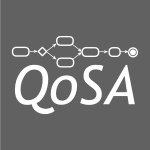 QoSA-2014-Meyer #trust #verification
QoSA-2014-Meyer #trust #verification- Trust or verify? (BM), pp. 1–2.
 WICSA-2014-CostaPDM #architecture #rest #what
WICSA-2014-CostaPDM #architecture #rest #what- Evaluating a Representational State Transfer (REST) Architecture: What is the Impact of REST in My Architecture? (BC, PFP, FCD, PM), pp. 105–114.
 DRR-2014-LundRW #fault #how #multi
DRR-2014-LundRW #fault #how #multi- How well does multiple OCR error correction generalize? (WBL, EKR, DDW), p. ?–13.
 JCDL-2014-AlhooriF
JCDL-2014-AlhooriF - Do altmetrics follow the crowd or does the crowd follow altmetrics? (HA, RF), pp. 375–378.
 JCDL-2014-CartledgeN
JCDL-2014-CartledgeN - When should I make preservation copies of myself? (CLC, MLN), pp. 1–10.
 JCDL-2014-Weideman
JCDL-2014-Weideman - Articles, papers, chapters, theses — who wins the visibility wars? (MW), pp. 479–480.
 PODS-2014-Barcelo0V #evaluation #query
PODS-2014-Barcelo0V #evaluation #query- Does query evaluation tractability help query containment? (PB, MR, MYV), pp. 188–199.
 PODS-2014-PaghSW #set
PODS-2014-PaghSW #set- Is min-wise hashing optimal for summarizing set intersection? (RP, MS, DPW), pp. 109–120.
 SIGMOD-2014-HoweFFFKR #database #education
SIGMOD-2014-HoweFFFKR #database #education- Should we all be teaching “intro to data science” instead of “intro to databases”? (BH, MJF, JF, JF, TK, RR), pp. 917–918.
 SIGMOD-2014-OzcanTAKMRW #big data
SIGMOD-2014-OzcanTAKMRW #big data- Are we experiencing a big data bubble? (FÖ, NT, DJA, MK, CM, KR, JLW), pp. 1407–1408.
 SIGMOD-2014-TermehchyVCW #concept
SIGMOD-2014-TermehchyVCW #concept- Which concepts are worth extracting? (AT, AV, YC, MW), pp. 779–790.
 EDM-2014-ChiSBC #assessment #game studies #predict #student
EDM-2014-ChiSBC #assessment #game studies #predict #student- Choice-based Assessment: Can Choices Made in Digital Games Predict 6th-Grade Students' Math Test Scores? (MC, DLS, KPB, DBC), pp. 36–43.
 EDM-2014-PeroH #detection #how #programming #source code #student
EDM-2014-PeroH #detection #how #programming #source code #student- How patterns in source codes of students can help in detection of their programming skills? (SP, TH), pp. 371–372.
 EDM-2014-WenYR #analysis #sentiment #what
EDM-2014-WenYR #analysis #sentiment #what- Sentiment Analysis in MOOC Discussion Forums: What does it tell us? (MW, DY, CPR), pp. 130–137.
 ITiCSE-2014-BainB #programming #why
ITiCSE-2014-BainB #programming #why- Why is programming so hard to learn? (GB, IB), p. 356.
 ITiCSE-2014-EdwardsS #student #testing
ITiCSE-2014-EdwardsS #student #testing- Do student programmers all tend to write the same software tests? (SHE, ZS), pp. 171–176.
 ITiCSE-2014-KothiyalMI #learning #scalability
ITiCSE-2014-KothiyalMI #learning #scalability- Think-pair-share in a large CS1 class: does learning really happen? (AK, SM, SI), pp. 51–56.
 ITiCSE-2014-Rogers #learning
ITiCSE-2014-Rogers #learning- New technology, new learning? (YR), p. 1.
 SIGITE-2014-Suthaharan #education #experience #named #network
SIGITE-2014-Suthaharan #education #experience #named #network- FLaSKU — a classroom experience with teaching computer networking: is it useful to others in the field? (SS), pp. 15–20.
 SIGITE-2014-TsangGA #java #learning #programming language #student
SIGITE-2014-TsangGA #java #learning #programming language #student- The practical application of LEGO® MINDSTORMS® robotics kits: does it enhance undergraduate computing students’ engagement in learning the Java programming language? (ET, CG, MA), pp. 121–126.
 CSMR-WCRE-2014-Grosjean #biology #maintenance #using
CSMR-WCRE-2014-Grosjean #biology #maintenance #using- Using biology and ecology as inspiration for software maintenance? (PG), p. 1.
 CSMR-WCRE-2014-KimuraHHIK #matter #null
CSMR-WCRE-2014-KimuraHHIK #matter #null- Does return null matter? (SK, KH, YH, HI, SK), pp. 244–253.
 ICPC-2014-KirinukiHHK #commit #exclamation
ICPC-2014-KirinukiHHK #commit #exclamation- Hey! are you committing tangled changes? (HK, YH, KH, SK), pp. 262–265.
 ICSME-2014-EderFHJ
ICSME-2014-EderFHJ - Which Features Do My Users (Not) Use? (SE, HF, BH, MJ), pp. 446–450.
 ICSME-2014-KononenkoZG #compilation #what
ICSME-2014-KononenkoZG #compilation #what- Compiling Clones: What Happens? (OK, CZ, MWG), pp. 481–485.
 ICSME-2014-SahinTMPC #energy #how #obfuscation
ICSME-2014-SahinTMPC #energy #how #obfuscation- How Does Code Obfuscation Impact Energy Usage? (CS, PT, RM, ZP, JC), pp. 131–140.
 MSR-2014-BellerBZJ #code review #open source #problem
MSR-2014-BellerBZJ #code review #open source #problem- Modern code reviews in open-source projects: which problems do they fix? (MB, AB, AZ, EJ), pp. 202–211.
 MSR-2014-BrunetMTFG #design #developer
MSR-2014-BrunetMTFG #design #developer- Do developers discuss design? (JB, GCM, RT, JCAdF, DSG), pp. 340–343.
 MSR-2014-GuoLM #exclamation
MSR-2014-GuoLM #exclamation- Oops! where did that code snippet come from? (LG, JLL, GM), pp. 52–61.
 MSR-2014-KochharLL #classification #debugging #locality
MSR-2014-KochharLL #classification #debugging #locality- It’s not a bug, it’s a feature: does misclassification affect bug localization? (PSK, TDBL, DL), pp. 296–299.
 MSR-2014-Mockus #mining #repository
MSR-2014-Mockus #mining #repository- Is mining software repositories data science? (AM), p. 1.
 MSR-2014-TiarksM #development #how #mobile #tutorial
MSR-2014-TiarksM #development #how #mobile #tutorial- How does a typical tutorial for mobile development look like? (RT, WM), pp. 272–281.
 MSR-2014-TymchukML #collaboration #open source
MSR-2014-TymchukML #collaboration #open source- Collaboration in open-source projects: myth or reality? (YT, AM, ML), pp. 304–307.
 SCAM-2014-Abi-AntounCVG #abstract interpretation #graph #using
SCAM-2014-Abi-AntounCVG #abstract interpretation #graph #using- Are Object Graphs Extracted Using Abstract Interpretation Significantly Different from the Code? (MAA, SC, RV, AG), pp. 245–254.
 SCAM-2014-SzokeANFG #quality #refactoring
SCAM-2014-SzokeANFG #quality #refactoring- Bulk Fixing Coding Issues and Its Effects on Software Quality: Is It Worth Refactoring? (GS, GA, CN, RF, TG), pp. 95–104.
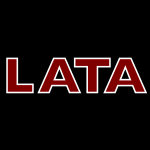 LATA-2014-KleinMBK #automaton #model checking #probability
LATA-2014-KleinMBK #automaton #model checking #probability- Are Good-for-Games Automata Good for Probabilistic Model Checking? (JK, DM, CB, SK), pp. 453–465.
 FM-2014-BjornerH #formal method
FM-2014-BjornerH #formal method- 40 Years of Formal Methods — Some Obstacles and Some Possibilities? (DB, KH), pp. 42–61.
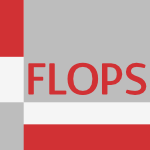 FLOPS-2014-Parys #how
FLOPS-2014-Parys #how- How Many Numbers Can a λ-Term Contain? (PP), pp. 302–318.
 CIG-2014-GreenwoodA #comprehension #process
CIG-2014-GreenwoodA #comprehension #process- Does the moran process hinder our understanding of cooperation in human populations? (GWG, PMA), pp. 1–6.
 VS-Games-2014-ChristouM #difference #game studies #how
VS-Games-2014-ChristouM #difference #game studies #how- Aliens versus Humans: Do Avatars Make a Difference in How We Play the Game? (CC, DM), pp. 1–7.
 CHI-2014-AhmaniemiKH #gesture #what
CHI-2014-AhmaniemiKH #gesture #what- What is a device bend gesture really good for? (TTA, JK, MH), pp. 3503–3512.
 CHI-2014-BrumbyCCF #behaviour #how #visual notation #what
CHI-2014-BrumbyCCF #behaviour #how #visual notation #what- How does knowing what you are looking for change visual search behavior? (DPB, ALC, JC, BF), pp. 3895–3898.
 CHI-2014-ChiravirakulP
CHI-2014-ChiravirakulP - Choice overload in search engine use? (PC, SJP), pp. 1285–1294.
 CHI-2014-MasseyTTW #file system #what
CHI-2014-MasseyTTW #file system #what- PIM and personality: what do our personal file systems say about us? (CM, ST, CT, SW), pp. 3695–3704.
 CHI-2014-MatthewsCWPZBS #community #enterprise #online #what
CHI-2014-MatthewsCWPZBS #community #enterprise #online #what- Goals and perceived success of online enterprise communities: what is important to leaders & members? (TM, JC, SW, AP, HZ, HB, BAS), pp. 291–300.
 CHI-2014-ShayKDHMSUBCC
CHI-2014-ShayKDHMSUBCC - Can long passwords be secure and usable? (RS, SK, ALD, P(H, MLM, SMS, BU, LB, NC, LFC), pp. 2927–2936.
 CHI-2014-Wein #recognition #visual notation
CHI-2014-Wein #recognition #visual notation- Visual recognition in museum guide apps: do visitors want it? (LW), pp. 635–638.
 CSCW-2014-CoetzeeFHH
CSCW-2014-CoetzeeFHH - Should your MOOC forum use a reputation system? (DC, AF, MAH, BH), pp. 1176–1187.
 CSCW-2014-QuerciaOC #what
CSCW-2014-QuerciaOC #what- Aesthetic capital: what makes london look beautiful, quiet, and happy? (DQ, NKO, HC), pp. 945–955.
 CSCW-2014-Rooksby
CSCW-2014-Rooksby - Can plans and situated actions be replicated? (JR), pp. 603–614.
 DUXU-ELAS-2014-DysonJ #interface #what
DUXU-ELAS-2014-DysonJ #interface #what- Examining the Interfaces to E-journal Articles: What Do Users Expect? (MCD, EMJ), pp. 164–172.
 DUXU-ELAS-2014-Waarde
DUXU-ELAS-2014-Waarde - Information about Medicines for Patients in Europe: To Impede or to Empower? (KvdW), pp. 132–140.
 HCI-AIMT-2014-ErikssonLSSK #interface
HCI-AIMT-2014-ErikssonLSSK #interface- Can User-Paced, Menu-free Spoken Language Interfaces Improve Dual Task Handling While Driving? (AE, AL, AS, AS, KK), pp. 394–405.
 HCI-AS-2014-MurrayWHSMGBTSCSH #animation #interactive #people #physics #process
HCI-AS-2014-MurrayWHSMGBTSCSH #animation #interactive #people #physics #process- Can a Theory-Informed Interactive Animation Increase Intentions to Engage in Physical Activity in Young People with Asthma? (JM, BW, GH, SS, JM, DG, GB, ST, FS, LC, AS, SH), pp. 289–300.
 HCI-TMT-2014-SiliMMGP #automation #generative #user interface #what
HCI-TMT-2014-SiliMMGP #automation #generative #user interface #what- A Practical Solution for the Automatic Generation of User Interfaces — What Are the Benefits of a Practical Solution for the Automatic Generation of User Interfaces? (MS, CCM, MM, MG, MP), pp. 445–456.
 HIMI-DE-2014-ShiozuKYS
HIMI-DE-2014-ShiozuKYS - Does ICT Promote the Private Provision of Local Public Goods? (YS, KK, KY, KS), pp. 629–640.
 LCT-NLE-2014-Piki #collaboration #learning #process
LCT-NLE-2014-Piki #collaboration #learning #process- Learner Engagement in Computer-Supported Collaborative Learning Activities: Natural or Nurtured? (AP), pp. 107–118.
 LCT-TRE-2014-Jebali
LCT-TRE-2014-Jebali - Does CMC Reduce Foreign Language Classroom Anxiety? (AJ), pp. 277–287.
 LCT-TRE-2014-LoureiroSBR #collaboration #what
LCT-TRE-2014-LoureiroSBR #collaboration #what- Collaboration, Knowledge Sharing and Digital Environments: What about Argumentation and Questioning Skills? (MJ(L, FNdS, AB, AR), pp. 440–449.
 LCT-TRE-2014-ShimizuO #effectiveness #learning
LCT-TRE-2014-ShimizuO #effectiveness #learning- Which Is More Effective for Learning German and Japanese Language, Paper or Digital? (RS, KO), pp. 309–318.
 CAiSE-2014-BastarricaMRSV #how #process #quality
CAiSE-2014-BastarricaMRSV #how #process #quality- How does Quality of Formalized Software Processes Affect Adoption? (MCB, GM, RR, LS, RV), pp. 226–240.
 CAiSE-2014-SkoulisVZ #database #evolution #open source
CAiSE-2014-SkoulisVZ #database #evolution #open source- Open-Source Databases: Within, Outside, or Beyond Lehman’s Laws of Software Evolution? (IS, PV, AZ), pp. 379–393.
 ICEIS-v2-2014-KublerF #generative #information management #lifecycle #named
ICEIS-v2-2014-KublerF #generative #information management #lifecycle #named- CaPLIM: The Next Generation of Product Lifecycle Information Management? (SK, KF), pp. 539–547.
 KDD-2014-Mullainathan #machine learning #social
KDD-2014-Mullainathan #machine learning #social- Bugbears or legitimate threats?: (social) scientists’ criticisms of machine learning? (SM), p. 4.
 KDD-2014-RamakrishnanW #privacy #social
KDD-2014-RamakrishnanW #privacy #social- Does social good justify risking personal privacy? (RR, GIW), p. 1965.
 KDIR-2014-SzejdaSC #wiki
KDIR-2014-SzejdaSC #wiki- Does a “Renaissance Man” Create Good Wikipedia Articles? (JS, MS, DC), pp. 425–430.
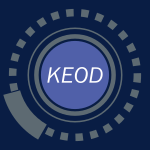 KEOD-2014-AzaiezA #analysis #how #towards
KEOD-2014-AzaiezA #analysis #how #towards- How to Guarantee Analysis Results Coherence after Data Warehouse Schema Changes Propagation towards Data Marts? (NA, JA), pp. 428–435.
 KEOD-2014-GonenFEBWZP #how #maintenance #modelling #ontology
KEOD-2014-GonenFEBWZP #how #maintenance #modelling #ontology- Maintaining SOA Systems of the Future — How Can Ontological Modeling Help? (BG, XF, EES, SB, NW, AZ, IP), pp. 376–381.
 KEOD-2014-Kraines #ontology #order #semantics #similarity
KEOD-2014-Kraines #ontology #order #semantics #similarity- Can SKOS Ontologies Improve the Accuracy of Measuring Semantic Similarity of Purchase Orders? (SBK), pp. 248–255.
 KR-2014-SazonauSB #owl #performance #predict
KR-2014-SazonauSB #owl #performance #predict- Predicting Performance of OWL Reasoners: Locally or Globally? (VS, US, GB).
 RecSys-2014-CremonesiQ #recommendation
RecSys-2014-CremonesiQ #recommendation- Cross-domain recommendations without overlapping data: myth or reality? (PC, MQ), pp. 297–300.
 SEKE-2014-CostaFM #collaboration #development #distributed
SEKE-2014-CostaFM #collaboration #development #distributed- Collaborative Merge in Distributed Software Development: Who Should Participate? (CC, JJCF, LM), pp. 268–273.
 SEKE-2014-HuangCWC #how #interactive #testing
SEKE-2014-HuangCWC #how #interactive #testing- How to Do Tie-breaking in Prioritization of Interaction Test Suites? (RH, JC, RW, DC), pp. 121–125.
 SEKE-2014-MaranAO #database #ontology #ubiquitous
SEKE-2014-MaranAO #database #ontology #ubiquitous- Are The Integrations Between Ontologies and Databases Really Opening the Closed World in Ubiquitous Computing ? (VM, IA, JPMdO), pp. 453–458.
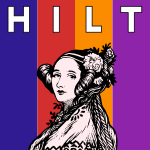 HILT-2014-Crocker #c++
HILT-2014-Crocker #c++- Can C++ be made as safe as SPARK? (DC), pp. 5–12.
 PLDI-2014-Palem #what
PLDI-2014-Palem #what- What exactly is inexact computation good for? (KVP), p. 1.
 REFSQ-2014-KasurinenMS #development #game studies #requirements
REFSQ-2014-KasurinenMS #development #game studies #requirements- Is Requirements Engineering Useless in Game Development? (JK, AM, KS), pp. 1–16.
 ASE-2014-KochharTL #bias #debugging #locality #matter
ASE-2014-KochharTL #bias #debugging #locality #matter- Potential biases in bug localization: do they matter? (PSK, YT, DL), pp. 803–814.
 FSE-2014-Jorgensen #re-engineering #what
FSE-2014-Jorgensen #re-engineering #what- Ten years with evidence-based software engineering. What is it? Has it had any impact? What’s next? (MJ), p. 3.
 FSE-2014-JustJIEHF #fault #testing
FSE-2014-JustJIEHF #fault #testing- Are mutants a valid substitute for real faults in software testing? (RJ, DJ, LI, MDE, RH, GF), pp. 654–665.
 FSE-2014-PetreD #re-engineering
FSE-2014-PetreD #re-engineering- Methodology and culture: drivers of mediocrity in software engineering? (MP, DD), pp. 829–832.
 ICSE-2014-BrindescuCSD #distributed #how #version control
ICSE-2014-BrindescuCSD #distributed #how #version control- How do centralized and distributed version control systems impact software changes? (CB, MC, SS, DD), pp. 322–333.
 ICSE-2014-EndrikatHRS #api #documentation #how #static typing #type system #usability
ICSE-2014-EndrikatHRS #api #documentation #how #static typing #type system #usability- How do API documentation and static typing affect API usability? (SE, SH, RR, AS), pp. 632–642.
 ICSE-2014-KhadkaBSJH #how #legacy
ICSE-2014-KhadkaBSJH #how #legacy- How do professionals perceive legacy systems and software modernization? (RK, BVB, AS, SJ, JH), pp. 36–47.
 ICSE-2014-MinkuY #estimation #how #using
ICSE-2014-MinkuY #estimation #how #using- How to make best use of cross-company data in software effort estimation? (LLM, XY), pp. 446–456.
 ICSE-2014-Murphy-HillZN #development #game studies #how #quality #video
ICSE-2014-Murphy-HillZN #development #game studies #how #quality #video- Cowboys, ankle sprains, and keepers of quality: how is video game development different from software development? (ERMH, TZ, NN), pp. 1–11.
 ICSE-2014-ZhangE #configuration management
ICSE-2014-ZhangE #configuration management- Which configuration option should I change? (SZ, MDE), pp. 152–163.
 SAC-2014-Lutz0D #smarttech
SAC-2014-Lutz0D #smarttech- Are smartphones better than CRC cards? (RL, SS, SD), pp. 987–994.
 SAC-2014-RockiBS #abstraction #future of #performance #programming
SAC-2014-RockiBS #abstraction #future of #performance #programming- The future of accelerator programming: abstraction, performance or can we have both? (KR, MB, RS), pp. 886–895.
 DATE-2014-ClermidyJOOTTVPB
DATE-2014-ClermidyJOOTTVPB - Resistive memories: Which applications? (FC, NJ, SO, HO, OT, OT, EV, JMP, MB), pp. 1–6.
 DATE-2014-XuB #hybrid
DATE-2014-XuB #hybrid- Hybrid side-channel/machine-learning attacks on PUFs: A new threat? (XX, WB), pp. 1–6.
 PPoPP-2014-Rubin #compilation #research #what
PPoPP-2014-Rubin #compilation #research #what- Heterogeneous computing: what does it mean for compiler research? (NR), pp. 315–316.
 STOC-2014-AlistarhCS #algorithm #concurrent
STOC-2014-AlistarhCS #algorithm #concurrent- Are lock-free concurrent algorithms practically wait-free? (DA, KCH, NS), pp. 714–723.
 WRLA-2014-AlrahmanABL #concurrent #maude #memory management #modelling #source code
WRLA-2014-AlrahmanABL #concurrent #maude #memory management #modelling #source code- Can We Efficiently Check Concurrent Programs Under Relaxed Memory Models in Maude? (YAA, MA, AB, ALL), pp. 21–41.
 ICST-2014-Feldt #testing
ICST-2014-Feldt #testing- Do System Test Cases Grow Old? (RF), pp. 343–352.
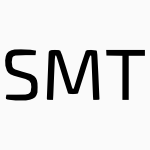 SMT-2014-Barrett #named #smt
SMT-2014-Barrett #named #smt- SMT: Where do we go from here? (CB), p. 1.
 ICDAR-2013-ChherawalaRC #automation #design #recognition
ICDAR-2013-ChherawalaRC #automation #design #recognition- Feature Design for Offline Arabic Handwriting Recognition: Handcrafted vs Automated? (YC, PPR, MC), pp. 290–294.
 ICDAR-2013-DjeddiSSE #representation
ICDAR-2013-DjeddiSSE #representation- Codebook for Writer Characterization: A Vocabulary of Patterns or a Mere Representation Space? (CD, IS, LSM, AE), pp. 423–427.
 ICDAR-2013-KhanKS #identification #problem #verification
ICDAR-2013-KhanKS #identification #problem #verification- Can Signature Biometrics Address Both Identification and Verification Problems? (SHK, ZK, FS), pp. 981–985.
 ICDAR-2013-Newell #identification #what
ICDAR-2013-Newell #identification #what- What Should We Be Comparing for Writer Identification? (AJN), pp. 418–422.
 JCDL-2013-JiangNHJ #how
JCDL-2013-JiangNHJ #how- Mendeley group as a new source of interdisciplinarity study: how do disciplines interact on mendeley? (JJ, CN, DH, WJ), pp. 135–138.
 PODS-2013-GheerbrantLS #evaluation
PODS-2013-GheerbrantLS #evaluation- When is naive evaluation possible? (AG, LL, CS), pp. 75–86.
 TPDL-2013-AlhooriF #predict #ranking #social
TPDL-2013-AlhooriF #predict #ranking #social- Can Social Reference Management Systems Predict a Ranking of Scholarly Venues? (HA, RF), pp. 138–143.
 TPDL-2013-SteinhauerDLA
TPDL-2013-SteinhauerDLA - Do User (Browse and Click) Sessions Relate to Their Questions in a Domain-Specific Collection? (JS, LMLD, ML, MKÅ), pp. 96–107.
 VLDB-2013-ChirkovaY #what
VLDB-2013-ChirkovaY #what- Big and Useful: What’s in the Data for Me? (RC, JY), pp. 1390–1391.
 CSEET-2013-JezekMP #automation #evaluation #experience
CSEET-2013-JezekMP #automation #evaluation #experience- Automated evaluation of regular lab assignments: A bittersweet experience? (PJ, MM, TP), pp. 249–258.
 CSEET-2013-NobleHBB #design #education #programming language #re-engineering
CSEET-2013-NobleHBB #design #education #programming language #re-engineering- Designing Grace: Can an introductory programming language support the teaching of software engineering? (JN, MH, KBB, APB), pp. 219–228.
 CSEET-2013-Vallino #re-engineering #student #what
CSEET-2013-Vallino #re-engineering #student #what- What should students learn in their first (and often only) software engineering course? (JV), pp. 335–337.
 ITiCSE-2013-KnoxF #matter #why
ITiCSE-2013-KnoxF #matter #why- Why does place matter? (DK, SF), pp. 171–176.
 ITiCSE-2013-Kurkovsky #mobile #why
ITiCSE-2013-Kurkovsky #mobile #why- Mobile computing and robotics in one course: why not? (SK), pp. 64–69.
 ITiCSE-2013-LiLMZ #programming
ITiCSE-2013-LiLMZ #programming- Introduction to programming: science or art? (TL, WL, XM, HZ), p. 324.
 ITiCSE-2013-ScottG #learning #programming
ITiCSE-2013-ScottG #learning #programming- Implicit theories of programming aptitude as a barrier to learning to code: are they distinct from intelligence? (MJS, GG), p. 347.
 SIGITE-2013-FaragAD #effectiveness #online #programming
SIGITE-2013-FaragAD #effectiveness #online #programming- Does language choice influence the effectiveness of online introductory programming courses? (WF, SA, DD), pp. 165–170.
 SIGITE-2013-PatersonGISSZ
SIGITE-2013-PatersonGISSZ - Should IT2008 be revised? (BP, MJG, JI, ES, MS, MZ), pp. 53–54.
 SIGITE-2013-RutherfoordR
SIGITE-2013-RutherfoordR - Flipping the classroom: is it for you? (RHR, JKR), pp. 19–22.
 SIGITE-2013-SettleMD #game studies #industrial
SIGITE-2013-SettleMD #game studies #industrial- Diversity in the game industry: is outreach the solution? (AS, MM, AD), pp. 171–176.
 CSMR-2013-MarinescuP #assessment #in the cloud #quality
CSMR-2013-MarinescuP #assessment #in the cloud #quality- Quality Assessment in the Cloud: Is It Worthwhile? (CM, DP), pp. 453–456.
 CSMR-2013-MihanceaM #correlation #fault #morphism #polymorphism
CSMR-2013-MihanceaM #correlation #fault #morphism #polymorphism- Changes, Defects and Polymorphism: Is There Any Correlation? (PFM, CM), pp. 341–344.
 ICSM-2013-HillBBDLO #feature model
ICSM-2013-HillBBDLO #feature model- Which Feature Location Technique is Better? (EH, AB, DB, BD, DL, RO), pp. 408–411.
 ICSM-2013-OyetoyanCC #component #refactoring
ICSM-2013-OyetoyanCC #component #refactoring- Can Refactoring Cyclic Dependent Components Reduce Defect-Proneness? (TDO, DSC, RC), pp. 420–423.
 ICSM-2013-RajlichH
ICSM-2013-RajlichH - Which Practices Are Suitable for an Academic Software Project? (VR, JH), pp. 440–443.
 ICSM-2013-ZhangMZKH #how #maintenance #metric
ICSM-2013-ZhangMZKH #how #maintenance #metric- How Does Context Affect the Distribution of Software Maintainability Metrics? (FZ, AM, YZ, FK, AEH), pp. 350–359.
 MSR-2013-MukherjeeG
MSR-2013-MukherjeeG - Which work-item updates need your response? (DM, MG), pp. 12–21.
 MSR-2013-Murphy #development #what
MSR-2013-Murphy #development #what- What is software development productivity, anyway? (GCM), p. 1.
 MSR-2013-NadiDTHL #how #linux #variability #what
MSR-2013-NadiDTHL #how #linux #variability #what- Linux variability anomalies: what causes them and how do they get fixed? (SN, CD, RT, RCH, DL), pp. 111–120.
 MSR-2013-SouzaM #category theory #metric
MSR-2013-SouzaM #category theory #metric- Do software categories impact coupling metrics? (LBLdS, MdAM), pp. 217–220.
 WCRE-2013-LiuTZ #debugging
WCRE-2013-LiuTZ #debugging- Has this bug been reported? (KL, HBKT, HZ), pp. 82–91.
 WCRE-2013-LiXPZ #developer #how #what
WCRE-2013-LiXPZ #developer #how #what- What help do developers seek, when and how? (HL, ZX, XP, WZ), pp. 142–151.
 ICALP-v1-2013-BravermanOV #how #streaming
ICALP-v1-2013-BravermanOV #how #streaming- How Hard Is Counting Triangles in the Streaming Model? (VB, RO, DV), pp. 244–254.
 Haskell-2013-WortmannD #haskell #what
Haskell-2013-WortmannD #haskell #what- Causality of optimized Haskell: what is burning our cycles? (PMW, DJD), pp. 141–152.
 CIG-2013-HingstonCK #game studies #mobile
CIG-2013-HingstonCK #game studies #mobile- Mobile games with intelligence: A killer application? (PH, CBC, GK), pp. 1–7.
 DiGRA-2013-Wechselberger #game studies #learning
DiGRA-2013-Wechselberger #game studies #learning- Learning and Enjoyment in Serious Gaming - Contradiction or Complement? (UW).
 FDG-2013-Moring #game studies #representation
FDG-2013-Moring #game studies #representation- Play, metaphor and representation - a love triangle or une liaison dangereuse? (SM), pp. 17–25.
 FDG-2013-Nielsen #game studies
FDG-2013-Nielsen #game studies- Refining game addiction questionnaires: Evidence for a natural cut-off point? (RN), pp. 437–438.
 VS-Games-2013-FerrerPRFQ #artificial reality #education #game studies #how #motivation #usability
VS-Games-2013-FerrerPRFQ #artificial reality #education #game studies #how #motivation #usability- How Does Usability Impact Motivation in Augmented Reality Serious Games for Education? (VF, AP, HRA, CF, JQ), pp. 1–8.
 CHI-2013-BardzellB #design #what
CHI-2013-BardzellB #design #what- What is “critical” about critical design? (JB, SB), pp. 3297–3306.
 CHI-2013-FaresFK
CHI-2013-FaresFK - Can we beat the mouse with MAGIC? (RF, SF, OK), pp. 1387–1390.
 CHI-2013-GibsonH #how #women
CHI-2013-GibsonH #how #women- Digital motherhood: how does technology help new mothers? (LG, VLH), pp. 313–322.
 CHI-2013-KnijnenburgKJ #privacy
CHI-2013-KnijnenburgKJ #privacy- Preference-based location sharing: are more privacy options really better? (BPK, AK, HJ), pp. 2667–2676.
 CHI-2013-ONeillRGM #crowdsourcing #outsourcing
CHI-2013-ONeillRGM #crowdsourcing #outsourcing- Form digitization in BPO: from outsourcing to crowdsourcing? (JO, SR, AG, DBM), pp. 197–206.
 CHI-2013-RonenRJT #how
CHI-2013-RonenRJT #how- Taking data exposure into account: how does it affect the choice of sign-in accounts? (SR, OR, MJ, DT), pp. 3423–3426.
 CSCW-2013-HarperLTBGSOW #what
CSCW-2013-HarperLTBGSOW #what- What is a file? (RHRH, SEL, ET, RB, PG, GS, WO, EW), pp. 1125–1136.
 CSCW-2013-HemphillOS #twitter #what
CSCW-2013-HemphillOS #twitter #what- What’s congress doing on twitter? (LH, JO, MS), pp. 877–886.
 CSCW-2013-MorganLS #twitter
CSCW-2013-MorganLS #twitter- Is news sharing on Twitter ideologically biased? (JSM, CL, MZS), pp. 887–896.
 DHM-SET-2013-SaparovaBLKMY #health #how #information management #problem #usability #what
DHM-SET-2013-SaparovaBLKMY #health #how #information management #problem #usability #what- Usability Problems in Patient- and Clinician-Oriented Health Information Systems: What Are They and How Do They Differ? (DS, JB, YL, FK, YM, BY), pp. 276–285.
 DUXU-CXC-2013-Heimgartner #design #human-computer #user interface
DUXU-CXC-2013-Heimgartner #design #human-computer #user interface- Intercultural User Interface Design — Culture-Centered HCI Design — Cross-Cultural User Interface Design: Different Terminology or Different Approaches? (RH), pp. 62–71.
 DUXU-NTE-2013-VilarRNTDF
DUXU-NTE-2013-VilarRNTDF - Are Emergency Egress Signs Strong Enough to Overlap the Influence of the Environmental Variables? (EV, FR, PN, LT, ED, EF), pp. 205–214.
 DUXU-WM-2013-Lopez-OrnelasAZ #interface #web #why
DUXU-WM-2013-Lopez-OrnelasAZ #interface #web #why- Geospatial Web Interfaces, Why Are They So “Complicated”? (ÉLO, RAM, JSZH), pp. 231–237.
 HCI-AS-2013-Sampanthar
HCI-AS-2013-Sampanthar - The Motivational GPS: Would a Rat Press a Lever to Get a Badge? (KS), pp. 292–298.
 HCI-AS-2013-SelvarajahCMCVR #web
HCI-AS-2013-SelvarajahCMCVR #web- Native Apps versus Web Apps: Which Is Best for Healthcare Applications? (KS, MPC, AM, JC, KV, NRF), pp. 189–196.
 HCI-III-2013-KalwarHP13a #internet
HCI-III-2013-KalwarHP13a #internet- Internet Anxiety: Myth or Reality? (SKK, KH, JP), pp. 431–440.
 HCI-UC-2013-KohPC #people
HCI-UC-2013-KohPC #people- Do All People Enjoy the Benefits from Technology Innovation? (YJK, JHP, BDC), pp. 402–410.
 HIMI-D-2013-KastlerS #experience #image #interactive #user interface
HIMI-D-2013-KastlerS #experience #image #interactive #user interface- Can a Clipboard Improve User Interaction and User Experience in Web-Based Image Search? (LK, AS), pp. 203–212.
 HIMI-D-2013-SilvaZGBSV
HIMI-D-2013-SilvaZGBSV - Are the Intrusive Effects of SPAM Probes Present When Operators Differ by Skill Level and Training? (HIS, JZ, TG, VB, TZS, KPLV), pp. 269–275.
 HIMI-LCCB-2013-FlachsbartEH #human-computer #mobile
HIMI-LCCB-2013-FlachsbartEH #human-computer #mobile- Are HCI Issues a Big Factor in Supply Chain Mobile Apps? (BF, CCE, MGH), pp. 450–456.
 ICEIS-J-2013-KahkonenMS #enterprise #integration #what
ICEIS-J-2013-KahkonenMS #enterprise #integration #what- What Do We Know About ERP Integration? (TK, AM, KS), pp. 51–67.
 ICEIS-v1-2013-HendersonL #multi
ICEIS-v1-2013-HendersonL #multi- Are Multi-way Joins Actually Useful? (MH, RL), pp. 13–22.
 ICEIS-v1-2013-SecaM #how
ICEIS-v1-2013-SecaM #how- IT applied to Public Lighting Management — How IT Can Improve Public Lighting Management? (NS, FM), pp. 513–518.
 CIKM-2013-Caruana #approximate #clustering #named
CIKM-2013-Caruana #approximate #clustering #named- Clustering: probably approximately useless? (RC), pp. 1259–1260.
 CIKM-2013-ChengAH #how
CIKM-2013-ChengAH #how- How fresh do you want your search results? (SC, AA, VH), pp. 1271–1280.
 CIKM-2013-LanNGC #ranking
CIKM-2013-LanNGC #ranking- Is top-k sufficient for ranking? (YL, SN, JG, XC), pp. 1261–1270.
 ECIR-2013-LeelanupabZJ #rank
ECIR-2013-LeelanupabZJ #rank- Is Intent-Aware Expected Reciprocal Rank Sufficient to Evaluate Diversity? (TL, GZ, JMJ), pp. 738–742.
 KDIR-KMIS-2013-BerrahouBDR #documentation #how
KDIR-KMIS-2013-BerrahouBDR #documentation #how- How to Extract Unit of Measure in Scientific Documents? (SLB, PB, JDB, MR), pp. 249–256.
 KDIR-KMIS-2013-NcirE #clustering #on the
KDIR-KMIS-2013-NcirE #clustering #on the- On the Extension of k-Means for Overlapping Clustering — Average or Sum of Clusters’ Representatives? (CEBN, NE), pp. 208–213.
 KDIR-KMIS-2013-Stachurska #information management
KDIR-KMIS-2013-Stachurska #information management- Knowledge Management in Culture — A Flight of Fancy, or a Stroke of Genius? (IS), pp. 526–531.
 KDIR-KMIS-2013-VanthienenC #modelling #process
KDIR-KMIS-2013-VanthienenC #modelling #process- Modeling Business Decisions and Processes — Which Comes First? (JV, FC), pp. 451–456.
 SEKE-2013-BassoWPO #how #reuse #tool support
SEKE-2013-BassoWPO #how #reuse #tool support- How do You Execute Reuse Tasks Among Tools? (FPB, CMLW, RMP, TCO), pp. 721–726.
 SEKE-2013-BelleEDM #architecture #optimisation #problem
SEKE-2013-BelleEDM #architecture #optimisation #problem- The Layered Architecture revisited: Is it an Optimization Problem? (ABB, GEB, CD, HM), pp. 344–349.
 SEKE-2013-Perez-CastilloFPC #how #modelling #process #refactoring
SEKE-2013-Perez-CastilloFPC #how #modelling #process #refactoring- How Does Refactoring Affect Understandability of Business Process Models? (RPC, MFR, MP, DC), pp. 644–649.
 SIGIR-2013-AbdulahhadCB #nondeterminism #probability
SIGIR-2013-AbdulahhadCB #nondeterminism #probability- Is uncertain logical-matching equivalent to conditional probability? (KA, JPC, CB), pp. 825–828.
 MoDELS-2013-WhittleHRBH #industrial #modelling #problem #tool support
MoDELS-2013-WhittleHRBH #industrial #modelling #problem #tool support- Industrial Adoption of Model-Driven Engineering: Are the Tools Really the Problem? (JW, JH, MR, HB, RH), pp. 1–17.
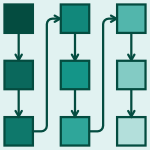 PLEASE-2013-ChimalakondaN #education #product line #what
PLEASE-2013-ChimalakondaN #education #product line #what- What makes it hard to apply software product lines to educational technologies? (SC, KVN), pp. 17–20.
 PLEASE-2013-SchultisEL #architecture #ecosystem #industrial #towards
PLEASE-2013-SchultisEL #architecture #ecosystem #industrial #towards- Moving towards industrial software ecosystems: Are our software architectures fit for the future? (KBS, CE, DL), pp. 9–12.
 PLEASE-2013-UrliMBC #how #multi #product line
PLEASE-2013-UrliMBC #how #multi #product line- How to exploit domain knowledge in Multiple Software Product Lines? (SU, SM, MBF, PC), pp. 13–16.
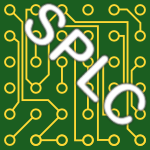 SPLC-2013-SchulzeMB #functional #safety #variability
SPLC-2013-SchulzeMB #functional #safety #variability- Functional safety and variability: can it be brought together? (MS, JM, DB), pp. 236–243.
 ECOOP-2013-HaoLZG0 #debugging
ECOOP-2013-HaoLZG0 #debugging- Is This a Bug or an Obsolete Test? (DH, TL, HZ, CG, LZ), pp. 602–628.
 ECOOP-2013-TasharofiDJ #concurrent #developer #modelling #scala #why
ECOOP-2013-TasharofiDJ #concurrent #developer #modelling #scala #why- Why Do Scala Developers Mix the Actor Model with other Concurrency Models? (ST, PD, REJ), pp. 302–326.
 PPDP-2013-AntoyJ
PPDP-2013-AntoyJ - Are needed redexes really needed? (SA, AJ), pp. 61–71.
 PPDP-2013-KennedyBJD #assembly #coq #metaprogramming #named
PPDP-2013-KennedyBJD #assembly #coq #metaprogramming #named- Coq: the world’s best macro assembler? (AK, NB, JBJ, PÉD), pp. 13–24.
 RE-2013-WangLWYZL #debugging #dependence #integration #network #requirements
RE-2013-WangLWYZL #debugging #dependence #integration #network #requirements- Can requirements dependency network be used as early indicator of software integration bugs? (JW, JL, QW, DY, HZ, ML), pp. 185–194.
 RE-2013-WieringaEM #industrial #requirements
RE-2013-WieringaEM #industrial #requirements- Requirements engineering conferences: Wither industry tracks? (RW, PvE, JM), pp. 349–352.
 REFSQ-2013-DanevaBH #architecture #case study #experience #quality #requirements #what
REFSQ-2013-DanevaBH #architecture #case study #experience #quality #requirements #what- Software Architects’ Experiences of Quality Requirements: What We Know and What We Do Not Know? (MD, LB, AH), pp. 1–17.
 ESEC-FSE-2013-DubinskyFG #logic
ESEC-FSE-2013-DubinskyFG #logic- Where is the business logic? (YD, YAF, MG), pp. 667–670.
 ICSE-2013-JohnsonSMB #debugging #developer #static analysis #tool support #why
ICSE-2013-JohnsonSMB #debugging #developer #static analysis #tool support #why- Why don’t software developers use static analysis tools to find bugs? (BJ, YS, ERMH, RWB), pp. 672–681.
 ICSE-2013-KocaguneliZBNM #development #distributed #harmful
ICSE-2013-KocaguneliZBNM #development #distributed #harmful- Distributed development considered harmful? (EK, TZ, CB, NN, TM), pp. 882–890.
 ICSE-2013-PolikarpovaF0WM #specification #what
ICSE-2013-PolikarpovaF0WM #specification #what- What good are strong specifications? (NP, CAF, YP, YW, BM), pp. 262–271.
 ICSE-2013-RastkarM #why
ICSE-2013-RastkarM #why- Why did this code change? (SR, GCM), pp. 1193–1196.
 ICSE-2013-Samuelson
ICSE-2013-Samuelson - Are software patents bad? (PS), p. 855.
 GPCE-2013-Flatt
GPCE-2013-Flatt - Submodules in racket: you want it when, again? (MF), pp. 13–22.
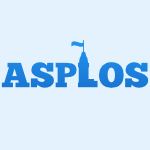 ASPLOS-2013-McFarlinTZ #performance
ASPLOS-2013-McFarlinTZ #performance- Discerning the dominant out-of-order performance advantage: is it speculation or dynamism? (DSM, CT, CBZ), pp. 241–252.
 DAC-2013-KrishnaswamyBP
DAC-2013-KrishnaswamyBP - Can CAD cure cancer? (SK, BB, DP), p. 2.
 DAC-2013-RostamiBKJ #security
DAC-2013-RostamiBKJ #security- Balancing security and utility in medical devices? (MR, WB, FK, AJ), p. 6.
 DATE-2013-AitkenFKRR #analysis #how #reliability
DATE-2013-AitkenFKRR #analysis #how #reliability- Reliability analysis reloaded: how will we survive? (RA, GF, ZTK, FR, MSR), pp. 358–367.
 DATE-2013-LefterVTEHC #3d #integration #memory management
DATE-2013-LefterVTEHC #3d #integration #memory management- Is TSV-based 3D integration suitable for inter-die memory repair? (ML, GRV, MT, ME, SH, SDC), pp. 1251–1254.
 DATE-2013-Mitcheson #adaptation #delivery #energy #performance
DATE-2013-Mitcheson #adaptation #delivery #energy #performance- Adaptable, high performance energy harvesters: can energy harvesting deliver enough power for automotive electronics? (PDM), p. 482.
 DATE-2013-NikolaouSNOI #array #memory management
DATE-2013-NikolaouSNOI #array #memory management- Memory array protection: check on read or check on write? (PN, YS, LN, EÖ, SI), pp. 214–219.
 DATE-2013-RajendranSK
DATE-2013-RajendranSK - Is split manufacturing secure? (JR, OS, RK), pp. 1259–1264.
 DATE-2013-Vigouroux #design #what
DATE-2013-Vigouroux #design #what- What designs for coming supercomputers? (XV), p. 469.
 PLOS-2013-Kell #operating system
PLOS-2013-Kell #operating system- The operating system: should there be one? (SK), p. 7.
 SOSP-2013-ElphinstoneH #kernel #what
SOSP-2013-ElphinstoneH #kernel #what- From L3 to seL4 what have we learnt in 20 years of L4 microkernels? (KE, GH), pp. 133–150.
 STOC-2013-HardtW #adaptation #how #linear #robust #sketching
STOC-2013-HardtW #adaptation #how #linear #robust #sketching- How robust are linear sketches to adaptive inputs? (MH, DPW), pp. 121–130.
 CSL-2013-Hunter #logic #metric
CSL-2013-Hunter #logic #metric- When is Metric Temporal Logic Expressively Complete? (PH), pp. 380–394.
 ICST-2013-PastoreMF #named #problem
ICST-2013-PastoreMF #named #problem- CrowdOracles: Can the Crowd Solve the Oracle Problem? (FP, LM, GF), pp. 342–351.
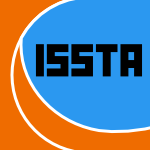 ISSTA-2013-FraserSMAP #automation #generative #testing
ISSTA-2013-FraserSMAP #automation #generative #testing- Does automated white-box test generation really help software testers? (GF, MS, PM, AA, FP), pp. 291–301.
 LICS-2013-Fontaine #consistency #query #why
LICS-2013-Fontaine #consistency #query #why- Why is it Hard to Obtain a Dichotomy for Consistent Query Answering? (GF), pp. 550–559.
 HT-2012-DinhNT #effectiveness #network #social
HT-2012-DinhNT #effectiveness #network #social- Cheap, easy, and massively effective viral marketing in social networks: truth or fiction? (TND, DTN, MTT), pp. 165–174.
 JCDL-2012-DichevD #repository
JCDL-2012-DichevD #repository- Is it time to change the OER repositories role? (CD, DD), pp. 31–34.
 JCDL-2012-GozaliKS #how #people
JCDL-2012-GozaliKS #how #people- How do people organize their photos in each event and how does it affect storytelling, searching and interpretation tasks? (JPG, MYK, HS), pp. 315–324.
 JCDL-2012-McMartinGTS
JCDL-2012-McMartinGTS - A tale of two studies: is dissemination working? (FPM, SG, JGT, WS), pp. 47–50.
 TPDL-2012-SalahEldeenN #how #social #social media
TPDL-2012-SalahEldeenN #how #social #social media- Losing My Revolution: How Many Resources Shared on Social Media Have Been Lost? (HS, MLN), pp. 125–137.
 VLDB-2012-FloratouTDPZ
VLDB-2012-FloratouTDPZ - Can the Elephants Handle the NoSQL Onslaught? (AF, NT, DJD, JMP, DZ), pp. 1712–1723.
 VLDB-2013-LiDLMS12 #problem #web
VLDB-2013-LiDLMS12 #problem #web- Truth Finding on the Deep Web: Is the Problem Solved? (XL, XLD, KL, WM, DS), pp. 97–108.
 SIGITE-2012-Saulsberry #student #what
SIGITE-2012-Saulsberry #student #what- Dwindling number of female students: what are we missing? (DS), pp. 221–226.
 SIGITE-2012-SnowI
SIGITE-2012-SnowI - Meeting MDG 2: can IT save us? (CMS, KRI), pp. 161–164.
 CSMR-2012-OlszakJ #composition #concept #how #legacy
CSMR-2012-OlszakJ #composition #concept #how #legacy- Modularization of Legacy Features by Relocation and Reconceptualization: How Much is Enough? (AO, BNJ), pp. 171–180.
 CSMR-2012-TollO #game studies #why
CSMR-2012-TollO #game studies #why- Why is Unit-testing in Computer Games Difficult? (DT, TO), pp. 373–378.
 ICPC-2012-FeigenspanBR
ICPC-2012-FeigenspanBR - Is the derivation of a model easier to understand than the model itself? (JF, DSB, TLR), pp. 47–52.
 ICPC-2012-HauptmannJEJV #clone detection #comprehension #detection
ICPC-2012-HauptmannJEJV #clone detection #comprehension #detection- Can clone detection support test comprehension? (BH, MJ, SE, EJ, RV), pp. 209–218.
 ICPC-2012-LuciaPOPP #information retrieval #source code #using
ICPC-2012-LuciaPOPP #information retrieval #source code #using- Using IR methods for labeling source code artifacts: Is it worthwhile? (ADL, MDP, RO, AP, SP), pp. 193–202.
 ICSM-2012-HindleBZN #analysis #developer #implementation #requirements #topic
ICSM-2012-HindleBZN #analysis #developer #implementation #requirements #topic- Relating requirements to implementation via topic analysis: Do topics extracted from requirements make sense to managers and developers? (AH, CB, TZ, NN), pp. 243–252.
 ICSM-2012-HoraADA
ICSM-2012-HoraADA - Domain specific warnings: Are they any better? (AH, NA, SD, SA), pp. 441–450.
 ICSM-2012-KuangMHGHJE #comprehension #dependence #requirements #source code #traceability
ICSM-2012-KuangMHGHJE #comprehension #dependence #requirements #source code #traceability- Do data dependencies in source code complement call dependencies for understanding requirements traceability? (HK, PM, HH, AG, LH, JL, AE), pp. 181–190.
 ICSM-2012-Linares-VasquezHDKGP #commit #debugging
ICSM-2012-Linares-VasquezHDKGP #commit #debugging- Triaging incoming change requests: Bug or commit history, or code authorship? (MLV, KH, HD, HHK, MG, DP), pp. 451–460.
 ICSM-2012-ThungLJLRD #debugging
ICSM-2012-ThungLJLRD #debugging- When would this bug get reported? (FT, DL, LJ, L, FR, PTD), pp. 420–429.
 ICSM-2012-YamashitaM #aspect-oriented #maintenance #smell
ICSM-2012-YamashitaM #aspect-oriented #maintenance #smell- Do code smells reflect important maintainability aspects? (AFY, LM), pp. 306–315.
 MSR-2012-ArthoSCTZ #why
MSR-2012-ArthoSCTZ #why- Why do software packages conflict? (CA, KS, RDC, RT, SZ), pp. 141–150.
 MSR-2012-LuciaTLJ #fault
MSR-2012-LuciaTLJ #fault- Are faults localizable? (L, FT, DL, LJ), pp. 74–77.
 MSR-2012-TianALLL #community #microblog #re-engineering #what
MSR-2012-TianALLL #community #microblog #re-engineering #what- What does software engineering community microblog about? (YT, PA, INL, DL, EPL), pp. 247–250.
 WCRE-2012-AbebeATAG #fault #predict #smell
WCRE-2012-AbebeATAG #fault #predict #smell- Can Lexicon Bad Smells Improve Fault Prediction? (SLA, VA, PT, GA, YGG), pp. 235–244.
 WCRE-2012-CleveH #what
WCRE-2012-CleveH #what- What Do Foreign Keys Actually Mean? (AC, JLH), pp. 299–307.
 WCRE-2012-VonkenZ #refactoring #testing
WCRE-2012-VonkenZ #refactoring #testing- Refactoring with Unit Testing: A Match Made in Heaven? (FV, AZ), pp. 29–38.
 FM-2012-Wassyng #what
FM-2012-Wassyng #what- Who Are We, and What Are We Doing Here? (AW), pp. 7–9.
 CIG-2012-MaggioriniNRT
CIG-2012-MaggioriniNRT - The Perfect Looting System: Looking for a Phoenix? (DM, AN, LAR, MT), pp. 371–378.
 CHI-2012-Gaver #design #research #what
CHI-2012-Gaver #design #research #what- What should we expect from research through design? (WWG), pp. 937–946.
 CHI-2012-KirkIHBTS
CHI-2012-KirkIHBTS - At home with surface computing? (DSK, SI, OH, RB, ST, AS), pp. 159–168.
 CHI-2012-MatthewsJW #design #experience #how #user interface
CHI-2012-MatthewsJW #design #experience #how #user interface- How do designers and user experience professionals actually perceive and use personas? (TM, TKJ, SW), pp. 1219–1228.
 CHI-2012-ParkBN #how
CHI-2012-ParkBN #how- How do couples use CheekTouch over phone calls? (YP, SHB, TJN), pp. 763–766.
 CSCW-2012-Baba #what
CSCW-2012-Baba #what- Science, technology and society revisited: what is happening to anthropology and ethnography? (MLB), pp. 5–6.
 CSCW-2012-LjungbladKJCN
CSCW-2012-LjungbladKJCN - Hospital robot at work: something alien or an intelligent colleague? (SL, JK, MJ, HSMC, KN), pp. 177–186.
 ICEIS-v1-2012-Loucopoulos #requirements
ICEIS-v1-2012-Loucopoulos #requirements- Requirements Engineering: Panacea or Predicament? (PL).
 ICEIS-v1-2012-QuastH #information management #social
ICEIS-v1-2012-QuastH #information management #social- Social Information Systems — The End of Shadow Applications? (MQ, MJH), pp. 5–15.
 CIKM-2012-MeccaPRS #data transformation #what
CIKM-2012-MeccaPRS #data transformation #what- What is the IQ of your data transformation system? (GM, PP, SR, DS), pp. 872–881.
 CIKM-2012-MurakamiM #how #people #web
CIKM-2012-MurakamiM #how #people #web- How do humans distinguish different people with identical names on the web? (HM, YM), pp. 2475–2478.
 ICML-2012-ShiSHH #random
ICML-2012-ShiSHH #random- Is margin preserved after random projection? (QS, CS, RH, AvdH), p. 86.
 ICPR-2012-CheplyginaTL
ICPR-2012-CheplyginaTL - Does one rotten apple spoil the whole barrel? (VC, DMJT, ML), pp. 1156–1159.
 ICPR-2012-DaveDG
ICPR-2012-DaveDG - Do humans fixate on interest points? (AD, RD, BG), pp. 2784–2787.
 ICPR-2012-HadidGKPBN
ICPR-2012-HadidGKPBN - Can gait biometrics be Spoofed? (AH, MG, VK, MP, JDB, MSN), pp. 3280–3283.
 ICPR-2012-MakiharaFY #recognition
ICPR-2012-MakiharaFY #recognition- Can gait fluctuations improve gait recognition? (YM, YF, YY), pp. 3276–3279.
 KDD-2012-BeutelPRF #network
KDD-2012-BeutelPRF #network- Interacting viruses in networks: can both survive? (AB, BAP, RR, CF), pp. 426–434.
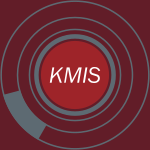 KMIS-2012-Nattkemper
KMIS-2012-Nattkemper - Are we Ready for Science 2.0? (TWN), pp. 302–306.
 MLDM-2012-OshiroPB #how #random
MLDM-2012-OshiroPB #how #random- How Many Trees in a Random Forest? (TMO, PSP, JAB), pp. 154–168.
 RecSys-2012-KluverNESR #how #rating
RecSys-2012-KluverNESR #how #rating- How many bits per rating? (DK, TTN, MDE, SS, JR), pp. 99–106.
 RecSys-2012-Lamere #what
RecSys-2012-Lamere #what- I’ve got 10 million songs in my pocket: now what? (PL), pp. 207–208.
 SIGIR-2012-MaSC #hashtag
SIGIR-2012-MaSC #hashtag- Will this #hashtag be popular tomorrow? (ZM, AS, GC), pp. 1173–1174.
 MoDELS-2012-ArandaDB #modelling #what
MoDELS-2012-ArandaDB #modelling #what- Transition to Model-Driven Engineering — What Is Revolutionary, What Remains the Same? (JA, DD, AB), pp. 692–708.
 ECOOP-2012-NegaraVCJD #evolution #source code #version control
ECOOP-2012-NegaraVCJD #evolution #source code #version control- Is It Dangerous to Use Version Control Histories to Study Source Code Evolution? (SN, MV, NC, REJ, DD), pp. 79–103.
 ECOOP-2012-RobbesRT #evolution
ECOOP-2012-RobbesRT #evolution- Extensions during Software Evolution: Do Objects Meet Their Promise? (RR, DR, ÉT), pp. 28–52.
 RE-2012-MaglyasNS #what
RE-2012-MaglyasNS #what- What do practitioners mean when they talk about product management? (AM, UN, KS), pp. 261–266.
 ASE-2012-WangD0ZLM
ASE-2012-WangD0ZLM - Can I clone this piece of code here? (XW, YD, LZ, DZ, EL, HM), pp. 170–179.
 FSE-2012-CanforaPOP #open source
FSE-2012-CanforaPOP #open source- Who is going to mentor newcomers in open source projects? (GC, MDP, RO, SP), p. 44.
 FSE-2012-LiuTC #debugging
FSE-2012-LiuTC #debugging- Has this bug been reported? (KL, HBKT, MC), p. 28.
 FSE-2012-OkurD #developer #how #library #parallel
FSE-2012-OkurD #developer #how #library #parallel- How do developers use parallel libraries? (SO, DD), p. 54.
 FSE-2012-WalkerRS #composition #problem
FSE-2012-WalkerRS #composition #problem- Do crosscutting concerns cause modularity problems? (RJW, SR, JS), p. 49.
 ICSE-2012-BudgenDBH #education #what
ICSE-2012-BudgenDBH #education #what- What scope is there for adopting evidence-informed teaching in SE? (DB, SD, PB, NH), pp. 1205–1214.
 ICSE-2012-EderJJHVP #how #maintenance #matter
ICSE-2012-EderJJHVP #how #maintenance #matter- How much does unused code matter for maintenance? (SE, MJ, EJ, BH, RV, KHP), pp. 1102–1111.
 ICSE-2012-Johnson #case study #static analysis #tool support #using #why
ICSE-2012-Johnson #case study #static analysis #tool support #using #why- A study on improving static analysis tools: Why are we not using them? (BJ), pp. 1607–1609.
 ICSE-2012-Kramer #architecture
ICSE-2012-Kramer #architecture- Whither software architecture? (JK), p. 963.
 ICSE-2012-PlonkaSL #matter #programming
ICSE-2012-PlonkaSL #matter #programming- Disengagement in pair programming: Does it matter? (LP, HS, JvdL), pp. 496–506.
 ICSE-2012-RoehmTKM #developer #how
ICSE-2012-RoehmTKM #developer #how- How do professional developers comprehend software? (TR, RT, RK, WM), pp. 255–265.
 ICSE-2012-Wolff #architecture #industrial #what
ICSE-2012-Wolff #architecture #industrial #what- Software architecture — What does it mean in industry? (EW), p. 999.
 ICSE-2012-YskoutSJ #architecture #security
ICSE-2012-YskoutSJ #architecture #security- Does organizing security patterns focus architectural choices? (KY, RS, WJ), pp. 617–627.
 SAC-2012-ZhaoLCSS #information management #modelling #process
SAC-2012-ZhaoLCSS #information management #modelling #process- Can business process modeling bridge the gap between business and information systems? (LZ, KL, EVC, SdFMS, PS), pp. 1723–1724.
 CASE-2012-HoNNH #what
CASE-2012-HoNNH #what- What can be inferred from a tactile arrayed sensor in autonomous in-hand manipulation? (VAH, TN, AN, SH), pp. 461–468.
 DAC-2012-KoushanfarFMBSSP
DAC-2012-KoushanfarFMBSSP - Can EDA combat the rise of electronic counterfeiting? (FK, SF, CM, WB, MS, PS, MP), pp. 133–138.
 DAC-2012-QiuM #scalability
DAC-2012-QiuM #scalability- Can pin access limit the footprint scaling? (XQ, MMS), pp. 1100–1106.
 DAC-2012-SeversonYD #performance #reduction
DAC-2012-SeversonYD #performance #reduction- Not so fast my friend: is near-threshold computing the answer for power reduction of wireless devices? (MS, KY, YD), pp. 1164–1166.
 DATE-2012-Al-HashimiM #framework #hardware #platform #verification
DATE-2012-Al-HashimiM #framework #hardware #platform #verification- Accelerators and emulators: Can they become the platform of choice for hardware verification? (BMAH, RM), p. 430.
 HPDC-2012-ChenASYB #multi #performance
HPDC-2012-ChenASYB #multi #performance- Achieving application-centric performance targets via consolidation on multicores: myth or reality? (LYC, DA, ES, AY, WB), pp. 37–48.
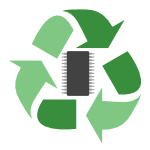 ISMM-2012-OCallahan #memory management #using #web #why
ISMM-2012-OCallahan #memory management #using #web #why- Why is your web browser using so much memory? (RO), pp. 1–2.
 ESOP-2012-AtigBBM #decidability #memory management #modelling #what
ESOP-2012-AtigBBM #decidability #memory management #modelling #what- What’s Decidable about Weak Memory Models? (MFA, AB, SB, MM), pp. 26–46.
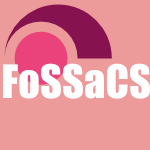 FoSSaCS-2012-AhmanCU #monad
FoSSaCS-2012-AhmanCU #monad- When Is a Container a Comonad? (DA, JC, TU), pp. 74–88.
 FoSSaCS-2012-PetersN #encoding
FoSSaCS-2012-PetersN #encoding- Is It a “Good” Encoding of Mixed Choice? (KP, UN), pp. 210–224.
 ICST-2012-ChenLYS #testing #user interface #what
ICST-2012-ChenLYS #testing #user interface #what- When a GUI Regression Test Failed, What Should be Blamed? (JC, ML, KY, BS), pp. 467–470.
 ICST-2012-JustKS #analysis #effectiveness #mutation testing #performance
ICST-2012-JustKS #analysis #effectiveness #mutation testing #performance- Do Redundant Mutants Affect the Effectiveness and Efficiency of Mutation Analysis? (RJ, GMK, FS), pp. 720–725.
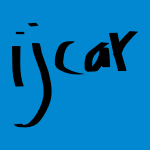 IJCAR-2012-BorgwardtDP #fuzzy #how #logic
IJCAR-2012-BorgwardtDP #fuzzy #how #logic- How Fuzzy Is My Fuzzy Description Logic? (SB, FD, RP), pp. 82–96.
 WICSA-2011-Smet #architecture #health #why
WICSA-2011-Smet #architecture #health #why- The Dutch Nationwide Electronic Health Record: Why the Centralised Services Architecture? (KdS), pp. 181–186.
 HT-2011-Rowberry #hypermedia
HT-2011-Rowberry #hypermedia- Vladimir Nabokov’s pale fire: the lost “father of all hypertext demos”? (SR), pp. 319–324.
 ICDAR-2011-LoprestiN #problem
ICDAR-2011-LoprestiN #problem- When is a Problem Solved? (DPL, GN), pp. 32–36.
 JCDL-2011-AinsworthASWN #how #web
JCDL-2011-AinsworthASWN #how #web- How much of the web is archived? (SA, AA, HS, MCW, MLN), pp. 133–136.
 JCDL-2011-SteinhauerDMLT
JCDL-2011-SteinhauerDMLT - Tags in domain-specific sites: new information? (JS, LMLD, DM, ML, VHT), pp. 109–112.
 TPDL-2011-Axhamn #online
TPDL-2011-Axhamn #online- Cross-Border Extended Collective Licensing: A Solution to Online Dissemination of Europe’s Cultural Heritage? (JA), pp. 501–504.
 VLDB-2011-Campbell #big data
VLDB-2011-Campbell #big data- Is It Still “Big Data” If It Fits In My Pocket? (DC), p. 694.
 VLDB-2011-KadambiCCLRSTG
VLDB-2011-KadambiCCLRSTG - Where in the World is My Data? (SK, JC, BFC, DL, RR, AS, ET, HGM), pp. 1040–1050.
 VLDB-2011-MachanavajjhalaKS #personalisation #recommendation #social
VLDB-2011-MachanavajjhalaKS #personalisation #recommendation #social- Personalized Social Recommendations — Accurate or Private? (AM, AK, ADS), pp. 440–450.
 CSEET-2011-BromanS #how #re-engineering #student
CSEET-2011-BromanS #how #re-engineering #student- How can we make software engineering text books well-founded, up-to-date, and accessible to students? (DB, KS), pp. 386–390.
 CSEET-2011-ChimalakondaN #education #learning #re-engineering
CSEET-2011-ChimalakondaN #education #learning #re-engineering- Can we make software engineering education better by applying learning theories? (SC, KVN), p. 561.
 CSEET-2011-GannodABB #communication #education #integration #re-engineering
CSEET-2011-GannodABB #communication #education #integration #re-engineering- Is integration of communication and technical instruction across the SE curriculum a viable strategy for improving the real-world communication abilities of software engineering graduates? (GCG, PVA, JEB, AB), pp. 525–529.
 CSEET-2011-PenzenstadlerF #education #re-engineering
CSEET-2011-PenzenstadlerF #education #re-engineering- Teach sustainability in software engineering? (BP, AF), pp. 454–458.
 CSEET-2011-RobinsonH #re-engineering
CSEET-2011-RobinsonH #re-engineering- Software engineering or soft engineering? (KR, PSH), pp. 459–466.
 ITiCSE-2011-ChanK #education #learning #multi
ITiCSE-2011-ChanK #education #learning #multi- Do educational software systems provide satisfactory learning opportunities for “multi-sensory learning” methodology? (PC, GK), p. 358.
 SIGITE-2011-GuthrieYS #how #what #women
SIGITE-2011-GuthrieYS #how #what #women- How did mathemathematics and accounting get so many women majors?: what can IT disciplines learn? (RAG, EKY, LLS), pp. 15–20.
 ICPC-2011-Burnett #programming #tool support
ICPC-2011-Burnett #programming #tool support- Males and Females Developing Software: Are Programming Tools Getting in the Way? (MB), p. xvii.
 ICPC-2011-DitGPA #feature model #identifier
ICPC-2011-DitGPA #feature model #identifier- Can Better Identifier Splitting Techniques Help Feature Location? (BD, LG, DP, GA), pp. 11–20.
 MSR-2011-BernardiSZDP #topic #what
MSR-2011-BernardiSZDP #topic #what- What topics do Firefox and Chrome contributors discuss? (MLB, CS, QZ, DD, MDP), pp. 234–237.
 MSR-2011-BhattacharyaN #debugging #modelling #predict
MSR-2011-BhattacharyaN #debugging #modelling #predict- Bug-fix time prediction models: can we do better? (PB, IN), pp. 207–210.
 SCAM-2011-MarinescuM #fault
SCAM-2011-MarinescuM #fault- Are the Clients of Flawed Classes (Also) Defect Prone? (RM, CM), pp. 65–74.
 WCRE-2011-AryaniPLMN #dependence #predict #using
WCRE-2011-AryaniPLMN #dependence #predict #using- Can We Predict Dependencies Using Domain information? (AA, FP, ML, ANM, ON), pp. 55–64.
 WCRE-2011-PosnettHD #fault
WCRE-2011-PosnettHD #fault- Got Issues? Do New Features and Code Improvements Affect Defects? (DP, AH, PTD), pp. 211–215.
 ICALP-v1-2011-AnandGM #how
ICALP-v1-2011-AnandGM #how- Meeting Deadlines: How Much Speed Suffices? (SA, NG, NM), pp. 232–243.
 FM-2011-DammF
FM-2011-DammF - Does It Pay to Extend the Perimeter of a World Model? (WD, BF), pp. 12–26.
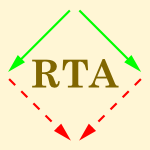 RTA-2011-Tison #automaton #constraints #similarity #term rewriting #what
RTA-2011-Tison #automaton #constraints #similarity #term rewriting #what- Tree Automata, (Dis-)Equality Constraints and Term Rewriting: What’s New? (ST), pp. 1–2.
 TLCA-2011-Tison #automaton #constraints #similarity #term rewriting #what
TLCA-2011-Tison #automaton #constraints #similarity #term rewriting #what- Tree Automata, (Dis-)Equality Constraints and Term Rewriting — What’s New? (ST), pp. 3–5.
 DiGRA-2011-Frank #design #education #game studies #learning
DiGRA-2011-Frank #design #education #game studies #learning- Unexpected game calculations in educational wargaming: Design flaw or beneficial to learning? (AF).
 DiGRA-2011-IacovidesASW #how #learning
DiGRA-2011-IacovidesASW #how #learning- Making sense of game-play: How can we examine learning and involvement? (II, JA, ES, WW).
 FDG-2011-Lotte #3d #game studies #human-computer #interface
FDG-2011-Lotte #3d #game studies #human-computer #interface- Brain-computer interfaces for 3D games: hype or hope? (FL), pp. 325–327.
 VS-Games-2011-CamilleriM #education
VS-Games-2011-CamilleriM #education- Virtual World Presence for Pre-service Teachers: Does the TAM Model Apply? (VC, MM), pp. 156–159.
 CHI-2011-DasFS #design #interactive
CHI-2011-DasFS #design #interactive- Interaction design for cancer patients: do we need to take into account the effects of illness and medication? (AD, AF, DS), pp. 21–24.
 CHI-2011-GeyerDBMDM #enterprise #social
CHI-2011-GeyerDBMDM #enterprise #social- An open, social microcalender for the enterprise: timely? (WG, CD, BB, MM, EMD, DRM), pp. 247–256.
 CHI-2011-KelleyBCS
CHI-2011-KelleyBCS - When are users comfortable sharing locations with advertisers? (PGK, MB, LFC, NMS), pp. 2449–2452.
 CHI-2011-LinGTMA #identification #people
CHI-2011-LinGTMA #identification #people- Does domain highlighting help people identify phishing sites? (EL, SG, ET, DM, JA), pp. 2075–2084.
 CHI-2011-MaratheS #what
CHI-2011-MaratheS #what- What drives customization?: control or identity? (SM, SSS), pp. 781–790.
 CHI-2011-SauroL #design #usability
CHI-2011-SauroL #design #usability- When designing usability questionnaires, does it hurt to be positive? (JS, JRL), pp. 2215–2224.
 CSCW-2011-PatilPK #navigation #privacy #social
CSCW-2011-PatilPK #navigation #privacy #social- With a little help from my friends: can social navigation inform interpersonal privacy preferences? (SP, XP, AK), pp. 391–394.
 DHM-2011-DAquaroMMR #game studies
DHM-2011-DAquaroMMR #game studies- Videogames and Elders: A New Path in LCT? (ND, DM, GM, LAR), pp. 245–254.
 DUXU-v1-2011-AuingerAKH #design #difference #web
DUXU-v1-2011-AuingerAKH #design #difference #web- Conformity with User Expectations on the Web: Are There Cultural Differences for Design Principles? (AA, AMA, HK, AH), pp. 3–12.
 DUXU-v1-2011-BevanR #standard #usability
DUXU-v1-2011-BevanR #standard #usability- ISO 20282: Is a Practical Standard for the Usability of Consumer Products Possible? (NB, SR), pp. 119–127.
 DUXU-v1-2011-PrabhalaLG #people #what #word
DUXU-v1-2011-PrabhalaLG #people #what #word- Ethnography, Ethnography or Ethnography? What Happens When the Same Word Means Different Things to Different People? (SP, DL, SG), pp. 102–110.
 DUXU-v1-2011-Renner #design #how #image #process #visual notation
DUXU-v1-2011-Renner #design #how #image #process #visual notation- Image, Imagination, Innovation: How Can We Overcome the Common Ground in the Processes of Visual Design? (MR), pp. 285–294.
 DUXU-v1-2011-TurnerC #interface
DUXU-v1-2011-TurnerC #interface- Phone Use and Aging: Do Spatial Interface Metaphors Help? (MT, RC), pp. 678–686.
 DUXU-v2-2011-Moallem
DUXU-v2-2011-Moallem - Did You Forget Your Password? (AM), pp. 29–39.
 DUXU-v2-2011-YasumaN #artificial reality
DUXU-v2-2011-YasumaN #artificial reality- User Characteristic-Based Information-Providing Service for Museum with Optical See-Through Head-Mounted Display: Does It Evoke Enthusiasm? (YY, MN), pp. 234–242.
 HCD-2011-LieberF #design #integration
HCD-2011-LieberF #design #integration- Human Systems Integration Design: Which Generalized Rationale? (RL, DF), pp. 101–109.
 HCI-ITE-2011-MiyabeY #people
HCI-ITE-2011-MiyabeY #people- Can Indicating Translation Accuracy Encourage People to Rectify Inaccurate Translations? (MM, TY), pp. 368–377.
 HCI-MIIE-2011-HyrkkanenN #functional #how #identification #mobile #physics
HCI-MIIE-2011-HyrkkanenN #functional #how #identification #mobile #physics- The Virtual Workplace of a Mobile Employee — How Does Vischer’s Model Function in Identifying Physical, Functional and Psychosocial Fit? (UH, SN), pp. 69–75.
 HCI-MIIE-2011-TakahashiAI #twitter
HCI-MIIE-2011-TakahashiAI #twitter- Can Twitter Be an Alternative of Real-World Sensors? (TT, SA, NI), pp. 240–249.
 HCI-UA-2011-EverardJM #learning #student #what
HCI-UA-2011-EverardJM #learning #student #what- Are MIS Students Learning What They Need to Land a Job? (AE, BMJ, SM), pp. 235–236.
 HCI-UA-2011-FangZ #game studies #what
HCI-UA-2011-FangZ #game studies #what- Extraversion and Computer Game Play: Who Plays What Games? (XF, MZ), pp. 659–667.
 HCI-UA-2011-Furukawa #design #injection #what
HCI-UA-2011-Furukawa #design #injection #what- What Label Design of Ampule for Injection, Do You Want? (HF), pp. 159–166.
 HCI-UA-2011-JonesEM #distance #education
HCI-UA-2011-JonesEM #distance #education- Distance Education at the Graduate Level: A Viable Alternative? (BMJ, AE, SM), pp. 58–60.
 HIMI-v1-2011-NguyenV #behaviour #online #privacy
HIMI-v1-2011-NguyenV #behaviour #online #privacy- Does Privacy Information Influence Users’ Online Purchasing Behavior? (JHN, KPLV), pp. 349–358.
 HIMI-v1-2011-TakeuchiN #how
HIMI-v1-2011-TakeuchiN #how- How Do Real or Virtual Agent’s Body and Instructions Contribute to Task Achievement? (YT, HN), pp. 142–151.
 HIMI-v2-2011-BattisteLLNBKJ
HIMI-v2-2011-BattisteLLNBKJ - Is ACARS and FANS-1A Just Another Data Link to the Controller? (VB, JL, SVL, JHN, LPB, RWK, WWJ), pp. 453–462.
 HIMI-v2-2011-ChellaliB #locality #what
HIMI-v2-2011-ChellaliB #locality #what- What Maps and What Displays for Remote Situation Awareness and ROV Localization? (RC, KB), pp. 364–372.
 HIMI-v2-2011-TakadamaOSMOIHS #order #what
HIMI-v2-2011-TakadamaOSMOIHS #order #what- What Kinds of Human Negotiation Skill Can Be Acquired by Changing Negotiation Order of Bargaining Agents? (KT, AO, KS, HM, MO, YI, KH, HS), pp. 335–344.
 IDGD-2011-Gould
IDGD-2011-Gould - Seeing the World in 5 Dimensions — More or Less? (EWG), pp. 302–311.
 OCSC-2011-AhmadL11a #what
OCSC-2011-AhmadL11a #what- Interpreting User-Generated Content: What Makes a Blog Believeable? (RA, WGL), pp. 81–89.
 OCSC-2011-CarstensG #interface #network #privacy #social
OCSC-2011-CarstensG #interface #network #privacy #social- Is Your Social Networking Privacy Reliant on Intuitive Interfaces? (DSC, VG), pp. 309–318.
 ICEIS-v2-2011-YangLT #communication #development #how #memory management
ICEIS-v2-2011-YangLT #communication #development #how #memory management- How Communication Impacts on the Development of Transactive Memory System in Task-teams? (YY, YL, FT), pp. 451–454.
 CIKM-2011-YangZKL #how #learning #why
CIKM-2011-YangZKL #how #learning #why- Can irrelevant data help semi-supervised learning, why and how? (HY, SZ, IK, MRL), pp. 937–946.
 ECIR-2011-KoolenK #effectiveness #retrieval #semantics
ECIR-2011-KoolenK #effectiveness #retrieval #semantics- Are Semantically Related Links More Effective for Retrieval? (MK, JK), pp. 92–103.
 ECIR-2011-MagdyJ #black box
ECIR-2011-MagdyJ #black box- Should MT Systems Be Used as Black Boxes in CLIR? (WM, GJFJ), pp. 683–686.
 ECIR-2011-ShiLH11a #how #recommendation #trust
ECIR-2011-ShiLH11a #how #recommendation #trust- How Far Are We in Trust-Aware Recommendation? (YS, ML, AH), pp. 704–707.
 ECIR-2011-TrieschniggH
ECIR-2011-TrieschniggH - Classic Children’s Literature — Difficult to Read? (DT, CH), pp. 691–694.
 KDD-2011-SnowsillFBC
KDD-2011-SnowsillFBC - Refining causality: who copied from whom? (TMS, NF, TDB, NC), pp. 466–474.
 KEOD-2011-SharmaB #ontology #problem
KEOD-2011-SharmaB #ontology #problem- Can Ontologies Be Sufficient Solution to Requirement Engineering Problem? (RS, KKB), pp. 461–465.
 RecSys-2011-SparlingS #how #named #rating
RecSys-2011-SparlingS #how #named #rating- Rating: how difficult is it? (EIS, SS), pp. 149–156.
 SIGIR-2011-SantosMO11b #how #web
SIGIR-2011-SantosMO11b #how #web- How diverse are web search results? (RLTS, CM, IO), pp. 1187–1188.
 MoDELS-2011-FlochYGDCRF #compilation #modelling #optimisation
MoDELS-2011-FlochYGDCRF #compilation #modelling #optimisation- Model-Driven Engineering and Optimizing Compilers: A Bridge Too Far? (AF, TY, CG, SD, BC, SVR, RBF), pp. 608–622.
 ECOOP-2011-Taube-SchockWW
ECOOP-2011-Taube-SchockWW - Can We Avoid High Coupling? (CTS, RJW, IHW), pp. 204–228.
 PLATEAU-2011-GilGM #how #metric
PLATEAU-2011-GilGM #how #metric- How much information do software metrics contain? (JYG, MG, DM), pp. 57–64.
 POPL-2011-Leroy #tool support
POPL-2011-Leroy #tool support- Verified squared: does critical software deserve verified tools? (XL), pp. 1–2.
 RE-2011-WeverM #analysis #effectiveness #what
RE-2011-WeverM #analysis #effectiveness #what- What are the day-to-day factors that are preventing business analysts from effective business analysis? (AW, NAMM), pp. 293–298.
 REFSQ-2011-AdamUR #reuse
REFSQ-2011-AdamUR #reuse- Is It Beneficial to Match Reusable Services Earlier? (SA, ÖÜ, NR), pp. 136–150.
 ESEC-FSE-2011-RahmanPHBD
ESEC-FSE-2011-RahmanPHBD - BugCache for inspections: hit or miss? (FR, DP, AH, ETB, PTD), pp. 322–331.
 ESEC-FSE-2011-YinYZPB #debugging #how
ESEC-FSE-2011-YinYZPB #debugging #how- How do fixes become bugs? (ZY, DY, YZ, SP, LNB), pp. 26–36.
 ICSE-2011-CurtisSS #evaluation #matter #quality
ICSE-2011-CurtisSS #evaluation #matter #quality- An evaluation of the internal quality of business applications: does size matter? (BC, JS, JS), pp. 711–715.
 ICSE-2011-GethersSPOPL #named #topic
ICSE-2011-GethersSPOPL #named #topic- CodeTopics: which topic am I coding now? (MG, TS, MDP, RO, DP, ADL), pp. 1034–1036.
 ICSE-2011-MeneelyW #developer #metric #network #trust
ICSE-2011-MeneelyW #developer #metric #network #trust- Socio-technical developer networks: should we trust our measurements? (AM, LW), pp. 281–290.
 ICSE-2011-TreudeBS #how #web
ICSE-2011-TreudeBS #how #web- How do programmers ask and answer questions on the web? (CT, OB, MADS), pp. 804–807.
 SAC-2011-Jaghoori #multi #scheduling
SAC-2011-Jaghoori #multi #scheduling- From nonpreemptive to preemptive scheduling: from single-processor to multi-processor? (MMJ), pp. 717–722.
 CGO-2011-Leroy #compilation #how #verification #why
CGO-2011-Leroy #compilation #how #verification #why- Formally verifying a compiler: Why? How? How far? (XL).
 DAC-2011-GaillardonBMNCO #3d #architecture #towards
DAC-2011-GaillardonBMNCO #3d #architecture #towards- Can we go towards true 3-D architectures? (PEG, MHBJ, PHM, JPN, FC, IO), pp. 282–283.
 DAC-2011-Heiser #embedded #why
DAC-2011-Heiser #embedded #why- Virtualizing embedded systems: why bother? (GH), pp. 901–905.
 DAC-2011-Mador-HaimAM #consistency #how #memory management #modelling #testing
DAC-2011-Mador-HaimAM #consistency #how #memory management #modelling #testing- Litmus tests for comparing memory consistency models: how long do they need to be? (SMH, RA, MMKM), pp. 504–509.
 DAC-2011-PuggelliWKS #logic #robust #synthesis #tool support
DAC-2011-PuggelliWKS #logic #robust #synthesis #tool support- Are logic synthesis tools robust? (AP, TW, AK, ALSV), pp. 633–638.
 DAC-2011-TamB
DAC-2011-TamB - To DFM or not to DFM? (WCT, RD(B), pp. 65–70.
 DATE-2011-Micheli #design #logic #physics #synthesis
DATE-2011-Micheli #design #logic #physics #synthesis- Logic synthesis and physical design: Quo vadis? (GDM), p. 50.
 DATE-2011-PandeCPMBMG #energy #performance #platform
DATE-2011-PandeCPMBMG #energy #performance #platform- Sustainability through massively integrated computing: Are we ready to break the energy efficiency wall for single-chip platforms? (PPP, FC, DP, IM, PB, RM, AG), pp. 1656–1661.
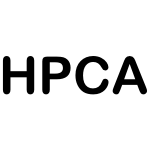 HPCA-2011-McKinley #how #parallel
HPCA-2011-McKinley #how #parallel- How’s the parallel computing revolution going? (KSM), p. 217.
 PPoPP-2011-McKinley #how #parallel
PPoPP-2011-McKinley #how #parallel- How’s the parallel computing revolution going? (KSM), pp. 123–124.
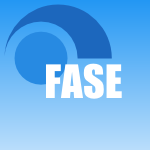 FASE-2011-GharaibehRC #framework
FASE-2011-GharaibehRC #framework- Analyzing Software Updates: Should You Build a Dynamic Updating Infrastructure? (BG, HR, JMC), pp. 371–385.
 FASE-2011-SharmaGAFM #random #testing
FASE-2011-SharmaGAFM #random #testing- Testing Container Classes: Random or Systematic? (RS, MG, AA, GF, DM), pp. 262–277.
 FoSSaCS-2011-AtkeyJG #induction #refinement
FoSSaCS-2011-AtkeyJG #induction #refinement- When Is a Type Refinement an Inductive Type? (RA, PJ, NG), pp. 72–87.
 FoSSaCS-2011-AxelsenG #source code #what
FoSSaCS-2011-AxelsenG #source code #what- What Do Reversible Programs Compute? (HBA, RG), pp. 42–56.
 CSL-2011-Kopczynski #consistency
CSL-2011-Kopczynski #consistency- Trees in Trees: Is the Incomplete Information about a Tree Consistent? (EK), pp. 367–380.
 ICST-2011-Sun #debugging #why
ICST-2011-Sun #debugging #why- Why are Bug Reports Invalid? (JS), pp. 407–410.
 ISSTA-2011-ArcuriB #adaptation #effectiveness #random testing #testing
ISSTA-2011-ArcuriB #adaptation #effectiveness #random testing #testing- Adaptive random testing: an illusion of effectiveness? (AA, LCB), pp. 265–275.
 ISSTA-2011-ParninO #automation #debugging
ISSTA-2011-ParninO #automation #debugging- Are automated debugging techniques actually helping programmers? (CP, AO), pp. 199–209.
 ECSA-2010-Kruchten #architecture
ECSA-2010-Kruchten #architecture- Where Did All This Good Architectural Knowledge Go? (PK), pp. 5–6.
 HT-2010-KleinSN
HT-2010-KleinSN - Is this a good title? (MK, JLS, MLN), pp. 3–12.
 JCDL-2010-VillaHJHJ #database #image
JCDL-2010-VillaHJHJ #database #image- Can an intermediary collection help users search image databases without annotations? (RV, MH, HJ, DH, JMJ), pp. 303–312.
 VLDB-2010-AbadiCCGPR #database #what
VLDB-2010-AbadiCCGPR #database #what- Cloud Databases: What’s New? (DA, MJC, SC, HGM, JMP, RR), p. 1657.
 VLDB-2010-AgrawalDA #big data #in the cloud
VLDB-2010-AgrawalDA #big data #in the cloud- Big Data and Cloud Computing: New Wine or just New Bottles? (DA, SD, AEA), pp. 1647–1648.
 CSEET-2010-Broman #education #re-engineering
CSEET-2010-Broman #education #re-engineering- Should Software Engineering Projects Be the Backbone or the Tail of Computing Curricula? (DB), pp. 153–156.
 EDM-2010-FengH #assessment #learning #student #testing
EDM-2010-FengH #assessment #learning #student #testing- Can We Get Better Assessment From A Tutoring System Compared to Traditional Paper Testing? Can We Have Our Cake (Better Assessment) and Eat It too (Student Learning During the Test)? (MF, NTH), pp. 41–50.
 EDM-2010-HershkovitzN #persistent #process #student
EDM-2010-HershkovitzN #persistent #process #student- Is Students’ Activity in LMS Persistent? (AH, RN), pp. 295–296.
 EDM-2010-SoundranayagamY #learning #order #predict
EDM-2010-SoundranayagamY #learning #order #predict- Can Order of Access to Learning Resources Predict Success? (HS, KY), pp. 323–324.
 MSR-2010-Herbsleb #mining #named
MSR-2010-Herbsleb #mining #named- MSR: Mining for scientific results? (JDH).
 MSR-2010-IbrahimBSAH
MSR-2010-IbrahimBSAH - Should I contribute to this discussion? (WMI, NB, ES, BA, AEH), pp. 181–190.
 MSR-2010-MaalejH #development
MSR-2010-MaalejH #development- Can development work describe itself? (WM, HJH), pp. 191–200.
 MSR-2010-RahmanBD #named #smell #what
MSR-2010-RahmanBD #named #smell #what- Clones: What is that smell? (FR, CB, PTD), pp. 72–81.
 MSR-2010-SchroterBP #debugging #developer #stack
MSR-2010-SchroterBP #debugging #developer #stack- Do stack traces help developers fix bugs? (AS, NB, RP), pp. 118–121.
 SCAM-2010-KesterMB #concurrent #debugging #how #static analysis
SCAM-2010-KesterMB #concurrent #debugging #how #static analysis- How Good is Static Analysis at Finding Concurrency Bugs? (DK, MM, JSB), pp. 115–124.
 ICALP-v2-2010-HofmannKS #functional #what
ICALP-v2-2010-HofmannKS #functional #what- What Is a Pure Functional? (MH, AK, HS), pp. 199–210.
 ICFP-2010-Gordon #metalanguage #ml #named
ICFP-2010-Gordon #metalanguage #ml #named- ML: metalanguage or object language? (MJCG), pp. 1–2.
 ICGT-2010-BrandtH #enterprise #graph transformation #how #modelling
ICGT-2010-BrandtH #enterprise #graph transformation #how #modelling- How Far Can Enterprise Modeling for Banking Be Supported by Graph Transformation? (CB, FH), pp. 3–26.
 CHI-2010-AulaKG #behaviour #how
CHI-2010-AulaKG #behaviour #how- How does search behavior change as search becomes more difficult? (AA, RMK, ZG), pp. 35–44.
 CHI-2010-SauroL #testing #usability #what
CHI-2010-SauroL #testing #usability #what- Average task times in usability tests: what to report? (JS, JRL), pp. 2347–2350.
 CSCW-2010-CarterD
CSCW-2010-CarterD - Are you having difficulty? (JC, PD), pp. 211–214.
 CSCW-2010-LeeKF #how #people
CSCW-2010-LeeKF #how #people- Receptionist or information kiosk: how do people talk with a robot? (MKL, SBK, JF), pp. 31–40.
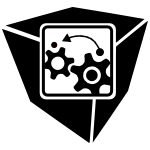 SOFTVIS-2010-Booch #developer #diagrams #why
SOFTVIS-2010-Booch #developer #diagrams #why- Why don’t developers draw diagrams? (GB), pp. 3–4.
 CAiSE-2010-LagunaMC #case study #modelling #on the #semantics
CAiSE-2010-LagunaMC #case study #modelling #on the #semantics- On the Semantics of the Extend Relationship in Use Case Models: Open-Closed Principle or Clairvoyance? (MAL, JMM, YC), pp. 409–423.
 EDOC-2010-Gronmo #aspect-oriented #graph transformation
EDOC-2010-Gronmo #aspect-oriented #graph transformation- Can Graph Transformation Make Aspect Languages for BPEL Redundant? (RG), pp. 153–162.
 EDOC-2010-VoelzG #quality #what
EDOC-2010-VoelzG #quality #what- What is Different in Quality Management for SOA? (DV, AG), pp. 47–56.
 ICEIS-HCI-2010-PereiraBS #social #why
ICEIS-HCI-2010-PereiraBS #social #why- A Framework-informed Discussion on Social Software — Why Some Social Software Fail and Others do Not? (RP, MCCB, SRPdS), pp. 149–154.
 CIKM-2010-BerminghamS #microblog #sentiment
CIKM-2010-BerminghamS #microblog #sentiment- Classifying sentiment in microblogs: is brevity an advantage? (AB, AFS), pp. 1833–1836.
 CIKM-2010-BurghardtBGC
CIKM-2010-BurghardtBGC - Search-log anonymization and advertisement: are they mutually exclusive? (TB, KB, AG, CC), pp. 1269–1272.
 CIKM-2010-YuKN #named
CIKM-2010-YuKN #named- RankSVR: can preference data help regression? (HY, SK, SHN), pp. 879–888.
 CIKM-2010-ZaragozaCB #ranking #web
CIKM-2010-ZaragozaCB #ranking #web- Web search solved?: all result rankings the same? (HZ, BBC, RABY), pp. 529–538.
 ECIR-2010-KapteinHK #how #modelling
ECIR-2010-KapteinHK #how #modelling- How Different Are Language Models andWord Clouds? (RK, DH, JK), pp. 556–568.
 ICPR-2010-AliL #correlation #recognition
ICPR-2010-AliL #correlation #recognition- Are Correlation Filters Useful for Human Action Recognition? (SA, SL), pp. 2608–2611.
 ICPR-2010-MakiharaHY #how
ICPR-2010-MakiharaHY #how- How to Control Acceptance Threshold for Biometric Signatures with Different Confidence Values? (YM, MAH, YY), pp. 1208–1211.
 ICPR-2010-Martin-HerreroF #classification
ICPR-2010-Martin-HerreroF #classification- Tensor-Driven Hyperspectral Denoising: A Strong Link for Classification Chains? (JMH, MFA), pp. 2820–2823.
 ICPR-2010-RicamatoT #effectiveness
ICPR-2010-RicamatoT #effectiveness- AUC-based Combination of Dichotomizers: Is Whole Maximization also Effective for Partial Maximization? (MTR, FT), pp. 73–76.
 ICPR-2010-SutcuSM #how
ICPR-2010-SutcuSM #how- How to Measure Biometric Information? (YS, HTS, NDM), pp. 1469–1472.
 ICPR-2010-UlgesB #recognition #segmentation
ICPR-2010-UlgesB #recognition #segmentation- Can Motion Segmentation Improve Patch-Based Object Recognition? (AU, TMB), pp. 3041–3044.
 KDIR-2010-Cucerzan #matter #web
KDIR-2010-Cucerzan #matter #web- Does Capitalization Matter in Web Search? (SC), pp. 302–306.
 KEOD-2010-GibbsC #concurrent #ontology
KEOD-2010-GibbsC #concurrent #ontology- Concurrency Conundrums — An Ontological Solution? (CG, YC), pp. 305–310.
 RecSys-2010-ResnickKHP #contest #named
RecSys-2010-ResnickKHP #contest #named- Contests: way forward or detour? (PR, JAK, AH, JP), pp. 37–38.
 SEKE-2010-ZhangYW
SEKE-2010-ZhangYW - Absent features or missing values? (WZ, YY, QW), pp. 6–11.
 SIGIR-2010-AhmedN #multi #people
SIGIR-2010-AhmedN #multi #people- multi Searcher: can we support people to get information from text they can’t read or understand? (FA, AN), pp. 837–838.
 SIGIR-2010-ChenYLZQ #classification #personalisation #predict #query
SIGIR-2010-ChenYLZQ #classification #personalisation #predict #query- Predicting query potential for personalization, classification or regression? (CC, MY, SL, TZ, HQ), pp. 725–726.
 SIGIR-2010-Harman #paradigm
SIGIR-2010-Harman #paradigm- Is the Cranfield paradigm outdated? (DH), p. 1.
 SIGIR-2010-LeeCKC
SIGIR-2010-LeeCKC - To translate or not to translate? (CJL, CHC, SHK, PJC), pp. 651–658.
 SIGIR-2010-SandersonPCK #evaluation #metric
SIGIR-2010-SandersonPCK #evaluation #metric- Do user preferences and evaluation measures line up? (MS, MLP, PDC, EK), pp. 555–562.
 SIGIR-2010-ZucconAR
SIGIR-2010-ZucconAR - Has portfolio theory got any principles? (GZ, LA, KvR), pp. 755–756.
 OOPSLA-2010-KouP #hardware #object-oriented
OOPSLA-2010-KouP #hardware #object-oriented- From OO to FPGA: fitting round objects into square hardware? (SK, JP), pp. 109–124.
 AdaEurope-2010-Baker #manycore #realtime #reliability #what
AdaEurope-2010-Baker #manycore #realtime #reliability #what- What to Make of Multicore Processors for Reliable Real-Time Systems? (TPB), pp. 1–18.
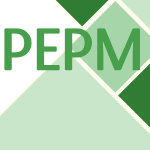 PEPM-2010-Augustsson
PEPM-2010-Augustsson - O, partial evaluator, where art thou? (LA), pp. 1–2.
 SAS-2010-Lesens #static analysis #using #why
SAS-2010-Lesens #static analysis #using #why- Using Static Analysis in Space: Why Doing so? (DL), pp. 51–70.
 RE-2010-Beatty #what
RE-2010-Beatty #what- My Company Can’t Afford RE Training Right Now, What Do We Do? (JB), p. 387.
 REFSQ-2010-BrillSK #case study #requirements
REFSQ-2010-BrillSK #case study #requirements- Videos vs. Use Cases: Can Videos Capture More Requirements under Time Pressure? (OB, KS, EK), pp. 30–44.
 ICSE-2010-GuBHS #debugging
ICSE-2010-GuBHS #debugging- Has the bug really been fixed? (ZG, ETB, DJH, ZS), pp. 55–64.
 ICSE-2010-JurgensDFHSWDS #clone detection #detection #quality #requirements #specification
ICSE-2010-JurgensDFHSWDS #clone detection #detection #quality #requirements #specification- Can clone detection support quality assessments of requirements specifications? (EJ, FD, MF, BH, BS, SW, CD, JS), pp. 79–88.
 ICSE-2010-Kruchten #agile #architecture #development
ICSE-2010-Kruchten #agile #architecture #development- Software architecture and agile software development: a clash of two cultures? (PK), pp. 497–498.
 ICSE-2010-ZhangHHXM #random
ICSE-2010-ZhangHHXM #random- Is operator-based mutant selection superior to random mutant selection? (LZ, SSH, JJH, TX, HM), pp. 435–444.
 SAC-2010-ChowdhuryZ #complexity #metric
SAC-2010-ChowdhuryZ #complexity #metric- Can complexity, coupling, and cohesion metrics be used as early indicators of vulnerabilities? (IC, MZ), pp. 1963–1969.
 SAC-2010-LiuCXMBG #architecture #domain-specific language
SAC-2010-LiuCXMBG #architecture #domain-specific language- Can domain-specific languages be implemented by service-oriented architecture? (SHL, AC, XX, MM, BRB, JG), pp. 2491–2492.
 SLE-2010-Bernstein #re-engineering #semantics #web
SLE-2010-Bernstein #re-engineering #semantics #web- Software Engineering and the Semantic Web: A Match Made in Heaven or in Hell? (AB), pp. 203–205.
 CC-2010-JiangZTS #analysis #distance #locality #multi #reuse
CC-2010-JiangZTS #analysis #distance #locality #multi #reuse- Is Reuse Distance Applicable to Data Locality Analysis on Chip Multiprocessors? (YJ, EZZ, KT, XS), pp. 264–282.
 DAC-2010-BansalRYJLMMR #3d
DAC-2010-BansalRYJLMMR #3d- 3-D stacked die: now or future? (SB, JCR, AY, MSJ, LCL, PM, PM, RR), pp. 298–299.
 DAC-2010-GajskiAS #synthesis #what
DAC-2010-GajskiAS #synthesis #what- What input-language is the best choice for high level synthesis (HLS)? (DG, TMA, SS), pp. 857–858.
 DAC-2010-HarmsCDHUWY #design #experience #what
DAC-2010-HarmsCDHUWY #design #experience #what- What will make your next design experience a much better one? (TH, JAC, RD, RAH, DU, GW, JY), p. 730.
 DAC-2010-Hiskens #grid #smarttech #what
DAC-2010-Hiskens #grid #smarttech #what- What’s smart about the smart grid? (IAH), pp. 937–939.
 DAC-2010-KuehlmannCCCGGLS #design #in the cloud
DAC-2010-KuehlmannCCCGGLS #design #in the cloud- Does IC design have a future in the clouds? (AK, RC, JC, JC, SG, RG, PL, DS), pp. 412–414.
 DAC-2010-NsBNPSGB #design #future of #power management #what
DAC-2010-NsBNPSGB #design #future of #power management #what- What’s cool for the future of ultra low power designs? (NN, JB, KN, VP, TS, AG, SB), pp. 523–524.
 DAC-2010-NSRKALPST #problem #variability
DAC-2010-NSRKALPST #problem #variability- Who solves the variability problem? (NN, JCR, JK, RCA, CL, VP, AJS, ST), pp. 218–219.
 DATE-2010-Cota #embedded #problem #testing #what
DATE-2010-Cota #embedded #problem #testing #what- Embedded software testing: What kind of problem is this? (ÉFC), p. 1486.
 DATE-2010-MoyerKCRHT #assembly
DATE-2010-MoyerKCRHT #assembly- Are we there yet? Has IP block assembly become as easy as LEGO? (BM, JK, JC, CR, EH, YT), p. 123.
 HPCA-2010-Arvind #hardware
HPCA-2010-Arvind #hardware- Is hardware innovation over? (A), p. 1.
 OSDI-2010-SherwoodGYACMP #network
OSDI-2010-SherwoodGYACMP #network- Can the Production Network Be the Testbed? (RS, GG, KKY, GA, MC, NM, GMP), pp. 365–378.
 PPoPP-2010-Arvind #hardware
PPoPP-2010-Arvind #hardware- Is hardware innovation over? (A), pp. 103–104.
 PPoPP-2010-RossbachHW #programming #transaction
PPoPP-2010-RossbachHW #programming #transaction- Is transactional programming actually easier? (CJR, OSH, EW), pp. 47–56.
 PPoPP-2010-ZhangJS #matter #parallel #performance #source code #thread
PPoPP-2010-ZhangJS #matter #parallel #performance #source code #thread- Does cache sharing on modern CMP matter to the performance of contemporary multithreaded programs? (EZZ, YJ, XS), pp. 203–212.
 FASE-2010-BacchelliDL #fault
FASE-2010-BacchelliDL #fault- Are Popular Classes More Defect Prone? (AB, MD, ML), pp. 59–73.
 STOC-2010-Talagrand #set
STOC-2010-Talagrand #set- Are many small sets explicitly small? (MT), pp. 13–36.
 CAV-2010-Malacaria #data flow #theory and practice
CAV-2010-Malacaria #data flow #theory and practice- Quantitative Information Flow: From Theory to Practice? (PM), pp. 20–22.
 ICST-2010-SyedRW #fault #hardware
ICST-2010-SyedRW #fault #hardware- Does Hardware Configuration and Processor Load Impact Software Fault Observability? (RAS, BR, LAW), pp. 285–294.
 ICST-2010-WeyukerBO #debugging #what
ICST-2010-WeyukerBO #debugging #what- We’re Finding Most of the Bugs, but What are We Missing? (EJW, RMB, TJO), pp. 313–322.
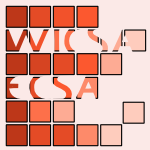 WICSA-ECSA-2009-RaibuletM #adaptation #evaluation #metric
WICSA-ECSA-2009-RaibuletM #adaptation #evaluation #metric- Evaluation of dynamic adaptivity through metrics: an achievable target? (CR, LM), pp. 341–344.
 DRR-2009-AbedM #recognition
DRR-2009-AbedM #recognition- Improvement of Arabic handwriting recognition systems — combination and/or reject ? (HEA, VM), pp. 1–10.
 ECDL-2009-CasarosaTAGSL #education
ECDL-2009-CasarosaTAGSL #education- DL Education in the EU and in the US: Where Are We?, Where Are We Going? (VC, AMT, TAJ, SG, TS, RL), pp. 378–379.
 ECDL-2009-ZhangK #order #retrieval
ECDL-2009-ZhangK #order #retrieval- Searching Archival Finding Aids: Retrieval in Original Order? (JZ, JK), pp. 447–450.
 HT-2009-MirandaG #evolution #how #web
HT-2009-MirandaG #evolution #how #web- How are web characteristics evolving? (JM, DG), pp. 369–370.
 ICDAR-2009-SchenkKR #online #recognition
ICDAR-2009-SchenkKR #online #recognition- Selecting Features in On-Line Handwritten Whiteboard Note Recognition: SFS or SFFS? (JS, MK, GR), pp. 1251–1254.
 JCDL-2009-KulesCBS #interface #what
JCDL-2009-KulesCBS #interface #what- What do exploratory searchers look at in a faceted search interface? (BK, RC, MB, TS), pp. 313–322.
 JCDL-2009-McCownN #facebook #what
JCDL-2009-McCownN #facebook #what- What happens when facebook is gone? (FM, MLN), pp. 251–254.
 SIGMOD-2009-AngelKSS #what
SIGMOD-2009-AngelKSS #what- What’s on the grapevine? (AA, NK, NS, DS), pp. 1047–1050.
 SIGMOD-2009-ChapmanJ #why
SIGMOD-2009-ChapmanJ #why- Why not? (AC, HVJ), pp. 523–534.
 SIGMOD-2009-Chaudhuri #contract #query
SIGMOD-2009-Chaudhuri #contract #query- Query optimizers: time to rethink the contract? (SC), pp. 961–968.
 SIGMOD-2009-DasguptaZDC #database #how #privacy #why
SIGMOD-2009-DasguptaZDC #database #how #privacy #why- Privacy preservation of aggregates in hidden databases: why and how? (AD, NZ, GD, SC), pp. 153–164.
 SIGMOD-2009-MuellerT #database #named #what
SIGMOD-2009-MuellerT #database #named #what- FPGA: what’s in it for a database? (RM, JT), pp. 999–1004.
 VLDB-2009-PereiraRSTWH #using #web
VLDB-2009-PereiraRSTWH #using #web- Answering Web Questions Using Structured Data — Dream or Reality? (FP, AR, SS, WTP, GW, AYH), p. 1646.
 CSEET-2009-BhattacherjeeNM #development #student #testing
CSEET-2009-BhattacherjeeNM #development #student #testing- Are Our Students Prepared for Testing Based Software Development? (VB, MSN, RM), pp. 210–211.
 CSEET-2009-ThompsonE09a #how #student
CSEET-2009-ThompsonE09a #how #student- How Can We Scale-Up Student Admissions and Graduate Completions? (JBT, HME), pp. 298–299.
 EDM-2009-GongRBH #learning #self #student
EDM-2009-GongRBH #learning #self #student- Does Self-Discipline impact students’ knowledge and learning? (YG, DR, JB, NTH), pp. 61–70.
 EDM-2009-Hardof-JaffeHABN #how #student
EDM-2009-Hardof-JaffeHABN #how #student- How do Students Organize Personal Information Spaces? (SHJ, AH, HAK, OB, RN), pp. 250–258.
 ITiCSE-2009-HuangB #approach
ITiCSE-2009-HuangB #approach- A unified approach to introductory computer science: can one size fit all? (TH, AB), pp. 253–257.
 ITiCSE-2009-MitchellPH #what
ITiCSE-2009-MitchellPH #what- Computing science: what do pupils think? (AM, HCP, JH), p. 353.
 ITiCSE-2009-PargasB #what
ITiCSE-2009-PargasB #what- What were they thinking? (RPP, SPB), pp. 134–138.
 ITiCSE-2009-WiesnerB #concept #how #learning
ITiCSE-2009-WiesnerB #concept #how #learning- How do robots foster the learning of basic concepts in informatics? (BW, TB), p. 403.
 SIGITE-2009-Krichen #evolution #learning #online
SIGITE-2009-Krichen #evolution #learning #online- Evolving online learning: can attention to learning styles make it more personal? (JPK), pp. 8–12.
 CSMR-2009-KpodjedoRGA #algorithm #evolution #using
CSMR-2009-KpodjedoRGA #algorithm #evolution #using- Recovering the Evolution Stable Part Using an ECGM Algorithm: Is There a Tunnel in Mozilla? (SK, FR, PG, GA), pp. 179–188.
 ICPC-2009-KagdiP
ICPC-2009-KagdiP - Who can help me with this change request? (HHK, DP), pp. 273–277.
 ICPC-2009-SimRC #comprehension #graph
ICPC-2009-SimRC #comprehension #graph- Structure transition graphs: An ECG for program comprehension? (SES, SR, LC), pp. 303–304.
 ICSM-2009-JiaSYL #data transformation #difference #predict #set
ICSM-2009-JiaSYL #data transformation #difference #predict #set- Data transformation and attribute subset selection: Do they help make differences in software failure prediction? (HJ, FS, YY, QL), pp. 519–522.
 MSR-2009-MaalejH #developer #how #word
MSR-2009-MaalejH #developer #how #word- From work to word: How do software developers describe their work? (WM, HJH), pp. 121–130.
 MSR-2009-RastkarM #interactive #on the #recommendation #what
MSR-2009-RastkarM #interactive #on the #recommendation #what- On what basis to recommend: Changesets or interactions? (SR, GCM), pp. 155–158.
 MSR-2009-ShinBOW #fault #predict
MSR-2009-ShinBOW #fault #predict- Does calling structure information improve the accuracy of fault prediction? (YS, RMB, TJO, EJW), pp. 61–70.
 WCRE-1999-PentaG99a #how #source code
WCRE-1999-PentaG99a #how #source code- Who are Source Code Contributors and How do they Change? (MDP, DMG), pp. 11–20.
 CIAA-2009-LuY #automaton #finite
CIAA-2009-LuY #automaton #finite- Are Statecharts Finite Automata? (HL, SY), pp. 258–261.
 ICALP-v1-2009-FarzanRR
ICALP-v1-2009-FarzanRR - Universal Succinct Representations of Trees? (AF, RR, SSR), pp. 451–462.
 ICALP-v2-2009-BaierBBB #automaton
ICALP-v2-2009-BaierBBB #automaton- When Are Timed Automata Determinizable? (CB, NB, PB, TB), pp. 43–54.
 LATA-2009-Blanchet-SadriABM #how #word
LATA-2009-Blanchet-SadriABM #how #word- How Many Holes Can an Unbordered Partial Word Contain? (FBS, EA, CB, RM), pp. 176–187.
 FM-2009-BonzanniFFK #biology #formal method #what
FM-2009-BonzanniFFK #biology #formal method #what- What Can Formal Methods Bring to Systems Biology? (NB, KAF, WF, EK), pp. 16–22.
 CIG-2009-KemmerlingABPUW #game studies
CIG-2009-KemmerlingABPUW #game studies- Is human-like and well playing contradictory for Diplomacy bots? (MK, NA, NB, MP, SU, WW), pp. 209–216.
 DiGRA-2009-Champion
DiGRA-2009-Champion - Keeping It Reel: Is Machinima A Form Of Art? (EC).
 DiGRA-2009-Johansson #game studies #online #what
DiGRA-2009-Johansson #game studies #online #what- What Makes Online Collectible Card Games Fun to Play? (SJJ).
 VS-Games-2009-SamlasiG
VS-Games-2009-SamlasiG - Machine Ethics for Metaverse Gambling: No Stake in a $24m Market? (AVS, LG), pp. 209–212.
 CHI-2009-GonzalesFD
CHI-2009-GonzalesFD - (Perceived) interactivity: does interactivity increase enjoyment and creative identity in artistic spaces? (ALG, TF, SPD), pp. 415–418.
 CHI-2009-HogganCBK #feedback
CHI-2009-HogganCBK #feedback- Audio or tactile feedback: which modality when? (EEH, AC, SAB, TK), pp. 2253–2256.
 CHI-2009-MaC #communication #how #visual notation
CHI-2009-MaC #communication #how #visual notation- How well do visual verbs work in daily communication for young and old adults? (XM, PRC), pp. 361–364.
 CHI-2009-TangC #communication #mobile
CHI-2009-TangC #communication #mobile- A mobile voice communication system in medical setting: love it or hate it? (CT, MSTC), pp. 2041–2050.
 HCD-2009-Go #design #usability #what
HCD-2009-Go #design #usability #what- What Properties Make Scenarios Useful in Design for Usability? (KG), pp. 193–201.
 HCD-2009-Vartiainen #collaboration #how #multi
HCD-2009-Vartiainen #collaboration #how #multi- Working in Multi-locational Office — How Do Collaborative Working Environments Support? (MV), pp. 1090–1098.
 HCI-NIMT-2009-WechsungESSMM #evaluation #interface #multimodal #usability
HCI-NIMT-2009-WechsungESSMM #evaluation #interface #multimodal #usability- Usability Evaluation of Multimodal Interfaces: Is the Whole the Sum of Its Parts? (IW, KPE, SS, JS, FM, SM), pp. 113–119.
 HCI-NT-2009-TongZ
HCI-NT-2009-TongZ - Are We Trapped by Majority Influences in Electronic Word-of-Mouth? (YT, YZ), pp. 520–529.
 HCI-VAD-2009-JelinSDMB #education #human-computer
HCI-VAD-2009-JelinSDMB #education #human-computer- HCI Professional Involvement in k-12 Education: On Target or Missing the Mark? (MJ, AS, JD, DM, DB), pp. 111–118.
 HCI-VAD-2009-Kroll #named
HCI-VAD-2009-Kroll #named- E-Assessment: A Suitable Alternative for Measuring Competences? (MK), pp. 543–550.
 HIMI-II-2009-AndoM #how #interactive #mobile #motivation #student
HIMI-II-2009-AndoM #how #interactive #mobile #motivation #student- How Mobile Interaction Motivates Students in a Class? (AA, KM), pp. 621–631.
 IDGD-2009-Gould09a #people #usability
IDGD-2009-Gould09a #people #usability- Intercultural Usability Surveys: Do People Always Tell “The Truth”? (EWG), pp. 254–258.
 IDGD-2009-TranL #interface #research
IDGD-2009-TranL #interface #research- Attention to Effects of Different Cross-Cultural Levels in User Research Method’s Interface: Discipline or Nationality — Which Has Stronger Force? (TTT, KPL), pp. 127–134.
 OCSC-2009-CindioP #community #online
OCSC-2009-CindioP #community #online- Are Online Communities Good for the Civic Audit of Public Spaces, Services, and Officers? (FdC, CP), pp. 673–681.
 OCSC-2009-MilettoPHF #web
OCSC-2009-MilettoPHF #web- Who Are the Web Composers? (EMM, MSP, AFH, LVF), pp. 381–390.
 OCSC-2009-OganAKJ #education #game studies #learning #social
OCSC-2009-OganAKJ #education #game studies #learning #social- Antecedents of Attributions in an Educational Game for Social Learning: Who’s to Blame? (AO, VA, JK, CJ), pp. 593–602.
 CAiSE-2009-Wiederhold #how #named #tutorial
CAiSE-2009-Wiederhold #how #named #tutorial- Tutorial: How to Value Software in a Business, and Where Might the Value Go? (GW), pp. 9–10.
 ICEIS-DISI-2009-Missikoff #exclamation #semantics
ICEIS-DISI-2009-Missikoff #exclamation #semantics- Let’s Semanticise the World!!...or not?? (MM), pp. 17–24.
 ICEIS-HCI-2009-TaggB #how #information management #quantum
ICEIS-HCI-2009-TaggB #how #information management #quantum- How Can a Quantum Improvement in Personal and Group Information Management be Realized? (RT, TB), pp. 136–141.
 CIKM-2009-HeCPQMG #detection #evolution #how #topic
CIKM-2009-HeCPQMG #detection #evolution #how #topic- Detecting topic evolution in scientific literature: how can citations help? (QH, BC, JP, BQ, PM, CLG), pp. 957–966.
 CIKM-2009-KementsietsidisW #evaluation #query #what
CIKM-2009-KementsietsidisW #evaluation #query #what- Provenance query evaluation: what’s so special about it? (AK, MW), pp. 681–690.
 CIKM-2009-WangML #learning #programming #rank #search-based #using
CIKM-2009-WangML #learning #programming #rank #search-based #using- Learning to rank using evolutionary computation: immune programming or genetic programming? (SW, JM, JL), pp. 1879–1882.
 ECIR-2009-Kettunen #metric #source code
ECIR-2009-Kettunen #metric #source code- Choosing the Best MT Programs for CLIR Purposes — Can MT Metrics Be Helpful? (KK), pp. 706–712.
 ECIR-2009-Rijke #what
ECIR-2009-Rijke #what- Searching User Generated Content: What’s Next? (MdR), p. 2.
 ICML-2009-Cortes #kernel #learning #performance
ICML-2009-Cortes #kernel #learning #performance- Invited talk: Can learning kernels help performance? (CC), p. 1.
 ICML-2009-NguyenEB #clustering #comparison #metric
ICML-2009-NguyenEB #clustering #comparison #metric- Information theoretic measures for clusterings comparison: is a correction for chance necessary? (XVN, JE, JB), pp. 1073–1080.
 KDD-2009-WangCWPBGZ #independence
KDD-2009-WangCWPBGZ #independence- Can we learn a template-independent wrapper for news article extraction from a single training site? (JW, CC, CW, JP, JB, ZG, WVZ), pp. 1345–1354.
 KEOD-2009-Kop #concept #ontology #owl #what
KEOD-2009-Kop #concept #ontology #owl #what- What are Main Concepts in an OWL Domain Ontology? (CK), pp. 404–407.
 MLDM-2009-Hoppner #how
MLDM-2009-Hoppner #how- How Much True Structure Has Been Discovered? (FH), pp. 385–397.
 RecSys-2009-NanopoulosRI #collaboration #how
RecSys-2009-NanopoulosRI #collaboration #how- How does high dimensionality affect collaborative filtering? (AN, MR, MI), pp. 293–296.
 SEKE-2009-AbranC #estimation #modelling #multi
SEKE-2009-AbranC #estimation #modelling #multi- Software Estimation: Universal Models or Multiple Models? (AA, JJCG), pp. 625–630.
 SIGIR-2009-ArmstrongMWZ #ad hoc #retrieval
SIGIR-2009-ArmstrongMWZ #ad hoc #retrieval- Has adhoc retrieval improved since 1994? (TGA, AM, WW, JZ), pp. 692–693.
 SIGIR-2009-HauffA #effectiveness #performance #predict #query
SIGIR-2009-HauffA #effectiveness #performance #predict #query- When is query performance prediction effective? (CH, LA), pp. 829–830.
 SIGIR-2009-MacdonaldOS
SIGIR-2009-MacdonaldOS - Is spam an issue for opinionated blog post search? (CM, IO, IS), pp. 710–711.
 SIGIR-2009-ZhangL #query #web #what
SIGIR-2009-ZhangL #query #web #what- What queries are likely to recur in web search? (DZ, JL), pp. 827–828.
 ECMDA-FA-2009-Trew #embedded #platform
ECMDA-FA-2009-Trew #embedded #platform- Creating Embedded Platforms with MDA: Where’s the Sweet Spot? (TT), p. 1.
 MoDELS-2009-Mellor #modelling #what
MoDELS-2009-Mellor #modelling #what- Models. Models. Models. So What? (SJM), p. 1.
 MoDELS-2009-Mellor #modelling #what
MoDELS-2009-Mellor #modelling #what- Models. Models. Models. So What? (SJM), p. 1.
 ECOOP-2009-GilS
ECOOP-2009-GilS - Are We Ready for a Safer Construction Environment? (JYG, TS), pp. 495–519.
 PEPM-2009-Gluck
PEPM-2009-Gluck - Is there a fourth Futamura projection? (RG), pp. 51–60.
 REFSQ-2009-LiRFM #clustering #composition #design #requirements
REFSQ-2009-LiRFM #clustering #composition #design #requirements- Does Requirements Clustering Lead to Modular Design? (ZL, QAR, RF, NHM), pp. 233–239.
 ICSE-2009-JurgensDHW #matter
ICSE-2009-JurgensDHW #matter- Do code clones matter? (EJ, FD, BH, SW), pp. 485–495.
 SAC-2009-EckartzDWH #enterprise #how
SAC-2009-EckartzDWH #enterprise #how- Cross-organizational ERP management: how to create a successful business case? (SE, MD, RW, JvH), pp. 1599–1604.
 SAC-2009-GroverS #architecture #automation #java #named #quality
SAC-2009-GroverS #architecture #automation #java #named #quality- GenQA: automated addition of architectural quality attribute support for Java software? (SG, NS), pp. 483–487.
 SLE-2009-Bezivin #problem #what
SLE-2009-Bezivin #problem #what- If MDE Is the Solution, Then What Is the Problem? (JB), p. 2.
 DAC-2009-BorgstromHWADCMCN #hardware #hybrid #prototype
DAC-2009-BorgstromHWADCMCN #hardware #hybrid #prototype- System prototypes: virtual, hardware or hybrid? (TB, EH, RW, DA, AD, RC, OM, CC, AN), pp. 1–3.
 DAC-2009-CongNPJBGRRS
DAC-2009-CongNPJBGRRS - Moore’s Law: another casualty of the financial meltdown? (JC, NSN, RP, WHJ, JB, MG, RR, PR, HS), pp. 202–203.
 DAC-2009-HaritanKJERRG
DAC-2009-HaritanKJERRG - EDA in flux: should I stay or should I go? (EH, AK, TJ, JE, JMR, RR, NG), pp. 91–92.
 DAC-2009-RedfordSSHZM #named
DAC-2009-RedfordSSHZM #named- DFM: don’t care or competitive weapon? (MR, JS, PS, CH, YZ, KM), pp. 296–297.
 DAC-2009-Thaker #verification
DAC-2009-Thaker #verification- Holistic verification: myth or magic bullet? (PAT), pp. 204–208.
 DAC-2009-YingKKGGOTW #how
DAC-2009-YingKKGGOTW #how- Guess, solder, measure, repeat: how do I get my mixed-signal chip right? (GY, AK, KSK, GGEG, EG, MO, ST, WW), pp. 520–521.
 DATE-2009-Fujita #challenge #design
DATE-2009-Fujita #challenge #design- Nano-electronics challenge chip designers meet real nano-electronics in 2010s? (SF), pp. 431–432.
 DATE-2009-MarinissenLHSMSP #testing
DATE-2009-MarinissenLHSMSP #testing- Contactless testing: Possibility or pipe-dream? (EJM, DYL, JPH, CS, BM, SS, LP), pp. 676–681.
 DATE-2009-Muller #design
DATE-2009-Muller #design- Has anything changed in electronic design since 1983? (MM), p. 1.
 PPoPP-2009-KulkarniBIPC #how #parallel
PPoPP-2009-KulkarniBIPC #how #parallel- How much parallelism is there in irregular applications? (MK, MB, RI, KP, CC), pp. 3–14.
 WRLA-2008-HolzlMW09 #constraints
WRLA-2008-HolzlMW09 #constraints- Which Soft Constraints do you Prefer? (MMH, MM, MW), pp. 189–205.
 ESOP-2009-Eber #contract #design #programming language #specification #tool support #what
ESOP-2009-Eber #contract #design #programming language #specification #tool support #what- The Financial Crisis, a Lack of Contract Specification Tools: What Can Finance Learn from Programming Language Design? (JME), pp. 205–206.
 STOC-2009-Goldwasser #source code
STOC-2009-Goldwasser #source code- Athena lecture: Controlling Access to Programs? (SG), pp. 167–168.
 STOC-2009-MontenegroT #how
STOC-2009-MontenegroT #how- How long does it take to catch a wild kangaroo? (RM, PT), pp. 553–560.
 CADE-2009-GregoireMP #set
CADE-2009-GregoireMP #set- Does This Set of Clauses Overlap with at Least One MUS? (ÉG, BM, CP), pp. 100–115.
 CAV-2009-Benini #manycore #performance #predict
CAV-2009-Benini #manycore #performance #predict- Predictability vs. Efficiency in the Multicore Era: Fight of Titans or Happy Ever after? (LB), p. 50.
 SAT-2009-BertholdHP #optimisation #pseudo
SAT-2009-BertholdHP #optimisation #pseudo- Nonlinear Pseudo-Boolean Optimization: Relaxation or Propagation? (TB, SH, MEP), pp. 441–446.
 SAT-2009-BeyersdorffM
SAT-2009-BeyersdorffM - Does Advice Help to Prove Propositional Tautologies? (OB, SM), pp. 65–72.
 TAP-2009-Gladisch #contract #invariant
TAP-2009-Gladisch #contract #invariant- Could We Have Chosen a Better Loop Invariant or Method Contract? (CG), pp. 74–89.
 WICSA-2008-CimpanC #design pattern #reuse
WICSA-2008-CimpanC #design pattern #reuse- Can Styles Improve Architectural Pattern Reuse? (SC, VC), pp. 263–266.
 ECDL-2008-RazikinGCL #social #what
ECDL-2008-RazikinGCL #social #what- Can Social Tags Help You Find What You Want? (KR, DHLG, AYKC, CSL), pp. 50–61.
 HT-2008-ChoudhurySJS08a #communication #correlation #process
HT-2008-ChoudhurySJS08a #communication #correlation #process- Can blog communication dynamics be correlated with stock market activity? (MDC, HS, AJ, DDS), pp. 55–60.
 JCDL-2008-Ray #education
JCDL-2008-Ray #education- Education for digital stewardship: librarians, archivists or curators? (JR), pp. 441–442.
 SIGMOD-2008-AbadiMH #how
SIGMOD-2008-AbadiMH #how- Column-stores vs. row-stores: how different are they really? (DJA, SM, NH), pp. 967–980.
 VLDB-2008-BlottW #similarity #what
VLDB-2008-BlottW #similarity #what- What’s wrong with high-dimensional similarity search? (SB, RW), p. 3.
 VLDB-2008-DittrichBS #how
VLDB-2008-DittrichBS #how- Dwarfs in the rearview mirror: how big are they really? (JD, LB, MAVS), pp. 1586–1597.
 VLDB-2008-Hill #memory management #transaction
VLDB-2008-Hill #memory management #transaction- Is transactional memory an oxymoron? (MDH), p. 1.
 VLDB-2008-HoseKMS
VLDB-2008-HoseKMS - When is it time to rethink the aggregate configuration of your OLAP server? (KH, DK, MM, KUS), pp. 1492–1495.
 CSEET-2008-Cowling #student
CSEET-2008-Cowling #student- Where Do Students Look for Information? (AJC), pp. 207–214.
 EDM-2008-FengBHK #predict
EDM-2008-FengBHK #predict- Can an Intelligent Tutoring System Predict Math Proficiency as Well as a Standarized Test? (MF, JEB, NTH, KRK), pp. 107–116.
 EDM-2008-FengHBK #predict #student
EDM-2008-FengHBK #predict #student- Can we predict which groups of questions students will learn from? (MF, NTH, JEB, KRK), pp. 218–225.
 EDM-2008-MathewsM #concept #student
EDM-2008-MathewsM #concept #student- Do Students Who See More Concepts in an ITS Learn More? (MM, TM), pp. 266–273.
 ITiCSE-2008-CaspersenCDPST #education #what
ITiCSE-2008-CaspersenCDPST #education #what- What is masters level education in informatics? (MEC, LNC, GD, AP, SS, HT), p. 341.
 ITiCSE-2008-ChidanandanS #learning
ITiCSE-2008-ChidanandanS #learning- Adopting pen-based technology to facilitate active learning in the classroom: is it right for you? (AC, SMS), p. 343.
 ITiCSE-2008-DorgeS #what
ITiCSE-2008-DorgeS #what- What are information technology’s key qualifications? (CD, CS), pp. 296–300.
 CSMR-2008-KhomhG #design pattern #quality
CSMR-2008-KhomhG #design pattern #quality- Do Design Patterns Impact Software Quality Positively? (FK, YGG), pp. 274–278.
 ICSM-2008-BettenburgPZK #debugging #harmful
ICSM-2008-BettenburgPZK #debugging #harmful- Duplicate bug reports considered harmful ... really? (NB, RP, TZ, SK), pp. 337–345.
 ICSM-2008-KagdiHM #source code
ICSM-2008-KagdiHM #source code- Who can help me with this source code change? (HHK, MH, JIM), pp. 157–166.
 SCAM-2008-Krinke
SCAM-2008-Krinke - Is Cloned Code More Stable than Non-cloned Code? (JK), pp. 57–66.
 CIAA-2008-PaunPR
CIAA-2008-PaunPR - Hopcroft’s Minimization Technique: Queues or Stacks? (AP, MP, ARP), pp. 78–91.
 DLT-2008-CsimaK #decidability #reachability
DLT-2008-CsimaK #decidability #reachability- When Is Reachability Intrinsically Decidable? (BFC, BK), pp. 216–227.
 ICALP-B-2008-GomezGP #commutative
ICALP-B-2008-GomezGP #commutative- When Does Partial Commutative Closure Preserve Regularity? (ACG, GG, JÉP), pp. 209–220.
 ICALP-C-2008-DingDYCC
ICALP-C-2008-DingDYCC - Could SFLASH be Repaired? (JD, VD, BYY, CHOC, CMC), pp. 691–701.
 LATA-2008-MoczuradM #how #set
LATA-2008-MoczuradM #how #set- How Many Figure Sets Are Codes? (MM, WM), pp. 385–396.
 CIG-2008-BakerCRJ #evolution #modelling
CIG-2008-BakerCRJ #evolution #modelling- Can opponent models aid poker player evolution? (RJSB, PIC, TWGR, PJ0), pp. 23–30.
 GDCSE-2008-BaylissB #design #development #game studies #student
GDCSE-2008-BaylissB #design #development #game studies #student- Game design and development students: who are they? (JDB, KB), pp. 6–10.
 CHI-2008-BalakrishnanFK #collaboration #visualisation
CHI-2008-BalakrishnanFK #collaboration #visualisation- Do visualizations improve synchronous remote collaboration? (ADB, SRF, SBK), pp. 1227–1236.
 CHI-2008-LeongHV #named
CHI-2008-LeongHV #named- Choice: abidcating or exercising? (TWL, SH, FV), pp. 715–724.
 CHI-2008-PetrelliWB #named #physics #what
CHI-2008-PetrelliWB #named #physics #what- AutoTypography: what can physical mementos tell us about digital memories? (DP, SW, JB), pp. 53–62.
 CSCW-2008-KalnikaiteW #feedback #social #speech #summary
CSCW-2008-KalnikaiteW #feedback #social #speech #summary- Social summarization: does social feedback improve access to speech data? (VK, SW), pp. 9–12.
 CAiSE-2008-WohedRHAA #open source #workflow
CAiSE-2008-WohedRHAA #open source #workflow- Open Source Workflow: A Viable Direction for BPM? (PW, NR, AHMtH, BA, WMPvdA), pp. 583–586.
 ICEIS-ISAS2-2008-Tagg
ICEIS-ISAS2-2008-Tagg - Is there a Role for Philosophy in Group Work Support? (RT), pp. 89–96.
 ICEIS-J-2008-BrissonC08a #data mining #how #mining #process #semantics
ICEIS-J-2008-BrissonC08a #data mining #how #mining #process #semantics- How to Semantically Enhance a Data Mining Process? (LB, MC), pp. 103–116.
 ICEIS-SAIC-2008-BninaCNA #trust #what
ICEIS-SAIC-2008-BninaCNA #trust #what- What Can Context Do for Trust in Manets? (EBB, OC, CTN, HKBA), pp. 133–141.
 CIKM-2008-AbelHK #folksonomy #ranking
CIKM-2008-AbelHK #folksonomy #ranking- Ranking in folksonomy systems: can context help? (FA, NH, DK), pp. 1429–1430.
 CIKM-2008-BischoffFNP
CIKM-2008-BischoffFNP - Can all tags be used for search? (KB, CSF, WN, RP), pp. 193–202.
 CIKM-2008-DouSYW #learning #ranking #web
CIKM-2008-DouSYW #learning #ranking #web- Are click-through data adequate for learning web search rankings? (ZD, RS, XY, JRW), pp. 73–82.
 CIKM-2008-RadlinskiKJ #how #quality #retrieval
CIKM-2008-RadlinskiKJ #how #quality #retrieval- How does clickthrough data reflect retrieval quality? (FR, MK, TJ), pp. 43–52.
 CIKM-2008-ZhuSYW #process #query
CIKM-2008-ZhuSYW #process #query- Can phrase indexing help to process non-phrase queries? (MZ, SS, NY, JRW), pp. 679–688.
 ECIR-2008-Mizzaro #evaluation #information retrieval
ECIR-2008-Mizzaro #evaluation #information retrieval- The Good, the Bad, the Difficult, and the Easy: Something Wrong with Information Retrieval Evaluation? (SM), pp. 642–646.
 ICPR-2008-GuoFDH #classification #estimation
ICPR-2008-GuoFDH #classification #estimation- Head pose estimation: Classification or regression? (GG, YF, CRD, TSH), pp. 1–4.
 KDD-2008-MeloAL #behaviour #metric #network #predict
KDD-2008-MeloAL #behaviour #metric #network #predict- Can complex network metrics predict the behavior of NBA teams? (POSVdM, VAFA, AAFL), pp. 695–703.
 KR-2008-KontchakovWZ #difference #ontology
KR-2008-KontchakovWZ #difference #ontology- Can You Tell the Difference Between DL-Lite Ontologies? (RK, FW, MZ), pp. 285–295.
 RecSys-2008-AgrahriMR #people
RecSys-2008-AgrahriMR #people- Can people collaborate to improve the relevance of search results? (AKA, DATM, JR), pp. 283–286.
 SIGIR-2008-Al-MaskariSCA #effectiveness #predict
SIGIR-2008-Al-MaskariSCA #effectiveness #predict- The good and the bad system: does the test collection predict users’ effectiveness? (AAM, MS, PDC, EA), pp. 59–66.
 SIGIR-2008-MojdehC
SIGIR-2008-MojdehC - Semi-supervised spam filtering: does it work? (MM, GVC), pp. 745–746.
 ICMT-2008-AmstelBPV #algebra #modelling #process #semantic gap #state machine #uml
ICMT-2008-AmstelBPV #algebra #modelling #process #semantic gap #state machine #uml- Transforming Process Algebra Models into UML State Machines: Bridging a Semantic Gap? (MvA, MvdB, ZP, TV), pp. 61–75.
 OOPSLA-2008-SmithC #java #type inference
OOPSLA-2008-SmithC #java #type inference- Java type inference is broken: can we fix it? (DS, RC), pp. 505–524.
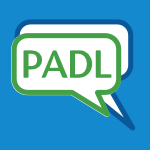 PADL-2008-BecketS #definite clause grammar #parsing
PADL-2008-BecketS #definite clause grammar #parsing- DCGs + Memoing = Packrat Parsing but Is It Worth It? (RB, ZS), pp. 182–196.
 SIGAda-2008-GiccaB
SIGAda-2008-GiccaB - GNAT BoF: where would you like to see GNAT go? (GG, BMB), pp. 139–140.
 SIGAda-2008-Tokar #years after
SIGAda-2008-Tokar #years after- 30 years after steelman, does DoD still have a software crisis? (JT), pp. 9–10.
 RE-2008-Alexander #design #how #requirements #statistics
RE-2008-Alexander #design #how #requirements #statistics- Evaluating Design Options against Requirements: How Far Can Statistics Help? (IA), pp. 259–264.
 RE-2008-KaindlCPSZ #design #how #interactive #requirements
RE-2008-KaindlCPSZ #design #how #interactive #requirements- How to Combine Requirements Engineering and Interaction Design? (HK, LLC, OP, AGS, DZ), pp. 299–301.
 REFSQ-2008-RegnellBW #complexity #requirements #scalability
REFSQ-2008-RegnellBW #complexity #requirements #scalability- Can We Beat the Complexity of Very Large-Scale Requirements Engineering? (BR, RBS, KW), pp. 123–128.
 REFSQ-2008-ZachosMH #requirements #specification #web #web service
REFSQ-2008-ZachosMH #requirements #specification #web #web service- Discovering Web Services to Improve Requirements Specifications: Does It Help? (KZ, NAMM, RHM), pp. 168–182.
 ASE-2008-GibbsBSDC #automation
ASE-2008-GibbsBSDC #automation- Living with the Law: Can Automation give us Moore with Less? (CG, JB, NS, MD, YC), pp. 395–398.
 FSE-2008-BettenburgJSWPZ #debugging #what
FSE-2008-BettenburgJSWPZ #debugging #what- What makes a good bug report? (NB, SJ, AS, CW, RP, TZ), pp. 308–318.
 FSE-2008-PinzgerNM #developer #network #predict
FSE-2008-PinzgerNM #developer #network #predict- Can developer-module networks predict failures? (MP, NN, BM), pp. 2–12.
 SAC-2008-MandlWNF #how #information retrieval #multi #robust
SAC-2008-MandlWNF #how #information retrieval #multi #robust- How robust are multilingual information retrieval systems? (TM, CWH, GMDN, NF), pp. 1132–1136.
 DAC-2008-Haensch #3d #integration #why
DAC-2008-Haensch #3d #integration #why- Why should we do 3D integration? (WH), pp. 674–675.
 DAC-2008-HaritanHYPWNWM #challenge #design #exclamation #manycore #what
DAC-2008-HaritanHYPWNWM #challenge #design #exclamation #manycore #what- Multicore design is the challenge! what is the solution? (EH, TH, HY, PGP, WW, AN, DW, MM), pp. 128–130.
 DAC-2008-MattsonW #parallel #programming
DAC-2008-MattsonW #parallel #programming- Parallel programming: can we PLEASE get it right this time? (TM, MW), pp. 7–11.
 DAC-2008-PuriVEWFYK #problem
DAC-2008-PuriVEWFYK #problem- Keeping hot chips cool: are IC thermal problems hot air? (RP, DV, DE, AJW, PDF, AY, SVK), pp. 634–635.
 DAC-2008-ReyKRCVKT #challenge #generative #multi
DAC-2008-ReyKRCVKT #challenge #generative #multi- Next generation wireless-multimedia devices: who is up for the challenge? (JCR, AK, JMR, CC, TV, IK, TBT), pp. 353–354.
 DAC-2008-ReyNKKAHCS
DAC-2008-ReyNKKAHCS - DFM in practice: hit or hype? (JCR, NSN, ABK, FK, RA, CH, LC, VS), pp. 898–899.
 DAC-2008-YagiRKHTMSDM
DAC-2008-YagiRKHTMSDM - ESL hand-off: fact or EDA fiction? (HY, WR, TK, EH, HT, MM, GS, ND, GM), pp. 310–312.
 PPoPP-2008-Mellor-Crummey #thread
PPoPP-2008-Mellor-Crummey #thread- Where will all the threads come from? (JMMC), pp. 259–260.
 FoSSaCS-2008-HabermehlIV #array #decidability #integer #what
FoSSaCS-2008-HabermehlIV #array #decidability #integer #what- What Else Is Decidable about Integer Arrays? (PH, RI, TV), pp. 474–489.
 STOC-2008-Raghavendra #algorithm #csp
STOC-2008-Raghavendra #algorithm #csp- Optimal algorithms and inapproximability results for every CSP? (PR), pp. 245–254.
 CAV-2008-KupferschmidWNP #performance
CAV-2008-KupferschmidWNP #performance- Faster Than Uppaal? (SK, MW, BN, AP), pp. 552–555.
 ICLP-2008-Eiter
ICLP-2008-Eiter - SMS and ASP: Hype or TST? (TE), pp. 77–82.
 ICLP-2008-Marek #programming #set
ICLP-2008-Marek #programming #set- Quo Vadis Answer Set Programming? (VWM), pp. 83–87.
 ICST-2008-PichlerR #how #user interface #visual notation
ICST-2008-PichlerR #how #user interface #visual notation- How to Test the Intangible Properties of Graphical User Interfaces? (JP, RR), pp. 494–497.
 SAT-2008-SchederZ #how #satisfiability
SAT-2008-SchederZ #how #satisfiability- How Many Conflicts Does It Need to Be Unsatisfiable? (DS, PZ), pp. 246–256.
 TAP-2008-WeyukerO #fault #predict #what
TAP-2008-WeyukerO #fault #predict #what- What Can Fault Prediction Do for YOU? (EJW, TJO), pp. 18–29.
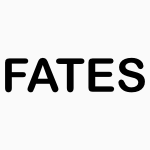 TestCom-FATES-2008-Baker #effectiveness #modelling #testing
TestCom-FATES-2008-Baker #effectiveness #modelling #testing- Models and Testing — A Recipe for Improved Effectiveness? (PB), pp. 5–6.
 VMCAI-2008-DimitrovaP #abstraction #lazy evaluation #protocol
VMCAI-2008-DimitrovaP #abstraction #lazy evaluation #protocol- Is Lazy Abstraction a Decision Procedure for Broadcast Protocols? (RD, AP), pp. 98–111.
 CBSE-2007-Folmer #component #development #game studies
CBSE-2007-Folmer #component #development #game studies- Component Based Game Development — A Solution to Escalating Costs and Expanding Deadlines? (EF), pp. 66–73.
 ECSA-2007-Papazoglou #what
ECSA-2007-Papazoglou #what- What’s in a Service? (MPP), pp. 11–28.
 WICSA-2007-FalessiCK #architecture #design
WICSA-2007-FalessiCK #architecture #design- Do Architecture Design Methods Meet Architects’ Needs? (DF, GC, PK), p. 5.
 HT-2007-schraefel #semantics #web #what #why
HT-2007-schraefel #semantics #web #what #why- What is an analogue for the semantic web and why is having one important? (MMCS), pp. 123–132.
 ICDAR-2007-Shapiro #how #image
ICDAR-2007-Shapiro #how #image- How to Reduce the Size of Bank Check Image Archive? (VS), pp. 148–152.
 JCDL-2007-MarshallRC #education #semantics #standard
JCDL-2007-MarshallRC #education #semantics #standard- Standards or semantics for curriculum search? (BM, RFR, MNC), pp. 181–182.
 JCDL-2007-YanbeJNT #social #web
JCDL-2007-YanbeJNT #social #web- Can social bookmarking enhance search in the web? (YY, AJ, SN, KT), pp. 107–116.
 PODS-2007-WhiteRGD #what
PODS-2007-WhiteRGD #what- What is “next” in event processing? (WMW, MR, JG, AJD), pp. 263–272.
 VLDB-2007-Amer-YahiaH #database #web #what
VLDB-2007-Amer-YahiaH #database #web #what- What does Web 2.0 have to do with databases? (SAY, AYH), p. 1443.
 VLDB-2007-IvesDR #adaptation #how #query #what #why
VLDB-2007-IvesDR #adaptation #how #query #what #why- Adaptive query processing: Why, How, When, and What Next? (ZGI, AD, VR), pp. 1426–1427.
 VLDB-2007-JohnsonHPMHSAF
VLDB-2007-JohnsonHPMHSAF - To Share or Not To Share? (RJ, NH, IP, NM, SH, KS, AA, BF), pp. 351–362.
 VLDB-2007-ManolescuM #assessment #database #evaluation #performance #research
VLDB-2007-ManolescuM #assessment #database #evaluation #performance #research- Performance Evaluation and Experimental Assessment — Conscience or Curse of Database Research? (IM, SM), pp. 1441–1442.
 CSEET-2007-WilliamsL #why
CSEET-2007-WilliamsL #why- Lab Partners: If They’re Good Enough for the Natural Sciences, Why Aren’t They Good Enough for Us? (LW, LL), pp. 72–82.
 ITiCSE-2007-Kuyl
ITiCSE-2007-Kuyl - Where have all the computer scientists gone? (CvdK), p. 2.
 ITiCSE-2007-LarssonAKE #evaluation #what
ITiCSE-2007-LarssonAKE #evaluation #what- What impacts course evaluation? (EL, MA, DK, PE), p. 333.
 ITiCSE-2007-LeidlR #how #learning
ITiCSE-2007-LeidlR #how #learning- How will future learning work in the third dimension? (ML, GR), p. 329.
 ITiCSE-2007-PauHW #experience #how #self #women
ITiCSE-2007-PauHW #experience #how #self #women- Women in computing: how does experience influence self-perception of computing careers? (RP, WH, SW), p. 349.
 ITiCSE-2007-SloanNS #design #education #how
ITiCSE-2007-SloanNS #design #education #how- How should inclusivity influence teaching of ict design? (DS, BN, MS), pp. 307–308.
 CSMR-2007-SavgaRSLW #api #how
CSMR-2007-SavgaRSLW #api #how- API Changes — How Far Would You Go? (IS, MR, JŚ, JL, HW), pp. 329–330.
 MSR-2007-WeissPZZ #debugging #how
MSR-2007-WeissPZZ #debugging #how- How Long Will It Take to Fix This Bug? (CW, RP, TZ, AZ), p. 1.
 DLT-2007-Kunc #equation #what
DLT-2007-Kunc #equation #what- What Do We Know About Language Equations? (MK), pp. 23–27.
 CIG-2007-GallagherL #evolution
CIG-2007-GallagherL #evolution- Evolving Pac-Man Players: Can We Learn from Raw Input? (MG, ML), pp. 282–287.
 CIG-2007-GreenspanLLGZADJ #game studies #towards
CIG-2007-GreenspanLLGZADJ #game studies #towards- Toward a Competitive Pool Playing Robot: Is Computational Intelligence Needed to Play Robotic Pool? (MAG, JL, WL, MG, IZ, KA, DCD, SJ), pp. 380–388.
 DiGRA-2007-MacBride #game studies
DiGRA-2007-MacBride #game studies- The Primordial Economics of Cheating: Trading Skill for Glory or Vital Steps to Evolved Play? (RM).
 DiGRA-2007-MitchellC #game studies #music
DiGRA-2007-MitchellC #game studies #music- Videogame Music: chiptunes byte back? (GM, AC).
 DiGRA-2007-SusiR #game studies
DiGRA-2007-SusiR #game studies- Situated Play - Just a Temporary Blip? (TS, JR).
 DiGRA-2007-Wirman #game studies
DiGRA-2007-Wirman #game studies- “I am not a fan, I just play a lot” - If Power Gamers Aren't Fans, Who Are? (HW).
 CHI-2007-LindgaardC #testing #usability #what
CHI-2007-LindgaardC #testing #usability #what- Usability testing: what have we overlooked? (GL, JC), pp. 1415–1424.
 CHI-2007-ShehanE #human-computer #network #what
CHI-2007-ShehanE #human-computer #network #what- Home networking and HCI: what hath god wrought? (ES, WKE), pp. 547–556.
 DHM-2007-SadasivanG
DHM-2007-SadasivanG - Can We Use Technology to Train Inspectors to Be More Systematic? (SS, AKG), pp. 959–968.
 HCI-AS-2007-Furukawa #challenge #effectiveness #fault #injection #what
HCI-AS-2007-Furukawa #challenge #effectiveness #fault #injection #what- Challenge for Preventing Medication Errors -Learn from Errors- : What Is the Most Effective Label Display to Prevent Medication Error for Injectable Drug ? (HF), pp. 437–442.
 HCI-AS-2007-Shrimpton-SmithZ #design #web
HCI-AS-2007-Shrimpton-SmithZ #design #web- Does the Web Design Disconnect the Emotional Connection? (TSS, BZ), pp. 1009–1018.
 HCI-IDU-2007-BevanS #guidelines #standard #usability #web
HCI-IDU-2007-BevanS #guidelines #standard #usability #web- Are Guidelines and Standards for Web Usability Comprehensive? (NB, LS), pp. 407–419.
 HCI-MIE-2007-GratchWOLMWM
HCI-MIE-2007-GratchWOLMWM - Can Virtual Humans Be More Engaging Than Real Ones? (JG, NW, AO, FL, MM, RJvdW, LPM), pp. 286–297.
 HCI-MIE-2007-Navarro-PrietoB #community #video
HCI-MIE-2007-Navarro-PrietoB #community #video- Can Video Support City-Based Communities? (RNP, NB), pp. 933–942.
 HIMI-IIE-2007-AkessonE #how #ubiquitous
HIMI-IIE-2007-AkessonE #how #ubiquitous- The Vision of Ubiquitous Media Services: How Close Are We? (MÅ, CIE), pp. 222–232.
 HIMI-IIE-2007-VuGNSCCP #online #privacy #what
HIMI-IIE-2007-VuGNSCCP #online #privacy #what- Examining User Privacy Practices While Shopping Online: What Are Users Looking for? (KPLV, FPG, DN, JS, BC, VC, RWP), pp. 792–801.
 ICEIS-AIDSS-2007-SotoVPP #information management #what
ICEIS-AIDSS-2007-SotoVPP #information management #what- Knowledge Management Systems with Reputation and Intuition — What for? (JPS, AV, JPR, MP), pp. 498–503.
 ICML-2007-Werner #algorithm #consistency #what
ICML-2007-Werner #algorithm #consistency #what- What is decreased by the max-sum arc consistency algorithm? (TW), pp. 1007–1014.
 RecSys-2007-Vuorikari #education #information retrieval #reuse #social #using
RecSys-2007-Vuorikari #education #information retrieval #reuse #social #using- Can social information retrieval enhance the discovery and reuse of digital educational content? (RV), pp. 207–210.
 SEKE-2007-AlencarWSF #deployment #game studies #information management
SEKE-2007-AlencarWSF #deployment #game studies #information management- Do Neural-Network Question-Answering Systems Have a Role to Play in the Deployment of Real World Information Systems? (AJA, RCW, EAS, ALF), pp. 386–391.
 SIGIR-2007-Al-Maskari #effectiveness #how #information retrieval #interactive #metric
SIGIR-2007-Al-Maskari #effectiveness #how #information retrieval #interactive #metric- Beyond classical measures: how to evaluate the effectiveness of interactive information retrieval system? (AAM), p. 915.
 SIGIR-2007-HuffmanH #how #predict
SIGIR-2007-HuffmanH #how #predict- How well does result relevance predict session satisfaction? (SBH, MH), pp. 567–574.
 SIGIR-2007-KampsKL #documentation #xml
SIGIR-2007-KampsKL #documentation #xml- Where to start reading a textual XML document? (JK, MK, ML), pp. 723–724.
 SIGIR-2007-LinYC #what
SIGIR-2007-LinYC #what- What emotions do news articles trigger in their readers? (KHYL, CY, HHC), pp. 733–734.
 SIGIR-2007-NajorkZT #how #web
SIGIR-2007-NajorkZT #how #web- Hits on the web: how does it compare? (MN, HZ, MJT), pp. 471–478.
 SIGAda-2007-Dewar07a #named
SIGAda-2007-Dewar07a #named- Birds-of-a-feather: where would you like to see GNAT go? (RD), pp. 97–98.
 SIGAda-2007-Nyberg #manycore
SIGAda-2007-Nyberg #manycore- Multi-core + multi-tasking = multi-opportunity? (KAN), pp. 79–82.
 RE-2007-KamataT #how #quality #requirements
RE-2007-KamataT #how #quality #requirements- How Does Requirements Quality Relate to Project Success or Failure? (MIK, TT), pp. 69–78.
 ESEC-FSE-2007-FritzMH #process
ESEC-FSE-2007-FritzMH #process- Does a programmer’s activity indicate knowledge of code? (TF, GCM, EH), pp. 341–350.
 ESEC-FSE-2007-KimE
ESEC-FSE-2007-KimE - Which warnings should I fix first? (SK, MDE), pp. 45–54.
 ICSE-2007-NgCCY #design pattern #effectiveness #maintenance
ICSE-2007-NgCCY #design pattern #effectiveness #maintenance- Do Maintainers Utilize Deployed Design Patterns Effectively? (THN, SCC, WKC, YTY), pp. 168–177.
 SAC-2007-Al-Fedaghi #how
SAC-2007-Al-Fedaghi #how- How sensitive is your personal information? (SSAF), pp. 165–169.
 SAC-2007-KoschmiderO #detection #how #process #semantics
SAC-2007-KoschmiderO #detection #how #process #semantics- How to detect semantic business process model variants? (AK, AO), pp. 1263–1264.
 GPCE-2007-Puschel #education #library #performance
GPCE-2007-Puschel #education #library #performance- Can we teach computers to write fast libraries? (MP), pp. 1–2.
 DAC-2007-BacchiniHFRLTPZ #verification
DAC-2007-BacchiniHFRLTPZ #verification- Verification Coverage: When is Enough, Enough? (FB, AJH, TF, RR, DL, MT, AP, AZ), pp. 744–745.
 DAC-2007-IrvineL #hardware
DAC-2007-IrvineL #hardware- Trusted Hardware: Can It Be Trustworthy? (CEI, KNL), pp. 1–4.
 DAC-2007-KamhiMMNWKMKC #design #power management #validation
DAC-2007-KamhiMMNWKMKC #design #power management #validation- Early Power-Aware Design & Validation: Myth or Reality? (GK, SM, SBM, WN, YCW, JK, EM, SVK, SC), pp. 210–211.
 DAC-2007-SarnoHLLLRCLY #manycore #named
DAC-2007-SarnoHLLLRCLY #manycore #named- Corezilla: Build and Tame the Multicore Beast? (LS, WmWH, CL, ML, JRL, JR, GC, CL, TY), pp. 632–633.
 DATE-2007-AycinenaBLMGW #open source #towards
DATE-2007-AycinenaBLMGW #open source #towards- Towards total open source in aeronautics and space? (PA, EB, GL, RM, FG, AW), p. 1556.
 DATE-2007-Casale-RossiSADGMPS #named #product line #trust
DATE-2007-Casale-RossiSADGMPS #named #product line #trust- DFM/DFY: should you trust the surgeon or the family doctor? (MCR, AJS, RCA, AD, CG, PM, DP, JS), pp. 439–442.
 DATE-2007-Furuyama #challenge #mobile
DATE-2007-Furuyama #challenge #mobile- Keynote address: Challenges of digital consumer and mobile SoC’s: more Moore possible? (TF), p. 1.
 DATE-2007-Naumann #design #evolution
DATE-2007-Naumann #design #evolution- Keynote address: Was Darwin wrong? Has design evolution stopped at the RTL level... or will software and custom processors (or system-level design) extend Moore’s law? (AN), p. 2.
 DATE-2007-PozziP #future of
DATE-2007-PozziP #future of- A future of customizable processors: are we there yet? (LP, PGP), pp. 1224–1225.
 DATE-2007-Wingen #design #what
DATE-2007-Wingen #design #what- What if you could design tomorrow’s system today? (NW), pp. 835–840.
 DATE-2007-WittmannVWNKFM
DATE-2007-WittmannVWNKFM - Life begins at 65: unless you are mixed signal? (RW, MV, HJW, NN, JK, JEdF, CM), pp. 936–941.
 CAV-2007-Kropf #debugging #development #formal method #industrial
CAV-2007-Kropf #debugging #development #formal method #industrial- Software Bugs Seen from an Industrial Perspective or Can Formal Methods Help on Automotive Software Development? (TK), p. 3.
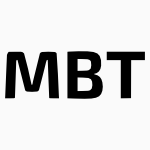 MBT-2007-BorodayPG #model checking #nondeterminism #testing
MBT-2007-BorodayPG #model checking #nondeterminism #testing- Can a Model Checker Generate Tests for Non-Deterministic Systems? (SB, AP, RG), pp. 3–19.
 ECDL-2006-ShenVFF #library #what
ECDL-2006-ShenVFF #library #what- What Is a Successful Digital Library? (RS, NSV, WF, EAF), pp. 208–219.
 HT-2006-MillardR #hypermedia #web
HT-2006-MillardR #hypermedia #web- Web 2.0: hypertext by any other name? (DEM, MR), pp. 27–30.
 CSEET-2006-HayesDHSD
CSEET-2006-HayesDHSD - Will Johnny/Joanie Make a Good Software Engineer? Are Course Grades Showing the Whole Picture? (JHH, AD, EAH, SKS, OD), pp. 175–184.
 ITiCSE-2006-BoyleB #what
ITiCSE-2006-BoyleB #what- What don’t you know? (RDB, JB), p. 343.
 ITiCSE-2006-ChenLMSS #student #what
ITiCSE-2006-ChenLMSS #student #what- What do beginning students know, and what can they do? (TYC, GL, RM, KS, BS), p. 329.
 ITiCSE-2006-Gal-EzerT #algebra #how #regular expression
ITiCSE-2006-Gal-EzerT #algebra #how #regular expression- Algebraic characterization of regular languages: how to cope with all these equivalences? (JGE, MBT), p. 325.
 SIGITE-2006-EkstromDLR #research
SIGITE-2006-EkstromDLR #research- A research agenda for information technology: does research literature already exist? (JJE, MJD, BML, HR), pp. 19–24.
 SIGITE-2006-LawsonS #network #student
SIGITE-2006-LawsonS #network #student- Does a virtual networking laboratory result in similar student achievement and satisfaction? (EAL, WS), pp. 105–114.
 CSMR-2006-LormansD #design #requirements #traceability
CSMR-2006-LormansD #design #requirements #traceability- Can LSI help Reconstructing Requirements Traceability in Design and Test? (ML, AvD), pp. 47–56.
 ICPC-2006-LuciaFOT #effectiveness #information retrieval #traceability
ICPC-2006-LuciaFOT #effectiveness #information retrieval #traceability- Can Information Retrieval Techniques Effectively Support Traceability Link Recovery? (ADL, FF, RO, GT), pp. 307–316.
 MSR-2006-CanforaC06a #debugging
MSR-2006-CanforaC06a #debugging- Where is bug resolution knowledge stored? (GC, LC), pp. 183–184.
 MSR-2006-KimW #debugging #how
MSR-2006-KimW #debugging #how- How long did it take to fix bugs? (SK, EJWJ), pp. 173–174.
 MSR-2006-WeissgerberD #refactoring
MSR-2006-WeissgerberD #refactoring- Are refactorings less error-prone than other changes? (PW, SD), pp. 112–118.
 CIAA-2006-Maletti
CIAA-2006-Maletti - Does o-Substitution Preserve Recognizability? (AM), pp. 150–161.
 DLT-2006-GurevichW #state machine
DLT-2006-GurevichW #state machine- Can Abstract State Machines Be Useful in Language Theory? (YG, CW), pp. 14–19.
 CHI-2006-BosONSHJ #distributed
CHI-2006-BosONSHJ #distributed- Collocation bindness in partially distributed groups: is there a downside to being collocated? (NB, JSO, NN, NSS, SH, EWJ), pp. 1313–1321.
 CHI-2006-WuMG #security
CHI-2006-WuMG #security- Do security toolbars actually prevent phishing attacks? (MW, RCM, SLG), pp. 601–610.
 CSCW-2006-YankelovichKPWD
CSCW-2006-YankelovichKPWD - Improving audio conferencing: are two ears better than one? (NY, JK, JP, MW, JMD), pp. 333–342.
 SOFTVIS-2006-VoineaT06a #how
SOFTVIS-2006-VoineaT06a #how- How do changes in buggy Mozilla files propagate? (LV, ACT), pp. 147–148.
 ICEIS-DISI-2006-Jain #how #recognition
ICEIS-DISI-2006-Jain #how #recognition- Biometric Recognition: How Do I Know Who You Are? (AKJ), pp. 17–18.
 ICEIS-DISI-2006-Liptrott
ICEIS-DISI-2006-Liptrott - Perhaps a Recipe for Change? — Will E-Voting have the Desired Effect? (ML), pp. 232–238.
 ICEIS-ISAS-2006-GoeppK #information management #problem #requirements
ICEIS-ISAS-2006-GoeppK #information management #problem #requirements- Key-Problem and Goal Driven Requirements Engineering — Which Complementarities for Manufacturing Information Systems? (VG, FK), pp. 102–109.
 ECIR-2006-Hawking #enterprise #future of
ECIR-2006-Hawking #enterprise #future of- Enterprise Search — The New Frontier? (DH), p. 12.
 ECIR-2006-UrbanJ #image #problem #query #retrieval
ECIR-2006-UrbanJ #image #problem #query #retrieval- Can a Workspace Help to Overcome the Query Formulation Problem in Image Retrieval? (JU, JMJ), pp. 385–396.
 ICPR-v1-2006-BoschMOM #approach #classification #what
ICPR-v1-2006-BoschMOM #approach #classification #what- Object and Scene Classification: what does a Supervised Approach Provide us? (AB, XM, AO, RM), pp. 773–777.
 KDD-2006-Piatetsky-ShapiroGDFGZ #challenge #data mining #mining
KDD-2006-Piatetsky-ShapiroGDFGZ #challenge #data mining #mining- Is there a grand challenge or X-prize for data mining? (GPS, RG, CD, RF, LG, MJZ), pp. 954–956.
 SEKE-2006-ChiYL #how #web
SEKE-2006-ChiYL #how #web- Web Object Cacheability How Much Do We Know? (CHC, JLY, LL), pp. 252–255.
 SEKE-2006-FarenhorstBDLV #architecture #domain model #what
SEKE-2006-FarenhorstBDLV #architecture #domain model #what- What’s in Constructing a Domain Model for Sharing Architectural Knowledge? (RF, RCdB, RD, PL, HvV), pp. 108–113.
 SIGIR-2006-CarmelYDP #query #what
SIGIR-2006-CarmelYDP #query #what- What makes a query difficult? (DC, EYT, AD, DP), pp. 390–397.
 SIGIR-2006-Mu #matter #retrieval #semantics #video #visual notation
SIGIR-2006-Mu #matter #retrieval #semantics #video #visual notation- Content-based video retrieval: does video’s semantic visual feature matter? (XM), pp. 679–680.
 MoDELS-2006-ZitoDD #uml
MoDELS-2006-ZitoDD #uml- Package Merge in UML 2: Practice vs. Theory? (AZ, ZD, JD), pp. 185–199.
 MoDELS-2006-ZitoDD #uml
MoDELS-2006-ZitoDD #uml- Package Merge in UML 2: Practice vs. Theory? (AZ, ZD, JD), pp. 185–199.
 ECOOP-2006-Cook
ECOOP-2006-Cook - Object Technology — A Grand Narrative? (SC), pp. 174–179.
 POPL-2006-Odersky #component #empirical #scala
POPL-2006-Odersky #component #empirical #scala- The Scala experiment: can we provide better language support for component systems? (MO), pp. 166–167.
 RE-2006-AkkermansG #requirements #what
RE-2006-AkkermansG #requirements #what- What is This Science Called Requirements Engineering? (HA, JG), pp. 266–271.
 RE-2006-Al-AniS #requirements
RE-2006-Al-AniS #requirements- So, You Think You Are a Requirements Engineer? (BAA, SES), pp. 330–331.
 RE-2006-Cleland-Huang #delivery #how #requirements #traceability
RE-2006-Cleland-Huang #delivery #how #requirements #traceability- Requirements Traceability — When and How does it Deliver more than it Costs? (JCH), p. 323.
 RE-2006-EbertB
RE-2006-EbertB - Have You Spoken to Your Product Manager Recently? (CE, SB), p. 322.
 RE-2006-Graham #requirements #testing
RE-2006-Graham #requirements #testing- Testing to Improve Requirements — Mission Impossible? (DG), p. 3.
 FSE-2006-HackettA #alias #how
FSE-2006-HackettA #alias #how- How is aliasing used in systems software? (BH, AA), pp. 69–80.
 ICSE-2006-AnvikHM #debugging
ICSE-2006-AnvikHM #debugging- Who should fix this bug? (JA, LH, GCM), pp. 361–370.
 ICSE-2006-PortK
ICSE-2006-PortK - So you want brooks in your classroom? (DP, DK), pp. 655–660.
 SAC-2006-Nakajima #how #interactive #reuse #ubiquitous
SAC-2006-Nakajima #how #interactive #reuse #ubiquitous- How to reuse exisiting interactive applications in ubiquitous computing environments? (TN), pp. 1127–1133.
 SAC-2006-ReynosoGPM #comprehension #ocl
SAC-2006-ReynosoGPM #comprehension #ocl- Does object coupling really affect the understanding and modifying of OCL expressions? (LR, MG, MP, MEM), pp. 1721–1727.
 SAC-2006-SauvagnatHB #retrieval #using #what #xml
SAC-2006-SauvagnatHB #retrieval #using #what #xml- XML retrieval: what about using contextual relevance? (KS, LH, MB), pp. 1114–1115.
 CC-2006-CavazosMO #algorithm #hybrid #optimisation
CC-2006-CavazosMO #algorithm #hybrid #optimisation- Hybrid Optimizations: Which Optimization Algorithm to Use? (JC, JEBM, MFPO), pp. 124–138.
 CC-2006-LhotakH #analysis #points-to
CC-2006-LhotakH #analysis #points-to- Context-Sensitive Points-to Analysis: Is It Worth It? (OL, LJH), pp. 47–64.
 DAC-2006-BanerjeeS #future of
DAC-2006-BanerjeeS #future of- Are carbon nanotubes the future of VLSI interconnections? (KB, NS), pp. 809–814.
 DAC-2006-BorkarBCNSS
DAC-2006-BorkarBCNSS - Tomorrow’s analog: just dead or just different? (SYB, RWB, JHC, EN, DS, CS), pp. 709–710.
 DAC-2006-HartungKHPJY #how
DAC-2006-HartungKHPJY #how- How will the fabless model survive? (TH, JK, AH, BP, FJ, NY), pp. 1–2.
 DAC-2006-HosseiniPCUGB #design #standard #verification
DAC-2006-HosseiniPCUGB #design #standard #verification- Building a standard ESL design and verification methodology: is it just a dream? (AH, AP, HTC, PU, EFG, SB), pp. 370–371.
 DAC-2006-NassifPRSBR #analysis
DAC-2006-NassifPRSBR #analysis- Variation-aware analysis: savior of the nanometer era? (SRN, VP, NR, DS, CB, RR), pp. 411–412.
 DAC-2006-RawatCKSGZS #named #proving
DAC-2006-RawatCKSGZS #named #proving- DFM: where’s the proof of value? (SR, RC, AK, JS, MG, NZ, AS), pp. 1061–1062.
 DAC-2006-SingerMBHK #what
DAC-2006-SingerMBHK #what- The IC nanometer race — what will it take to win? (GS, PM, DB, FCH, HKK), pp. 77–78.
 DAC-2006-YangCBDSK
DAC-2006-YangCBDSK - Entering the hot zone: can you handle the heat and be cool? (AY, RC, SB, JAD, SS, UK), pp. 174–175.
 DATE-2006-DasBDC #design #model checking #what
DATE-2006-DasBDC #design #model checking #what- What lies between design intent coverage and model checking? (SD, PB, PD, PPC), pp. 1217–1222.
 DATE-2006-MaciiPFADZ #design #matter #power management #tool support
DATE-2006-MaciiPFADZ #design #matter #power management #tool support- Low-power design tools: are EDA vendors taking this matter seriously? (EM, MP, DF, RCA, AD, RZ), p. 1227.
 DATE-2006-MarculescuRS #design #idea #network
DATE-2006-MarculescuRS #design #idea #network- Is “Network” the next “Big Idea” in design? (RM, JMR, ALSV), pp. 254–256.
 HPDC-2006-ChouhanDCV #how
HPDC-2006-ChouhanDCV #how- How should you structure your hierarchical scheduler? (PKC, HD, EC, FV), pp. 339–340.
 HPDC-2006-LiuB #scalability
HPDC-2006-LiuB #scalability- Is Unmetered, Scalable Computation Worth the Price? (HL, MB), pp. 353–354.
 PDP-2006-Chapman #memory management #parallel #programming #scalability
PDP-2006-Chapman #memory management #parallel #programming #scalability- Scalable Shared Memory Parallel Programming: Will One Size Fit All? (BMC), p. 3.
 STOC-2006-Impagliazzo #algorithm #random
STOC-2006-Impagliazzo #algorithm #random- Can every randomized algorithm be derandomized? (RI), pp. 373–374.
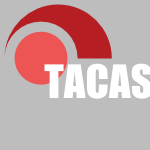 TACAS-2006-GurfinkelC #abstraction #why
TACAS-2006-GurfinkelC #abstraction #why- Why Waste a Perfectly Good Abstraction? (AG, MC), pp. 212–226.
 ICLP-2006-Lam #datalog #source code #why
ICLP-2006-Lam #datalog #source code #why- Why Use Datalog to Analyze Programs? (MSL), p. 1.
 VMCAI-2006-BradleyMS #array #decidability #what
VMCAI-2006-BradleyMS #array #decidability #what- What’s Decidable About Arrays? (ARB, ZM, HBS), pp. 427–442.
 WICSA-2005-Klein #architecture #how
WICSA-2005-Klein #architecture #how- How Does the Architect’s Role Change as the Software Ages? (JK), p. 141.
 ECDL-2005-CastelliI #grid #library
ECDL-2005-CastelliI #grid #library- Digital Libraries over the Grid: Heaven or Hell? (DC, YEI), pp. 477–478.
 ECDL-2005-LlavadorCB #web #web service
ECDL-2005-LlavadorCB #web #web service- Web Service Providers: A New Role in the Open Archives Initiative? (ML, JHC, MRSB), pp. 515–518.
 ECDL-2005-SumnerHHLW #library
ECDL-2005-SumnerHHLW #library- Does eScience Need Digital Libraries? (TS, RH, JH, NL, MJW), pp. 475–476.
 JCDL-2005-SurfaceCHH
JCDL-2005-SurfaceCHH - Is digital preservation an oxymoron? (TS, PC, RH, MH), p. 159.
 PODS-2005-Dobra #approximate
PODS-2005-Dobra #approximate- Histograms revisited: when are histograms the best approximation method for aggregates over joins? (AD), pp. 228–237.
 SIGMOD-2005-Campbell #architecture #database
SIGMOD-2005-Campbell #architecture #database- Service Oriented Database Architecture: APP server-lite? (DC), pp. 857–862.
 SIGMOD-2005-ChaudhuriKR #query #sql #trust
SIGMOD-2005-ChaudhuriKR #query #sql #trust- When Can We Trust Progress Estimators for SQL Queries? (SC, RK, RR), pp. 575–586.
 VLDB-2005-PaparizosJ #algebra #sequence #set
VLDB-2005-PaparizosJ #algebra #sequence #set- Pattern Tree Algebras: Sets or Sequences? (SP, HVJ), pp. 349–360.
 CSEET-2005-ThompsonF #re-engineering
CSEET-2005-ThompsonF #re-engineering- Best Practice: Is this the Cinderella Area of Software Engineering? (JBT, AJF), pp. 137–144.
 ITiCSE-2005-AlmstrumL #what #women
ITiCSE-2005-AlmstrumL #what #women- What attracts women to CS? (VLA, MZL), p. 378.
 ITiCSE-2005-Barker #experience #student
ITiCSE-2005-Barker #experience #student- When do group projects widen the student experience gap? (LJB), pp. 276–280.
 ITiCSE-2005-BiancoT #process #why
ITiCSE-2005-BiancoT #process #why- Why are children left out of the CS rethinking process? (GMB, ST), p. 352.
 ITiCSE-2005-LoftusR #learning #programming
ITiCSE-2005-LoftusR #learning #programming- Extreme programming promotes extreme learning? (CWL, MR), pp. 311–315.
 ITiCSE-2005-Luque #education #evolution
ITiCSE-2005-Luque #education #evolution- Is evolution or revolution the way for improving the teaching methodology in computer science? (EL), p. 2.
 ITiCSE-2005-Penha-Lopes #open source #why
ITiCSE-2005-Penha-Lopes #open source #why- Why use an open source e-voting system? (JMPL), p. 412.
 SIGITE-2005-Brewer
SIGITE-2005-Brewer - Project managers: can we make them or just make them better? (JLB), pp. 167–173.
 SIGITE-2005-Subramaniam #source code
SIGITE-2005-Subramaniam #source code- The emergence of IT degree programs: when did it happen? (MMS), pp. 31–35.
 CSMR-2005-BoisDV #comprehension #reverse engineering
CSMR-2005-BoisDV #comprehension #reverse engineering- Does the “Refactor to Understand” Reverse Engineering Pattern Improve Program Comprehension? (BDB, SD, JV), pp. 334–343.
 CSMR-2005-Holt #legacy
CSMR-2005-Holt #legacy- Legacy Applications — A Case for Restoration? (NH), p. 155.
 ICSM-2005-Demeyer #morphism #performance #polymorphism #what
ICSM-2005-Demeyer #morphism #performance #polymorphism #what- Refactor Conditionals into Polymorphism: What’s the Performance Cost of Introducing Virtual Calls? (SD), pp. 627–630.
 IWPC-2005-HouWH #framework #what
IWPC-2005-HouWH #framework #what- What Can Programmer Questions Tell Us About Frameworks? (DH, KW, HJH), pp. 87–96.
 MSR-2005-SliwerskiZZ
MSR-2005-SliwerskiZZ - When do changes induce fixes? (JŚ, TZ, AZ), pp. 41–45.
 CIAA-2005-GarciaRCA #learning
CIAA-2005-GarciaRCA #learning- Is Learning RFSAs Better Than Learning DFAs? (PG, JR, AC, GIA), pp. 343–344.
 ICALP-2005-BorodinCM #algorithm #how
ICALP-2005-BorodinCM #algorithm #how- How Well Can Primal-Dual and Local-Ratio Algorithms Perform? (AB, DC, AM), pp. 943–955.
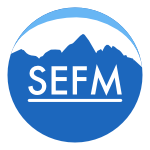 SEFM-2005-Chalin #logic #what
SEFM-2005-Chalin #logic #what- Logical Foundations of Program Assertions: What do Practitioners Want? (PC), pp. 383–393.
 TLCA-2005-Hayashi #game studies #proving
TLCA-2005-Hayashi #game studies #proving- Can Proofs Be Animated By Games? (SH), pp. 11–22.
 DiGRA-2005-Alix #online
DiGRA-2005-Alix #online- Beyond P-1: Who Plays Online? (AA).
 DiGRA-2005-BeckerJ #game studies #learning #what
DiGRA-2005-BeckerJ #game studies #learning #what- Games for Learning: Are Schools Ready for What's to Come? (KB, MJ).
 DiGRA-2005-FicocelliG #development #game studies #why
DiGRA-2005-FicocelliG #development #game studies #why- B.Sc. Computer Game Development ... Why not? (LF, DG).
 DiGRA-2005-Goggin #corpus
DiGRA-2005-Goggin #corpus- Corpus Simsi: Or Can a Body Tell a Story? (JG).
 DiGRA-2005-Haines #game studies #why #women
DiGRA-2005-Haines #game studies #why #women- Why are there so few women working in games? (LH).
 DiGRA-2005-HoshinoSB #game studies #what
DiGRA-2005-HoshinoSB #game studies #what- The Dawn of Game Studies in Japan: What Held Japanese Game Studies Back? (RH, KS, AB).
 DiGRA-2005-Kearney #game studies
DiGRA-2005-Kearney #game studies- Cognitive Callisthenics: Do FPS computer games enhance the player's cognitive abilities? (PK).
 CHI-2005-BeckwithBWCSH #debugging #effectiveness #gender
CHI-2005-BeckwithBWCSH #debugging #effectiveness #gender- Effectiveness of end-user debugging software features: are there gender issues? (LB, MMB, SW, CRC, SS, MH), pp. 869–878.
 CHI-2005-OviattLC #difference #integration #multimodal #what #why
CHI-2005-OviattLC #difference #integration #multimodal #what #why- Individual differences in multimodal integration patterns: what are they and why do they exist? (SLO, RL, RC), pp. 241–249.
 SIGIR-2005-AllanCL #information retrieval
SIGIR-2005-AllanCL #information retrieval- When will information retrieval be “good enough”? (JA, BC, JL), pp. 433–440.
 SIGIR-2005-Flores #challenge #future of #information retrieval
SIGIR-2005-Flores #challenge #future of #information retrieval- The future of media, blogs and innovation: new IR challenges? (FF), p. 218.
 SIGIR-2005-McKeownPENH #summary
SIGIR-2005-McKeownPENH #summary- Do summaries help? (KM, RJP, DKE, AN, JH), pp. 210–217.
 SIGIR-2005-VriesR
SIGIR-2005-VriesR - Relevance information: a loss of entropy but a gain for IDF? (APdV, TR), pp. 282–289.
 MoDELS-2005-MiliE #design pattern #problem #representation #what
MoDELS-2005-MiliE #design pattern #problem #representation #what- Representing and Applying Design Patterns: What Is the Problem? (HM, GEB), pp. 186–200.
 MoDELS-2005-MiliE #design pattern #problem #representation #what
MoDELS-2005-MiliE #design pattern #problem #representation #what- Representing and Applying Design Patterns: What Is the Problem? (HM, GEB), pp. 186–200.
 ECOOP-2005-GibbsLC #aspect-oriented #evolution #framework
ECOOP-2005-GibbsLC #aspect-oriented #evolution #framework- Sustainable System Infrastructure and Big Bang Evolution: Can Aspects Keep Pace? (CG, CRL, YC), pp. 241–261.
 RE-2005-BerryDFGHW #requirements #why
RE-2005-BerryDFGHW #requirements #why- To do or not to do: If the requirements engineering payoff is so good, why aren’t more companies doing it? (DMB, DD, AF, DCG, RH, AW), p. 447.
 RE-2005-FanmuyPRDBWB #requirements
RE-2005-FanmuyPRDBWB #requirements- Are Requirements Engineering best practices the same for all industries? (GF, FP, JR, JD, SB, MW, PB), p. 448.
 RE-2005-Jackson
RE-2005-Jackson - Dependable Software: An Oxymoron? (DJ), p. 3.
 ICSE-2005-AndrewsBL #testing
ICSE-2005-AndrewsBL #testing- Is mutation an appropriate tool for testing experiments? (JHA, LCB, YL), pp. 402–411.
 ICSE-2005-JacksonZ
ICSE-2005-JacksonZ - Where do you go when you’re through the turnstile? (MJ, PZ), p. 44.
 ICSE-2005-SherrellS #education #process
ICSE-2005-SherrellS #education #process- Will earlier projects plus a disciplined process enforce SE principles throughout the CS curriculum? (LBS, SGS), pp. 619–620.
 ICSE-2005-Siegel #architecture #design #distributed #modelling #why
ICSE-2005-Siegel #architecture #design #distributed #modelling #why- Why use the model driven architecture to design and build distributed applications? (JS), p. 37.
 CGO-2005-Amarasinghe #compilation #multi
CGO-2005-Amarasinghe #compilation #multi- Multicores from the Compiler’s Perspective: A Blessing or a Curse? (SPA), p. 137.
 COCV-J-2005-Langmaack #reasoning #what
COCV-J-2005-Langmaack #reasoning #what- What Level of Mathematical Reasoning can Computer Science Demand of a Software Implementer? (HL), pp. 5–32.
 DAC-2005-AminMKDCHI #analysis #how #statistics
DAC-2005-AminMKDCHI #analysis #how #statistics- Statistical static timing analysis: how simple can we get? (CSA, NM, KK, FD, UC, NH, YII), pp. 652–657.
 DAC-2005-BacchiniMFBNMD #verification
DAC-2005-BacchiniMFBNMD #verification- Is methodology the highway out of verification hell? (FB, GM, HF, JB, MN, SM, LD), pp. 521–522.
 DAC-2005-ChowdharyRVCTPH #how
DAC-2005-ChowdharyRVCTPH #how- How accurately can we model timing in a placement engine? (AC, KR, SV, TC, VT, YP, BH), pp. 801–806.
 DAC-2005-FoxCMHHJKYZ #approach
DAC-2005-FoxCMHHJKYZ #approach- Should our power approach be current? (TF, LC, SM, DH, EPH, VJ, AK, AY, PSZ), p. 611.
 DAC-2005-NowakR
DAC-2005-NowakR - Are there economic benefits in DFM? (MN, RR), pp. 767–768.
 DAC-2005-Rossi #design #formal method #scalability #verification
DAC-2005-Rossi #design #formal method #scalability #verification- Can we really do without the support of formal methods in the verification of large designs? (UR), pp. 672–673.
 DAC-2005-WilsonGHMLBTC #framework #platform
DAC-2005-WilsonGHMLBTC #framework #platform- Structured/platform ASIC apprentices: which platform will survive your board room? (RW, JG, CH, KM, SL, IB, RT, RC), pp. 887–888.
 DAC-2005-WolfsthalG #verification
DAC-2005-WolfsthalG #verification- Formal verification: is it real enough? (YW, RMG), pp. 670–671.
 DATE-2005-GielenDCDJMV #design
DATE-2005-GielenDCDJMV #design- Analog and Digital Circuit Design in 65 nm CMOS: End of the Road? (GGEG, WD, PC, DD, EJ, KM, TV), pp. 36–42.
 DATE-2005-RosenstielBGGKLMMMS #tool support
DATE-2005-RosenstielBGGKLMMMS #tool support- Is there a Market for SystemC Tools? (WR, RAB, FG, TG, MK, MCvL, AM, MM, MM, SS), p. 950.
 DATE-2005-Sangiovanni-Vincentelli #design #evolution
DATE-2005-Sangiovanni-Vincentelli #design #evolution- Integrated Electronics in the Car and the Design Chain Evolution or Revolution? (ALSV), pp. 532–533.
 DATE-2005-ZorianFWESGR #industrial
DATE-2005-ZorianFWESGR #industrial- Semiconductor Industry Disaggregation vs Reaggregation: Who Will be the Shark? (YZ, BF, DW, JE, GS, MG, KNR), p. 572.
 PPoPP-2005-Hanrahan #hardware #performance #why
PPoPP-2005-Hanrahan #hardware #performance #why- Why is graphics hardware so fast? (PH), p. 1.
 CADE-2005-Dowek #consistency #what
CADE-2005-Dowek #consistency #what- What Do We Know When We Know That a Theory Is Consistent? (GD), pp. 1–6.
 JCDL-2004-ChuBJW
JCDL-2004-ChuBJW - Realistic books: a bizarre homage to an obsolete medium? (YCC, DB, MJ, IHW), pp. 78–86.
 VLDB-2004-AgrawalS #data mining #mining
VLDB-2004-AgrawalS #data mining #mining- Whither Data Mining? (RA, RS), p. 9.
 VLDB-2004-KrishnamurthyKN #performance #query
VLDB-2004-KrishnamurthyKN #performance #query- Efficient XML-to-SQL Query Translation: Where to Add the Intelligence? (RK, RK, JFN), pp. 144–155.
 VLDB-2004-OConnellWBC #database
VLDB-2004-OConnellWBC #database- Where is Business Intelligence taking today’s Database Systems? (WO, AW, RB, SC), pp. 1237–1238.
 CSEET-2004-Anger
CSEET-2004-Anger - Will the Real Software Engineer Please Stand Up? (FDA), pp. 4–5.
 CSEET-2004-HislopELM #adaptation #education #re-engineering
CSEET-2004-HislopELM #adaptation #education #re-engineering- Graduate Software Engineering Education: Adapting for the BSSE? (GWH, HJCE, KSL, AMM), p. 152.
 CSEET-2004-SmithLL #java #re-engineering #realtime
CSEET-2004-SmithLL #java #re-engineering #realtime- Can Real-Time Software Engineering be Taught to Java Programmers? (SS, SWL, AL), pp. 124–129.
 ITiCSE-2004-Armoni #education #how
ITiCSE-2004-Armoni #education #how- Reductive thinking: how to teach it? (MA), p. 280.
 ITiCSE-2004-Ben-AriBBH #education #research #what
ITiCSE-2004-Ben-AriBBH #education #research #what- What do we mean by theoretically sound research in computer science education? (MBA, AB, SB, CH), pp. 230–231.
 ITiCSE-2004-BenayaZ #student
ITiCSE-2004-BenayaZ #student- Can students improve their undergraduate schievements and get accepted to graduate school? (TB, EZ), p. 246.
 ITiCSE-2004-Cliff #education #generative
ITiCSE-2004-Cliff #education #generative- Teaching about natural systems, the next generation of computers, and the generation after that? (DC), p. 1.
 ITiCSE-2004-Ginat04a #recursion #student
ITiCSE-2004-Ginat04a #recursion #student- Do senior CS students capitalize on recursion? (DG), pp. 82–86.
 ITiCSE-2004-Mander
ITiCSE-2004-Mander - Back to the future? (KM), p. 2.
 ITiCSE-2004-Nodelman #object-oriented
ITiCSE-2004-Nodelman #object-oriented- OOP via C++, C#...? (VN), p. 255.
 ITiCSE-2004-VeenML #education #what
ITiCSE-2004-VeenML #education #what- What is lacking in curriculum schemes for computing/informatics? (MvV, FM, KL), pp. 186–190.
 SIGITE-2004-GardinerJR
SIGITE-2004-GardinerJR - Second thoughts about a career in IT? (AG, VMJ, HR), pp. 194–201.
 SIGITE-2004-MiertschinW #mobile #what
SIGITE-2004-MiertschinW #mobile #what- Mobile computing in the freshman computer literacy course what impact? (SLM, CLW), pp. 149–152.
 SIGITE-2004-PriceR #source code #student
SIGITE-2004-PriceR #source code #student- Technology-based degrees: do faculty and students agree on necessary skills for success in these programs? (BP, CHR), pp. 235–240.
 SIGITE-2004-RomneyR #education #privacy
SIGITE-2004-RomneyR #education #privacy- Neglect of information privacy instruction: a case of educational malpractice? (VWR, GWR), pp. 79–82.
 CIAA-2004-EramianD #complexity
CIAA-2004-EramianD #complexity- Does Hausdorff Dimension Measure Texture Complexity? (MGE, MD), pp. 317–318.
 ICALP-2004-Hofmann #logic #type system #what
ICALP-2004-Hofmann #logic #type system #what- What Do Program Logics and Type Systems Have in Common? (MH0), pp. 4–7.
 CSCW-2004-AckermanHCWMW #approach #community #social
CSCW-2004-AckermanHCWMW #approach #community #social- Communities and technologies: an approach to foster social capital? (MSA, MH, JMC, BW, GDM, VW), pp. 406–408.
 CSCW-2004-BarleyDKRKY
CSCW-2004-BarleyDKRKY - Does CSCW need organization theory? (SRB, WHD, SBK, PR, REK, JY), pp. 122–124.
 CSCW-2004-NardiSG #people #process #social
CSCW-2004-NardiSG #people #process #social- Blogging as social activity, or, would you let 900 million people read your diary? (BAN, DJS, MG), pp. 222–231.
 ICPR-v1-2004-XuWTQ #recognition
ICPR-v1-2004-XuWTQ #recognition- Depth vs. Intensity: Which is More Important for Face Recognition? (CX, YW, TT, LQ), pp. 342–345.
 ICPR-v2-2004-GimelfarbGZ #modelling #probability
ICPR-v2-2004-GimelfarbGZ #modelling #probability- To FRAME or not to FRAME in Probabilistic Texture Modelling? (GLG, LJVG, AZ), pp. 707–711.
 ICPR-v3-2004-SantanaGD
ICPR-v3-2004-SantanaGD - Who Are You? (MCS, EG, OD), pp. 938–941.
 KDD-2004-KantarciogluJC #data mining #mining #privacy
KDD-2004-KantarciogluJC #data mining #mining #privacy- When do data mining results violate privacy? (MK, JJ, CC), pp. 599–604.
 KR-2004-Patel-Schneider #owl #what #why
KR-2004-Patel-Schneider #owl #what #why- What Is OWL (and Why Should I Care)? (PFPS), pp. 735–737.
 SIGIR-2004-Gnasa #information management #online
SIGIR-2004-Gnasa #information management #online- Sharing knowledge online (abstract only): a dream or reality? (MG), p. 602.
 SPLC-2004-Geppert #development #how #product line #testing
SPLC-2004-Geppert #development #how #product line #testing- How Can Testing Keep Pace with Accelerated Development in Software Product Line Engineering? (CWK, BG), pp. 308–309.
 PEPM-2004-Morrisett #what
PEPM-2004-Morrisett #what- Invited talk: what’s the future for proof-carrying code? (JGM), p. 203.
 PPDP-2004-Morrisett #what
PPDP-2004-Morrisett #what- Invited talk: what’s the future for proof-carrying code? (JGM), p. 5.
 FSE-2004-Wolf #re-engineering #security
FSE-2004-Wolf #re-engineering #security- Is security engineering really just good software engineering? (ALW), p. 1.
 DAC-2004-DeoZBCGLRRS #what
DAC-2004-DeoZBCGLRRS #what- What happened to ASIC?: Go (recon)figure? (ND, BZ, IB, JC, BG, PL, CBR, CR, RS), p. 185.
 DAC-2004-GoldmanKBBBCSV #statistics
DAC-2004-GoldmanKBBBCSV #statistics- Is statistical timing statistically significant? (RG, KK, CB, AB, SYB, EC, LS, CV), p. 498.
 DAC-2004-LiuPP #library #power management #what
DAC-2004-LiuPP #library #power management #what- Practical repeater insertion for low power: what repeater library do we need? (XL, YP, MCP), pp. 30–35.
 DAC-2004-Rodman
DAC-2004-Rodman - Forest vs. trees: where’s the slack? (PKR), p. 267.
 DAC-2004-RutenbarBMPPSW
DAC-2004-RutenbarBMPPSW - Will Moore’s Law rule in the land of analog? (RAR, ARB, THYM, EP, RP, CS, JW), p. 633.
 DAC-2004-Smith #challenge #design #framework #platform
DAC-2004-Smith #challenge #design #framework #platform- Platform based design: does it answer the entire SoC challenge? (GS), p. 407.
 DAC-2004-StrojwasCGHKLNPT #fault
DAC-2004-StrojwasCGHKLNPT #fault- When IC yield missed the target, who is at fault? (AJS, MC, VG, JH, JK, ML, WN, DP, MT), p. 80.
 DATE-DF-2004-Eklow #testing
DATE-DF-2004-Eklow #testing- IP Testing — The Future Differentiator? (BE), pp. 6–9.
 DATE-DF-2004-Werner #quality
DATE-DF-2004-Werner #quality- Can IP Quality be Objectively Measured? (KW), pp. 330–331.
 DATE-v1-2004-BasuDDCMF #architecture #design #verification
DATE-v1-2004-BasuDDCMF #architecture #design #verification- Formal Verification Coverage: Are the RTL-Properties Covering the Design’s Architectural Intent? (PB, SD, PD, PPC, CRM, LF), pp. 668–669.
 DATE-v1-2004-CatthoorCMGLMSW #design #how #problem #scalability
DATE-v1-2004-CatthoorCMGLMSW #design #how #problem #scalability- How Can System-Level Design Solve the Interconnect Technology Scaling Problem? (FC, AC, GM, PG, RL, KM, PvdS, RW), pp. 332–339.
 DATE-v1-2004-MetraMO #design #fault #testing
DATE-v1-2004-MetraMO #design #fault #testing- Are Our Design for Testability Features Fault Secure? (CM, TMM, MO), pp. 714–715.
 DATE-v1-2004-SciutoMRSGFS
DATE-v1-2004-SciutoMRSGFS - SystemC and SystemVerilog: Where do They Fit? Where are They Going? (DS, GM, WR, SS, FG, PF, JS), pp. 122–129.
 DATE-v2-2004-RajskiT #design #requirements #what
DATE-v2-2004-RajskiT #design #requirements #what- Nanometer Design: What are the Requirements for Manufacturing Test? (JR, KT), pp. 930–937.
 ISMM-2004-BlackburnH #named
ISMM-2004-BlackburnH #named- Barriers: friend or foe? (SMB, ALH), pp. 143–151.
 STOC-2004-Guruswami
STOC-2004-Guruswami - Better extractors for better codes? (VG), pp. 436–444.
 STOC-2004-Wigderson #why
STOC-2004-Wigderson #why- Depth through breadth, or why should we attend talks in other areas? (AW), p. 579.
 TACAS-2004-GurfinkelC #how
TACAS-2004-GurfinkelC #how- How Vacuous Is Vacuous? (AG, MC), pp. 451–466.
 DRR-2003-TaghvaC #categorisation #rule-based
DRR-2003-TaghvaC #categorisation #rule-based- Do Thesauri enhance rule-based categorization for OCR text? (KT, JSC), pp. 111–119.
 HT-2003-AbdullahD #adaptation #hypermedia
HT-2003-AbdullahD #adaptation #hypermedia- Is simple sequencing simple adaptive hypermedia? (NAA, HCD), pp. 172–173.
 HT-2003-MarshallS #semantics #web
HT-2003-MarshallS #semantics #web- Which semantic web? (CCM, FMSI), pp. 57–66.
 HT-2003-MendesMC #adaptation #estimation #web
HT-2003-MendesMC #adaptation #estimation #web- Do adaptation rules improve web cost estimation? (EM, NM, SC), pp. 173–183.
 HT-2003-Nurnberg #hypermedia #what
HT-2003-Nurnberg #hypermedia #what- What is hypertext? (PJN), pp. 220–221.
 ICDAR-2003-StrohmaierRSM #taxonomy #web
ICDAR-2003-StrohmaierRSM #taxonomy #web- Lexical Postcorrection of OCR-Results: The Web as a Dynamic Secondary Dictionary? (CMS, CR, KUS, SM), pp. 1133–1137.
 VLDB-2003-Cluet #database #xml
VLDB-2003-Cluet #database #xml- Who needs XML Databases? (SC), p. 1045.
 CSEET-2003-BaileyCHW #student
CSEET-2003-BaileyCHW #student- Can We Influence Students? Attitudes About Inspections? Can We Measure a Change in Attitude? (DB, TC, BH, LLW), pp. 260–267.
 CSEET-2003-Cowling #what
CSEET-2003-Cowling #what- What Should Graduating Software Engineers Be Able To Do? (AJC), pp. 88–98.
 CSEET-2003-CrnkovicLS #re-engineering
CSEET-2003-CrnkovicLS #re-engineering- Is Software Engineering Training Enough for Software Engineers? (IC, RL, AS), p. 140–?.
 CSEET-2003-GermainR #process #student #what
CSEET-2003-GermainR #process #student #what- What Cognitive Activities Are Performed in Student Projects? (ÉG, PNR), p. 224–?.
 ITiCSE-2003-SheardD #student #what
ITiCSE-2003-SheardD #student #what- Influences on cheating practice of graduate students in IT courses: what are the factors? (JS, MD), pp. 45–49.
 CSMR-2003-Briand #documentation #how
CSMR-2003-Briand #documentation #how- Software Documentation: How Much Is Enough? (LCB), p. 13–?.
 IWPC-2003-GallagherL #composition #slicing
IWPC-2003-GallagherL #composition #slicing- Are Decomposition Slices Clones? (KG, LL), pp. 251–257.
 ICFP-2003-BiermanHSSW
ICFP-2003-BiermanHSSW - Dynamic rebinding for marshalling and update, with destruct-time? (GMB, MWH, PS, GS, KW), pp. 99–110.
 DiGRA-2003-Catanese #game studies
DiGRA-2003-Catanese #game studies- Where have all the videogame console artists gone? (PC).
 DiGRA-2003-CheeS #community
DiGRA-2003-CheeS #community- Is Electronic Community an Addictive Substance? (FC, RS0).
 DiGRA-2003-EndestadT #game studies
DiGRA-2003-EndestadT #game studies- Computer games and violence: Is there really a connection? (TE, LT).
 CHI-2003-JackoSSBEEKMZ #feedback #multimodal #performance #visual notation #what
CHI-2003-JackoSSBEEKMZ #feedback #multimodal #performance #visual notation #what- Older adults and visual impairment: what do exposure times and accuracy tell us about performance gains associated with multimodal feedback? (JAJ, IUS, FS, LB, PJE, VKE, TK, KPM, BSZ), pp. 33–40.
 CHI-2003-RoddenW #how #people
CHI-2003-RoddenW #how #people- How do people manage their digital photographs? (KR, KRW), pp. 409–416.
 SOFTVIS-2003-Eichelberger #design #diagrams
SOFTVIS-2003-Eichelberger #design #diagrams- Nice Class Diagrams Admit Good Design? (HE), pp. 159–167.
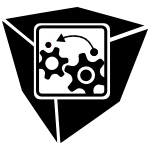 VISSOFT-2003-ChartersTM #visualisation
VISSOFT-2003-ChartersTM #visualisation- The end of the line for Software Visualisation? (SMC, NT, MM), pp. 110–112.
 ICEIS-v1-2003-EdlundFKK
ICEIS-v1-2003-EdlundFKK - Extending Groupware for OLAP: Where Did My Time Go? (SE, DAF, VK, SK), pp. 47–54.
 ECIR-2003-HeeschR #feedback #image #retrieval #what
ECIR-2003-HeeschR #feedback #image #retrieval #what- Relevance Feedback for Content-Based Image Retrieval: What Can Three Mouse Clicks Achieve? (DH, SMR), pp. 363–376.
 SIGIR-2003-KampsMRS #retrieval #what #xml
SIGIR-2003-KampsMRS #retrieval #what #xml- XML retrieval: what to retrieve? (JK, MM, MdR, BS), pp. 409–410.
 SIGIR-2003-SakaiK #performance #retrieval #what
SIGIR-2003-SakaiK #performance #retrieval #what- Evaluating retrieval performance for Japanese question answering: what are best passages? (TS, TK), pp. 429–430.
 UML-2003-Fowler #uml #what
UML-2003-Fowler #uml #what- What Is the Point of the UML? (MF), p. 325.
 RE-2003-HickeyD #elicitation #how
RE-2003-HickeyD #elicitation #how- Elicitation Technique Selection: How Do Experts Do It? (AMH, AMD), p. 169–?.
 ASE-2003-MemonBN #effectiveness #testing #user interface #what
ASE-2003-MemonBN #effectiveness #testing #user interface #what- What Test Oracle Should I Use for Effective GUI Testing? (AMM, IB, AN), pp. 164–173.
 ICSE-2003-Szyperski #component #how #what
ICSE-2003-Szyperski #component #how #what- Component Technology — What, Where, and How? (CAS), pp. 684–693.
 SAC-2003-MernikGZB #parsing
SAC-2003-MernikGZB #parsing- Can a Parser be Generated from Examples? (MM, GG, VZ, BRB), pp. 1063–1067.
 DAC-2003-CraninckxD #design #how
DAC-2003-CraninckxD #design #how- 4G terminals: how are we going to design them? (JC, SD), pp. 79–84.
 DAC-2003-Spirakis #challenge #design
DAC-2003-Spirakis #challenge #design- Leading-edge and future design challenges — is the classical EDA ready? (GS), p. 416.
 DATE-2003-SchlebuschSSGMLGSK #design #problem #transaction
DATE-2003-SchlebuschSSGMLGSK #design #problem #transaction- Transaction Based Design: Another Buzzword or the Solution to a Design Problem? (HJS, GS, DS, DG, CM, CKL, FG, SS, JK), pp. 10876–10879.
 ICLP-2003-Smaus #equation #first-order #semantics
ICLP-2003-Smaus #equation #first-order #semantics- Is There an Optimal Generic Semantics for First-Order Equations? (JGS), pp. 438–450.
 SAT-2003-GoldbergN #how
SAT-2003-GoldbergN #how- How Good Can a Resolution Based SAT-solver Be? (EG, YN), pp. 37–52.
 HT-2002-HughesC
HT-2002-HughesC - Microsoft smart tags: support, ignore or condemn them? (GVH, LC), pp. 80–81.
 HT-2002-Laine #how #interactive
HT-2002-Laine #how #interactive- How do interactive texts reflect interactive functions? (PL), pp. 67–68.
 JCDL-2002-Garcia-MolinaHLLW #how #metadata
JCDL-2002-Garcia-MolinaHLLW #how #metadata- How important is metadata? (HGM, DH, CL, EDL, SW), p. 369.
 PODS-2002-ChuHG #optimisation #query #what
PODS-2002-ChuHG #optimisation #query #what- Least Expected Cost Query Optimization: What Can We Expect? (FCC, JYH, JG), pp. 293–302.
 ITiCSE-2002-CarboneS #education #learning #student #what
ITiCSE-2002-CarboneS #education #learning #student #what- A studio-based teaching and learning model in IT: what do first year students think? (AC, JS), pp. 213–217.
 ITiCSE-2002-CarterJ #difference #gender #programming
ITiCSE-2002-CarterJ #difference #gender #programming- Gender differences in programming? (JC, TJ), pp. 188–192.
 ITiCSE-2002-KorhonenMMS #difference #student #web
ITiCSE-2002-KorhonenMMS #difference #student #web- Does it make a difference if students exercise on the web or in the classroom? (AK, LM, PM, PS), pp. 121–124.
 ITiCSE-2002-ParkinsonR #learning #performance
ITiCSE-2002-ParkinsonR #learning #performance- Do cognitive styles affect learning performance in different computer media? (AP, JAR), pp. 39–43.
 ITiCSE-2002-Reges #c# #java
ITiCSE-2002-Reges #c# #java- Can C# replace java in CS1 and CS2? (SR), pp. 4–8.
 ICFP-2002-Flatt #composition #metaprogramming
ICFP-2002-Flatt #composition #metaprogramming- Composable and compilable macros: : you want it when? (MF), pp. 72–83.
 CGDC-2002-Nolan #community
CGDC-2002-Nolan #community- iDTV Gamers: The Emergence of a New Community? (SN).
 CHI-2002-Bayles #design #online
CHI-2002-Bayles #design #online- Designing online banner advertisements: should we animate? (MEB), pp. 363–366.
 CSCW-2002-GrassoM
CSCW-2002-GrassoM - Who can claim complete abstinence from peeking at print jobs? (AG, JLM), pp. 296–305.
 CSCW-2002-HandelH #chat #what
CSCW-2002-HandelH #chat #what- What is chat doing in the workplace? (MH, JDH), pp. 1–10.
 CSCW-2002-KrautMTFCS #email
CSCW-2002-KrautMTFCS #email- Markets for attention: will postage for email help? (REK, JM, RT, DF, MC, SS), pp. 206–215.
 CSCW-2002-VertegaalD
CSCW-2002-VertegaalD - Explaining effects of eye gaze on mediated group conversations: : amount or synchronization? (RV, YD), pp. 41–48.
 CAiSE-2002-LipsonMM #component #off the shelf
CAiSE-2002-LipsonMM #component #off the shelf- Can We Ever Build Survivable Systems from COTS Components? (HFL, NRM, APM), pp. 216–229.
 EDOC-2002-GanesarajahL #composition #paradigm #programming #workflow
EDOC-2002-GanesarajahL #composition #paradigm #programming #workflow- Workflow-Based Composition of Web-Services: A Business Model or a Programming Paradigm? (DG, EL), pp. 273–284.
 ICEIS-2002-Kadri-DahmaniO #consistency #database #how #maintenance
ICEIS-2002-Kadri-DahmaniO #consistency #database #how #maintenance- Updating Data in GIS: How to Maintain Database Consistency? (HKD, AO), pp. 587–593.
 CIKM-2002-Zemankova #information management #research
CIKM-2002-Zemankova #information management #research- Knowledge and information management: Is it possible to do interesting and important research, get funded, be useful and appreciated? (MZ), pp. 373–374.
 ICPR-v2-2002-AltyncayD #classification #multi #normalisation #problem #why
ICPR-v2-2002-AltyncayD #classification #multi #normalisation #problem #why- Why Does Output Normalization Create Problems in Multiple Classifier Systems? (HA, MD), pp. 775–778.
 ICPR-v2-2002-Duin #classification
ICPR-v2-2002-Duin #classification- The Combining Classifier: To Train or Not to Train? (RPWD), pp. 765–770.
 ICPR-v2-2002-KakD #what
ICPR-v2-2002-KakD #what- Robotic Vision: What Happened to the Visions of Yesterday? (ACK, GND), pp. 839–847.
 ICPR-v2-2002-Schiele #classification #how
ICPR-v2-2002-Schiele #classification #how- How Many Classifiers Do I Need? (BS), pp. 176–179.
 ICPR-v3-2002-BalciA #estimation #gender
ICPR-v3-2002-BalciA #estimation #gender- PCA for Gender Estimation: Which Eigenvectors Contribute? (KB, VA), pp. 363–366.
 KDD-2002-JoshiAK #predict
KDD-2002-JoshiAK #predict- Predicting rare classes: can boosting make any weak learner strong? (MVJ, RCA, VK), pp. 297–306.
 KR-2002-Hendler #semantics #web
KR-2002-Hendler #semantics #web- The Semantic Web: KR’s Worst Nightmare? (JAH), p. 630.
 LSO-2002-HenningerM #agile #concept #development #learning
LSO-2002-HenningerM #agile #concept #development #learning- Learning Software Organizations and Agile Software Development: Complementary or Contradictory Concepts? (SH, FM), pp. 1–3.
 SEKE-2002-JorgensenM #development #how #predict #why
SEKE-2002-JorgensenM #development #how #predict #why- Combination of software development effort prediction intervals: why, when and how? (MJ, KM), pp. 425–428.
 SIGIR-2002-DumaisBBLN #web
SIGIR-2002-DumaisBBLN #web- Web question answering: is more always better? (STD, MB, EB, JJL, AYN), pp. 291–298.
 SIGIR-2002-DziadoszC #web
SIGIR-2002-DziadoszC #web- Do thumbnail previews help users make better relevance decisions about web search results? (SD, RC), pp. 365–366.
 SIGIR-2002-FranzM #how
SIGIR-2002-FranzM #how- How Many Bits are Needed to Store Term Frequencies? (MF, JSM), pp. 377–378.
 SIGIR-2002-Koskenniemi #information retrieval #natural language
SIGIR-2002-Koskenniemi #information retrieval #natural language- Is natural language an inconvenience or an opportunity for IR? (KK), p. 315.
 SIGIR-2002-Soboroff #web
SIGIR-2002-Soboroff #web- Does WT10g look like the web? (IS), pp. 423–424.
 SIGIR-2002-Sormunen #documentation
SIGIR-2002-Sormunen #documentation- Liberal relevance criteria of TREC -: counting on negligible documents? (ES), pp. 324–330.
 UML-2002-Selic
UML-2002-Selic - Does Your Software Creak as It Runs? (BS), p. 162.
 Ada-2002-BichlerS #german #uml
Ada-2002-BichlerS #german #uml- Objektorientierte Entwicklung eingebetteter (Echtzeit-) Systeme mit UML? (LB, AS), pp. 11–28.
 PADL-2002-GuptaGKPIRMDENZ #logic programming #semantics
PADL-2002-GuptaGKPIRMDENZ #logic programming #semantics- Semantics-Based Filtering: Logic Programming’s Killer App? (GG, HFG, AIK, EP, JRI, DR, BM, ND, OEK, MN, XZ), pp. 82–100.
 RE-2002-KozlenkovZ #consistency #design #requirements #specification
RE-2002-KozlenkovZ #consistency #design #requirements #specification- Are their Design Specifications Consistent with our Requirements? (AK, AZ), pp. 145–156.
 RE-2002-VickersMM #how #requirements
RE-2002-VickersMM #how #requirements- Requirements Engineering: How Do You Know How Good You Are? (AV, AM, HM), pp. 194–198.
 ASE-2002-OwenMC #finite #modelling #what
ASE-2002-OwenMC #finite #modelling #what- What Makes Finite-State Models More (or Less) Testable? (DO, TM, BC), pp. 237–240.
 ICSE-2002-OsterweilKFS #lightweight #process
ICSE-2002-OsterweilKFS #lightweight #process- Lightweight vs. heavyweight processes: is this even the right question? (LJO, PK, MF, WS), p. 649.
 SAC-2002-BinderR #java #mobile #using
SAC-2002-BinderR #java #mobile #using- Secure mobile agent systems using Java: where are we heading? (WB, VR), pp. 115–119.
 DAC-2002-AloulSS #how #named
DAC-2002-AloulSS #how #named- Satometer: how much have we searched? (FAA, BDS, KAS), pp. 737–742.
 DAC-2002-BrodersenHKKLK #design #what
DAC-2002-BrodersenHKKLK #design #what- Nanometer design: what hurts next...? (RWB, AMH, JK, DK, MAL, MK), p. 242.
 DAC-2002-BrunoliHJKMM
DAC-2002-BrunoliHJKMM - Analog intellectual property: now? Or never? (MB, MH, FJ, RK, RM, AJM), pp. 181–182.
 DAC-2002-CabodiCQ #bound #model checking #satisfiability
DAC-2002-CabodiCQ #bound #model checking #satisfiability- Can BDDs compete with SAT solvers on bounded model checking? (GC, PC, SQ), pp. 117–122.
 DAC-2002-KahngCGLNRH #tool support
DAC-2002-KahngCGLNRH #tool support- Tools or users: which is the bigger bottleneck? (ABK, RC, PG, LL, NN, PKR, LvdH), pp. 76–77.
 DAC-2002-RabaeyKBCSLH #what
DAC-2002-RabaeyKBCSLH #what- What’s the next EDA driver? (JMR, JK, DB, RC, DS, LL, RH), p. 652.
 DAC-2002-SantariniJMEKRRY
DAC-2002-SantariniJMEKRRY - Whither (or wither?) ASIC handoff? (MS, SJ, MM, TE, SK, KNR, TR, KY), pp. 317–318.
 DAC-2002-SeryBD #why
DAC-2002-SeryBD #why- Life is CMOS: why chase the life after? (GS, SB, VD), pp. 78–83.
 DAC-2002-SmithNMCFKMB #embedded #tool support
DAC-2002-SmithNMCFKMB #embedded #tool support- Unified tools for SoC embedded systems: mission critical, mission impossible or mission irrelevant? (GS, DN, SM, RC, JF, KK, GM, BB), p. 479.
 DAC-2002-SteyaertV #named #paradigm #power management
DAC-2002-SteyaertV #named #paradigm #power management- CMOS: a paradigm for low power wireless? (MS, PJV), pp. 836–841.
 DATE-2002-Bricaud #how
DATE-2002-Bricaud #how- IP Day: How to Choose Semiconductor IP? (PB), p. 17.
 DATE-2002-GerousisLPPRS #framework #platform
DATE-2002-GerousisLPPRS #framework #platform- Who Owns the Platform? (VG, OL, PGP, MP, CR, GS), p. 238.
 DATE-2002-GuarnieriCASHZ #tool support
DATE-2002-GuarnieriCASHZ #tool support- EDA Tools for RF: Myth or Reality? (LG, EC, CA, SS, MH, XZ), pp. 292–293.
 DATE-2002-LewisBLWGT #configuration management #what
DATE-2002-LewisBLWGT #configuration management #what- Reconfigurable SoC — What Will it Look Like? (JBL, IB, RL, CW, BG, YT), pp. 660–662.
 DATE-2002-LinBP #3d #modelling
DATE-2002-LinBP #3d #modelling- On-Chip Inductance Models: 3D or Not 3D? (TL, MWB, LTP), p. 1112.
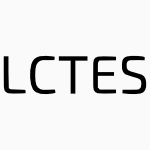 LCTES-SCOPES-2002-PalmLDM #compilation
LCTES-SCOPES-2002-PalmLDM #compilation- When to use a compilation service? (JP, HBL, AD, JEBM), pp. 194–203.
 ICLP-2002-DemoenNV #garbage collection
ICLP-2002-DemoenNV #garbage collection- Copying Garbage Collection for the WAM: To Mark or Not to Mark? (BD, PLN, RV), pp. 194–208.
 ISSTA-2002-Hartman #industrial #research
ISSTA-2002-Hartman #industrial #research- Is ISSTA research relevant to industry? (AH), pp. 205–206.
 ISSTA-2002-Peciola #industrial #research
ISSTA-2002-Peciola #industrial #research- Ericsson lab Italy: is ISSTA research relevant to industrial users? (EP), p. 207.
 CBSE-2001-StaffordW #certification
CBSE-2001-StaffordW #certification- Is Third Party Certification Necessary? (JAS, KCW), p. 5.
 WICSA-2001-Kozaczynski #architecture
WICSA-2001-Kozaczynski #architecture- Is Architecture a Product that Can Be Packaged and Sold? (WK), p. 3–?.
 ECDL-2001-AdamsB #library
ECDL-2001-AdamsB #library- Digital Libraries in a Clinical Setting: Friend or Foe? (AA, AB), pp. 213–224.
 ECDL-2001-FreestonH #development #what
ECDL-2001-FreestonH #development #what- What’s Holding Up the Development of Georeferenced DLs? (MF, LLH), p. 458.
 HT-2001-Hall01a #semantics #web
HT-2001-Hall01a #semantics #web- The semantic web: who needs it? (WH), p. 5.
 HT-2001-Ryu #hypermedia
HT-2001-Ryu #hypermedia- Is EOS the dawn of hypertext literature in Korea? (HR), pp. 139–140.
 CSEET-2001-JovanovicSS #independence #re-engineering #source code
CSEET-2001-JovanovicSS #independence #re-engineering #source code- Independent Accreditation for Software Engineering Programs? (VMJ, DS, LS), pp. 75–76.
 ITiCSE-2001-CarterJ #difference #gender #programming
ITiCSE-2001-CarterJ #difference #gender #programming- Gender differences in programming? (JC, TJ), p. 173.
 ITiCSE-2001-ClearD #effectiveness
ITiCSE-2001-ClearD #effectiveness- A cyber-icebreaker for an effective virtual group? (TC, MD), pp. 121–124.
 ITiCSE-2001-ClearY #research #rest
ITiCSE-2001-ClearY #research #rest- Are computing educators and researchers different from the rest? (TC, AY), p. 173.
 CSMR-2001-AbreuG #composition
CSMR-2001-AbreuG #composition- Coupling and Cohesion as Modularization Drivers: Are We Being Over-Persuaded? (FBeA, MG), pp. 47–57.
 ICSM-2001-SiyV
ICSM-2001-SiyV - Does the Modern Code Inspection Have Value? (HPS, LGV), p. 281–?.
 PASTE-2001-Hind #analysis #pointer #problem
PASTE-2001-Hind #analysis #pointer #problem- Pointer analysis: haven’t we solved this problem yet? (MH), pp. 54–61.
 PASTE-2001-Webber #invariant #what
PASTE-2001-Webber #invariant #what- What is a class invariant? (ABW), pp. 86–89.
 CIAA-2001-Gaal #finite #transducer
CIAA-2001-Gaal #finite #transducer- Is this Finite-State Transducer Sequentiable? (TG), pp. 125–134.
 ICALP-2001-Nielsen #modelling #partial order #why
ICALP-2001-Nielsen #modelling #partial order #why- Modelling with Partial Orders — Why and Why Not? (MN), pp. 61–63.
 RTA-2001-Ringeissen
RTA-2001-Ringeissen - Matching with Free Function Symbols — A Simple Extension of Matching? (CR), pp. 276–290.
 CHI-2001-RoddenBSW #image #similarity
CHI-2001-RoddenBSW #image #similarity- Does organisation by similarity assist image browsing? (KR, WB, DS, KRW), pp. 190–197.
 SVIS-2001-DemetrescuFS #algorithm #specification #visualisation
SVIS-2001-DemetrescuFS #algorithm #specification #visualisation- Specifying Algorithm Visualizations: Interesting Events or State Mapping? (CD, IF, JTS), pp. 16–30.
 ICEIS-v1-2001-KG #enterprise #information management #mobile
ICEIS-v1-2001-KG #enterprise #information management #mobile- Knowledge Transfer as Enterprise Perpetuum Mobile? (AK, AG), pp. 522–525.
 CIKM-2001-Neuhold #database #web #xml
CIKM-2001-Neuhold #database #web #xml- XML, the WEB and Database Functionality? (EJN), p. 592.
 CIKM-2001-Rosenthal #documentation #security #what
CIKM-2001-Rosenthal #documentation #security #what- What Can Researches Do to Improve Security of Data and Documents? (AR), p. 593.
 CIKM-2001-RosenthalW #data access #documentation
CIKM-2001-RosenthalW #data access #documentation- Document Release versus Data Access Controls: Two Sides of the Same Coin? (AR, GW), pp. 544–546.
 KDD-2001-Edelstein #data mining #mining
KDD-2001-Edelstein #data mining #mining- Data mining: are we there yet? (HE), p. 7.
 MLDM-2001-Perner #classification #reasoning
MLDM-2001-Perner #classification #reasoning- Are Case-Based Reasoning and Dissimilarity-Based Classification Two Sides of the Same Coin? (PP), pp. 35–51.
 SEKE-2001-Vegas #testing #what
SEKE-2001-Vegas #testing #what- What Information is Relevant when Selecting Testing Techniques? (SV), pp. 45–52.
 SIGIR-2001-Kauwell #internet #visualisation
SIGIR-2001-Kauwell #internet #visualisation- Does Visualization Improve Our Ability to Find and Learn from Internet Based Information? (DAK, JL, HJY, YJL, JE, AB), p. 453.
 TOOLS-USA-2001-Thompson #named #what
TOOLS-USA-2001-Thompson #named #what- SOAP: What Is It and What Is It Good For? (PT), p. 364.
 AdaEurope-2001-BrosgolD #java #realtime
AdaEurope-2001-BrosgolD #java #realtime- Can Java Meet Its Real-Time Deadlines? (BMB, BD), pp. 68–87.
 PPDP-2001-Schmidt #declarative #programming #uml
PPDP-2001-Schmidt #declarative #programming #uml- Should UML Be Used for Declarative Programming? (DAS), pp. 1–3.
 PPDP-2001-SchulteS #bound
PPDP-2001-SchulteS #bound- When Do Bounds and Domain Propagation Lead to the Same Search Space? (CS, PJS), pp. 115–126.
 RE-2001-GauseR
RE-2001-GauseR - Where Are We on the “Fend off the Alligators — Drain the Swamp” Continuum? (DCG, SR), p. 266.
 RE-2001-Gonzales #what
RE-2001-Gonzales #what- Systems or Software: What Should the “S” in SRE Stand for? (RG), p. 281.
 RE-2001-Greenspan #requirements #what
RE-2001-Greenspan #requirements #what- Extreme RE: What If There Is No Time for Requirements Engineering? (SJG), pp. 282–285.
 RE-2001-HammondRH
RE-2001-HammondRH - Will It Work? (JH, RR, AH), pp. 102–109.
 RE-2001-Lowry #requirements #synthesis
RE-2001-Lowry #requirements #synthesis- Requirements Engineering and Program Synthesis: Mutually Exclusive or Synergistic? (MRL), pp. 12–13.
 RE-2001-WesselsD #requirements #what
RE-2001-WesselsD #requirements #what- What Happens before Requirements Engineering? (BW, JED), pp. 298–299.
 DATE-2001-LockCM #framework #platform #programmable
DATE-2001-LockCM #framework #platform #programmable- The programmable platform: does one size fit all? (AL, RC, HM), pp. 226–227.
 DATE-2001-YeungHMMZ #integration #standard #what
DATE-2001-YeungHMMZ #integration #standard #what- Standard bus vs. bus wrapper: what is the best solution for future SoC integration? (CY, AH, GM, JM, JZ), pp. 776–777.
 ESOP-2001-AmtoftKP #what
ESOP-2001-AmtoftKP #what- What Are Polymorphically-Typed Ambients? (TA, AJK, SMPG), pp. 206–220.
 STOC-2001-GroheSS #evaluation #query
STOC-2001-GroheSS #evaluation #query- When is the evaluation of conjunctive queries tractable? (MG, TS, LS), pp. 657–666.
 TACAS-2001-FislerFVY #algorithm #detection
TACAS-2001-FislerFVY #algorithm #detection- Is There a Best Symbolic Cycle-Detection Algorithm? (KF, RF, GK, MYV, ZY), pp. 420–434.
 ICLP-2001-Kowalski #logic
ICLP-2001-Kowalski #logic- Is Logic Really Dead or Only Just Sleeping? (RAK), pp. 2–3.
 CBSE-2000-Hall #case study #component #education #what
CBSE-2000-Hall #case study #component #education #what- Educational Case Study–What is the Model of an Ideal Component? Must it be an Object? (PH), p. 8.
 ECDL-2000-Khalil #library #using
ECDL-2000-Khalil #library #using- Are End-Users Satisfied by Using Digital Libraries? (MAK), pp. 360–363.
 HT-2000-Calvi #hypermedia
HT-2000-Calvi #hypermedia- Text and hypertext: always a binary relationship? (LC), pp. 218–219.
 SIGMOD-2000-PopaDST
SIGMOD-2000-PopaDST - A Chase Too Far? (LP, AD, AS, VT), pp. 273–284.
 SIGMOD-2000-ShuklaD #database #named #tutorial
SIGMOD-2000-ShuklaD #database #named #tutorial- Tutorial: LDAP Directory Services — Just Another Database Application? (SS, AD), p. 580.
 VLDB-2000-DeenJNNW
VLDB-2000-DeenJNNW - A 20/20 Vision of the VLDB-2020? (SMD, AJ, SBN, EJN, GW), pp. 655–659.
 VLDB-2000-HinneburgAK #nearest neighbour #what
VLDB-2000-HinneburgAK #nearest neighbour #what- What Is the Nearest Neighbor in High Dimensional Spaces? (AH, CCA, DAK), pp. 506–515.
 CSEET-2000-Bach #re-engineering
CSEET-2000-Bach #re-engineering- Software Engineering — Coming of Age or Reaching Too Far? (JB), p. 3–?.
 CSEET-2000-Tremblay #formal method #re-engineering
CSEET-2000-Tremblay #formal method #re-engineering- Formal Methods: Mathematics, Computer Science, or Software Engineering? (GT), pp. 273–282.
 ITiCSE-2000-HaganM #experience #programming
ITiCSE-2000-HaganM #experience #programming- Does it help to have some programming experience before beginning a computing degree program? (DH, SM), pp. 25–28.
 ITiCSE-2000-Klassner #development #web
ITiCSE-2000-Klassner #development #web- Can Web development courses avoid obsolescence? (FK), pp. 77–80.
 ITiCSE-2000-MajVC
ITiCSE-2000-MajVC - Is computer technology taught upside down? (SPM, DV, PC), pp. 140–143.
 WCRE-J-1997-StoreyWM00 #comprehension #how #source code #tool support
WCRE-J-1997-StoreyWM00 #comprehension #how #source code #tool support- How do program understanding tools affect how programmers understand programs? (MADS, KW, HAM), pp. 183–207.
 ICSM-2000-Chapin00a #maintenance #what
ICSM-2000-Chapin00a #maintenance #what- Do We Know What Preventive Maintenance Is? (NC), pp. 15–17.
 ICSM-2000-Kajko-Mattsson #exclamation #maintenance #what
ICSM-2000-Kajko-Mattsson #exclamation #maintenance #what- Preventive Maintenance! Do We Know What It Is? (MKM), pp. 12–14.
 ICSM-2000-SahraouiGM #automation #design #metric #object-oriented #quality
ICSM-2000-SahraouiGM #automation #design #metric #object-oriented #quality- Can Metrics Help to Bridge the Gap between the Improvement of OO Design Quality and its Automation? (HAS, RG, TM), pp. 154–162.
 ICSM-2000-Vehvilainen #maintenance #what
ICSM-2000-Vehvilainen #maintenance #what- What Is Preventive Software Maintenance? (RV), p. 18–?.
 IWPC-2000-Petre #empirical #how #in the large
IWPC-2000-Petre #empirical #how #in the large- Empirical Studies of Programming-in-the-Large: How? (MP), p. 254.
 ICALP-2000-Hastad #algorithm #approximate #np-hard #optimisation #performance #problem
ICALP-2000-Hastad #algorithm #approximate #np-hard #optimisation #performance #problem- Which NP-Hard Optimization Problems Admit Non-trivial Efficient Approximation Algorithms? (JH), p. 235.
 IFM-2000-Schulte #formal method #why
IFM-2000-Schulte #formal method #why- Why Doesn’t Anyone Use Formal Methods? (WS), pp. 297–298.
 CHI-2000-FrokjaerHH #correlation #effectiveness #performance #usability
CHI-2000-FrokjaerHH #correlation #effectiveness #performance #usability- Measuring usability: are effectiveness, efficiency, and satisfaction really correlated? (EF, MH, KH), pp. 345–352.
 CSCW-2000-Greif #internet #research
CSCW-2000-Greif #internet #research- Research at internet speed: is it necessary? (IG), p. 363.
 CSCW-2000-TeasleyCKO #how
CSCW-2000-TeasleyCKO #how- How does radical collocation help a team succeed? (SDT, LC, MSK, JSO), pp. 339–346.
 CAiSE-2000-KaindlM #research #why
CAiSE-2000-KaindlM #research #why- Why Is It So Difficult to Introduce RE Research Results into Mainstream RE Practice? (HK, JM), pp. 7–12.
 ICEIS-2000-Seddon #case study #framework #multi
ICEIS-2000-Seddon #case study #framework #multi- Case Study: Can a Multi Terabyte Data Warehouse Be Built on a ORACLE/UNIX Platform? (DS), p. XLV.
 ICEIS-2000-Vaast #how #why
ICEIS-2000-Vaast #how #why- Exploring Intranets: Why and How to Study Intranets in French Firms? (EV), pp. 499–505.
 CIKM-2000-AmitayP #automation #web
CIKM-2000-AmitayP #automation #web- Automatically Summarising Web Sites — Is There A Way Around It? (EA, CP), pp. 173–179.
 ICPR-v2-2000-KunchevaWSD #classification #independence
ICPR-v2-2000-KunchevaWSD #classification #independence- Is Independence Good For Combining Classifiers? (LIK, CJW, CAS, RPWD), pp. 2168–2171.
 ICPR-v3-2000-Serra #pattern matching #pattern recognition #physics #recognition
ICPR-v3-2000-Serra #pattern matching #pattern recognition #physics #recognition- Is Pattern Recognition a Physical Science? (JS), pp. 3033–3040.
 KDD-2000-GavrilovAIM #mining
KDD-2000-GavrilovAIM #mining- Mining the stock market (extended abstract): which measure is best? (MG, DA, PI, RM), pp. 487–496.
 KDD-2000-PeiH #constraints #mining
KDD-2000-PeiH #constraints #mining- Can we push more constraints into frequent pattern mining? (JP, JH), pp. 350–354.
 SIGIR-2000-HershTPCKSO #evaluation
SIGIR-2000-HershTPCKSO #evaluation- Do batch and user evaluation give the same results? (WRH, AT, SP, BC, DK, LS, DO), pp. 17–24.
 TOOLS-USA-2000-MaleyS
TOOLS-USA-2000-MaleyS - But Who Will Guard the Guardians? (DM, ITAS), pp. 227–238.
 AdaEurope-2000-Kallberg #ada
AdaEurope-2000-Kallberg #ada- Is an Ada Lint Necessary? (BK), pp. 29–40.
 AdaEurope-2000-Pflug #ada
AdaEurope-2000-Pflug #ada- Ada after 10 Years of Usage — Is There a Commercial Future? (BP), p. 4.
 PEPM-2000-LiuS #optimisation #recursion #what
PEPM-2000-LiuS #optimisation #recursion #what- From Recursion to Iteration: What are the Optimizations? (YAL, SDS), pp. 73–82.
 ICRE-2000-Gause #requirements #what
ICRE-2000-Gause #requirements #what- Requirements Engineering: What Have We Accomplished? Where Are We Now? Where Are We Going? (DCG), pp. 195–196.
 ICRE-2000-Greenspan #requirements #why
ICRE-2000-Greenspan #requirements #why- Why is it so Easy to Introduce Requirements Engineering Technology Transfer Panels into Mainstream Practice? (SJG), pp. 69–70.
 ICRE-2000-Kaindl #requirements #research #why
ICRE-2000-Kaindl #requirements #research #why- Why is it so Difficult to Introduce Requirements Engineering Research Results into Mainstream Requirements Engineering Practice? (HK), pp. 67–68.
 ICRE-2000-Leite #research
ICRE-2000-Leite #research- Is there a Gap between RE Research and RE Practice? (JCSdPL), pp. 73–74.
 ICRE-2000-Mead #requirements #research #why
ICRE-2000-Mead #requirements #research #why- Why is it so Difficult to Introduce Requirements Engineering Research Results into Mainstream Requirements Engineering Practice? (NRM), pp. 75–76.
 FSE-2000-Rashid
FSE-2000-Rashid - The shape of things to come? (RFR), p. 169.
 ICSE-2000-Bryant #problem #re-engineering
ICSE-2000-Bryant #problem #re-engineering- It’s engineering Jim ... but not as we know it: software engineering — solution to the software crisis, or part of the problem? (AB), pp. 78–87.
 ICSE-2000-Castells
ICSE-2000-Castells - Is the new economy socially sustainable? (MC), p. 2.
 ICSE-2000-Edwards #online #quality #re-engineering
ICSE-2000-Edwards #online #quality #re-engineering- Can quality graduate software engineering courses really be delivered asynchronously on-line? (SE), pp. 676–679.
 ICSE-2000-Widmaier #maturity #process #re-engineering #reliability #state of the art
ICSE-2000-Widmaier #maturity #process #re-engineering #reliability #state of the art- Producing more reliable software: mature software engineering process vs. state-of-the-art technology? (JCW), pp. 88–93.
 CC-2000-Vallee-RaiGHLPS #bytecode #framework #java #optimisation #using
CC-2000-Vallee-RaiGHLPS #bytecode #framework #java #optimisation #using- Optimizing Java Bytecode Using the Soot Framework: Is It Feasible? (RVR, EG, LJH, PL, PP, VS), pp. 18–34.
 DAC-2000-CaldwellKM #recursion
DAC-2000-CaldwellKM #recursion- Can recursive bisection alone produce routable placements? (AEC, ABK, ILM), pp. 477–482.
 DAC-2000-ZorianM #design #how
DAC-2000-ZorianM #design #how- System chip test: how will it impact your design? (YZ, EJM), pp. 136–141.
 DATE-2000-CatthoorDK #architecture #compilation #data transfer #how #memory management
DATE-2000-CatthoorDK #architecture #compilation #data transfer #how #memory management- How to Solve the Current Memory Access and Data Transfer Bottlenecks: At the Processor Architecture or at the Compiler Level? (FC, NDD, CEK), pp. 426–433.
 DATE-2000-LennardSJHH #design #standard
DATE-2000-LennardSJHH #design #standard- Standards for System-Level Design: Practical Reality or Solution in Search of a Question? (CKL, PS, GGdJ, AH, PH), pp. 576–583.
 HPCA-2000-BurnsG #layout #smt
HPCA-2000-BurnsG #layout #smt- Quantifying the SMT Layout Overhead — Does SMT Pull Its Weight? (JB, JLG), pp. 109–120.
 FASE-2000-Kondoh #re-engineering #what
FASE-2000-Kondoh #re-engineering #what- What is “Mathematicalness” in Software Engineering? (HK), pp. 163–177.
 STOC-2000-BuhrmanMRV
STOC-2000-BuhrmanMRV - Are bitvectors optimal? (HB, PBM, JR, SV), pp. 449–458.
 STOC-2000-Reed #how
STOC-2000-Reed #how- How tall is a tree? (BAR), pp. 479–483.
 CAV-2000-BouyerDFP #automaton
CAV-2000-BouyerDFP #automaton- Are Timed Automata Updatable? (PB, CD, EF, AP), pp. 464–479.
 ISSTA-2000-HindP #analysis #pointer
ISSTA-2000-HindP #analysis #pointer- Which pointer analysis should I use? (MH, AP), pp. 113–123.
- DL-1999-CombsB #image
- Does Zooming Improve Image Browsing? (TTAC, BBB), pp. 130–137.
 SIGMOD-1999-CareyCNVDRSM #what
SIGMOD-1999-CareyCNVDRSM #what- O-O, What’s Happening to DB2? (MJC, DDC, SN, BV, DD, SR, RS, NMM), pp. 511–512.
 VLDB-1999-AilamakiDHW
VLDB-1999-AilamakiDHW - DBMSs on a Modern Processor: Where Does Time Go? (AA, DJD, MDH, DAW), pp. 266–277.
 VLDB-1999-CareyCNVDRSM #what
VLDB-1999-CareyCNVDRSM #what- O-O, What Have They Done to DB2? (MJC, DDC, SN, BV, DD, SR, RS, NMM), pp. 542–553.
 VLDB-1999-DeRose #what #xml
VLDB-1999-DeRose #what #xml- What Do Those Weird XML Types Want, Anyway? (SJD), pp. 721–724.
 VLDB-1999-JagadishLS #what
VLDB-1999-JagadishLS #what- What can Hierarchies do for Data Warehouses? (HVJ, LVSL, DS), pp. 530–541.
 ITiCSE-1999-Balbin #quality
ITiCSE-1999-Balbin #quality- Is your degree quality endorsed? (IB), pp. 60–63.
 ITiCSE-1999-CarterJ #gender #programming #what
ITiCSE-1999-CarterJ #gender #programming #what- Gender and programming: what’s going on? (JC, TJ), pp. 1–4.
 ITiCSE-1999-Gerhardt-PowalsP
ITiCSE-1999-Gerhardt-PowalsP - The digital millennium copyright act: an international assault on fair use? (JGP, MHP), p. 191.
 ITiCSE-1999-YoungDM #online
ITiCSE-1999-YoungDM #online- Who wants to learn online? (SY, RD, MM), p. 207.
 ICALP-1999-Senizergues
ICALP-1999-Senizergues - T(A) = T(B)? (GS), pp. 665–675.
 FM-v1-1999-Rushby #formal method
FM-v1-1999-Rushby #formal method- Mechanized Formal Methods: Where Next? (JMR), pp. 48–51.
 ICFP-1999-Longley #functional
ICFP-1999-Longley #functional- When is a Functional Program Not a Functional Program? (JL), pp. 1–7.
 ICFP-1999-WallaceR #combinator #haskell #type system #xml
ICFP-1999-WallaceR #combinator #haskell #type system #xml- Haskell and XML: Generic Combinators or Type-Based Translation? (MW, CR), pp. 148–159.
 AGTIVE-1999-Levialdi #visual notation
AGTIVE-1999-Levialdi #visual notation- Visual Languages: Where Do We Stand? (SL), pp. 145–164.
 HCI-CCAD-1999-BismarckH #communication
HCI-CCAD-1999-BismarckH #communication- Is informal communication needed, wanted and supported? (WBvB, MH), pp. 477–481.
 HCI-CCAD-1999-BoschianLDMJ #artificial reality #how #people
HCI-CCAD-1999-BoschianLDMJ #artificial reality #how #people- How can people with disabilities navigate in virtual reality with an input device they can use? (KB, AL, RCD, UM, GJ), pp. 1111–1115.
 HCI-CCAD-1999-WhiteC #web #what
HCI-CCAD-1999-WhiteC #web #what- What are you looking at on the web: information or applications? (DW, YYC), pp. 76–79.
 HCI-EI-1999-BergB #enterprise #multi #user interface #why
HCI-EI-1999-BergB #enterprise #multi #user interface #why- Why extending ERP software with multi-user interfaces? (RJvdB, IMBS), pp. 1083–1087.
 HCI-EI-1999-BurmesterPRW #design
HCI-EI-1999-BurmesterPRW #design- Aesthetic design — just an add on? (MB, AP, UR, BW), pp. 671–675.
 HCI-EI-1999-Canamero #human-computer #what
HCI-EI-1999-Canamero #human-computer #what- What Emotions are Necessary for HCI? (DC), pp. 838–842.
 HCI-EI-1999-Chavan
HCI-EI-1999-Chavan - Another Software for Another Society? (ALC), pp. 511–515.
 HCI-EI-1999-Cierjacks
HCI-EI-1999-Cierjacks - Acquiring Tasks: A Better Way Than Asking? (MC), pp. 1194–1198.
 HCI-EI-1999-DzidaF #documentation #prototype
HCI-EI-1999-DzidaF #documentation #prototype- Documentation of Prototypes in Terms of Use Scenarios: Nice to Have or Indispensable? (WD, RF), pp. 905–908.
 HCI-EI-1999-HansenS #what
HCI-EI-1999-HansenS #what- 200, 000, 000, 000 Call Records — Now What Do We Do? (RSH, RKS), pp. 1158–1161.
 HCI-EI-1999-Holmquist
HCI-EI-1999-Holmquist - Will Baby Faces Ever Grow up? (LEH), pp. 706–709.
 HCI-EI-1999-Kuutti99a #community #human-computer #interface
HCI-EI-1999-Kuutti99a #community #human-computer #interface- Small interfaces — a blind spot of the academical HCI community? (KK), pp. 710–714.
 HCI-EI-1999-PrabhuH #design #user interface #validation
HCI-EI-1999-PrabhuH #design #user interface #validation- GUI Design Preference Validation for Japan and China — A Case for KANSEI Engineering? (GVP, DH), pp. 521–525.
 ICEIS-1999-Carneiro #effectiveness #how
ICEIS-1999-Carneiro #effectiveness #how- How Decision Support Systems Influence Management Decision Effectiveness? (AC), pp. 51–58.
 ACIR-1999-Rodden #how #people
ACIR-1999-Rodden #how #people- How Do People Organise Their Photographs? (KR).
 CIKM-1999-Giles #web #what
CIKM-1999-Giles #web #what- Searching the Web: Can You Find What You Want? (CLG), pp. 1–2.
 UML-1999-MillerW #classification #how
UML-1999-MillerW #classification #how- How Can Anything be Both a Classifier and a Package? (JM, RWB), pp. 584–597.
 TOOLS-EUROPE-1999-Henderson-SellersB #what
TOOLS-EUROPE-1999-Henderson-SellersB #what- What is This Thing Called Aggregation? (BHS, FB), pp. 236–250.
 TOOLS-PACIFIC-1999-SchmolitzkyEKM #how #type safety
TOOLS-PACIFIC-1999-SchmolitzkyEKM #how #type safety- How Can Covariance in Pragmatical Class Methods be Made Statically Type-Safe? (AS, ME, JLK, GM), pp. 200–209.
 TOOLS-USA-1999-GrissCBKO #workflow
TOOLS-USA-1999-GrissCBKO #workflow- Agents and Workflow — An Intimate Connection, or Just Friends? (MLG, QC, GAB, RRK, LJO), pp. 558–562.
 AdaEurope-1999-PautetQT #corba
AdaEurope-1999-PautetQT #corba- CORBA & DSA: Divorce or Marriage? (LP, TQ, ST), pp. 211–225.
 PLDI-1999-CraryHP #recursion #what
PLDI-1999-CraryHP #recursion #what- What is a Recursive Module? (KC, RH, SP), pp. 50–63.
 SIGAda-1999-PautetT #distributed #what
SIGAda-1999-PautetT #distributed #what- What future for the distributed systems annex? (LP, ST), pp. 77–82.
 SIGAda-1999-Tonndorf #ada #programming language
SIGAda-1999-Tonndorf #ada #programming language- Ada conformity assessments: a model for other programming languages? (MT), pp. 89–99.
 RE-1999-Easterbrook #how #multi
RE-1999-Easterbrook #how #multi- How Multi-Disciplinary Is RE (really)? (SME, BN), p. 33–?.
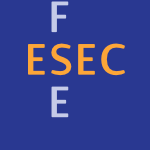 ESEC-FSE-1999-GiannakopoulouMK
ESEC-FSE-1999-GiannakopoulouMK - Checking Progress with Action Priority: Is it Fair? (DG, JM, JK), pp. 511–527.
 ESEC-FSE-1999-Zeller #why
ESEC-FSE-1999-Zeller #why- Yesterday, My Program Worked. Today, It Does Not. Why? (AZ), pp. 253–267.
 ICSE-1999-Fordham #maturity #process
ICSE-1999-Fordham #maturity #process- Software Process Maturity: Is Level five Enough? (RGF), p. 611.
 DAC-1999-FranzonBFMPSW #how
DAC-1999-FranzonBFMPSW #how- Parasitic Extraction Accuracy — How Much is Enough? (PDF, MB, AF, SM, RP, RCS, MW), p. 429.
 DAC-1999-PrasadCK #why
DAC-1999-PrasadCK #why- Why is ATPG Easy? (MRP, PC, KK), pp. 22–28.
 DATE-1999-NebelM #ada #c #java #specification
DATE-1999-NebelM #ada #c #java #specification- Java, VHDL-AMS, ADA or C for System Level Specifications? (WN, EM), p. 720.
 HPDC-1999-Nahrstedt #resource management
HPDC-1999-Nahrstedt #resource management- To Overprovision or To Share via QoS-aware Resource Management? (KN), pp. 205–212.
 HPDC-1999-Weissman #fault tolerance #grid #what
HPDC-1999-Weissman #fault tolerance #grid #what- Fault Tolerant Computing on the Grid: What are My Options? (JBW), pp. 351–352.
 STOC-1999-CanettiO #what
STOC-1999-CanettiO #what- Secure Computation with Honest-Looking Parties: What If Nobody Is Truly Honest? (RC, RO), pp. 255–264.
 ECDL-1998-FaensenHS #library #requirements
ECDL-1998-FaensenHS #library #requirements- Alerting in a Digital Library Environment: Do Channels Meet the Requirements? (DF, AH, HS), pp. 643–644.
 ECDL-1998-Houstis #how #repository #scalability #towards #what
ECDL-1998-Houstis #how #repository #scalability #towards #what- Federated Scientific Data Repositories for the Environment Towards Global Scalable Management of Environmental Information: How Useful Will They Be? What Is Their Potential Impact? Shall We Save the Environment? (CEH), pp. 741–742.
 ECDL-1998-Zamparelli #internet
ECDL-1998-Zamparelli #internet- Internet Publications: Pay-per-Use or Pay-per-Subscription? (RZ), pp. 635–636.
 HT-1998-CarrHH
HT-1998-CarrHH - Link services or link agents? (LC, WH, SH), pp. 113–122.
 HT-1998-Wenz #named
HT-1998-Wenz #named- Grammatron: Filling the Gap? (KW), pp. 303–304.
 SIGMOD-1998-AndersonBKW #consistency #replication
SIGMOD-1998-AndersonBKW #consistency #replication- Replication, Consistency, and Practicality: Are These Mutually Exclusive? (TAA, YB, HFK, AW), pp. 484–495.
 SIGMOD-1998-ChaudhuriMN #how #random
SIGMOD-1998-ChaudhuriMN #how #random- Random Sampling for Histogram Construction: How much is enough? (SC, RM, VRN), pp. 436–447.
 VLDB-1998-BlottKS #communication #how #what
VLDB-1998-BlottKS #communication #how #what- Information, Communication, and Money: For What Can We Charge and How Can We Meter It? (SB, HFK, AS), p. 697.
 VLDB-1998-FlorescuLS #database #problem
VLDB-1998-FlorescuLS #database #problem- Is Web-site Management a Database Problem? (DF, AYL, DS), p. 696.
 ITiCSE-1998-Carswell #internet #paradigm #towards
ITiCSE-1998-Carswell #internet #paradigm #towards- The “Virtual University”: toward an Internet paradigm? (LC), pp. 46–50.
 ITiCSE-1998-CurzonR #programming #student #why
ITiCSE-1998-CurzonR #programming #student #why- Why do students take programming modules? (PC, JR), pp. 59–63.
 ITiCSE-1998-GonzalezC #education #multi
ITiCSE-1998-GonzalezC #education #multi- Multimedia education — quo vadis? (RG, GC), pp. 90–93.
 ICSM-1998-Bennett #program transformation #reverse engineering
ICSM-1998-Bennett #program transformation #reverse engineering- Do Program Transformations Help Reverse Engineering? (KHB), p. 247–?.
 ICSM-1998-CherinkaOR #maintenance #off the shelf #programming #static analysis
ICSM-1998-CherinkaOR #maintenance #off the shelf #programming #static analysis- Maintaining a COTS Integrated Solution — Are Traditional Static Analysis Techniques Sufficient for this New Programming Methodology? (RC, CMO, JR), pp. 160–169.
 ICSM-1998-KhoshgoftaarA #quality
ICSM-1998-KhoshgoftaarA #quality- Can a Software Quality Model Hit a Moving Target? (TMK, EBA), pp. 68–70.
 ICSM-1998-Voas #component #delivery #off the shelf
ICSM-1998-Voas #component #delivery #off the shelf- Are COTS Products and Component Packaging Killing Software Malleability? (JMV), p. 156–?.
 ICALP-1998-Wigderson #algorithm #probability
ICALP-1998-Wigderson #algorithm #probability- Do Probabilistic Algorithms Outperform Deterministic Ones? (AW), pp. 212–214.
 CHI-1998-AaltonenHR #how
CHI-1998-AaltonenHR #how- 101 Spots, or How Do Users Read Menus? (AA, AH, KJR), pp. 132–139.
 CHI-1998-Roberts #community
CHI-1998-Roberts #community- Are Newsgroups Virtual Communities? (TLR), pp. 360–367.
 ICPR-1998-BouletreauVSE #identifier
ICPR-1998-BouletreauVSE #identifier- Handwriting and signature: one or two personality identifiers? (VB, NV, RS, HE), pp. 1758–1760.
 ICPR-1998-Gimelfarb #interactive #modelling #segmentation #what
ICPR-1998-Gimelfarb #interactive #modelling #segmentation #what- Supervised segmentation by pairwise interactions: do Gibbs models learn what we expect? (GLG), pp. 817–819.
 ICPR-1998-SchechnerK #how
ICPR-1998-SchechnerK #how- Depth from defocus vs. stereo: how different really are they? (YYS, NK), pp. 1784–1786.
 KR-1998-Horrocks #logic #using
KR-1998-Horrocks #logic #using- Using an Expressive Description Logic: FaCT or Fiction? (IH), pp. 636–649.
 SIGIR-1998-Zobel #how #information retrieval #reliability #scalability
SIGIR-1998-Zobel #how #information retrieval #reliability #scalability- How Reliable Are the Results of Large-Scale Information Retrieval Experiments? (JZ), pp. 307–314.
 UML-1998-Morand #modelling #named
UML-1998-Morand #modelling #named- Modeling: Is it Turning Informal into Formal? (BM), pp. 37–48.
 ECOOP-1998-Lange #distributed #future of #mobile
ECOOP-1998-Lange #distributed #future of #mobile- Mobile Objects and Mobile Agents: The Future of Distributed Computing? (DBL), pp. 1–12.
 OOPSLA-1998-DrossopoulouWE #java #what
OOPSLA-1998-DrossopoulouWE #java #what- What is Java Binary Compatibility? (SD, DW, SE), pp. 341–361.
 TOOLS-USA-1998-Mellor98a #behaviour #how #modelling
TOOLS-USA-1998-Mellor98a #behaviour #how #modelling- Modeling Complex Behavior Simply or How Much is Too Much? (SJM), p. 444.
 TOOLS-USA-1998-Meyer #component
TOOLS-USA-1998-Meyer #component- Can We Make Componentware Succeed? (BM), p. 3.
 AdaEurope-1998-EmeryMN #ada #automation #how #process
AdaEurope-1998-EmeryMN #ada #automation #how #process- Automating the Ada Binding Process for Java- How Far Can We Go? (DEE, RFM, KAN), pp. 29–40.
 CC-1998-KnoopKS #graph
CC-1998-KnoopKS #graph- Basic-Block Graphs: Living Dinosaurs? (JK, DK, BS), pp. 65–79.
 DAC-1998-Dill #simulation #verification #what
DAC-1998-Dill #simulation #verification #what- What’s Between Simulation and Formal Verification? (DLD), pp. 328–329.
 DAC-1998-IenneG #case study #design #experience #standard #tool support
DAC-1998-IenneG #case study #design #experience #standard #tool support- Practical Experiences with Standard-Cell Based Datapath Design Tools: Do We Really Need Regular Layouts? (PI, AG), pp. 396–401.
 ISMM-1998-JohnstoneW #memory management #problem
ISMM-1998-JohnstoneW #memory management #problem- The Memory Fragmentation Problem: Solved? (MSJ, PRW), pp. 26–36.
 ESOP-1998-KnoopRS
ESOP-1998-KnoopRS - Code Motion and Code Placement: Just Synonyms? (JK, OR, BS), pp. 154–169.
 STOC-1998-FournierK #bound
STOC-1998-FournierK #bound- Are Lower Bounds Easier over the Reals? (HF, PK), pp. 507–513.
 STOC-1998-LewinV #polynomial #towards
STOC-1998-LewinV #polynomial #towards- Checking Polynomial Identities over any Field: Towards a Derandomization? (DL, SPV), pp. 438–447.
 ISSTA-1998-Hamlet #testing #what
ISSTA-1998-Hamlet #testing #what- What Can We Learn by Testing a Program? (RGH), pp. 50–52.
 HT-1997-Engebretsen #named
HT-1997-Engebretsen #named- Hyper-news: Revolution or Contradiction? (ME), pp. 222–223.
 HT-1997-LaddCS #web #what
HT-1997-LaddCS #web #what- The World Wide Web: What Cost Simplicity? (BCL, MVC, PDS), pp. 210–211.
 ITiCSE-1997-Makkonen #collaboration #hypermedia #learning
ITiCSE-1997-Makkonen #collaboration #hypermedia #learning- Does collaborative hypertext support better engagement in learning of the basics in informatics? (PM), pp. 130–132.
 ITiCSE-WGR-1997-Turner #education
ITiCSE-WGR-1997-Turner #education- Technology in computing education: yet another bandwagon? (JT), pp. 121–124.
 WCRE-1997-StoreyWM #comprehension #how #source code #tool support
WCRE-1997-StoreyWM #comprehension #how #source code #tool support- How Do Program Understanding Tools Affect How Programmers Understand Programs? (MADS, KW, HAM), p. 12–?.
 ICALP-1997-LandweberL
ICALP-1997-LandweberL - DNA²DNA Computations: A Potential “Killer App”? (LFL, RJL), pp. 56–64.
 IFL-1997-Erwig #graph #persistent
IFL-1997-Erwig #graph #persistent- Fully Persistent Graphs — Which One To Choose? (ME), pp. 123–140.
 CHI-1997-Golovchinsky #difference #query
CHI-1997-Golovchinsky #difference #query- Queries? Links? Is there a Difference? (GG), pp. 407–414.
 CHI-1997-VolbrachtDSF #3d #effectiveness #how
CHI-1997-VolbrachtDSF #3d #effectiveness #how- How Effective are 3D Display Modes? (SV, GD, KS, GF), pp. 540–541.
 CHI-1997-WilcoxABCC #debugging #feedback #programming #visual notation
CHI-1997-WilcoxABCC #debugging #feedback #programming #visual notation- Does Continuous Visual Feedback Aid Debugging in Direct-Manipulation Programming Systems? (EMW, JWA, MMB, JJC, CRC), pp. 258–265.
 HCI-CC-1997-Blanchard #how #human-computer #interactive #standard #what
HCI-CC-1997-Blanchard #how #human-computer #interactive #standard #what- International Standards on Human-Computer Interaction: What is Out There and How Will it be Implemented? (HEB), pp. 599–602.
 HCI-CC-1997-Long #human-computer
HCI-CC-1997-Long #human-computer- Twenty-Five Years of HCI: Growth Without Progress? (JL), pp. 197–200.
 HCI-CC-1997-SalimM #named #what
HCI-CC-1997-SalimM #named #what- Groupware: What You See Is What You Need? (SSS, LAM), pp. 53–56.
 HCI-CC-1997-ShafferC #identification #reduction #why
HCI-CC-1997-ShafferC #identification #reduction #why- Identifying Areas for Workload Reduction Through System Changes: Why Bother? (MTS, HKC), pp. 497–500.
 HCI-CC-1997-ShihG #design #guidelines
HCI-CC-1997-ShihG #design #guidelines- Do Existing Menu Design Guidelines Work in Chinese? (HMS, RSG), pp. 161–164.
 HCI-CC-1997-TakedaH
HCI-CC-1997-TakedaH - Does the Circadian Rhythm of VDT Operators Cause Fluctuations of CFF Value that to Mask Fatigue Variations During Work Load? (MT, YH), pp. 563–566.
 HCI-SEC-1997-ArcherAR
HCI-SEC-1997-ArcherAR - Software Durability — Is it Important? Can it be Achieved? (SGA, LA, CR), pp. 593–596.
 HCI-SEC-1997-Hakiel #how #re-engineering #usability
HCI-SEC-1997-Hakiel #how #re-engineering #usability- Usability Engineering and Software Engineering: How Do They Relate? (SH), pp. 521–524.
 HCI-SEC-1997-Hollnagel
HCI-SEC-1997-Hollnagel - Building Joint Cognitive Systems: A Case of Horses for Courses? (EH), pp. 39–42.
 HCI-SEC-1997-HollnagelH #communication #lessons learnt #problem
HCI-SEC-1997-HollnagelH #communication #lessons learnt #problem- Twenty-Five Years of Operator-Process Communication: Lessons Learned and Problems Solved? (EH, JØH), pp. 221–224.
 HCI-SEC-1997-MerkleM #interactive #scalability
HCI-SEC-1997-MerkleM #interactive #scalability- Are Interactive Media as Large as Life and Half as Natural? (LEM, REM), pp. 55–58.
 HCI-SEC-1997-Moustakis #human-computer #machine learning #people
HCI-SEC-1997-Moustakis #human-computer #machine learning #people- Do People in HCI Use Machine Learning? (VM), pp. 95–98.
 HCI-SEC-1997-NorrisW #performance #video
HCI-SEC-1997-NorrisW #performance #video- Supporting Task Performance: Is Text or Video Better? (BEN, WBLW), pp. 647–650.
 HCI-SEC-1997-PedraliB #analysis #process
HCI-SEC-1997-PedraliB #analysis #process- Can We Trace Back Cognitive Processes in Root Cause Analysis? (MP, RB), pp. 59–62.
 HCI-SEC-1997-ShirabeB #3d #game studies #interface #realtime
HCI-SEC-1997-ShirabeB #3d #game studies #interface #realtime- Do Three Dimensional Realtime Interfaces Really Play Important Roles? (MS, YB), pp. 849–852.
 HCI-SEC-1997-SingerW #named
HCI-SEC-1997-SingerW #named- Presence: Where Are We Now? (MJS, BGW), pp. 885–888.
 HCI-SEC-1997-Stary97a #interactive #modelling #specification
HCI-SEC-1997-Stary97a #interactive #modelling #specification- The Role of Interaction Modeling in Future Cognitive Ergonomics: Do Interaction Models Lead to Formal Specification of Involved Machine Intelligence? (CS), pp. 91–94.
 HCI-SEC-1997-Tarpin-BernardD #design pattern #interactive #named
HCI-SEC-1997-Tarpin-BernardD #design pattern #interactive #named- AMF: A New Design Pattern for Complex Interactive Software? (FTB, BTD), pp. 351–354.
 HCI-SEC-1997-UenoSO #html
HCI-SEC-1997-UenoSO #html- Book Based View and Scroll Based View: Which is Suited for HTML Viewers? (KU, KS, HO), pp. 795–798.
 HCI-SEC-1997-WilsonNH
HCI-SEC-1997-WilsonNH - Presence and Side Effects: Complementary or Contradictory? (JRW, SN, CH), pp. 889–892.
 EDOC-1997-ThissenLL #corba #data transfer #enterprise #industrial #requirements
EDOC-1997-ThissenLL #corba #data transfer #enterprise #industrial #requirements- Can CORBA Fulfill Data Transfer Requirements of Industrial Enterprises? (DT, CLP, SL), p. 129–?.
 SIGIR-1997-FitzpatrickD #automation #feedback #query #social #using
SIGIR-1997-FitzpatrickD #automation #feedback #query #social #using- Automatic Feedback Using Past Queries: Social Searching? (LF, MD), pp. 306–313.
 UML-1997-NuttgensFZ #integration #modelling #process #uml
UML-1997-NuttgensFZ #integration #modelling #process #uml- Business Process Modeling with EPC and UML: Transformation or Integration? (MN, TF, VZ), pp. 250–261.
 OOPSLA-1997-Alagic
OOPSLA-1997-Alagic - The ODMG Object Model: Does it Make Sense? (SA), pp. 253–270.
 TOOLS-USA-1997-PotterS #eiffel #java #named
TOOLS-USA-1997-PotterS #eiffel #java #named- Keynotes: Java and Eiffel: A de facto relationship? (JP, RS), p. 3.
 PLILP-1997-Serrano #how
PLILP-1997-Serrano #how- Inline Expansion: When and How? (MS), pp. 143–157.
 POPL-1997-PlezbertC
POPL-1997-PlezbertC - Is “Just in Time” = “Better Late than Never”? (MPP, RC), pp. 120–131.
 SAS-1997-Harrison #abstract interpretation #compilation
SAS-1997-Harrison #abstract interpretation #compilation- Can Abstract Interpretation Become a Mainstream Compiler Technology? (LH), p. 395.
 TRI-Ada-1997-Lawlis #ada
TRI-Ada-1997-Lawlis #ada- Is the Answer Always Ada? (PKL), pp. 297–302.
 RE-1997-Hall #requirements #using #what
RE-1997-Hall #requirements #using #what- What’s the Use of Requirements Engineering? (AH), p. 2–?.
 RE-1997-Miller #how #requirements #research
RE-1997-Miller #how #requirements #research- How Can Requirements Engineering Research Become Requirements Engineering Practice? (SM), p. 260.
 ESEC-FSE-1997-Maibaum #education #what
ESEC-FSE-1997-Maibaum #education #what- What We Teach Software Engineers in the University: Do We Take Engineering Seriously? (TSEM), pp. 40–50.
 SAC-1997-ChungP #algorithm #problem #representation #search-based #why
SAC-1997-ChungP #algorithm #problem #representation #search-based #why- Why is problem-dependent and high-level representation scheme better in a genetic algorithm? (SC, RP), pp. 239–246.
 DAC-1997-Man #education
DAC-1997-Man #education- Education for the Deep Submicron Age: Business as Usual? (HDM), pp. 307–312.
 SOSP-1997-AndersonBDGHLSVWW #profiling
SOSP-1997-AndersonBDGHLSVWW #profiling- Continuous Profiling: Where Have All the Cycles Gone? (JAMA, LMB, JD, SG, MRH, STL, RLS, MTV, CAW, WEW), pp. 1–14.
 STOC-1997-AlonDMPT #linear
STOC-1997-AlonDMPT #linear- Is Linear Hashing Good? (NA, MD, PBM, EP, GT), pp. 465–474.
 STOC-1997-Mulmuley #algebra #exclamation #proving
STOC-1997-Mulmuley #algebra #exclamation #proving- Is There an Algebraic Proof for P != NC? (KM), pp. 210–219.
 TAPSOFT-1997-Sanella #what
TAPSOFT-1997-Sanella #what- What Does the Future Hold for Theoretical Computer Science? (DS), pp. 15–19.
 LICS-1997-DziembowskiJW #game studies #how #infinity #memory management
LICS-1997-DziembowskiJW #game studies #how #infinity #memory management- How Much Memory is Needed to Win Infinite Games? (SD, MJ, IW), pp. 99–110.
- DL-1996-KelloggS #clustering #hypermedia #library #problem
- Text to Hypertext: Can Clustering Solve the Problem in Digital Libraries? (RBK, MS), pp. 144–150.
 PODS-1996-PagelS #query
PODS-1996-PagelS #query- Are Window Queries Representative for Arbitrary Range Queries? (BUP, HWS), pp. 150–160.
 SIGMOD-1996-GoyalHKMS #database #problem #programming #research #user interface
SIGMOD-1996-GoyalHKMS #database #problem #programming #research #user interface- Is GUI Programming a Database Research Problem? (NG, CH, RK, BM, MS), pp. 517–528.
 CSEE-1996-Ryan #education #industrial #re-engineering
CSEE-1996-Ryan #education #industrial #re-engineering- Meeting Industry’s Needs — Should We Teach the Software Engineering of the Past? (KR), pp. 218–220.
 ITiCSE-1996-ProulxRF #education #how #what
ITiCSE-1996-ProulxRF #education #how #what- Foundations of computer science: what are they and how do we teach them? (VKP, RR, HJF), pp. 42–48.
 ICSM-1996-CifuentesM
ICSM-1996-CifuentesM - Binary Translation: Static, Dynamic, Retargetable? (CC, VMM), pp. 340–349.
 ICSM-1996-KellerCPZ #how #maintenance
ICSM-1996-KellerCPZ #how #maintenance- How Much Has Software Maintenance Changed Since 1983? (TK, NC, TMP, NZ), p. 34–?.
 FME-1996-Hoare #how #proving #reliability
FME-1996-Hoare #how #proving #reliability- How Did Software Get So Reliable Without Proof? (CARH), pp. 1–17.
 ICFP-1996-LawallM #cost analysis #what #λ-calculus
ICFP-1996-LawallM #cost analysis #what #λ-calculus- Optimality and Inefficiency: What Isn’t a Cost Model of the λ Calculus? (JLL, HGM), pp. 92–101.
 CHI-1996-DouglasK #difference #modelling
CHI-1996-DouglasK #difference #modelling- Do Color Models Really Make a Difference? (SAD, TK), p. 399–?.
 CHI-1996-Gonzalez #animation #user interface
CHI-1996-Gonzalez #animation #user interface- Does Animation in User Interfaces Improve Decision Making? (CG), pp. 27–34.
 CSCW-1996-Bazzigaluppi #what
CSCW-1996-Bazzigaluppi #what- Groupware at Work: It’s Here Now, But Do We Know What It Is Yet? (GB), pp. 438–440.
 ICPR-1996-FlorouM #3d #metric #what
ICPR-1996-FlorouM #3d #metric #what- What accuracy for 3D measurements with cameras? (GF, RM), pp. 354–358.
 ICPR-1996-KaruJB #image
ICPR-1996-KaruJB #image- Is there any texture in the image? (KK, AKJ, RMB), pp. 770–774.
 ICPR-1996-PlamondonG #segmentation #why
ICPR-1996-PlamondonG #segmentation #why- Why handwriting segmentation can be misleading? (RP, WG), pp. 396–400.
 KR-1996-AmatiP #logic #reasoning
KR-1996-AmatiP #logic #reasoning- Is There a Logic of Provability for Nonmonotonic Reasoning? (GA, FP), pp. 493–503.
 KR-1996-Fikes #named #ontology #research #what
KR-1996-Fikes #named #ontology #research #what- Ontologies: What Are They, and Where’s The Research? (RF), pp. 652–653.
 KR-1996-Ginsberg96a
KR-1996-Ginsberg96a - Do Computers Need Common Sense? (MLG), pp. 620–626.
 KR-1996-Mark #named #ontology #research #what
KR-1996-Mark #named #ontology #research #what- Ontologies: What Are They, and Where’s The Research? (WSM), pp. 654–655.
 ECOOP-1996-Bancilhon
ECOOP-1996-Bancilhon - Will Europe ever Produce and sell Objects? (FB), p. 2.
 AdaEurope-1996-GellerichKP #goto
AdaEurope-1996-GellerichKP #goto- Where Does GOTO Go to? (WG, MK, EP), pp. 385–395.
 POPL-1996-Jim #what
POPL-1996-Jim #what- What Are Principal Typings and What Are They Good For? (TJ), pp. 42–53.
 ICRE-1996-Cheng #formal method #how #requirements
ICRE-1996-Cheng #formal method #how #requirements- Where and How do Formal Methods Fit in Requirements Engineering? (BHCC), pp. 154–156.
 ICRE-1996-DeMarco #requirements #why
ICRE-1996-DeMarco #requirements #why- Requirements Engineering: Why Aren’t We Better at It? (TD), pp. 2–3.
 ICSE-1996-Hoare #how #proving #reliability
ICSE-1996-Hoare #how #proving #reliability- The Role of Formal Techniques: Past, Current and Future or How Did Software Get so Reliable without Proof? (CARH), pp. 233–234.
 CC-1996-Waite #compilation
CC-1996-Waite #compilation- Compiler Construction: Craftmanship or Engineering? (WMW), pp. 151–159.
 STOC-1996-Karloff #algorithm #how
STOC-1996-Karloff #algorithm #how- How Good is the Goemans-Williamson MAX CUT Algorithm? (HJK), pp. 427–434.
 CADE-1996-Scott #automation #deduction #what
CADE-1996-Scott #automation #deduction #what- What Can We Hope to Achieve From Automated Deduction? (DSS), p. 245.
- DL-1995-Spink #development #library
- Digital Libraries and Sustainable Development? (AS).
 VLDB-1995-Vaskevitch #database #how #scalability
VLDB-1995-Vaskevitch #database #how #scalability- Very Large Databases: How Large, How Different? (DV), pp. 677–685.
 CSEE-1995-Budgen #design #education #problem
CSEE-1995-Budgen #design #education #problem- Is Teaching Software Design a “Wicked” Problem, too? (DB), pp. 239–254.
 ICSM-1995-SmithBB #evolution #maintenance
ICSM-1995-SmithBB #evolution #maintenance- Is maintenance ready for evolution? (SS, KHB, CB), p. 367–?.
 TLCA-1995-Bierman #category theory #linear #logic #what
TLCA-1995-Bierman #category theory #linear #logic #what- What is a Categorical Model of Intuitionistic Linear Logic? (GMB), pp. 78–93.
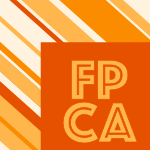 FPCA-1995-SchauserG #how #source code #strict
FPCA-1995-SchauserG #how #source code #strict- How Much Non-Strictness do Lenient Programs Require? (KES, SCG), pp. 216–225.
 CHI-1995-OlsonOM #design #realtime #video #what
CHI-1995-OlsonOM #design #realtime #video #what- What Mix of Video and Audio is Useful for Small Groups Doing Remote Real-Time Design Work? (JSO, GMO, DKM), pp. 362–368.
 ICML-1995-RaoGS
ICML-1995-RaoGS - For Every Generalization Action, Is There Really an Equal and Opposite Reaction? (RBR, DFG, WMS), pp. 471–479.
 KDD-1995-MurthyS #effectiveness #heuristic #how #induction
KDD-1995-MurthyS #effectiveness #heuristic #how #induction- Decision Tree Induction: How Effective is the Greedy Heuristic? (SKM, SS), pp. 222–227.
 SIGIR-1995-Church
SIGIR-1995-Church - One Term Or Two? (KWC), pp. 310–318.
 ECOOP-1995-HolzleU #hardware #object-oriented
ECOOP-1995-HolzleU #hardware #object-oriented- Do Object-Oriented Languages Need Special Hardware Support? (UH, DU), pp. 283–302.
 AdaEurope-1995-Mangold #ada #approach #named
AdaEurope-1995-Mangold #ada #approach #named- Ada95 — An Approach to Overcome the Software Crisis? (KM), pp. 4–10.
 DAC-1995-Bergamaschi #design #problem #tool support
DAC-1995-Bergamaschi #design #problem #tool support- Productivity Issues in High-Level Design: Are Tools Solving the Real Problems? (RAB), pp. 674–677.
 HPCA-1995-FarkasJC #execution #how #multi
HPCA-1995-FarkasJC #execution #how #multi- How Useful Are Non-Blocking Loads, Stream Buffers and Speculative Execution in Multiple Issue Processors? (KIF, NPJ, PC), pp. 78–89.
 STOC-1995-AnderssonHNR #linear #sorting
STOC-1995-AnderssonHNR #linear #sorting- Sorting in linear time? (AA, TH, SN, RR), pp. 427–436.
 STOC-1995-DiaconisS #algorithm #what
STOC-1995-DiaconisS #algorithm #what- What do we know about the Metropolis algorithm? (PD, LSC), pp. 112–129.
 STOC-1995-HellersteinPRW #how #query
STOC-1995-HellersteinPRW #how #query- How many queries are needed to learn? (LH, KP, VR, DW), pp. 190–199.
 STOC-1995-HenzingerKPV #automaton #decidability #hybrid #what
STOC-1995-HenzingerKPV #automaton #decidability #hybrid #what- What’s decidable about hybrid automata? (TAH, PWK, AP, PV), pp. 373–382.
 TAPSOFT-1995-Orbaek #trust
TAPSOFT-1995-Orbaek #trust- Can you Trust your Data? (PØ), pp. 575–589.
 LICS-1995-Seth #complexity #fixpoint #logic
LICS-1995-Seth #complexity #fixpoint #logic- When Do Fixed Point Logics Capture Complexity Classes? (AS), pp. 353–363.
 HT-ECHT-1994-Brown #hypermedia #network
HT-ECHT-1994-Brown #hypermedia #network- Adding Networking to Hypertext: Can it be Done Transparently? (PJB), pp. 51–58.
 PODS-1994-ChaudhuriK #approximate #datalog
PODS-1994-ChaudhuriK #approximate #datalog- Can Datalog be Approximated? (SC, PGK), pp. 86–96.
 VLDB-1994-Galindo-LegariaPK #performance #random #why
VLDB-1994-Galindo-LegariaPK #performance #random #why- Fast, Randomized Join-Order Selection — Why Use Transformations? (CAGL, AP, MLK), pp. 85–95.
 VLDB-1994-Spaccapietra #user interface
VLDB-1994-Spaccapietra #user interface- User Interfaces; Who Cares? (SS), p. 751.
 CSEE-1994-McCartyP #how #maturity #process
CSEE-1994-McCartyP #how #maturity #process- How Mature is Your Software Process? (WBM, GTP), pp. 555–564.
 ICSM-1994-Slonim #object-oriented
ICSM-1994-Slonim #object-oriented- OO in the Real World — Success or Latest Fashion ? (JS), pp. 440–441.
 CHI-1994-WhittakerFD94a #communication #how #what
CHI-1994-WhittakerFD94a #communication #how #what- Informal workplace communication: what is it like and how might we support it? (SW, DF, ODJ), pp. 131–137.
 SIGIR-1994-Cooper #information retrieval #probability
SIGIR-1994-Cooper #information retrieval #probability- The Formalism of Probability Theory in IR: A Foundation for An Encumbrance? (WSC), pp. 242–247.
 ECOOP-1994-Hursch
ECOOP-1994-Hursch - Should Superclasses be Abstract? (WLH), pp. 12–31.
 OOPSLA-1994-MonarchiBHJMRW #standard
OOPSLA-1994-MonarchiBHJMRW #standard- Methodology Standards: Help or Hindrance? (DEM, GB, BHS, IJ, SJM, JER, RWB), pp. 223–228.
 AdaEurope-1994-Gray #ada #how
AdaEurope-1994-Gray #ada #how- How Should Military Ada Software be Documented? (LG), pp. 162–169.
 PLDI-1994-SabryF #analysis #continuation #data flow
PLDI-1994-SabryF #analysis #continuation #data flow- Is Continuation-Passing Useful for Data Flow Analysis? (AS, MF), pp. 1–12.
 TRI-Ada-1994-SitaramanFFFHMW #education #what
TRI-Ada-1994-SitaramanFFFHMW #education #what- What Changes Are Needed For Undergraduate CS Curricula to Educate “Software Engineers”? (MS, MBF, GAF, WBF, JEH, DFM, BWW), p. 220.
 ICSE-1994-Finkelstein #education #re-engineering
ICSE-1994-Finkelstein #education #re-engineering- Software Engineering Education: A Place in the Sun? (AF), pp. 358–359.
 ASPLOS-1994-ChandraLR #message passing #source code
ASPLOS-1994-ChandraLR #message passing #source code- Where is Time Spent in Message-Passing and Shared-Memory Programs? (SC, JRL, AR), pp. 61–73.
 ASPLOS-1994-KaramchetiC
ASPLOS-1994-KaramchetiC - Software Overhead in Messaging Layers: Where Does the Time Go? (VK, AAC), pp. 51–60.
 CADE-1994-Platek #proving #what
CADE-1994-Platek #proving #what- What is a Proof? (RP), p. 431.
 SIGMOD-1993-Vieille #database #deduction #how #object-oriented #why
SIGMOD-1993-Vieille #database #deduction #how #object-oriented #why- A Deductive and Object-Oriented Database System: Why and How? (LV), p. 438.
 CSM-1993-ArnoldSW #design
CSM-1993-ArnoldSW #design- Do Design Records Really Benefit Software Malntenance? (RSA, MS, NW), pp. 234–243.
 CSM-1993-Kellner #maintenance
CSM-1993-Kellner #maintenance- Ten Years of Software Maintenance: Progress or Promises? (MIK), pp. 406–408.
 CSM-1993-Slovin #maintenance #standard
CSM-1993-Slovin #maintenance #standard- Software Maintenance Standards? (MS), p. 107.
 CSM-1993-Zvegintzov #maintenance
CSM-1993-Zvegintzov #maintenance- Ten Years of Software Maintenance: Progress or Promises? (NZ), pp. 421–422.
 ICALP-1993-KannegantiC #higher-order #programming language #what
ICALP-1993-KannegantiC #higher-order #programming language #what- What is a Universal Higher-Order Programming Language? (RK, RC), pp. 682–695.
 HCI-ACS-1993-Abrahamsson #matter
HCI-ACS-1993-Abrahamsson #matter- Management Professionalization: Do Computers Matter? (BA), pp. 961–965.
 HCI-ACS-1993-BergqvistK #women
HCI-ACS-1993-BergqvistK #women- Is the Outcome of a Woman’s Pregnancy Influenced by her Work at a VDU? (UB, BK), pp. 740–745.
 HCI-SHI-1993-Tullis #design #user interface
HCI-SHI-1993-Tullis #design #user interface- Is User Interface Design Just Common Sense? (TST), pp. 9–14.
 INTERCHI-1993-AllenBBMMNS #design #how #process #why
INTERCHI-1993-AllenBBMMNS #design #how #process #why- User involvement in the design process: why, when & how? (CDA, DB, VB, HHMJ, MM, JN, JMS), pp. 251–254.
 SIGIR-1993-BooksteinKR
SIGIR-1993-BooksteinKR - Is Huffman Coding Dead? (AB, STK, TR), pp. 80–87.
 ECOOP-1993-Lamming #challenge #memory management #research
ECOOP-1993-Lamming #challenge #memory management #research- Intimate Computing and the Memory Prothesis: A Challenge for Computer Systems Research? (MGL), pp. 1–3.
 TOOLS-PACIFIC-1993-HaynesM #smalltalk
TOOLS-PACIFIC-1993-HaynesM #smalltalk- “C++ is Better Than Smalltalk”?? (PH, TM), pp. 75–82.
 TOOLS-PACIFIC-1993-Henderson-Sellers93b #named
TOOLS-PACIFIC-1993-Henderson-Sellers93b #named- Keynote: Object Technology: W(h)ither the Future? (BHS), p. 3.
 TOOLS-PACIFIC-1993-Henderson-Sellers93c
TOOLS-PACIFIC-1993-Henderson-Sellers93c - Object Technology: W(h)ither the Future? (BHS), pp. 295–306.
 TOOLS-PACIFIC-1993-Joyner
TOOLS-PACIFIC-1993-Joyner - C++?? (IJ), pp. 339–351.
 TOOLS-USA-1993-WhiteW #information management #object-oriented
TOOLS-USA-1993-WhiteW #information management #object-oriented- Utilization of Object-Oriented Technology in Mainstream Information Systems: if not now, when? (KW, EW), pp. 497–498.
 RE-1993-PartridgeGBK
RE-1993-PartridgeGBK - Should we specify systems or domain? (DP, DG, DRB, JK), pp. 77–80.
 ESEC-1993-Denert #how #re-engineering
ESEC-1993-Denert #how #re-engineering- Software Engineering in Business and Academia: How Wide is the Gap? (ED), pp. 37–47.
 FSE-1993-Votta
FSE-1993-Votta - Does Every Inspection Need a Meeting? (LGV), pp. 107–114.
 STOC-1993-BorodinRSU #hardware #how
STOC-1993-BorodinRSU #hardware #how- How much can hardware help routing? (AB, PR, BS, EU), pp. 573–582.
 STOC-1993-NaorS #what
STOC-1993-NaorS #what- What can be computed locally? (MN, LJS), pp. 184–193.
 TAPSOFT-1993-Seidl #functional
TAPSOFT-1993-Seidl #functional- When Is a Functional Tree Transduction Deterministic? (HS), pp. 251–265.
 CSL-1993-Blass #game studies #semantics
CSL-1993-Blass #game studies #semantics- Is Game Semantics Necessary? (AB), pp. 66–77.
 ICLP-1993-CodishDFB #analysis #correctness #logic programming #source code
ICLP-1993-CodishDFB #analysis #correctness #logic programming #source code- Freeness Analysis for Logic Programs — And Correctness? (MC, DD, GF, MB), pp. 116–131.
 HT-ECHT-1992-Ritchie #future of #hypermedia
HT-ECHT-1992-Ritchie #future of #hypermedia- The Future of Electronic Literacy: Will Hypertext Ever Find Acceptance? (IR), p. 1.
 HT-ECHT-1992-Rouet
HT-ECHT-1992-Rouet - Cognitive Processing of Hyperdocuments: When Does Nonlinearity Help? (JFR), pp. 131–140.
 SEI-1992-Hall #re-engineering
SEI-1992-Hall #re-engineering- Is Software Engineering? (AH), pp. 5–8.
 ICALP-1992-HenzingerMP #what
ICALP-1992-HenzingerMP #what- What Good Are Digital Clocks? (TAH, ZM, AP), pp. 545–558.
 CHI-1992-Brouwer-JanseBENSG #how #interface
CHI-1992-Brouwer-JanseBENSG #how #interface- Interfaces for consumer products: how to camouflage the computer? (MDBJ, RWB, TE, FLvN, HJS, DRG), pp. 287–290.
 CHI-1992-MynattLIFR #hypermedia
CHI-1992-MynattLIFR #hypermedia- Hypertext or Book: Which is Better for Answering Questions? (BTM, LML, KI, JF, DSR), pp. 19–25.
 CSCW-1992-DubsH #concept #distributed
CSCW-1992-DubsH #concept #distributed- Distributed Facilitation: A Concept Whose Time Has Come? (SD, SCH), pp. 314–321.
 CAiSE-1992-MacGinnes #analysis #how #object-oriented
CAiSE-1992-MacGinnes #analysis #how #object-oriented- How Objective is Object-Oriented Analysis? (SM), pp. 1–16.
 OOPSLA-1992-LiuGG #learning #object-oriented #what
OOPSLA-1992-LiuGG #learning #object-oriented #what- What Contributes to Successful Object-Oriented Learning? (CL, SG, BG), pp. 77–86.
 TOOLS-PACIFIC-1992-Goldberg #object-oriented #using
TOOLS-PACIFIC-1992-Goldberg #object-oriented #using- Can A Manager Be Successful Using Object-Oriented Technology? (AG), p. 3.
 STOC-1992-Ben-David #detection #finite
STOC-1992-Ben-David #detection #finite- Can Finite Samples Detect Singularities of Real-Valued Functions? (SBD), pp. 390–399.
 SIGMOD-1991-Thompson #distributed #standard
SIGMOD-1991-Thompson #distributed #standard- Are Standards the Panacea for Heterogeneous Distributed DBMSs? (CT), p. 446.
 FPCA-1991-FrandsenS #implementation #performance #what #λ-calculus
FPCA-1991-FrandsenS #implementation #performance #what #λ-calculus- What is an Efficient Implementation of the λ-calculus? (GSF, CS), pp. 289–312.
 CHI-1991-BrennanDLMSF #interface
CHI-1991-BrennanDLMSF #interface- Should we or shouldn’t we use spoken commands in voice interfaces? (PB, GD, DL, MM, ECS, MF), pp. 369–372.
 CHI-1991-Mackay91a #guidelines #using #video
CHI-1991-Mackay91a #guidelines #using #video- Ethical issues in the use of video: is it time to establish guidelines? (WEM), pp. 403–405.
 CHI-1991-MyersCMSS #interface
CHI-1991-MyersCMSS #interface- Demonstrational interfaces: Coming soon? (BAM, AC, DM, DCS, BS), pp. 393–396.
 KR-1991-Rich #information management #reasoning #representation
KR-1991-Rich #information management #reasoning #representation- Implemented Knowledge Representation and Reasoning Systems: An Endangered Species? (CR), pp. 591–592.
 SIGIR-1991-Korfhage #query
SIGIR-1991-Korfhage #query- To See, or Not to See: Is That the Query? (RK), pp. 134–141.
 ECOOP-1991-PalsbergS #reuse #type safety #what
ECOOP-1991-PalsbergS #reuse #type safety #what- What is Type-Safe Code Reuse? (JP, MIS), pp. 325–341.
 TOOLS-USA-1991-Goldberg #named #object-oriented #using
TOOLS-USA-1991-Goldberg #named #object-oriented #using- Keynote: Can a Manager Be Successful Using Object-Oriented Technology? (AG), p. 5.
 TOOLS-USA-1991-Meyer #how
TOOLS-USA-1991-Meyer #how- Do we know how to find the classes? (BM), pp. 349–350.
 PEPM-1991-Wadler #linear #logic
PEPM-1991-Wadler #linear #logic- Is There a Use for Linear Logic? (PW), pp. 255–273.
 RE-1991-Denert #german
RE-1991-Denert #german- Strukturierte Analyse oder objektorientierte Methodik für die Systemspezifikation? (ED), pp. 137–138.
 RE-1991-Wittstadt #analysis #german
RE-1991-Wittstadt #analysis #german- Structured Analysis: Ein Weg aus der Krise? (WW), pp. 191–208.
 ICSE-1991-Curtis #re-engineering
ICSE-1991-Curtis #re-engineering- Techies as Non-Technological Factors in Software Engineering? (BC), pp. 147–148.
 ICSE-1991-FrakesBPMS #delivery #reuse
ICSE-1991-FrakesBPMS #delivery #reuse- Software Reuse: is it delivering? (WBF, TJB, RPD, KM, WS), pp. 52–59.
 KBSE-1991-Sasso91a #what
KBSE-1991-Sasso91a #what- Encouraging the Adoption of KBSE Technology: What Needs to Happen First? (WCS), pp. 237–238.
 DAC-1991-SiglDJ #linear #polynomial
DAC-1991-SiglDJ #linear #polynomial- Analytical Placement: A Linear or a Quadratic Objective Function? (GS, KD, FMJ), pp. 427–432.
 STOC-1991-AngluinK #query
STOC-1991-AngluinK #query- When Won’t Membership Queries Help? (DA, MK), pp. 444–454.
 TAV-1991-OffuttL #how
TAV-1991-OffuttL #how- How Strong is Weak Mutation? (AJO, SDL), pp. 200–213.
 TAV-1991-Young #formal method #re-engineering
TAV-1991-Young #formal method #re-engineering- Formal Methods versus Software Engineering: Is There a Conflict? (WDY), pp. 188–189.
 PODS-1990-YouY #formal method #logic programming
PODS-1990-YouY #formal method #logic programming- Three-Valued Formalization of Logic Programming: Is It Needed? (JHY, LYY), pp. 172–182.
 ICALP-1990-CheriyanHM
ICALP-1990-CheriyanHM - Can A Maximum Flow be Computed on o(nm) Time? (JC, TH, KM), pp. 235–248.
 GG-1990-Bunke #graph grammar #pattern matching #pattern recognition #recognition
GG-1990-Bunke #graph grammar #pattern matching #pattern recognition #recognition- Graph Grammars — a Useful Tool for Pattern Recognition? (HB), pp. 43–46.
 GG-1990-Cuny #graph grammar #tool support
GG-1990-Cuny #graph grammar #tool support- Graph Grammars as Tools in Applications Work? (JEC), pp. 46–47.
 CHI-1990-CushmanOD #performance #requirements #what
CHI-1990-CushmanOD #performance #requirements #what- Usable OCR: what are the minimum performance requirements? (WHC, PSO, CMD), pp. 145–152.
 CHI-1990-GillanHARM #how
CHI-1990-GillanHARM #how- How does Fitts’ law fit pointing and dragging? (DJG, KLH, SA, MR, LM), pp. 227–234.
 CSCW-1990-MaloneC #coordination #design #how #what
CSCW-1990-MaloneC #coordination #design #how #what- What is Coordination Theory and How Can It Help Design Cooperative Work Systems? (TWM, KC), pp. 357–370.
 ML-1990-SammutC #learning #performance
ML-1990-SammutC #learning #performance- Is Learning Rate a Good Performance Criterion for Learning? (CS, JC), pp. 170–178.
 SIGIR-1990-Rousseau #approach #heuristic #retrieval
SIGIR-1990-Rousseau #approach #heuristic #retrieval- Extended Boolean Retrieval: A Heuristic Approach? (RR), pp. 495–508.
 ICSE-1990-Maiocchi #named #re-engineering #source code
ICSE-1990-Maiocchi #named #re-engineering #source code- Reengineering: Can a Program Put Intelligence in Stupid Programs? (MM), pp. 123–124.
 CLP-1990-Harel90 #how #source code
CLP-1990-Harel90 #how #source code- How Hard Is It to Reason about Propositional Programs? (DH), pp. 772–773.
 CLP-1990-Reiter90 #database #what
CLP-1990-Reiter90 #database #what- What Should a Database Know? (RR), p. 765.
 NACLP-1990-Sagiv
NACLP-1990-Sagiv - Is There Anything Better than Magic? (YS), pp. 235–254.
 PODS-1989-Wang #maintenance
PODS-1989-Wang #maintenance- Can Constant-time Maintainability Be More Practical? (KW), pp. 120–127.
 SIGMOD-1989-Ozsoyoglu #database #realtime
SIGMOD-1989-Ozsoyoglu #database #realtime- Real-Time Databases: Are they Real? (GÖ), p. 3.
 SEI-1989-Gibbs #re-engineering
SEI-1989-Gibbs #re-engineering- Is the Time Right for an Undergraduate Software Engineering Degree? (NEG), pp. 271–274.
 CHI-1989-BlackBMC #effectiveness #learning #online #what
CHI-1989-BlackBMC #effectiveness #learning #online #what- On-line tutorials: What kind of inference leads to the most effective learning? (JBB, JSB, MM, JMC), pp. 81–83.
 CHI-1989-MackayMCRRC #how #lens
CHI-1989-MackayMCRRC #how #lens- How do experienced information lens users use rules? (WEM, TWM, KC, RR, DR, SKC), pp. 211–216.
 CHI-1989-Moran #what
CHI-1989-Moran #what- What is EuroParc? (TPM), pp. 51–52.
 CHI-1989-WolfCLJW #human-computer
CHI-1989-WolfCLJW #human-computer- The role of laboratory experiments in HCI: help, hindrance, or ho-hum? (CGW, JMC, TKL, BEJ, JW), pp. 265–268.
 KR-1989-Lehmann #knowledge base #what
KR-1989-Lehmann #knowledge base #what- What Does a Conditional Knowledge Base Entail? (DJL), pp. 212–222.
 KR-1989-Rayner #predict #problem
KR-1989-Rayner #predict #problem- Did Newton Solve the “Extended Prediction Problem”? (MR), pp. 381–385.
 ML-1989-RuffD #what
ML-1989-RuffD #what- What Good Are Experiments? (RAR, TGD), pp. 109–112.
 ICSE-1989-OhbaC #debugging #reliability
ICSE-1989-OhbaC #debugging #reliability- Does Imperfect Debugging Affect Software Reliability Growth? (MO, XMC), pp. 237–244.
 DAC-1989-Chiang
DAC-1989-Chiang - Resistance Extraction and Resistance Calculation in GOALIE? (KWC), pp. 682–685.
 CCIPL-1989-InverardiMM #type checking
CCIPL-1989-InverardiMM #type checking- Is Type Checking Practical for System Configuration? (PI, SM, CM), pp. 257–271.
 LICS-1989-Robinson #how
LICS-1989-Robinson #how- How Complete is PER? (ER), pp. 106–111.
 NACLP-1989-SinghalP #how #parallel #unification
NACLP-1989-SinghalP #how #parallel #unification- Unification Parallelism: How Much Can We Exploit? (AS, YNP), pp. 1135–1147.
 PODS-1988-KolaitisP #fixpoint #why
PODS-1988-KolaitisP #fixpoint #why- Why Not Negation by Fixpoint? (PGK, CHP), pp. 231–239.
 PODS-1988-Reiter #database #what
PODS-1988-Reiter #database #what- What Should A Database Know? (RR), pp. 302–304.
 SIGMOD-1988-Fischer
SIGMOD-1988-Fischer - Nested Relations: A Step Forward — or Backward? (PCF), p. 2.
 ICALP-1988-KirschenhoferPS
ICALP-1988-KirschenhoferPS - Do We Really Need to Balance Patricia Trees? (PK, HP, WS), pp. 302–316.
 CSCW-1988-BermannT #network
CSCW-1988-BermannT #network- Can Networks Make an Organization? (TB, KT), pp. 153–166.
 ALP-1988-Fribourg #functional #prolog
ALP-1988-Fribourg #functional #prolog- Functional Extensions to Prolog: Are they Needed? (LF), pp. 21–29.
 POPL-1988-WilliamsW
POPL-1988-WilliamsW - Sacrificing Simplicity for Convenience: Where Do You Draw the Line? (JHW, ELW), pp. 169–179.
 DAC-1988-Dunlop #generative #standard
DAC-1988-Dunlop #generative #standard- Will Cell Generation Displace Standard Cells? (AED), p. 528.
 CSL-1988-Speckenmeyer
CSL-1988-Speckenmeyer - Is Average Superlinear Speedup Possible? (ES), pp. 301–312.
 JICSCP-1988-AllenS88 #logic #multi
JICSCP-1988-AllenS88 #logic #multi- Multiple Interpretations of the Logical Structure of Legal Rules: Impediment or Boon to Legal Expert Systems? (LEA, CSS), pp. 1609–1623.
 HT-1987-RemdeGL #automation #hypermedia #named
HT-1987-RemdeGL #automation #hypermedia #named- SuperBook: An Automatic Tool for Information Exploration — Hypertext? (JRR, LMG, TKL), pp. 175–188.
 HCI-CE-1987-Glenn #human-computer #interactive #speech
HCI-CE-1987-Glenn #human-computer #interactive #speech- Where Does Speech Technology Fit in Human-Computer Interaction? (JWG), pp. 431–438.
 HCI-SES-1987-Knave #health
HCI-SES-1987-Knave #health- VDT Work: An Occupational Health Hazard? (BK), pp. 83–86.
 HCI-SES-1987-MoodyJR #how
HCI-SES-1987-MoodyJR #how- Vigilance and Its Role in AI Technology: How Smart is Too Smart? (TM, MJ, RR), pp. 263–270.
 ASPLOS-1987-ChowCHKW #how
ASPLOS-1987-ChowCHKW #how- How Many Addressing Modes are Enough? (FCC, SC, MIH, EK, LW), pp. 117–121.
 SLP-1987-Drabent87 #logic programming #source code
SLP-1987-Drabent87 #logic programming #source code- Do Logic Programs Resemble Programs in Conventional Languages? (WD), pp. 289–396.
 VLDB-1986-Deen
VLDB-1986-Deen - Anyone for a VLDB in The Year 2000? (SMD), p. 477.
 LICS-1986-Schlipf #how
LICS-1986-Schlipf #how- How Uncomputable is General Circumscription? (JSS), pp. 92–95.
 ICALP-1985-Johnson #equivalence
ICALP-1985-Johnson #equivalence- Do Rational Equivalence Relations have Regular Cross-Sections? (JHJ), pp. 300–309.
 CSE-1985-MaibaumVS #data type #development #formal method
CSE-1985-MaibaumVS #data type #development #formal method- A Theory of Abstract Data Types for Program Development: Bridging the Gap? (TSEM, PASV, MRS), pp. 214–230.
 STOC-1985-KarpUW85a #problem
STOC-1985-KarpUW85a #problem- Are Search and Decision Problems Computationally Equivalent? (RMK, EU, AW), pp. 464–475.
 PODS-1984-Garcia-MolinaPD #database #distributed
PODS-1984-Garcia-MolinaPD #database #distributed- Is Byzantine Agreement Useful in a Distributed Database? (HGM, FMP, SBD), pp. 61–69.
 POPL-1984-HalpernMT #semantics #what
POPL-1984-HalpernMT #semantics #what- The Semantics of Local Storage, or What Makes the Free-List Free? (JYH, ARM, BAT), pp. 245–257.
 ICSE-1984-Boydston #programming
ICSE-1984-Boydston #programming- Programming Cost Estimate: Is It Reasonable? (REB), pp. 153–161.
 SIGMOD-1983-Bernstein #database
SIGMOD-1983-Bernstein #database- Database Theory: Where Has It Been? Where Is It Going? (PAB), p. 2.
 SIGMOD-1983-Stonebraker
SIGMOD-1983-Stonebraker - DBMS and AI: Is There any Common Point of View? (MS), p. 134.
 VLDB-1983-VassiliouCJ #how
VLDB-1983-VassiliouCJ #how- How Does an Expert System Get its Data? (YV, JC, MJ), pp. 70–72.
 DAC-1983-Sapiro #tool support
DAC-1983-Sapiro #tool support- Engineering Workstations: Tools or toys? (SS), pp. 79–80.
 STOC-1983-LongW #how
STOC-1983-LongW #how- How Discreet is the Discrete Log? (DLL, AW), pp. 413–420.
 PODS-1982-KanellakisP #distributed
PODS-1982-KanellakisP #distributed- Is Distributed Locking Harder? (PCK, CHP), pp. 98–107.
 SIGIR-1982-FraenkelMP
SIGIR-1982-FraenkelMP - Is Text Compression by Prefizes and Suffixes Practical? (ASF, MM, YP), pp. 289–311.
 SIGIR-1982-Henrichs #information retrieval #what
SIGIR-1982-Henrichs #information retrieval #what- The Growing Crisis of Traditional Information Retrieval Systems — What is to Follow? (NH), pp. 1–12.
 DAC-1982-Adshead #algorithm #complexity #hardware #problem #scalability #towards
DAC-1982-Adshead #algorithm #complexity #hardware #problem #scalability #towards- Towards VLSI complexity: The DA algorithm scaling problem: can special DA hardware help? (HGA), pp. 339–344.
 SIGMOD-1981-Sagiv #using
SIGMOD-1981-Sagiv #using- Can We Use the Universal Instance Assumption Without Using Nulls? (YS), pp. 108–120.
 VLDB-1980-BernsteinG #normalisation #what
VLDB-1980-BernsteinG #normalisation #what- What does Boyce-Codd Normal Form Do? (PAB, NG), pp. 245–259.
 SIGIR-1980-Montgomery
SIGIR-1980-Montgomery - Where Do We Go From Here? (CAM), pp. 370–385.
 DAC-1980-Fitch
DAC-1980-Fitch - Will your bridge stand the load? (AEF), p. 518.
 STOC-1980-JosephY #independence
STOC-1980-JosephY #independence- Independence Results in Computer Science? (DJ, PY), pp. 58–69.
 DAC-1979-Larsen #design #problem
DAC-1979-Larsen #design #problem- Can CAD meet the VLSI design problems of the 80’s? (RPL), p. 551.
 VLDB-1978-BrodieS #data type #what
VLDB-1978-BrodieS #data type #what- What is the Use of Abstract Data Types? (MLB, JWS), pp. 140–141.
 VLDB-1978-Johnson #what
VLDB-1978-Johnson #what- What End-User Facilities do we Need? (FEJ), p. 126.
 VLDB-1978-Sharman #metamodelling #semantics #what
VLDB-1978-Sharman #metamodelling #semantics #what- What is a “Good” Semantic or Meta Model? (GS), p. 138.
 SIGIR-1978-Williams #documentation #feedback #performance #retrieval
SIGIR-1978-Williams #documentation #feedback #performance #retrieval- Does Relevance Feedback Improve Document Retrieval Performance? (RLW), pp. 151–170.
 ICSE-1978-Stucki #how
ICSE-1978-Stucki #how- How Software is Really Engineered? (LGS), p. 84.
 ICALP-1977-AhoS #code generation #compilation #how
ICALP-1977-AhoS #code generation #compilation #how- How Hard is Compiler Code Generation? (AVA, RS), pp. 1–15.
 ICSE-1976-BellT #problem #requirements
ICSE-1976-BellT #problem #requirements- Software Requirements: Are They Really a Problem? (TEB, TAT), pp. 61–68.
 DAC-1975-Fike #design #detection #fault #predict
DAC-1975-Fike #design #detection #fault #predict- Predicting fault detectability in combinational circuits — a new design tool? (JLF), pp. 290–295.
 ICALP-1972-Bohm #syntax
ICALP-1972-Bohm #syntax- Can Syntax Be Ignored during Translation? (CB, MDC), pp. 197–207.
 ICALP-1972-Schnorr #programming
ICALP-1972-Schnorr #programming- Does the Computational Speed-up Concern Programming? (CPS), pp. 585–591.
 STOC-1971-Berry
STOC-1971-Berry - Block Structure: Retention or Deletion? (DMB), pp. 86–100.
 DAC-1967-Weindlin #automation #design #programming language
DAC-1967-Weindlin #automation #design #programming language- Is there a “Best” Programming Language For Design Automation? (MW).
 POPL-2020-LazarekKSFD
POPL-2020-LazarekKSFD  POPL-2020-MigeedP #decidability #what
POPL-2020-MigeedP #decidability #what EDM-2019-AguerrebereBCGK #education #feedback #how #online #student
EDM-2019-AguerrebereBCGK #education #feedback #how #online #student ICPC-2019-BauerSPHA #comprehension #matter #named
ICPC-2019-BauerSPHA #comprehension #matter #named ICPC-2019-EposhiOGSOO #design #problem #refactoring
ICPC-2019-EposhiOGSOO #design #problem #refactoring ICPC-2019-SaidQK #embedded #modelling #state machine
ICPC-2019-SaidQK #embedded #modelling #state machine ICPC-2019-SantosS #configuration management #dependence #how
ICPC-2019-SantosS #configuration management #dependence #how ICPC-2019-TranTNNN #migration
ICPC-2019-TranTNNN #migration ICPC-2019-Weimer #what
ICPC-2019-Weimer #what ICSME-2019-0002AGLX #energy #maintenance
ICSME-2019-0002AGLX #energy #maintenance ICSME-2019-ElazharySEZ #git #guidelines #process
ICSME-2019-ElazharySEZ #git #guidelines #process ICSME-2019-IammarinoZAP #refactoring #self #technical debt
ICSME-2019-IammarinoZAP #refactoring #self #technical debt ICSME-2019-JinCX #api #developer #what
ICSME-2019-JinCX #api #developer #what ICSME-2019-Sae-LimHS #automation #impact analysis #predict
ICSME-2019-Sae-LimHS #automation #impact analysis #predict MSR-2019-AbricCCGM #community #development #stack overflow
MSR-2019-AbricCCGM #community #development #stack overflow MSR-2019-HabchiMR #android #smell
MSR-2019-HabchiMR #android #smell MSR-2019-ManesB #developer #git #how #stack overflow #what
MSR-2019-ManesB #developer #git #how #stack overflow #what SANER-2019-BusingeKOBS #eclipse #framework #how #interface
SANER-2019-BusingeKOBS #eclipse #framework #how #interface SANER-2019-GaoLKBK
SANER-2019-GaoLKBK  SANER-2019-SierraTST #architecture #self #technical debt
SANER-2019-SierraTST #architecture #self #technical debt FM-2019-Ehlers #how #model checking
FM-2019-Ehlers #how #model checking CHI-PLAY-2019-WohnJESSD #comprehension #people #why
CHI-PLAY-2019-WohnJESSD #comprehension #people #why CoG-2019-JooK #game studies #how #learning #using #visualisation
CoG-2019-JooK #game studies #how #learning #using #visualisation CoG-2019-JustesenDR #game studies
CoG-2019-JustesenDR #game studies FDG-2019-OSheaF #design #framework #game studies
FDG-2019-OSheaF #design #framework #game studies ICGJ-2019-MillerDK #game studies
ICGJ-2019-MillerDK #game studies CIKM-2019-SunQYCCC #what
CIKM-2019-SunQYCCC #what ECIR-p1-2019-AlbahemSSC #how #metric #topic
ECIR-p1-2019-AlbahemSSC #how #metric #topic ECIR-p2-2019-ShengLM #image #multimodal #retrieval
ECIR-p2-2019-ShengLM #image #multimodal #retrieval ICML-2019-ByrdL #learning #what
ICML-2019-ByrdL #learning #what ICML-2019-LiBS #classification #generative #robust
ICML-2019-LiBS #classification #generative #robust ICML-2019-OymakS #learning
ICML-2019-OymakS #learning ICML-2019-RajputFCLP
ICML-2019-RajputFCLP  ICML-2019-RechtRSS #classification
ICML-2019-RechtRSS #classification ICML-2019-Yu0YNTS #how
ICML-2019-Yu0YNTS #how KDD-2019-JiaLZKK #how #learning #robust #towards
KDD-2019-JiaLZKK #how #learning #robust #towards KDD-2019-LiCZZ0L #ecosystem #social
KDD-2019-LiCZZ0L #ecosystem #social KDD-2019-Rudin #how #modelling
KDD-2019-Rudin #how #modelling Onward-2019-Smaragdakis #programming language #what
Onward-2019-Smaragdakis #programming language #what OOPSLA-2019-MarcozziTDC #compilation #fuzzing #how #matter
OOPSLA-2019-MarcozziTDC #compilation #fuzzing #how #matter PLATEAU-2019-HaoG #programming #what
PLATEAU-2019-HaoG #programming #what PLATEAU-2019-Wu
PLATEAU-2019-Wu  ASE-2019-TaoTLXQ #api #data analysis #how #performance #runtime
ASE-2019-TaoTLXQ #api #data analysis #how #performance #runtime ICST-2019-PlazarAPDC #configuration management #satisfiability
ICST-2019-PlazarAPDC #configuration management #satisfiability ICST-2019-ZhangZHWZ #correlation #effectiveness #pseudo #testing
ICST-2019-ZhangZHWZ #correlation #effectiveness #pseudo #testing TAP-2019-0002JPW #approximate #hardware #verification
TAP-2019-0002JPW #approximate #hardware #verification TAP-2019-KapusNC #constraints #execution #integer #symbolic computation
TAP-2019-KapusNC #constraints #execution #integer #symbolic computation ICSA-2018-BhatSKHBM #design #recommendation
ICSA-2018-BhatSKHBM #design #recommendation JCDL-2018-RischK #approach
JCDL-2018-RischK #approach EDM-2018-KoedingerSS #multi #robust #set
EDM-2018-KoedingerSS #multi #robust #set EDM-2018-MonteroAKMM #interactive
EDM-2018-MonteroAKMM #interactive ICPC-2018-DoiHASK #automation #identification #on the
ICPC-2018-DoiHASK #automation #identification #on the ICPC-2018-DoseaSS #design #how #metric
ICPC-2018-DoseaSS #design #how #metric ICPC-2018-SalzaPNDLF #developer #library #mobile
ICPC-2018-SalzaPNDLF #developer #library #mobile ICPC-2018-VivianiJFXM #design #developer #topic #what
ICPC-2018-VivianiJFXM #design #developer #topic #what ICSME-2018-MillsPPBH #debugging #locality
ICSME-2018-MillsPPBH #debugging #locality MSR-2018-AmlekarGGM #developer
MSR-2018-AmlekarGGM #developer MSR-2018-ArimaHK08 #case study #commit #how #java #what
MSR-2018-ArimaHK08 #case study #commit #how #java #what MSR-2018-CalciatiKBG #what
MSR-2018-CalciatiKBG #what MSR-2018-GeorgiouKLS #energy #programming language #what
MSR-2018-GeorgiouKLS #energy #programming language #what MSR-2018-PascarellaPPB08 #development #game studies #how #open source #video
MSR-2018-PascarellaPPB08 #development #game studies #how #open source #video MSR-2018-Rahman #comprehension #process #programming
MSR-2018-Rahman #comprehension #process #programming SANER-2018-AlkadhiNGB #developer #how
SANER-2018-AlkadhiNGB #developer #how SANER-2018-BaoLL #mining
SANER-2018-BaoLL #mining SANER-2018-DigkasLACA #developer #ecosystem #how #technical debt
SANER-2018-DigkasLACA #developer #ecosystem #how #technical debt SANER-2018-FakhouryANKA #detection #learning #smell
SANER-2018-FakhouryANKA #detection #learning #smell SANER-2018-KhomhG #design pattern #quality
SANER-2018-KhomhG #design pattern #quality SANER-2018-NucciPTSL #detection #machine learning #smell #using
SANER-2018-NucciPTSL #detection #machine learning #smell #using SCAM-2018-DeckerNDCMK #research #smell
SCAM-2018-DeckerNDCMK #research #smell DiGRA-2018-ToftedahlBE #game studies #how #locality #why
DiGRA-2018-ToftedahlBE #game studies #how #locality #why FDG-2018-FiebelkornCS
FDG-2018-FiebelkornCS  VS-Games-2018-Pietrass #how
VS-Games-2018-Pietrass #how CIKM-2018-AllerhandYYA #detection #interactive
CIKM-2018-AllerhandYYA #detection #interactive CIKM-2018-MedlarG #consistency #feedback #how
CIKM-2018-MedlarG #consistency #feedback #how CIKM-2018-ZhuangTD #behaviour #sequence
CIKM-2018-ZhuangTD #behaviour #sequence ICML-2018-0003FK #constraints
ICML-2018-0003FK #constraints ICML-2018-HuNSS #classification #learning #robust
ICML-2018-HuNSS #classification #learning #robust ICML-2018-KleinbergLY
ICML-2018-KleinbergLY  ICML-2018-MeschederGN
ICML-2018-MeschederGN  ICML-2018-OdenaBOBORG #generative #performance
ICML-2018-OdenaBOBORG #generative #performance ICML-2018-Qiao #collaboration
ICML-2018-Qiao #collaboration ICML-2018-RaghuIAKLK #game studies #learning
ICML-2018-RaghuIAKLK #game studies #learning ICML-2018-ZhouMBGYLF #bound #distributed #how #optimisation
ICML-2018-ZhouMBGYLF #bound #distributed #how #optimisation ICPR-2018-AbateNBM #smarttech #what
ICPR-2018-AbateNBM #smarttech #what ICPR-2018-JollyIKU #design #how #network
ICPR-2018-JollyIKU #design #how #network ICPR-2018-YuanWZ #image
ICPR-2018-YuanWZ #image KDD-2018-SifferFTL
KDD-2018-SifferFTL  KDD-2018-YardimKMG #predict
KDD-2018-YardimKMG #predict ECMFA-2018-Stevens #bidirectional
ECMFA-2018-Stevens #bidirectional POPL-2018-MajumdarN #debugging #effectiveness #random testing #testing #why
POPL-2018-MajumdarN #debugging #effectiveness #random testing #testing #why ASE-2018-KovalenkoPB #branch #mining
ASE-2018-KovalenkoPB #branch #mining ASE-2018-LiuXHLXW #commit #generative #how
ASE-2018-LiuXHLXW #commit #generative #how ASE-2018-VassalloPBG #quality
ASE-2018-VassalloPBG #quality ESEC-FSE-2018-BarikFMP #compilation #developer #how #problem
ESEC-FSE-2018-BarikFMP #compilation #developer #how #problem ESEC-FSE-2018-ChenSFMXLX #mobile #what
ESEC-FSE-2018-ChenSFMXLX #mobile #what ESEC-FSE-2018-McNamaraSM #development
ESEC-FSE-2018-McNamaraSM #development ESEC-FSE-2018-PauckBW #analysis #android #tool support
ESEC-FSE-2018-PauckBW #analysis #android #tool support ESEC-FSE-2018-WangS #how #regular expression
ESEC-FSE-2018-WangS #how #regular expression ESEC-FSE-2018-WangWLWWYYZC #dependence #matter
ESEC-FSE-2018-WangWLWWYYZC #dependence #matter CAV-2018-AkshayCGKS #functional #synthesis #what
CAV-2018-AkshayCGKS #functional #synthesis #what ICST-2018-ShamshiriRGWF #automation #how #maintenance #testing
ICST-2018-ShamshiriRGWF #automation #how #maintenance #testing ICST-2018-TimperleyAKHG #debugging #detection #simulation
ICST-2018-TimperleyAKHG #debugging #detection #simulation ICSA-2017-NassarS #fault #metric #predict #traceability
ICSA-2017-NassarS #fault #metric #predict #traceability CSEET-2017-SaiedianLW #how #re-engineering #source code
CSEET-2017-SaiedianLW #how #re-engineering #source code CSEET-2017-SilvaSC #problem
CSEET-2017-SilvaSC #problem EDM-2017-AnKM #behaviour
EDM-2017-AnKM #behaviour EDM-2017-LalwaniA #parametricity
EDM-2017-LalwaniA #parametricity EDM-2017-LiuCBLR #education #game studies
EDM-2017-LiuCBLR #education #game studies EDM-2017-Tang
EDM-2017-Tang  ICPC-2017-AjamiWF #complexity #syntax #what
ICPC-2017-AjamiWF #complexity #syntax #what ICPC-2017-AlmeidaMWH #developer #open source
ICPC-2017-AlmeidaMWH #developer #open source ICPC-2017-DaoZM #debugging #execution #how #locality
ICPC-2017-DaoZM #debugging #execution #how #locality ICPC-2017-SaboridoKAG #android #comprehension
ICPC-2017-SaboridoKAG #android #comprehension ICSME-2017-BeskerMB #technical debt
ICSME-2017-BeskerMB #technical debt ICSME-2017-PalombaZ #refactoring #smell #testing
ICSME-2017-PalombaZ #refactoring #smell #testing ICSME-2017-SilvaWGSG #how #what
ICSME-2017-SilvaWGSG #how #what ICSME-2017-VasquezBMP #android #developer #how
ICSME-2017-VasquezBMP #android #developer #how MSR-2017-ReboucasSPC #how #open source
MSR-2017-ReboucasSPC #how #open source MSR-2017-YangMSL #git #stack overflow
MSR-2017-YangMSL #git #stack overflow SANER-2017-AnMKA #framework #platform #stack overflow
SANER-2017-AnMKA #framework #platform #stack overflow SANER-2017-FujibayashiISKM #library
SANER-2017-FujibayashiISKM #library SANER-2017-NorikaneIM #feedback #overview
SANER-2017-NorikaneIM #feedback #overview SANER-2017-NucciPPPZL #android #energy #performance #profiling #reliability
SANER-2017-NucciPPPZL #android #energy #performance #profiling #reliability SCAM-2017-SwidanSH #how
SCAM-2017-SwidanSH #how CHI-PLAY-2017-Peddycord-LiuCK #game studies #student #using #what
CHI-PLAY-2017-Peddycord-LiuCK #game studies #student #using #what CHI-PLAY-2017-SeeleMBHS #artificial reality #behaviour #exclamation #game studies #how #social
CHI-PLAY-2017-SeeleMBHS #artificial reality #behaviour #exclamation #game studies #how #social CHI-PLAY-2017-WongRB #game studies
CHI-PLAY-2017-WongRB #game studies FDG-2017-Smith #generative #what
FDG-2017-Smith #generative #what FDG-2017-Whitehead #design #what
FDG-2017-Whitehead #design #what CIKM-2017-Stanojevic #how
CIKM-2017-Stanojevic #how CIKM-2017-WilkieA #algorithm #bias #documentation
CIKM-2017-WilkieA #algorithm #bias #documentation ECIR-2017-BampoulidisPLBH #evaluation #online #query
ECIR-2017-BampoulidisPLBH #evaluation #online #query ECIR-2017-LiR #correlation #query #topic
ECIR-2017-LiR #correlation #query #topic ECIR-2017-MishraB #how #order #proximity #readability #summary
ECIR-2017-MishraB #how #order #proximity #readability #summary ECIR-2017-RoiteroMM #effectiveness #predict #topic
ECIR-2017-RoiteroMM #effectiveness #predict #topic ICML-2017-BalduzziFLLMM #problem #what
ICML-2017-BalduzziFLLMM #problem #what ICML-2017-Loukas #how #matrix
ICML-2017-Loukas #how #matrix ICML-2017-OsbandR #learning #why
ICML-2017-OsbandR #learning #why KDD-2017-Dwork #what
KDD-2017-Dwork #what KDD-2017-FayyadCRPCL #benchmark #metric #process
KDD-2017-FayyadCRPCL #benchmark #metric #process KDD-2017-LiTWSCB
KDD-2017-LiTWSCB  KDD-2017-Pafka #machine learning
KDD-2017-Pafka #machine learning MoDELS-2017-MaozPRS #component #satisfiability #specification #why
MoDELS-2017-MaozPRS #component #satisfiability #specification #why Onward-2017-WilsonPK #crowdsourcing #design
Onward-2017-WilsonPK #crowdsourcing #design OOPSLA-2017-WuC #fault #how #student #what
OOPSLA-2017-WuC #fault #how #student #what ASE-2017-Han #mining #re-engineering
ASE-2017-Han #mining #re-engineering ASE-2017-MirhosseiniP #automation #dependence #developer
ASE-2017-MirhosseiniP #automation #dependence #developer ASE-2017-PaixaoKHRH #architecture #developer
ASE-2017-PaixaoKHRH #architecture #developer ASE-2017-ScalabrinoBVVPO #automation #how
ASE-2017-ScalabrinoBVVPO #automation #how ESEC-FSE-2017-GalsterAMT #agile #architecture
ESEC-FSE-2017-GalsterAMT #agile #architecture ESEC-FSE-2017-HellendoornD #modelling #network #source code
ESEC-FSE-2017-HellendoornD #modelling #network #source code ESEC-FSE-2017-KnuppelTMMS #feature model #modelling #product line #research
ESEC-FSE-2017-KnuppelTMMS #feature model #modelling #product line #research ESEC-FSE-2017-LamWLWZLYDX #android #case study #industrial
ESEC-FSE-2017-LamWLWZLYDX #android #case study #industrial SLE-2017-Pereira0RRCFS #energy #how #memory management #performance #programming language
SLE-2017-Pereira0RRCFS #energy #how #memory management #performance #programming language ICST-2017-ArmstrongKA #matter #overview
ICST-2017-ArmstrongKA #matter #overview ICST-2017-ChenBHZZX #how #reduction #testing
ICST-2017-ChenBHZZX #how #reduction #testing ICST-2017-WangBO #behaviour #comparison #execution #testing
ICST-2017-WangBO #behaviour #comparison #execution #testing ECSA-2016-AngelovMG #agile #architecture #challenge #what
ECSA-2016-AngelovMG #agile #architecture #challenge #what WICSA-2016-GalsterW #architecture #empirical #how #research
WICSA-2016-GalsterW #architecture #empirical #how #research JCDL-2016-NishiokaS #matter #profiling #recommendation #twitter #what
JCDL-2016-NishiokaS #matter #profiling #recommendation #twitter #what CSEET-2016-Bass #education #re-engineering #what
CSEET-2016-Bass #education #re-engineering #what CSEET-2016-SunagaSWKFYO #effectiveness #learning
CSEET-2016-SunagaSWKFYO #effectiveness #learning EDM-2016-BoroujeniKD #how
EDM-2016-BoroujeniKD #how EDM-2016-CaiLHG #documentation #word
EDM-2016-CaiLHG #documentation #word EDM-2016-KhajahLM #how
EDM-2016-KhajahLM #how EDM-2016-KhajahLM_ #how
EDM-2016-KhajahLM_ #how EDM-2016-LabartheBBY #recommendation #student
EDM-2016-LabartheBBY #recommendation #student EDM-2016-LuH #scalability
EDM-2016-LuH #scalability EDM-2016-MatsudaCS #detection #how
EDM-2016-MatsudaCS #detection #how EDM-2016-Yudelson16a #parametricity #student
EDM-2016-Yudelson16a #parametricity #student ICPC-2016-KawumaBB #eclipse #interface
ICPC-2016-KawumaBB #eclipse #interface ICPC-2016-KothariTM #control flow #human-computer
ICPC-2016-KothariTM #control flow #human-computer ICSME-2016-AbdouSBN #fault #what
ICSME-2016-AbdouSBN #fault #what ICSME-2016-DiasSPCG #collaboration #git #how
ICSME-2016-DiasSPCG #collaboration #git #how ICSME-2016-NguyenTN #migration #source code #statistics
ICSME-2016-NguyenTN #migration #source code #statistics MSR-2016-AsaduzzamanARS #developer #exception #how #java
MSR-2016-AsaduzzamanARS #developer #exception #how #java MSR-2016-ChowdhuryH16a #energy
MSR-2016-ChowdhuryH16a #energy MSR-2016-MantylaADGO #detection #mining
MSR-2016-MantylaADGO #detection #mining MSR-2016-SharmaFS #smell
MSR-2016-SharmaFS #smell SANER-2016-NayebiAR #developer #mobile #what
SANER-2016-NayebiAR #developer #mobile #what SANER-2016-SohYKG #maintenance #process #programming #smell
SANER-2016-SohYKG #maintenance #process #programming #smell SCAM-2016-BaloghGBG #testing
SCAM-2016-BaloghGBG #testing CHI-PLAY-2016-RaptisFA #behaviour #difference #game studies #performance
CHI-PLAY-2016-RaptisFA #behaviour #difference #game studies #performance CIG-2016-ViljanenAPH16a #difference #equation #game studies #mobile #process
CIG-2016-ViljanenAPH16a #difference #equation #game studies #mobile #process DiGRA-FDG-2016-BergstromCJ #game studies #multi #online #what
DiGRA-FDG-2016-BergstromCJ #game studies #multi #online #what CIKM-2016-AnderssonLPHR #natural language #retrieval
CIKM-2016-AnderssonLPHR #natural language #retrieval CIKM-2016-OuCC #why
CIKM-2016-OuCC #why ECIR-2016-KimCCM #optimisation
ECIR-2016-KimCCM #optimisation ICML-2016-ArpitZNG #representation #why
ICML-2016-ArpitZNG #representation #why ICPR-2016-Ohn-BarT16b #what
ICPR-2016-Ohn-BarT16b #what ICPR-2016-RotaSCP #analysis #education #forensics #image #learning #student
ICPR-2016-RotaSCP #analysis #education #forensics #image #learning #student ICPR-2016-RozsaGRB #robust
ICPR-2016-RozsaGRB #robust ICPR-2016-UchidaS #what
ICPR-2016-UchidaS #what KDD-2016-KarimiTFSG
KDD-2016-KarimiTFSG  PLATEAU-2016-Ko #programming language #what
PLATEAU-2016-Ko #programming language #what PLATEAU-2016-Salvaneschi #data flow #what
PLATEAU-2016-Salvaneschi #data flow #what POPL-2016-TakikawaFGNVF #type system
POPL-2016-TakikawaFGNVF #type system FSE-2016-AhmedGBGJ #effectiveness
FSE-2016-AhmedGBGJ #effectiveness FSE-2016-Barik #developer #how #static analysis #tool support
FSE-2016-Barik #developer #how #static analysis #tool support FSE-2016-HoraVRA #interface
FSE-2016-HoraVRA #interface FSE-2016-ZengLZXDLYX #android #automation #case study #generative #industrial
FSE-2016-ZengLZXDLYX #android #automation #case study #generative #industrial ICST-2016-ArtsH #how #requirements
ICST-2016-ArtsH #how #requirements ICST-2016-Gao #interactive #testing #what
ICST-2016-Gao #interactive #testing #what ICST-2016-HammoudiRT #testing #web #why
ICST-2016-HammoudiRT #testing #web #why DocEng-2015-AtenciaDG #linked data #open data #what
DocEng-2015-AtenciaDG #linked data #open data #what DocEng-2015-FranzeMW #documentation #navigation
DocEng-2015-FranzeMW #documentation #navigation JCDL-2015-AlkwaiNW #how
JCDL-2015-AlkwaiNW #how JCDL-2015-ChenSTL #social #social media #why
JCDL-2015-ChenSTL #social #social media #why PODS-2015-PraveenS #graph #how
PODS-2015-PraveenS #graph #how SIGMOD-2015-ReABCJKR #database #machine learning
SIGMOD-2015-ReABCJKR #database #machine learning TPDL-2015-KernM #difference #retrieval #set
TPDL-2015-KernM #difference #retrieval #set VLDB-2015-Balazinska15a #big data #data analysis #industrial #problem
VLDB-2015-Balazinska15a #big data #data analysis #industrial #problem EDM-2015-BrownLEABBBM #community #performance
EDM-2015-BrownLEABBBM #community #performance EDM-2015-JiangZLL #analysis #network #what
EDM-2015-JiangZLL #analysis #network #what EDM-2015-JohnPM #detection #graph #problem #semantics #similarity #word
EDM-2015-JohnPM #detection #graph #problem #semantics #similarity #word EDM-2015-Pelanek15b #learning #modelling #student
EDM-2015-Pelanek15b #learning #modelling #student EDM-2015-SameiOKNDBG #modelling #predict
EDM-2015-SameiOKNDBG #modelling #predict EDM-2015-VigentiniC15a #design #education
EDM-2015-VigentiniC15a #design #education SIGITE-2015-MacKellarHSS #how #source code
SIGITE-2015-MacKellarHSS #how #source code ICPC-2015-SaiedABS #api #library #source code #using
ICPC-2015-SaiedABS #api #library #source code #using ICSME-2015-KononenkoBGCG #code review #matter #overview #people #quality
ICSME-2015-KononenkoBGCG #code review #matter #overview #people #quality ICSME-2015-SharmaTL #re-engineering #twitter #what
ICSME-2015-SharmaTL #re-engineering #twitter #what MSR-2015-LabuschagneH #source code
MSR-2015-LabuschagneH #source code MSR-2015-SahaLKP #debugging
MSR-2015-SahaLKP #debugging SANER-2015-Cleland-Huang #on the
SANER-2015-Cleland-Huang #on the SANER-2015-EshkevariSCA #php
SANER-2015-EshkevariSCA #php SANER-2015-Mirakhorli #architecture #how #re-engineering #what #why
SANER-2015-Mirakhorli #architecture #how #re-engineering #what #why SANER-2015-PanichellaAPA #code review #developer #static analysis #tool support
SANER-2015-PanichellaAPA #code review #developer #static analysis #tool support SANER-2015-SilvaRVBA #javascript
SANER-2015-SilvaRVBA #javascript SCAM-2015-LemosPSL #code search #query #scalability #using
SCAM-2015-LemosPSL #code search #query #scalability #using SCAM-2015-SteidlD #how #java
SCAM-2015-SteidlD #how #java ICALP-v1-2015-BienvenuDS #source code #what
ICALP-v1-2015-BienvenuDS #source code #what ICALP-v2-2015-Klein0 #game studies #how #infinity #lookahead
ICALP-v2-2015-Klein0 #game studies #how #infinity #lookahead ICFP-2015-SchererR
ICFP-2015-SchererR  CHI-PLAY-2015-PontiHS #gamification
CHI-PLAY-2015-PontiHS #gamification DiGRA-2015-Hoblitz #experience #game studies
DiGRA-2015-Hoblitz #experience #game studies FDG-2015-CookESSTTZ #game studies #what
FDG-2015-CookESSTTZ #game studies #what FDG-2015-KnauerM #artificial reality #game studies #what
FDG-2015-KnauerM #artificial reality #game studies #what CHI-2015-BoyDF #visualisation
CHI-2015-BoyDF #visualisation CHI-2015-CramerJ #communication #what #why
CHI-2015-CramerJ #communication #what #why CHI-2015-DenisovaC #game studies
CHI-2015-DenisovaC #game studies CHI-2015-GruningBO #what
CHI-2015-GruningBO #what CHI-2015-LapidesCCG #what
CHI-2015-LapidesCCG #what CHI-2015-PanS #human-computer #what
CHI-2015-PanS #human-computer #what CHI-2015-RobbPKC #crowdsourcing #design #feedback
CHI-2015-RobbPKC #crowdsourcing #design #feedback CHI-2015-SpeicherBG
CHI-2015-SpeicherBG  CHI-2015-YannierKH #effectiveness #game studies #learning #physics #tablet
CHI-2015-YannierKH #effectiveness #game studies #learning #physics #tablet CHI-2015-ZhangAK #how #what #why
CHI-2015-ZhangAK #how #what #why CSCW-2015-Anya #design #exclamation #what
CSCW-2015-Anya #design #exclamation #what CSCW-2015-BakhshiKS #comprehension #online
CSCW-2015-BakhshiKS #comprehension #online CSCW-2015-TrainerCKH #community #what
CSCW-2015-TrainerCKH #community #what DUXU-DD-2015-MedeirosTF #design #gesture #how #user interface
DUXU-DD-2015-MedeirosTF #design #gesture #how #user interface DUXU-IXD-2015-WalterKWAB #adaptation #recommendation #what
DUXU-IXD-2015-WalterKWAB #adaptation #recommendation #what DUXU-UI-2015-Nawrot #data analysis #difference #gender #towards #women
DUXU-UI-2015-Nawrot #data analysis #difference #gender #towards #women HCI-DE-2015-BevanCH #usability #what
HCI-DE-2015-BevanCH #usability #what HCI-DE-2015-Moallem #user interface
HCI-DE-2015-Moallem #user interface HCI-IT-2015-GohR #effectiveness #gamification
HCI-IT-2015-GohR #effectiveness #gamification HCI-UC-2015-ClarkeBK #experience #using #what
HCI-UC-2015-ClarkeBK #experience #using #what HCI-UC-2015-Wittenberg #automation #industrial #requirements #user interface
HCI-UC-2015-Wittenberg #automation #industrial #requirements #user interface HIMI-IKC-2015-Bretschneider-Hagemes #development #low cost #mobile #multi #simulation
HIMI-IKC-2015-Bretschneider-Hagemes #development #low cost #mobile #multi #simulation HIMI-IKD-2015-GareauKW #documentation #effectiveness #visualisation #what
HIMI-IKD-2015-GareauKW #documentation #effectiveness #visualisation #what HIMI-IKD-2015-JungLB #multi #platform
HIMI-IKD-2015-JungLB #multi #platform HIMI-IKD-2015-WinterSTMCSVS #learning #student
HIMI-IKD-2015-WinterSTMCSVS #learning #student LCT-2015-BajajHKPSDY #word
LCT-2015-BajajHKPSDY #word LCT-2015-CulenPSC #game studies #motivation
LCT-2015-CulenPSC #game studies #motivation ICEIS-v1-2015-AlmeidaHC #multi #what
ICEIS-v1-2015-AlmeidaHC #multi #what ICEIS-v2-2015-DutraPC #development #performance #what
ICEIS-v2-2015-DutraPC #development #performance #what ICEIS-v2-2015-FissaaGHN #composition #how #semantics
ICEIS-v2-2015-FissaaGHN #composition #how #semantics ICEIS-v2-2015-SarinhoLS #dataset #linked data #open data
ICEIS-v2-2015-SarinhoLS #dataset #linked data #open data CIKM-2015-GongZSH
CIKM-2015-GongZSH  CIKM-2015-KiselevaKNM #behaviour #how #what
CIKM-2015-KiselevaKNM #behaviour #how #what ECIR-2015-UrbanoM #correlation #definite clause grammar #how #user satisfaction
ECIR-2015-UrbanoM #correlation #definite clause grammar #how #user satisfaction ICML-2015-AnBB #how #linear #network
ICML-2015-AnBB #how #linear #network ICML-2015-GlobersonRSY #how #predict
ICML-2015-GlobersonRSY #how #predict ICML-2015-TewariC #bound #documentation #fault #learning #matter #rank
ICML-2015-TewariC #bound #documentation #fault #learning #matter #rank ICML-2015-XiaoBBFER #feature model
ICML-2015-XiaoBBFER #feature model KDD-2015-AgrawalGP #network #social #web
KDD-2015-AgrawalGP #network #social #web KDD-2015-Dhar #trust
KDD-2015-Dhar #trust KDD-2015-Koller #named #what
KDD-2015-Koller #named #what RecSys-2015-MarinhoTP #algorithm #recommendation
RecSys-2015-MarinhoTP #algorithm #recommendation SEKE-2015-AndoSUWFIOHKSNY #developer #development #experience #fault #how #process
SEKE-2015-AndoSUWFIOHKSNY #developer #development #experience #fault #how #process SIGIR-2015-Hawking #what
SIGIR-2015-Hawking #what SKY-2015-ExmanP
SKY-2015-ExmanP  ICMT-J-2012-KuselSWKRS15 #model transformation #reuse #transformation language
ICMT-J-2012-KuselSWKRS15 #model transformation #reuse #transformation language AMT-2015-SalayZC #reuse #what
AMT-2015-SalayZC #reuse #what MoDELS-2015-Easterbrook #modelling
MoDELS-2015-Easterbrook #modelling PLATEAU-2015-FigueroaR #composition #functional #programming
PLATEAU-2015-FigueroaR #composition #functional #programming POPL-2015-Buneman #database #programming
POPL-2015-Buneman #database #programming ASE-2015-GuK #what
ASE-2015-GuK #what ICSE-v1-2015-GaoLCMW #interactive #testing #what
ICSE-v1-2015-GaoLCMW #interactive #testing #what ICSE-v1-2015-HuaKM #automation #editing #refactoring
ICSE-v1-2015-HuaKM #automation #editing #refactoring ICSE-v1-2015-LiKZ #what
ICSE-v1-2015-LiKZ #what ICSE-v1-2015-MorenoBPOM #how
ICSE-v1-2015-MorenoBPOM #how ICSE-v1-2015-SalmanMJ #re-engineering #student
ICSE-v1-2015-SalmanMJ #re-engineering #student ICSE-v1-2015-YskoutSJ #design #security
ICSE-v1-2015-YskoutSJ #design #security ICSE-v2-2015-BellerGZ #developer #how
ICSE-v2-2015-BellerGZ #developer #how ICSE-v2-2015-JankeBW #education #learning #object-oriented #programming
ICSE-v2-2015-JankeBW #education #learning #object-oriented #programming CASE-2015-MarkovskiH #framework #manycore #synthesis
CASE-2015-MarkovskiH #framework #manycore #synthesis DAC-2015-PanLYXL #multi
DAC-2015-PanLYXL #multi DAC-2015-WolfF #architecture #continuation #what
DAC-2015-WolfF #architecture #continuation #what DATE-2015-CastrillonTSSJA #manycore #programming
DATE-2015-CastrillonTSSJA #manycore #programming DATE-2015-PozoSKM
DATE-2015-PozoSKM  DATE-2015-TangXLLCWY #network
DATE-2015-TangXLLCWY #network DATE-2015-VargasQM #predict
DATE-2015-VargasQM #predict PPoPP-2015-RadoiHSD #parallel #web
PPoPP-2015-RadoiHSD #parallel #web STOC-2015-HalldorssonT #graph #how
STOC-2015-HalldorssonT #graph #how ICST-2015-AppeltNB #injection #sql
ICST-2015-AppeltNB #injection #sql LICS-2015-CarayolS #game studies #how
LICS-2015-CarayolS #game studies #how ECSA-2014-CaraccioloLN #architecture #how #quality #requirements #validation
ECSA-2014-CaraccioloLN #architecture #how #quality #requirements #validation QoSA-2014-Meyer #trust #verification
QoSA-2014-Meyer #trust #verification WICSA-2014-CostaPDM #architecture #rest #what
WICSA-2014-CostaPDM #architecture #rest #what DRR-2014-LundRW #fault #how #multi
DRR-2014-LundRW #fault #how #multi JCDL-2014-AlhooriF
JCDL-2014-AlhooriF  JCDL-2014-CartledgeN
JCDL-2014-CartledgeN  JCDL-2014-Weideman
JCDL-2014-Weideman  PODS-2014-Barcelo0V #evaluation #query
PODS-2014-Barcelo0V #evaluation #query PODS-2014-PaghSW #set
PODS-2014-PaghSW #set SIGMOD-2014-HoweFFFKR #database #education
SIGMOD-2014-HoweFFFKR #database #education SIGMOD-2014-OzcanTAKMRW #big data
SIGMOD-2014-OzcanTAKMRW #big data SIGMOD-2014-TermehchyVCW #concept
SIGMOD-2014-TermehchyVCW #concept EDM-2014-ChiSBC #assessment #game studies #predict #student
EDM-2014-ChiSBC #assessment #game studies #predict #student EDM-2014-PeroH #detection #how #programming #source code #student
EDM-2014-PeroH #detection #how #programming #source code #student EDM-2014-WenYR #analysis #sentiment #what
EDM-2014-WenYR #analysis #sentiment #what ITiCSE-2014-BainB #programming #why
ITiCSE-2014-BainB #programming #why ITiCSE-2014-EdwardsS #student #testing
ITiCSE-2014-EdwardsS #student #testing ITiCSE-2014-KothiyalMI #learning #scalability
ITiCSE-2014-KothiyalMI #learning #scalability ITiCSE-2014-Rogers #learning
ITiCSE-2014-Rogers #learning SIGITE-2014-Suthaharan #education #experience #named #network
SIGITE-2014-Suthaharan #education #experience #named #network SIGITE-2014-TsangGA #java #learning #programming language #student
SIGITE-2014-TsangGA #java #learning #programming language #student CSMR-WCRE-2014-Grosjean #biology #maintenance #using
CSMR-WCRE-2014-Grosjean #biology #maintenance #using CSMR-WCRE-2014-KimuraHHIK #matter #null
CSMR-WCRE-2014-KimuraHHIK #matter #null ICPC-2014-KirinukiHHK #commit #exclamation
ICPC-2014-KirinukiHHK #commit #exclamation ICSME-2014-EderFHJ
ICSME-2014-EderFHJ  ICSME-2014-KononenkoZG #compilation #what
ICSME-2014-KononenkoZG #compilation #what ICSME-2014-SahinTMPC #energy #how #obfuscation
ICSME-2014-SahinTMPC #energy #how #obfuscation MSR-2014-BellerBZJ #code review #open source #problem
MSR-2014-BellerBZJ #code review #open source #problem MSR-2014-BrunetMTFG #design #developer
MSR-2014-BrunetMTFG #design #developer MSR-2014-GuoLM #exclamation
MSR-2014-GuoLM #exclamation MSR-2014-KochharLL #classification #debugging #locality
MSR-2014-KochharLL #classification #debugging #locality MSR-2014-Mockus #mining #repository
MSR-2014-Mockus #mining #repository MSR-2014-TiarksM #development #how #mobile #tutorial
MSR-2014-TiarksM #development #how #mobile #tutorial MSR-2014-TymchukML #collaboration #open source
MSR-2014-TymchukML #collaboration #open source SCAM-2014-Abi-AntounCVG #abstract interpretation #graph #using
SCAM-2014-Abi-AntounCVG #abstract interpretation #graph #using SCAM-2014-SzokeANFG #quality #refactoring
SCAM-2014-SzokeANFG #quality #refactoring LATA-2014-KleinMBK #automaton #model checking #probability
LATA-2014-KleinMBK #automaton #model checking #probability FM-2014-BjornerH #formal method
FM-2014-BjornerH #formal method FLOPS-2014-Parys #how
FLOPS-2014-Parys #how CIG-2014-GreenwoodA #comprehension #process
CIG-2014-GreenwoodA #comprehension #process VS-Games-2014-ChristouM #difference #game studies #how
VS-Games-2014-ChristouM #difference #game studies #how CHI-2014-AhmaniemiKH #gesture #what
CHI-2014-AhmaniemiKH #gesture #what CHI-2014-BrumbyCCF #behaviour #how #visual notation #what
CHI-2014-BrumbyCCF #behaviour #how #visual notation #what CHI-2014-ChiravirakulP
CHI-2014-ChiravirakulP  CHI-2014-MasseyTTW #file system #what
CHI-2014-MasseyTTW #file system #what CHI-2014-MatthewsCWPZBS #community #enterprise #online #what
CHI-2014-MatthewsCWPZBS #community #enterprise #online #what CHI-2014-ShayKDHMSUBCC
CHI-2014-ShayKDHMSUBCC  CHI-2014-Wein #recognition #visual notation
CHI-2014-Wein #recognition #visual notation CSCW-2014-CoetzeeFHH
CSCW-2014-CoetzeeFHH  CSCW-2014-QuerciaOC #what
CSCW-2014-QuerciaOC #what CSCW-2014-Rooksby
CSCW-2014-Rooksby  DUXU-ELAS-2014-DysonJ #interface #what
DUXU-ELAS-2014-DysonJ #interface #what DUXU-ELAS-2014-Waarde
DUXU-ELAS-2014-Waarde  HCI-AIMT-2014-ErikssonLSSK #interface
HCI-AIMT-2014-ErikssonLSSK #interface HCI-AS-2014-MurrayWHSMGBTSCSH #animation #interactive #people #physics #process
HCI-AS-2014-MurrayWHSMGBTSCSH #animation #interactive #people #physics #process HCI-TMT-2014-SiliMMGP #automation #generative #user interface #what
HCI-TMT-2014-SiliMMGP #automation #generative #user interface #what HIMI-DE-2014-ShiozuKYS
HIMI-DE-2014-ShiozuKYS  LCT-NLE-2014-Piki #collaboration #learning #process
LCT-NLE-2014-Piki #collaboration #learning #process LCT-TRE-2014-Jebali
LCT-TRE-2014-Jebali  LCT-TRE-2014-LoureiroSBR #collaboration #what
LCT-TRE-2014-LoureiroSBR #collaboration #what LCT-TRE-2014-ShimizuO #effectiveness #learning
LCT-TRE-2014-ShimizuO #effectiveness #learning CAiSE-2014-BastarricaMRSV #how #process #quality
CAiSE-2014-BastarricaMRSV #how #process #quality CAiSE-2014-SkoulisVZ #database #evolution #open source
CAiSE-2014-SkoulisVZ #database #evolution #open source ICEIS-v2-2014-KublerF #generative #information management #lifecycle #named
ICEIS-v2-2014-KublerF #generative #information management #lifecycle #named KDD-2014-Mullainathan #machine learning #social
KDD-2014-Mullainathan #machine learning #social KDD-2014-RamakrishnanW #privacy #social
KDD-2014-RamakrishnanW #privacy #social KDIR-2014-SzejdaSC #wiki
KDIR-2014-SzejdaSC #wiki KEOD-2014-AzaiezA #analysis #how #towards
KEOD-2014-AzaiezA #analysis #how #towards KEOD-2014-GonenFEBWZP #how #maintenance #modelling #ontology
KEOD-2014-GonenFEBWZP #how #maintenance #modelling #ontology KEOD-2014-Kraines #ontology #order #semantics #similarity
KEOD-2014-Kraines #ontology #order #semantics #similarity KR-2014-SazonauSB #owl #performance #predict
KR-2014-SazonauSB #owl #performance #predict RecSys-2014-CremonesiQ #recommendation
RecSys-2014-CremonesiQ #recommendation SEKE-2014-CostaFM #collaboration #development #distributed
SEKE-2014-CostaFM #collaboration #development #distributed SEKE-2014-HuangCWC #how #interactive #testing
SEKE-2014-HuangCWC #how #interactive #testing SEKE-2014-MaranAO #database #ontology #ubiquitous
SEKE-2014-MaranAO #database #ontology #ubiquitous HILT-2014-Crocker #c++
HILT-2014-Crocker #c++ PLDI-2014-Palem #what
PLDI-2014-Palem #what REFSQ-2014-KasurinenMS #development #game studies #requirements
REFSQ-2014-KasurinenMS #development #game studies #requirements ASE-2014-KochharTL #bias #debugging #locality #matter
ASE-2014-KochharTL #bias #debugging #locality #matter FSE-2014-Jorgensen #re-engineering #what
FSE-2014-Jorgensen #re-engineering #what FSE-2014-JustJIEHF #fault #testing
FSE-2014-JustJIEHF #fault #testing FSE-2014-PetreD #re-engineering
FSE-2014-PetreD #re-engineering ICSE-2014-BrindescuCSD #distributed #how #version control
ICSE-2014-BrindescuCSD #distributed #how #version control ICSE-2014-EndrikatHRS #api #documentation #how #static typing #type system #usability
ICSE-2014-EndrikatHRS #api #documentation #how #static typing #type system #usability ICSE-2014-KhadkaBSJH #how #legacy
ICSE-2014-KhadkaBSJH #how #legacy ICSE-2014-MinkuY #estimation #how #using
ICSE-2014-MinkuY #estimation #how #using ICSE-2014-Murphy-HillZN #development #game studies #how #quality #video
ICSE-2014-Murphy-HillZN #development #game studies #how #quality #video ICSE-2014-ZhangE #configuration management
ICSE-2014-ZhangE #configuration management SAC-2014-Lutz0D #smarttech
SAC-2014-Lutz0D #smarttech SAC-2014-RockiBS #abstraction #future of #performance #programming
SAC-2014-RockiBS #abstraction #future of #performance #programming DATE-2014-ClermidyJOOTTVPB
DATE-2014-ClermidyJOOTTVPB  DATE-2014-XuB #hybrid
DATE-2014-XuB #hybrid PPoPP-2014-Rubin #compilation #research #what
PPoPP-2014-Rubin #compilation #research #what STOC-2014-AlistarhCS #algorithm #concurrent
STOC-2014-AlistarhCS #algorithm #concurrent WRLA-2014-AlrahmanABL #concurrent #maude #memory management #modelling #source code
WRLA-2014-AlrahmanABL #concurrent #maude #memory management #modelling #source code ICST-2014-Feldt #testing
ICST-2014-Feldt #testing SMT-2014-Barrett #named #smt
SMT-2014-Barrett #named #smt ICDAR-2013-ChherawalaRC #automation #design #recognition
ICDAR-2013-ChherawalaRC #automation #design #recognition ICDAR-2013-DjeddiSSE #representation
ICDAR-2013-DjeddiSSE #representation ICDAR-2013-KhanKS #identification #problem #verification
ICDAR-2013-KhanKS #identification #problem #verification ICDAR-2013-Newell #identification #what
ICDAR-2013-Newell #identification #what JCDL-2013-JiangNHJ #how
JCDL-2013-JiangNHJ #how PODS-2013-GheerbrantLS #evaluation
PODS-2013-GheerbrantLS #evaluation TPDL-2013-AlhooriF #predict #ranking #social
TPDL-2013-AlhooriF #predict #ranking #social TPDL-2013-SteinhauerDLA
TPDL-2013-SteinhauerDLA  VLDB-2013-ChirkovaY #what
VLDB-2013-ChirkovaY #what CSEET-2013-JezekMP #automation #evaluation #experience
CSEET-2013-JezekMP #automation #evaluation #experience CSEET-2013-NobleHBB #design #education #programming language #re-engineering
CSEET-2013-NobleHBB #design #education #programming language #re-engineering CSEET-2013-Vallino #re-engineering #student #what
CSEET-2013-Vallino #re-engineering #student #what ITiCSE-2013-KnoxF #matter #why
ITiCSE-2013-KnoxF #matter #why ITiCSE-2013-Kurkovsky #mobile #why
ITiCSE-2013-Kurkovsky #mobile #why ITiCSE-2013-LiLMZ #programming
ITiCSE-2013-LiLMZ #programming ITiCSE-2013-ScottG #learning #programming
ITiCSE-2013-ScottG #learning #programming SIGITE-2013-FaragAD #effectiveness #online #programming
SIGITE-2013-FaragAD #effectiveness #online #programming SIGITE-2013-PatersonGISSZ
SIGITE-2013-PatersonGISSZ  SIGITE-2013-RutherfoordR
SIGITE-2013-RutherfoordR  SIGITE-2013-SettleMD #game studies #industrial
SIGITE-2013-SettleMD #game studies #industrial CSMR-2013-MarinescuP #assessment #in the cloud #quality
CSMR-2013-MarinescuP #assessment #in the cloud #quality CSMR-2013-MihanceaM #correlation #fault #morphism #polymorphism
CSMR-2013-MihanceaM #correlation #fault #morphism #polymorphism ICSM-2013-HillBBDLO #feature model
ICSM-2013-HillBBDLO #feature model ICSM-2013-OyetoyanCC #component #refactoring
ICSM-2013-OyetoyanCC #component #refactoring ICSM-2013-RajlichH
ICSM-2013-RajlichH  ICSM-2013-ZhangMZKH #how #maintenance #metric
ICSM-2013-ZhangMZKH #how #maintenance #metric MSR-2013-MukherjeeG
MSR-2013-MukherjeeG  MSR-2013-Murphy #development #what
MSR-2013-Murphy #development #what MSR-2013-NadiDTHL #how #linux #variability #what
MSR-2013-NadiDTHL #how #linux #variability #what MSR-2013-SouzaM #category theory #metric
MSR-2013-SouzaM #category theory #metric WCRE-2013-LiuTZ #debugging
WCRE-2013-LiuTZ #debugging WCRE-2013-LiXPZ #developer #how #what
WCRE-2013-LiXPZ #developer #how #what ICALP-v1-2013-BravermanOV #how #streaming
ICALP-v1-2013-BravermanOV #how #streaming Haskell-2013-WortmannD #haskell #what
Haskell-2013-WortmannD #haskell #what CIG-2013-HingstonCK #game studies #mobile
CIG-2013-HingstonCK #game studies #mobile DiGRA-2013-Wechselberger #game studies #learning
DiGRA-2013-Wechselberger #game studies #learning FDG-2013-Moring #game studies #representation
FDG-2013-Moring #game studies #representation FDG-2013-Nielsen #game studies
FDG-2013-Nielsen #game studies VS-Games-2013-FerrerPRFQ #artificial reality #education #game studies #how #motivation #usability
VS-Games-2013-FerrerPRFQ #artificial reality #education #game studies #how #motivation #usability CHI-2013-BardzellB #design #what
CHI-2013-BardzellB #design #what CHI-2013-FaresFK
CHI-2013-FaresFK  CHI-2013-GibsonH #how #women
CHI-2013-GibsonH #how #women CHI-2013-KnijnenburgKJ #privacy
CHI-2013-KnijnenburgKJ #privacy CHI-2013-ONeillRGM #crowdsourcing #outsourcing
CHI-2013-ONeillRGM #crowdsourcing #outsourcing CHI-2013-RonenRJT #how
CHI-2013-RonenRJT #how CSCW-2013-HarperLTBGSOW #what
CSCW-2013-HarperLTBGSOW #what CSCW-2013-HemphillOS #twitter #what
CSCW-2013-HemphillOS #twitter #what CSCW-2013-MorganLS #twitter
CSCW-2013-MorganLS #twitter DHM-SET-2013-SaparovaBLKMY #health #how #information management #problem #usability #what
DHM-SET-2013-SaparovaBLKMY #health #how #information management #problem #usability #what DUXU-CXC-2013-Heimgartner #design #human-computer #user interface
DUXU-CXC-2013-Heimgartner #design #human-computer #user interface DUXU-NTE-2013-VilarRNTDF
DUXU-NTE-2013-VilarRNTDF  DUXU-WM-2013-Lopez-OrnelasAZ #interface #web #why
DUXU-WM-2013-Lopez-OrnelasAZ #interface #web #why HCI-AS-2013-Sampanthar
HCI-AS-2013-Sampanthar  HCI-AS-2013-SelvarajahCMCVR #web
HCI-AS-2013-SelvarajahCMCVR #web HCI-III-2013-KalwarHP13a #internet
HCI-III-2013-KalwarHP13a #internet HCI-UC-2013-KohPC #people
HCI-UC-2013-KohPC #people HIMI-D-2013-KastlerS #experience #image #interactive #user interface
HIMI-D-2013-KastlerS #experience #image #interactive #user interface HIMI-D-2013-SilvaZGBSV
HIMI-D-2013-SilvaZGBSV  HIMI-LCCB-2013-FlachsbartEH #human-computer #mobile
HIMI-LCCB-2013-FlachsbartEH #human-computer #mobile ICEIS-J-2013-KahkonenMS #enterprise #integration #what
ICEIS-J-2013-KahkonenMS #enterprise #integration #what ICEIS-v1-2013-HendersonL #multi
ICEIS-v1-2013-HendersonL #multi ICEIS-v1-2013-SecaM #how
ICEIS-v1-2013-SecaM #how CIKM-2013-Caruana #approximate #clustering #named
CIKM-2013-Caruana #approximate #clustering #named CIKM-2013-ChengAH #how
CIKM-2013-ChengAH #how CIKM-2013-LanNGC #ranking
CIKM-2013-LanNGC #ranking ECIR-2013-LeelanupabZJ #rank
ECIR-2013-LeelanupabZJ #rank KDIR-KMIS-2013-BerrahouBDR #documentation #how
KDIR-KMIS-2013-BerrahouBDR #documentation #how KDIR-KMIS-2013-NcirE #clustering #on the
KDIR-KMIS-2013-NcirE #clustering #on the KDIR-KMIS-2013-Stachurska #information management
KDIR-KMIS-2013-Stachurska #information management KDIR-KMIS-2013-VanthienenC #modelling #process
KDIR-KMIS-2013-VanthienenC #modelling #process SEKE-2013-BassoWPO #how #reuse #tool support
SEKE-2013-BassoWPO #how #reuse #tool support SEKE-2013-BelleEDM #architecture #optimisation #problem
SEKE-2013-BelleEDM #architecture #optimisation #problem SEKE-2013-Perez-CastilloFPC #how #modelling #process #refactoring
SEKE-2013-Perez-CastilloFPC #how #modelling #process #refactoring SIGIR-2013-AbdulahhadCB #nondeterminism #probability
SIGIR-2013-AbdulahhadCB #nondeterminism #probability MoDELS-2013-WhittleHRBH #industrial #modelling #problem #tool support
MoDELS-2013-WhittleHRBH #industrial #modelling #problem #tool support PLEASE-2013-ChimalakondaN #education #product line #what
PLEASE-2013-ChimalakondaN #education #product line #what PLEASE-2013-SchultisEL #architecture #ecosystem #industrial #towards
PLEASE-2013-SchultisEL #architecture #ecosystem #industrial #towards PLEASE-2013-UrliMBC #how #multi #product line
PLEASE-2013-UrliMBC #how #multi #product line SPLC-2013-SchulzeMB #functional #safety #variability
SPLC-2013-SchulzeMB #functional #safety #variability ECOOP-2013-HaoLZG0 #debugging
ECOOP-2013-HaoLZG0 #debugging ECOOP-2013-TasharofiDJ #concurrent #developer #modelling #scala #why
ECOOP-2013-TasharofiDJ #concurrent #developer #modelling #scala #why PPDP-2013-AntoyJ
PPDP-2013-AntoyJ  PPDP-2013-KennedyBJD #assembly #coq #metaprogramming #named
PPDP-2013-KennedyBJD #assembly #coq #metaprogramming #named RE-2013-WangLWYZL #debugging #dependence #integration #network #requirements
RE-2013-WangLWYZL #debugging #dependence #integration #network #requirements RE-2013-WieringaEM #industrial #requirements
RE-2013-WieringaEM #industrial #requirements REFSQ-2013-DanevaBH #architecture #case study #experience #quality #requirements #what
REFSQ-2013-DanevaBH #architecture #case study #experience #quality #requirements #what ESEC-FSE-2013-DubinskyFG #logic
ESEC-FSE-2013-DubinskyFG #logic ICSE-2013-JohnsonSMB #debugging #developer #static analysis #tool support #why
ICSE-2013-JohnsonSMB #debugging #developer #static analysis #tool support #why ICSE-2013-KocaguneliZBNM #development #distributed #harmful
ICSE-2013-KocaguneliZBNM #development #distributed #harmful ICSE-2013-PolikarpovaF0WM #specification #what
ICSE-2013-PolikarpovaF0WM #specification #what ICSE-2013-RastkarM #why
ICSE-2013-RastkarM #why ICSE-2013-Samuelson
ICSE-2013-Samuelson  GPCE-2013-Flatt
GPCE-2013-Flatt  ASPLOS-2013-McFarlinTZ #performance
ASPLOS-2013-McFarlinTZ #performance DAC-2013-KrishnaswamyBP
DAC-2013-KrishnaswamyBP  DAC-2013-RostamiBKJ #security
DAC-2013-RostamiBKJ #security DATE-2013-AitkenFKRR #analysis #how #reliability
DATE-2013-AitkenFKRR #analysis #how #reliability DATE-2013-LefterVTEHC #3d #integration #memory management
DATE-2013-LefterVTEHC #3d #integration #memory management DATE-2013-Mitcheson #adaptation #delivery #energy #performance
DATE-2013-Mitcheson #adaptation #delivery #energy #performance DATE-2013-NikolaouSNOI #array #memory management
DATE-2013-NikolaouSNOI #array #memory management DATE-2013-RajendranSK
DATE-2013-RajendranSK  DATE-2013-Vigouroux #design #what
DATE-2013-Vigouroux #design #what PLOS-2013-Kell #operating system
PLOS-2013-Kell #operating system SOSP-2013-ElphinstoneH #kernel #what
SOSP-2013-ElphinstoneH #kernel #what STOC-2013-HardtW #adaptation #how #linear #robust #sketching
STOC-2013-HardtW #adaptation #how #linear #robust #sketching CSL-2013-Hunter #logic #metric
CSL-2013-Hunter #logic #metric ICST-2013-PastoreMF #named #problem
ICST-2013-PastoreMF #named #problem ISSTA-2013-FraserSMAP #automation #generative #testing
ISSTA-2013-FraserSMAP #automation #generative #testing LICS-2013-Fontaine #consistency #query #why
LICS-2013-Fontaine #consistency #query #why HT-2012-DinhNT #effectiveness #network #social
HT-2012-DinhNT #effectiveness #network #social JCDL-2012-DichevD #repository
JCDL-2012-DichevD #repository JCDL-2012-GozaliKS #how #people
JCDL-2012-GozaliKS #how #people JCDL-2012-McMartinGTS
JCDL-2012-McMartinGTS  TPDL-2012-SalahEldeenN #how #social #social media
TPDL-2012-SalahEldeenN #how #social #social media VLDB-2012-FloratouTDPZ
VLDB-2012-FloratouTDPZ  VLDB-2013-LiDLMS12 #problem #web
VLDB-2013-LiDLMS12 #problem #web SIGITE-2012-Saulsberry #student #what
SIGITE-2012-Saulsberry #student #what SIGITE-2012-SnowI
SIGITE-2012-SnowI  CSMR-2012-OlszakJ #composition #concept #how #legacy
CSMR-2012-OlszakJ #composition #concept #how #legacy CSMR-2012-TollO #game studies #why
CSMR-2012-TollO #game studies #why ICPC-2012-FeigenspanBR
ICPC-2012-FeigenspanBR  ICPC-2012-HauptmannJEJV #clone detection #comprehension #detection
ICPC-2012-HauptmannJEJV #clone detection #comprehension #detection ICPC-2012-LuciaPOPP #information retrieval #source code #using
ICPC-2012-LuciaPOPP #information retrieval #source code #using ICSM-2012-HindleBZN #analysis #developer #implementation #requirements #topic
ICSM-2012-HindleBZN #analysis #developer #implementation #requirements #topic ICSM-2012-HoraADA
ICSM-2012-HoraADA  ICSM-2012-KuangMHGHJE #comprehension #dependence #requirements #source code #traceability
ICSM-2012-KuangMHGHJE #comprehension #dependence #requirements #source code #traceability ICSM-2012-Linares-VasquezHDKGP #commit #debugging
ICSM-2012-Linares-VasquezHDKGP #commit #debugging ICSM-2012-ThungLJLRD #debugging
ICSM-2012-ThungLJLRD #debugging ICSM-2012-YamashitaM #aspect-oriented #maintenance #smell
ICSM-2012-YamashitaM #aspect-oriented #maintenance #smell MSR-2012-ArthoSCTZ #why
MSR-2012-ArthoSCTZ #why MSR-2012-LuciaTLJ #fault
MSR-2012-LuciaTLJ #fault MSR-2012-TianALLL #community #microblog #re-engineering #what
MSR-2012-TianALLL #community #microblog #re-engineering #what WCRE-2012-AbebeATAG #fault #predict #smell
WCRE-2012-AbebeATAG #fault #predict #smell WCRE-2012-CleveH #what
WCRE-2012-CleveH #what WCRE-2012-VonkenZ #refactoring #testing
WCRE-2012-VonkenZ #refactoring #testing FM-2012-Wassyng #what
FM-2012-Wassyng #what CIG-2012-MaggioriniNRT
CIG-2012-MaggioriniNRT  CHI-2012-Gaver #design #research #what
CHI-2012-Gaver #design #research #what CHI-2012-KirkIHBTS
CHI-2012-KirkIHBTS  CHI-2012-MatthewsJW #design #experience #how #user interface
CHI-2012-MatthewsJW #design #experience #how #user interface CHI-2012-ParkBN #how
CHI-2012-ParkBN #how CSCW-2012-Baba #what
CSCW-2012-Baba #what CSCW-2012-LjungbladKJCN
CSCW-2012-LjungbladKJCN  ICEIS-v1-2012-Loucopoulos #requirements
ICEIS-v1-2012-Loucopoulos #requirements ICEIS-v1-2012-QuastH #information management #social
ICEIS-v1-2012-QuastH #information management #social CIKM-2012-MeccaPRS #data transformation #what
CIKM-2012-MeccaPRS #data transformation #what CIKM-2012-MurakamiM #how #people #web
CIKM-2012-MurakamiM #how #people #web ICML-2012-ShiSHH #random
ICML-2012-ShiSHH #random ICPR-2012-CheplyginaTL
ICPR-2012-CheplyginaTL  ICPR-2012-DaveDG
ICPR-2012-DaveDG  ICPR-2012-HadidGKPBN
ICPR-2012-HadidGKPBN  ICPR-2012-MakiharaFY #recognition
ICPR-2012-MakiharaFY #recognition KDD-2012-BeutelPRF #network
KDD-2012-BeutelPRF #network KMIS-2012-Nattkemper
KMIS-2012-Nattkemper  MLDM-2012-OshiroPB #how #random
MLDM-2012-OshiroPB #how #random RecSys-2012-KluverNESR #how #rating
RecSys-2012-KluverNESR #how #rating RecSys-2012-Lamere #what
RecSys-2012-Lamere #what SIGIR-2012-MaSC #hashtag
SIGIR-2012-MaSC #hashtag MoDELS-2012-ArandaDB #modelling #what
MoDELS-2012-ArandaDB #modelling #what ECOOP-2012-NegaraVCJD #evolution #source code #version control
ECOOP-2012-NegaraVCJD #evolution #source code #version control ECOOP-2012-RobbesRT #evolution
ECOOP-2012-RobbesRT #evolution RE-2012-MaglyasNS #what
RE-2012-MaglyasNS #what ASE-2012-WangD0ZLM
ASE-2012-WangD0ZLM  FSE-2012-CanforaPOP #open source
FSE-2012-CanforaPOP #open source FSE-2012-LiuTC #debugging
FSE-2012-LiuTC #debugging FSE-2012-OkurD #developer #how #library #parallel
FSE-2012-OkurD #developer #how #library #parallel FSE-2012-WalkerRS #composition #problem
FSE-2012-WalkerRS #composition #problem ICSE-2012-BudgenDBH #education #what
ICSE-2012-BudgenDBH #education #what ICSE-2012-EderJJHVP #how #maintenance #matter
ICSE-2012-EderJJHVP #how #maintenance #matter ICSE-2012-Johnson #case study #static analysis #tool support #using #why
ICSE-2012-Johnson #case study #static analysis #tool support #using #why ICSE-2012-Kramer #architecture
ICSE-2012-Kramer #architecture ICSE-2012-PlonkaSL #matter #programming
ICSE-2012-PlonkaSL #matter #programming ICSE-2012-RoehmTKM #developer #how
ICSE-2012-RoehmTKM #developer #how ICSE-2012-Wolff #architecture #industrial #what
ICSE-2012-Wolff #architecture #industrial #what ICSE-2012-YskoutSJ #architecture #security
ICSE-2012-YskoutSJ #architecture #security SAC-2012-ZhaoLCSS #information management #modelling #process
SAC-2012-ZhaoLCSS #information management #modelling #process CASE-2012-HoNNH #what
CASE-2012-HoNNH #what DAC-2012-KoushanfarFMBSSP
DAC-2012-KoushanfarFMBSSP  DAC-2012-QiuM #scalability
DAC-2012-QiuM #scalability DAC-2012-SeversonYD #performance #reduction
DAC-2012-SeversonYD #performance #reduction DATE-2012-Al-HashimiM #framework #hardware #platform #verification
DATE-2012-Al-HashimiM #framework #hardware #platform #verification HPDC-2012-ChenASYB #multi #performance
HPDC-2012-ChenASYB #multi #performance ISMM-2012-OCallahan #memory management #using #web #why
ISMM-2012-OCallahan #memory management #using #web #why ESOP-2012-AtigBBM #decidability #memory management #modelling #what
ESOP-2012-AtigBBM #decidability #memory management #modelling #what FoSSaCS-2012-AhmanCU #monad
FoSSaCS-2012-AhmanCU #monad FoSSaCS-2012-PetersN #encoding
FoSSaCS-2012-PetersN #encoding ICST-2012-ChenLYS #testing #user interface #what
ICST-2012-ChenLYS #testing #user interface #what ICST-2012-JustKS #analysis #effectiveness #mutation testing #performance
ICST-2012-JustKS #analysis #effectiveness #mutation testing #performance IJCAR-2012-BorgwardtDP #fuzzy #how #logic
IJCAR-2012-BorgwardtDP #fuzzy #how #logic WICSA-2011-Smet #architecture #health #why
WICSA-2011-Smet #architecture #health #why HT-2011-Rowberry #hypermedia
HT-2011-Rowberry #hypermedia ICDAR-2011-LoprestiN #problem
ICDAR-2011-LoprestiN #problem JCDL-2011-AinsworthASWN #how #web
JCDL-2011-AinsworthASWN #how #web JCDL-2011-SteinhauerDMLT
JCDL-2011-SteinhauerDMLT  TPDL-2011-Axhamn #online
TPDL-2011-Axhamn #online VLDB-2011-Campbell #big data
VLDB-2011-Campbell #big data VLDB-2011-KadambiCCLRSTG
VLDB-2011-KadambiCCLRSTG  VLDB-2011-MachanavajjhalaKS #personalisation #recommendation #social
VLDB-2011-MachanavajjhalaKS #personalisation #recommendation #social CSEET-2011-BromanS #how #re-engineering #student
CSEET-2011-BromanS #how #re-engineering #student CSEET-2011-ChimalakondaN #education #learning #re-engineering
CSEET-2011-ChimalakondaN #education #learning #re-engineering CSEET-2011-GannodABB #communication #education #integration #re-engineering
CSEET-2011-GannodABB #communication #education #integration #re-engineering CSEET-2011-PenzenstadlerF #education #re-engineering
CSEET-2011-PenzenstadlerF #education #re-engineering CSEET-2011-RobinsonH #re-engineering
CSEET-2011-RobinsonH #re-engineering ITiCSE-2011-ChanK #education #learning #multi
ITiCSE-2011-ChanK #education #learning #multi SIGITE-2011-GuthrieYS #how #what #women
SIGITE-2011-GuthrieYS #how #what #women ICPC-2011-Burnett #programming #tool support
ICPC-2011-Burnett #programming #tool support ICPC-2011-DitGPA #feature model #identifier
ICPC-2011-DitGPA #feature model #identifier MSR-2011-BernardiSZDP #topic #what
MSR-2011-BernardiSZDP #topic #what MSR-2011-BhattacharyaN #debugging #modelling #predict
MSR-2011-BhattacharyaN #debugging #modelling #predict SCAM-2011-MarinescuM #fault
SCAM-2011-MarinescuM #fault WCRE-2011-AryaniPLMN #dependence #predict #using
WCRE-2011-AryaniPLMN #dependence #predict #using WCRE-2011-PosnettHD #fault
WCRE-2011-PosnettHD #fault ICALP-v1-2011-AnandGM #how
ICALP-v1-2011-AnandGM #how FM-2011-DammF
FM-2011-DammF  RTA-2011-Tison #automaton #constraints #similarity #term rewriting #what
RTA-2011-Tison #automaton #constraints #similarity #term rewriting #what TLCA-2011-Tison #automaton #constraints #similarity #term rewriting #what
TLCA-2011-Tison #automaton #constraints #similarity #term rewriting #what DiGRA-2011-Frank #design #education #game studies #learning
DiGRA-2011-Frank #design #education #game studies #learning DiGRA-2011-IacovidesASW #how #learning
DiGRA-2011-IacovidesASW #how #learning FDG-2011-Lotte #3d #game studies #human-computer #interface
FDG-2011-Lotte #3d #game studies #human-computer #interface VS-Games-2011-CamilleriM #education
VS-Games-2011-CamilleriM #education CHI-2011-DasFS #design #interactive
CHI-2011-DasFS #design #interactive CHI-2011-GeyerDBMDM #enterprise #social
CHI-2011-GeyerDBMDM #enterprise #social CHI-2011-KelleyBCS
CHI-2011-KelleyBCS  CHI-2011-LinGTMA #identification #people
CHI-2011-LinGTMA #identification #people CHI-2011-MaratheS #what
CHI-2011-MaratheS #what CHI-2011-SauroL #design #usability
CHI-2011-SauroL #design #usability CSCW-2011-PatilPK #navigation #privacy #social
CSCW-2011-PatilPK #navigation #privacy #social DHM-2011-DAquaroMMR #game studies
DHM-2011-DAquaroMMR #game studies DUXU-v1-2011-AuingerAKH #design #difference #web
DUXU-v1-2011-AuingerAKH #design #difference #web DUXU-v1-2011-BevanR #standard #usability
DUXU-v1-2011-BevanR #standard #usability DUXU-v1-2011-PrabhalaLG #people #what #word
DUXU-v1-2011-PrabhalaLG #people #what #word DUXU-v1-2011-Renner #design #how #image #process #visual notation
DUXU-v1-2011-Renner #design #how #image #process #visual notation DUXU-v1-2011-TurnerC #interface
DUXU-v1-2011-TurnerC #interface DUXU-v2-2011-Moallem
DUXU-v2-2011-Moallem  DUXU-v2-2011-YasumaN #artificial reality
DUXU-v2-2011-YasumaN #artificial reality HCD-2011-LieberF #design #integration
HCD-2011-LieberF #design #integration HCI-ITE-2011-MiyabeY #people
HCI-ITE-2011-MiyabeY #people HCI-MIIE-2011-HyrkkanenN #functional #how #identification #mobile #physics
HCI-MIIE-2011-HyrkkanenN #functional #how #identification #mobile #physics HCI-MIIE-2011-TakahashiAI #twitter
HCI-MIIE-2011-TakahashiAI #twitter HCI-UA-2011-EverardJM #learning #student #what
HCI-UA-2011-EverardJM #learning #student #what HCI-UA-2011-FangZ #game studies #what
HCI-UA-2011-FangZ #game studies #what HCI-UA-2011-Furukawa #design #injection #what
HCI-UA-2011-Furukawa #design #injection #what HCI-UA-2011-JonesEM #distance #education
HCI-UA-2011-JonesEM #distance #education HIMI-v1-2011-NguyenV #behaviour #online #privacy
HIMI-v1-2011-NguyenV #behaviour #online #privacy HIMI-v1-2011-TakeuchiN #how
HIMI-v1-2011-TakeuchiN #how HIMI-v2-2011-BattisteLLNBKJ
HIMI-v2-2011-BattisteLLNBKJ  HIMI-v2-2011-ChellaliB #locality #what
HIMI-v2-2011-ChellaliB #locality #what HIMI-v2-2011-TakadamaOSMOIHS #order #what
HIMI-v2-2011-TakadamaOSMOIHS #order #what IDGD-2011-Gould
IDGD-2011-Gould  OCSC-2011-AhmadL11a #what
OCSC-2011-AhmadL11a #what OCSC-2011-CarstensG #interface #network #privacy #social
OCSC-2011-CarstensG #interface #network #privacy #social ICEIS-v2-2011-YangLT #communication #development #how #memory management
ICEIS-v2-2011-YangLT #communication #development #how #memory management CIKM-2011-YangZKL #how #learning #why
CIKM-2011-YangZKL #how #learning #why ECIR-2011-KoolenK #effectiveness #retrieval #semantics
ECIR-2011-KoolenK #effectiveness #retrieval #semantics ECIR-2011-MagdyJ #black box
ECIR-2011-MagdyJ #black box ECIR-2011-ShiLH11a #how #recommendation #trust
ECIR-2011-ShiLH11a #how #recommendation #trust ECIR-2011-TrieschniggH
ECIR-2011-TrieschniggH  KDD-2011-SnowsillFBC
KDD-2011-SnowsillFBC  KEOD-2011-SharmaB #ontology #problem
KEOD-2011-SharmaB #ontology #problem RecSys-2011-SparlingS #how #named #rating
RecSys-2011-SparlingS #how #named #rating SIGIR-2011-SantosMO11b #how #web
SIGIR-2011-SantosMO11b #how #web MoDELS-2011-FlochYGDCRF #compilation #modelling #optimisation
MoDELS-2011-FlochYGDCRF #compilation #modelling #optimisation ECOOP-2011-Taube-SchockWW
ECOOP-2011-Taube-SchockWW  PLATEAU-2011-GilGM #how #metric
PLATEAU-2011-GilGM #how #metric POPL-2011-Leroy #tool support
POPL-2011-Leroy #tool support RE-2011-WeverM #analysis #effectiveness #what
RE-2011-WeverM #analysis #effectiveness #what REFSQ-2011-AdamUR #reuse
REFSQ-2011-AdamUR #reuse ESEC-FSE-2011-RahmanPHBD
ESEC-FSE-2011-RahmanPHBD  ESEC-FSE-2011-YinYZPB #debugging #how
ESEC-FSE-2011-YinYZPB #debugging #how ICSE-2011-CurtisSS #evaluation #matter #quality
ICSE-2011-CurtisSS #evaluation #matter #quality ICSE-2011-GethersSPOPL #named #topic
ICSE-2011-GethersSPOPL #named #topic ICSE-2011-MeneelyW #developer #metric #network #trust
ICSE-2011-MeneelyW #developer #metric #network #trust ICSE-2011-TreudeBS #how #web
ICSE-2011-TreudeBS #how #web SAC-2011-Jaghoori #multi #scheduling
SAC-2011-Jaghoori #multi #scheduling CGO-2011-Leroy #compilation #how #verification #why
CGO-2011-Leroy #compilation #how #verification #why DAC-2011-GaillardonBMNCO #3d #architecture #towards
DAC-2011-GaillardonBMNCO #3d #architecture #towards DAC-2011-Heiser #embedded #why
DAC-2011-Heiser #embedded #why DAC-2011-Mador-HaimAM #consistency #how #memory management #modelling #testing
DAC-2011-Mador-HaimAM #consistency #how #memory management #modelling #testing DAC-2011-PuggelliWKS #logic #robust #synthesis #tool support
DAC-2011-PuggelliWKS #logic #robust #synthesis #tool support DAC-2011-TamB
DAC-2011-TamB  DATE-2011-Micheli #design #logic #physics #synthesis
DATE-2011-Micheli #design #logic #physics #synthesis DATE-2011-PandeCPMBMG #energy #performance #platform
DATE-2011-PandeCPMBMG #energy #performance #platform HPCA-2011-McKinley #how #parallel
HPCA-2011-McKinley #how #parallel PPoPP-2011-McKinley #how #parallel
PPoPP-2011-McKinley #how #parallel FASE-2011-GharaibehRC #framework
FASE-2011-GharaibehRC #framework FASE-2011-SharmaGAFM #random #testing
FASE-2011-SharmaGAFM #random #testing FoSSaCS-2011-AtkeyJG #induction #refinement
FoSSaCS-2011-AtkeyJG #induction #refinement FoSSaCS-2011-AxelsenG #source code #what
FoSSaCS-2011-AxelsenG #source code #what CSL-2011-Kopczynski #consistency
CSL-2011-Kopczynski #consistency ICST-2011-Sun #debugging #why
ICST-2011-Sun #debugging #why ISSTA-2011-ArcuriB #adaptation #effectiveness #random testing #testing
ISSTA-2011-ArcuriB #adaptation #effectiveness #random testing #testing ISSTA-2011-ParninO #automation #debugging
ISSTA-2011-ParninO #automation #debugging ECSA-2010-Kruchten #architecture
ECSA-2010-Kruchten #architecture HT-2010-KleinSN
HT-2010-KleinSN  JCDL-2010-VillaHJHJ #database #image
JCDL-2010-VillaHJHJ #database #image VLDB-2010-AbadiCCGPR #database #what
VLDB-2010-AbadiCCGPR #database #what VLDB-2010-AgrawalDA #big data #in the cloud
VLDB-2010-AgrawalDA #big data #in the cloud CSEET-2010-Broman #education #re-engineering
CSEET-2010-Broman #education #re-engineering EDM-2010-FengH #assessment #learning #student #testing
EDM-2010-FengH #assessment #learning #student #testing EDM-2010-HershkovitzN #persistent #process #student
EDM-2010-HershkovitzN #persistent #process #student EDM-2010-SoundranayagamY #learning #order #predict
EDM-2010-SoundranayagamY #learning #order #predict MSR-2010-Herbsleb #mining #named
MSR-2010-Herbsleb #mining #named MSR-2010-IbrahimBSAH
MSR-2010-IbrahimBSAH  MSR-2010-MaalejH #development
MSR-2010-MaalejH #development MSR-2010-RahmanBD #named #smell #what
MSR-2010-RahmanBD #named #smell #what MSR-2010-SchroterBP #debugging #developer #stack
MSR-2010-SchroterBP #debugging #developer #stack SCAM-2010-KesterMB #concurrent #debugging #how #static analysis
SCAM-2010-KesterMB #concurrent #debugging #how #static analysis ICALP-v2-2010-HofmannKS #functional #what
ICALP-v2-2010-HofmannKS #functional #what ICFP-2010-Gordon #metalanguage #ml #named
ICFP-2010-Gordon #metalanguage #ml #named ICGT-2010-BrandtH #enterprise #graph transformation #how #modelling
ICGT-2010-BrandtH #enterprise #graph transformation #how #modelling CHI-2010-AulaKG #behaviour #how
CHI-2010-AulaKG #behaviour #how CHI-2010-SauroL #testing #usability #what
CHI-2010-SauroL #testing #usability #what CSCW-2010-CarterD
CSCW-2010-CarterD  CSCW-2010-LeeKF #how #people
CSCW-2010-LeeKF #how #people SOFTVIS-2010-Booch #developer #diagrams #why
SOFTVIS-2010-Booch #developer #diagrams #why CAiSE-2010-LagunaMC #case study #modelling #on the #semantics
CAiSE-2010-LagunaMC #case study #modelling #on the #semantics EDOC-2010-Gronmo #aspect-oriented #graph transformation
EDOC-2010-Gronmo #aspect-oriented #graph transformation EDOC-2010-VoelzG #quality #what
EDOC-2010-VoelzG #quality #what ICEIS-HCI-2010-PereiraBS #social #why
ICEIS-HCI-2010-PereiraBS #social #why CIKM-2010-BerminghamS #microblog #sentiment
CIKM-2010-BerminghamS #microblog #sentiment CIKM-2010-BurghardtBGC
CIKM-2010-BurghardtBGC  CIKM-2010-YuKN #named
CIKM-2010-YuKN #named CIKM-2010-ZaragozaCB #ranking #web
CIKM-2010-ZaragozaCB #ranking #web ECIR-2010-KapteinHK #how #modelling
ECIR-2010-KapteinHK #how #modelling ICPR-2010-AliL #correlation #recognition
ICPR-2010-AliL #correlation #recognition ICPR-2010-MakiharaHY #how
ICPR-2010-MakiharaHY #how ICPR-2010-Martin-HerreroF #classification
ICPR-2010-Martin-HerreroF #classification ICPR-2010-RicamatoT #effectiveness
ICPR-2010-RicamatoT #effectiveness ICPR-2010-SutcuSM #how
ICPR-2010-SutcuSM #how ICPR-2010-UlgesB #recognition #segmentation
ICPR-2010-UlgesB #recognition #segmentation KDIR-2010-Cucerzan #matter #web
KDIR-2010-Cucerzan #matter #web KEOD-2010-GibbsC #concurrent #ontology
KEOD-2010-GibbsC #concurrent #ontology RecSys-2010-ResnickKHP #contest #named
RecSys-2010-ResnickKHP #contest #named SEKE-2010-ZhangYW
SEKE-2010-ZhangYW  SIGIR-2010-AhmedN #multi #people
SIGIR-2010-AhmedN #multi #people SIGIR-2010-ChenYLZQ #classification #personalisation #predict #query
SIGIR-2010-ChenYLZQ #classification #personalisation #predict #query SIGIR-2010-Harman #paradigm
SIGIR-2010-Harman #paradigm SIGIR-2010-LeeCKC
SIGIR-2010-LeeCKC  SIGIR-2010-SandersonPCK #evaluation #metric
SIGIR-2010-SandersonPCK #evaluation #metric SIGIR-2010-ZucconAR
SIGIR-2010-ZucconAR  OOPSLA-2010-KouP #hardware #object-oriented
OOPSLA-2010-KouP #hardware #object-oriented AdaEurope-2010-Baker #manycore #realtime #reliability #what
AdaEurope-2010-Baker #manycore #realtime #reliability #what PEPM-2010-Augustsson
PEPM-2010-Augustsson  SAS-2010-Lesens #static analysis #using #why
SAS-2010-Lesens #static analysis #using #why RE-2010-Beatty #what
RE-2010-Beatty #what REFSQ-2010-BrillSK #case study #requirements
REFSQ-2010-BrillSK #case study #requirements ICSE-2010-GuBHS #debugging
ICSE-2010-GuBHS #debugging ICSE-2010-JurgensDFHSWDS #clone detection #detection #quality #requirements #specification
ICSE-2010-JurgensDFHSWDS #clone detection #detection #quality #requirements #specification ICSE-2010-Kruchten #agile #architecture #development
ICSE-2010-Kruchten #agile #architecture #development ICSE-2010-ZhangHHXM #random
ICSE-2010-ZhangHHXM #random SAC-2010-ChowdhuryZ #complexity #metric
SAC-2010-ChowdhuryZ #complexity #metric SAC-2010-LiuCXMBG #architecture #domain-specific language
SAC-2010-LiuCXMBG #architecture #domain-specific language SLE-2010-Bernstein #re-engineering #semantics #web
SLE-2010-Bernstein #re-engineering #semantics #web CC-2010-JiangZTS #analysis #distance #locality #multi #reuse
CC-2010-JiangZTS #analysis #distance #locality #multi #reuse DAC-2010-BansalRYJLMMR #3d
DAC-2010-BansalRYJLMMR #3d DAC-2010-GajskiAS #synthesis #what
DAC-2010-GajskiAS #synthesis #what DAC-2010-HarmsCDHUWY #design #experience #what
DAC-2010-HarmsCDHUWY #design #experience #what DAC-2010-Hiskens #grid #smarttech #what
DAC-2010-Hiskens #grid #smarttech #what DAC-2010-KuehlmannCCCGGLS #design #in the cloud
DAC-2010-KuehlmannCCCGGLS #design #in the cloud DAC-2010-NsBNPSGB #design #future of #power management #what
DAC-2010-NsBNPSGB #design #future of #power management #what DAC-2010-NSRKALPST #problem #variability
DAC-2010-NSRKALPST #problem #variability DATE-2010-Cota #embedded #problem #testing #what
DATE-2010-Cota #embedded #problem #testing #what DATE-2010-MoyerKCRHT #assembly
DATE-2010-MoyerKCRHT #assembly HPCA-2010-Arvind #hardware
HPCA-2010-Arvind #hardware OSDI-2010-SherwoodGYACMP #network
OSDI-2010-SherwoodGYACMP #network PPoPP-2010-Arvind #hardware
PPoPP-2010-Arvind #hardware PPoPP-2010-RossbachHW #programming #transaction
PPoPP-2010-RossbachHW #programming #transaction PPoPP-2010-ZhangJS #matter #parallel #performance #source code #thread
PPoPP-2010-ZhangJS #matter #parallel #performance #source code #thread FASE-2010-BacchelliDL #fault
FASE-2010-BacchelliDL #fault STOC-2010-Talagrand #set
STOC-2010-Talagrand #set CAV-2010-Malacaria #data flow #theory and practice
CAV-2010-Malacaria #data flow #theory and practice ICST-2010-SyedRW #fault #hardware
ICST-2010-SyedRW #fault #hardware ICST-2010-WeyukerBO #debugging #what
ICST-2010-WeyukerBO #debugging #what WICSA-ECSA-2009-RaibuletM #adaptation #evaluation #metric
WICSA-ECSA-2009-RaibuletM #adaptation #evaluation #metric DRR-2009-AbedM #recognition
DRR-2009-AbedM #recognition ECDL-2009-CasarosaTAGSL #education
ECDL-2009-CasarosaTAGSL #education ECDL-2009-ZhangK #order #retrieval
ECDL-2009-ZhangK #order #retrieval HT-2009-MirandaG #evolution #how #web
HT-2009-MirandaG #evolution #how #web ICDAR-2009-SchenkKR #online #recognition
ICDAR-2009-SchenkKR #online #recognition JCDL-2009-KulesCBS #interface #what
JCDL-2009-KulesCBS #interface #what JCDL-2009-McCownN #facebook #what
JCDL-2009-McCownN #facebook #what SIGMOD-2009-AngelKSS #what
SIGMOD-2009-AngelKSS #what SIGMOD-2009-ChapmanJ #why
SIGMOD-2009-ChapmanJ #why SIGMOD-2009-Chaudhuri #contract #query
SIGMOD-2009-Chaudhuri #contract #query SIGMOD-2009-DasguptaZDC #database #how #privacy #why
SIGMOD-2009-DasguptaZDC #database #how #privacy #why SIGMOD-2009-MuellerT #database #named #what
SIGMOD-2009-MuellerT #database #named #what VLDB-2009-PereiraRSTWH #using #web
VLDB-2009-PereiraRSTWH #using #web CSEET-2009-BhattacherjeeNM #development #student #testing
CSEET-2009-BhattacherjeeNM #development #student #testing CSEET-2009-ThompsonE09a #how #student
CSEET-2009-ThompsonE09a #how #student EDM-2009-GongRBH #learning #self #student
EDM-2009-GongRBH #learning #self #student EDM-2009-Hardof-JaffeHABN #how #student
EDM-2009-Hardof-JaffeHABN #how #student ITiCSE-2009-HuangB #approach
ITiCSE-2009-HuangB #approach ITiCSE-2009-MitchellPH #what
ITiCSE-2009-MitchellPH #what ITiCSE-2009-PargasB #what
ITiCSE-2009-PargasB #what ITiCSE-2009-WiesnerB #concept #how #learning
ITiCSE-2009-WiesnerB #concept #how #learning SIGITE-2009-Krichen #evolution #learning #online
SIGITE-2009-Krichen #evolution #learning #online CSMR-2009-KpodjedoRGA #algorithm #evolution #using
CSMR-2009-KpodjedoRGA #algorithm #evolution #using ICPC-2009-KagdiP
ICPC-2009-KagdiP  ICPC-2009-SimRC #comprehension #graph
ICPC-2009-SimRC #comprehension #graph ICSM-2009-JiaSYL #data transformation #difference #predict #set
ICSM-2009-JiaSYL #data transformation #difference #predict #set MSR-2009-MaalejH #developer #how #word
MSR-2009-MaalejH #developer #how #word MSR-2009-RastkarM #interactive #on the #recommendation #what
MSR-2009-RastkarM #interactive #on the #recommendation #what MSR-2009-ShinBOW #fault #predict
MSR-2009-ShinBOW #fault #predict WCRE-1999-PentaG99a #how #source code
WCRE-1999-PentaG99a #how #source code CIAA-2009-LuY #automaton #finite
CIAA-2009-LuY #automaton #finite ICALP-v1-2009-FarzanRR
ICALP-v1-2009-FarzanRR  ICALP-v2-2009-BaierBBB #automaton
ICALP-v2-2009-BaierBBB #automaton LATA-2009-Blanchet-SadriABM #how #word
LATA-2009-Blanchet-SadriABM #how #word FM-2009-BonzanniFFK #biology #formal method #what
FM-2009-BonzanniFFK #biology #formal method #what CIG-2009-KemmerlingABPUW #game studies
CIG-2009-KemmerlingABPUW #game studies DiGRA-2009-Champion
DiGRA-2009-Champion  DiGRA-2009-Johansson #game studies #online #what
DiGRA-2009-Johansson #game studies #online #what VS-Games-2009-SamlasiG
VS-Games-2009-SamlasiG  CHI-2009-GonzalesFD
CHI-2009-GonzalesFD  CHI-2009-HogganCBK #feedback
CHI-2009-HogganCBK #feedback CHI-2009-MaC #communication #how #visual notation
CHI-2009-MaC #communication #how #visual notation CHI-2009-TangC #communication #mobile
CHI-2009-TangC #communication #mobile HCD-2009-Go #design #usability #what
HCD-2009-Go #design #usability #what HCD-2009-Vartiainen #collaboration #how #multi
HCD-2009-Vartiainen #collaboration #how #multi HCI-NIMT-2009-WechsungESSMM #evaluation #interface #multimodal #usability
HCI-NIMT-2009-WechsungESSMM #evaluation #interface #multimodal #usability HCI-NT-2009-TongZ
HCI-NT-2009-TongZ  HCI-VAD-2009-JelinSDMB #education #human-computer
HCI-VAD-2009-JelinSDMB #education #human-computer HCI-VAD-2009-Kroll #named
HCI-VAD-2009-Kroll #named HIMI-II-2009-AndoM #how #interactive #mobile #motivation #student
HIMI-II-2009-AndoM #how #interactive #mobile #motivation #student IDGD-2009-Gould09a #people #usability
IDGD-2009-Gould09a #people #usability IDGD-2009-TranL #interface #research
IDGD-2009-TranL #interface #research OCSC-2009-CindioP #community #online
OCSC-2009-CindioP #community #online OCSC-2009-MilettoPHF #web
OCSC-2009-MilettoPHF #web OCSC-2009-OganAKJ #education #game studies #learning #social
OCSC-2009-OganAKJ #education #game studies #learning #social CAiSE-2009-Wiederhold #how #named #tutorial
CAiSE-2009-Wiederhold #how #named #tutorial ICEIS-DISI-2009-Missikoff #exclamation #semantics
ICEIS-DISI-2009-Missikoff #exclamation #semantics ICEIS-HCI-2009-TaggB #how #information management #quantum
ICEIS-HCI-2009-TaggB #how #information management #quantum CIKM-2009-HeCPQMG #detection #evolution #how #topic
CIKM-2009-HeCPQMG #detection #evolution #how #topic CIKM-2009-KementsietsidisW #evaluation #query #what
CIKM-2009-KementsietsidisW #evaluation #query #what CIKM-2009-WangML #learning #programming #rank #search-based #using
CIKM-2009-WangML #learning #programming #rank #search-based #using ECIR-2009-Kettunen #metric #source code
ECIR-2009-Kettunen #metric #source code ECIR-2009-Rijke #what
ECIR-2009-Rijke #what ICML-2009-Cortes #kernel #learning #performance
ICML-2009-Cortes #kernel #learning #performance ICML-2009-NguyenEB #clustering #comparison #metric
ICML-2009-NguyenEB #clustering #comparison #metric KDD-2009-WangCWPBGZ #independence
KDD-2009-WangCWPBGZ #independence KEOD-2009-Kop #concept #ontology #owl #what
KEOD-2009-Kop #concept #ontology #owl #what MLDM-2009-Hoppner #how
MLDM-2009-Hoppner #how RecSys-2009-NanopoulosRI #collaboration #how
RecSys-2009-NanopoulosRI #collaboration #how SEKE-2009-AbranC #estimation #modelling #multi
SEKE-2009-AbranC #estimation #modelling #multi SIGIR-2009-ArmstrongMWZ #ad hoc #retrieval
SIGIR-2009-ArmstrongMWZ #ad hoc #retrieval SIGIR-2009-HauffA #effectiveness #performance #predict #query
SIGIR-2009-HauffA #effectiveness #performance #predict #query SIGIR-2009-MacdonaldOS
SIGIR-2009-MacdonaldOS  SIGIR-2009-ZhangL #query #web #what
SIGIR-2009-ZhangL #query #web #what ECMDA-FA-2009-Trew #embedded #platform
ECMDA-FA-2009-Trew #embedded #platform MoDELS-2009-Mellor #modelling #what
MoDELS-2009-Mellor #modelling #what MoDELS-2009-Mellor #modelling #what
MoDELS-2009-Mellor #modelling #what ECOOP-2009-GilS
ECOOP-2009-GilS  PEPM-2009-Gluck
PEPM-2009-Gluck  REFSQ-2009-LiRFM #clustering #composition #design #requirements
REFSQ-2009-LiRFM #clustering #composition #design #requirements ICSE-2009-JurgensDHW #matter
ICSE-2009-JurgensDHW #matter SAC-2009-EckartzDWH #enterprise #how
SAC-2009-EckartzDWH #enterprise #how SAC-2009-GroverS #architecture #automation #java #named #quality
SAC-2009-GroverS #architecture #automation #java #named #quality SLE-2009-Bezivin #problem #what
SLE-2009-Bezivin #problem #what DAC-2009-BorgstromHWADCMCN #hardware #hybrid #prototype
DAC-2009-BorgstromHWADCMCN #hardware #hybrid #prototype DAC-2009-CongNPJBGRRS
DAC-2009-CongNPJBGRRS  DAC-2009-HaritanKJERRG
DAC-2009-HaritanKJERRG  DAC-2009-RedfordSSHZM #named
DAC-2009-RedfordSSHZM #named DAC-2009-Thaker #verification
DAC-2009-Thaker #verification DAC-2009-YingKKGGOTW #how
DAC-2009-YingKKGGOTW #how DATE-2009-Fujita #challenge #design
DATE-2009-Fujita #challenge #design DATE-2009-MarinissenLHSMSP #testing
DATE-2009-MarinissenLHSMSP #testing DATE-2009-Muller #design
DATE-2009-Muller #design PPoPP-2009-KulkarniBIPC #how #parallel
PPoPP-2009-KulkarniBIPC #how #parallel WRLA-2008-HolzlMW09 #constraints
WRLA-2008-HolzlMW09 #constraints ESOP-2009-Eber #contract #design #programming language #specification #tool support #what
ESOP-2009-Eber #contract #design #programming language #specification #tool support #what STOC-2009-Goldwasser #source code
STOC-2009-Goldwasser #source code STOC-2009-MontenegroT #how
STOC-2009-MontenegroT #how CADE-2009-GregoireMP #set
CADE-2009-GregoireMP #set CAV-2009-Benini #manycore #performance #predict
CAV-2009-Benini #manycore #performance #predict SAT-2009-BertholdHP #optimisation #pseudo
SAT-2009-BertholdHP #optimisation #pseudo SAT-2009-BeyersdorffM
SAT-2009-BeyersdorffM  TAP-2009-Gladisch #contract #invariant
TAP-2009-Gladisch #contract #invariant WICSA-2008-CimpanC #design pattern #reuse
WICSA-2008-CimpanC #design pattern #reuse ECDL-2008-RazikinGCL #social #what
ECDL-2008-RazikinGCL #social #what HT-2008-ChoudhurySJS08a #communication #correlation #process
HT-2008-ChoudhurySJS08a #communication #correlation #process JCDL-2008-Ray #education
JCDL-2008-Ray #education SIGMOD-2008-AbadiMH #how
SIGMOD-2008-AbadiMH #how VLDB-2008-BlottW #similarity #what
VLDB-2008-BlottW #similarity #what VLDB-2008-DittrichBS #how
VLDB-2008-DittrichBS #how VLDB-2008-Hill #memory management #transaction
VLDB-2008-Hill #memory management #transaction VLDB-2008-HoseKMS
VLDB-2008-HoseKMS  CSEET-2008-Cowling #student
CSEET-2008-Cowling #student EDM-2008-FengBHK #predict
EDM-2008-FengBHK #predict EDM-2008-FengHBK #predict #student
EDM-2008-FengHBK #predict #student EDM-2008-MathewsM #concept #student
EDM-2008-MathewsM #concept #student ITiCSE-2008-CaspersenCDPST #education #what
ITiCSE-2008-CaspersenCDPST #education #what ITiCSE-2008-ChidanandanS #learning
ITiCSE-2008-ChidanandanS #learning ITiCSE-2008-DorgeS #what
ITiCSE-2008-DorgeS #what CSMR-2008-KhomhG #design pattern #quality
CSMR-2008-KhomhG #design pattern #quality ICSM-2008-BettenburgPZK #debugging #harmful
ICSM-2008-BettenburgPZK #debugging #harmful ICSM-2008-KagdiHM #source code
ICSM-2008-KagdiHM #source code SCAM-2008-Krinke
SCAM-2008-Krinke  CIAA-2008-PaunPR
CIAA-2008-PaunPR  DLT-2008-CsimaK #decidability #reachability
DLT-2008-CsimaK #decidability #reachability ICALP-B-2008-GomezGP #commutative
ICALP-B-2008-GomezGP #commutative ICALP-C-2008-DingDYCC
ICALP-C-2008-DingDYCC  LATA-2008-MoczuradM #how #set
LATA-2008-MoczuradM #how #set CIG-2008-BakerCRJ #evolution #modelling
CIG-2008-BakerCRJ #evolution #modelling GDCSE-2008-BaylissB #design #development #game studies #student
GDCSE-2008-BaylissB #design #development #game studies #student CHI-2008-BalakrishnanFK #collaboration #visualisation
CHI-2008-BalakrishnanFK #collaboration #visualisation CHI-2008-LeongHV #named
CHI-2008-LeongHV #named CHI-2008-PetrelliWB #named #physics #what
CHI-2008-PetrelliWB #named #physics #what CSCW-2008-KalnikaiteW #feedback #social #speech #summary
CSCW-2008-KalnikaiteW #feedback #social #speech #summary CAiSE-2008-WohedRHAA #open source #workflow
CAiSE-2008-WohedRHAA #open source #workflow ICEIS-ISAS2-2008-Tagg
ICEIS-ISAS2-2008-Tagg  ICEIS-J-2008-BrissonC08a #data mining #how #mining #process #semantics
ICEIS-J-2008-BrissonC08a #data mining #how #mining #process #semantics ICEIS-SAIC-2008-BninaCNA #trust #what
ICEIS-SAIC-2008-BninaCNA #trust #what CIKM-2008-AbelHK #folksonomy #ranking
CIKM-2008-AbelHK #folksonomy #ranking CIKM-2008-BischoffFNP
CIKM-2008-BischoffFNP  CIKM-2008-DouSYW #learning #ranking #web
CIKM-2008-DouSYW #learning #ranking #web CIKM-2008-RadlinskiKJ #how #quality #retrieval
CIKM-2008-RadlinskiKJ #how #quality #retrieval CIKM-2008-ZhuSYW #process #query
CIKM-2008-ZhuSYW #process #query ECIR-2008-Mizzaro #evaluation #information retrieval
ECIR-2008-Mizzaro #evaluation #information retrieval ICPR-2008-GuoFDH #classification #estimation
ICPR-2008-GuoFDH #classification #estimation KDD-2008-MeloAL #behaviour #metric #network #predict
KDD-2008-MeloAL #behaviour #metric #network #predict KR-2008-KontchakovWZ #difference #ontology
KR-2008-KontchakovWZ #difference #ontology RecSys-2008-AgrahriMR #people
RecSys-2008-AgrahriMR #people SIGIR-2008-Al-MaskariSCA #effectiveness #predict
SIGIR-2008-Al-MaskariSCA #effectiveness #predict SIGIR-2008-MojdehC
SIGIR-2008-MojdehC  ICMT-2008-AmstelBPV #algebra #modelling #process #semantic gap #state machine #uml
ICMT-2008-AmstelBPV #algebra #modelling #process #semantic gap #state machine #uml OOPSLA-2008-SmithC #java #type inference
OOPSLA-2008-SmithC #java #type inference PADL-2008-BecketS #definite clause grammar #parsing
PADL-2008-BecketS #definite clause grammar #parsing SIGAda-2008-GiccaB
SIGAda-2008-GiccaB  SIGAda-2008-Tokar #years after
SIGAda-2008-Tokar #years after RE-2008-Alexander #design #how #requirements #statistics
RE-2008-Alexander #design #how #requirements #statistics RE-2008-KaindlCPSZ #design #how #interactive #requirements
RE-2008-KaindlCPSZ #design #how #interactive #requirements REFSQ-2008-RegnellBW #complexity #requirements #scalability
REFSQ-2008-RegnellBW #complexity #requirements #scalability REFSQ-2008-ZachosMH #requirements #specification #web #web service
REFSQ-2008-ZachosMH #requirements #specification #web #web service ASE-2008-GibbsBSDC #automation
ASE-2008-GibbsBSDC #automation FSE-2008-BettenburgJSWPZ #debugging #what
FSE-2008-BettenburgJSWPZ #debugging #what FSE-2008-PinzgerNM #developer #network #predict
FSE-2008-PinzgerNM #developer #network #predict SAC-2008-MandlWNF #how #information retrieval #multi #robust
SAC-2008-MandlWNF #how #information retrieval #multi #robust DAC-2008-Haensch #3d #integration #why
DAC-2008-Haensch #3d #integration #why DAC-2008-HaritanHYPWNWM #challenge #design #exclamation #manycore #what
DAC-2008-HaritanHYPWNWM #challenge #design #exclamation #manycore #what DAC-2008-MattsonW #parallel #programming
DAC-2008-MattsonW #parallel #programming DAC-2008-PuriVEWFYK #problem
DAC-2008-PuriVEWFYK #problem DAC-2008-ReyKRCVKT #challenge #generative #multi
DAC-2008-ReyKRCVKT #challenge #generative #multi DAC-2008-ReyNKKAHCS
DAC-2008-ReyNKKAHCS  DAC-2008-YagiRKHTMSDM
DAC-2008-YagiRKHTMSDM  PPoPP-2008-Mellor-Crummey #thread
PPoPP-2008-Mellor-Crummey #thread FoSSaCS-2008-HabermehlIV #array #decidability #integer #what
FoSSaCS-2008-HabermehlIV #array #decidability #integer #what STOC-2008-Raghavendra #algorithm #csp
STOC-2008-Raghavendra #algorithm #csp CAV-2008-KupferschmidWNP #performance
CAV-2008-KupferschmidWNP #performance ICLP-2008-Eiter
ICLP-2008-Eiter  ICLP-2008-Marek #programming #set
ICLP-2008-Marek #programming #set ICST-2008-PichlerR #how #user interface #visual notation
ICST-2008-PichlerR #how #user interface #visual notation SAT-2008-SchederZ #how #satisfiability
SAT-2008-SchederZ #how #satisfiability TAP-2008-WeyukerO #fault #predict #what
TAP-2008-WeyukerO #fault #predict #what TestCom-FATES-2008-Baker #effectiveness #modelling #testing
TestCom-FATES-2008-Baker #effectiveness #modelling #testing VMCAI-2008-DimitrovaP #abstraction #lazy evaluation #protocol
VMCAI-2008-DimitrovaP #abstraction #lazy evaluation #protocol CBSE-2007-Folmer #component #development #game studies
CBSE-2007-Folmer #component #development #game studies ECSA-2007-Papazoglou #what
ECSA-2007-Papazoglou #what WICSA-2007-FalessiCK #architecture #design
WICSA-2007-FalessiCK #architecture #design HT-2007-schraefel #semantics #web #what #why
HT-2007-schraefel #semantics #web #what #why ICDAR-2007-Shapiro #how #image
ICDAR-2007-Shapiro #how #image JCDL-2007-MarshallRC #education #semantics #standard
JCDL-2007-MarshallRC #education #semantics #standard JCDL-2007-YanbeJNT #social #web
JCDL-2007-YanbeJNT #social #web PODS-2007-WhiteRGD #what
PODS-2007-WhiteRGD #what VLDB-2007-Amer-YahiaH #database #web #what
VLDB-2007-Amer-YahiaH #database #web #what VLDB-2007-IvesDR #adaptation #how #query #what #why
VLDB-2007-IvesDR #adaptation #how #query #what #why VLDB-2007-JohnsonHPMHSAF
VLDB-2007-JohnsonHPMHSAF  VLDB-2007-ManolescuM #assessment #database #evaluation #performance #research
VLDB-2007-ManolescuM #assessment #database #evaluation #performance #research CSEET-2007-WilliamsL #why
CSEET-2007-WilliamsL #why ITiCSE-2007-Kuyl
ITiCSE-2007-Kuyl  ITiCSE-2007-LarssonAKE #evaluation #what
ITiCSE-2007-LarssonAKE #evaluation #what ITiCSE-2007-LeidlR #how #learning
ITiCSE-2007-LeidlR #how #learning ITiCSE-2007-PauHW #experience #how #self #women
ITiCSE-2007-PauHW #experience #how #self #women ITiCSE-2007-SloanNS #design #education #how
ITiCSE-2007-SloanNS #design #education #how CSMR-2007-SavgaRSLW #api #how
CSMR-2007-SavgaRSLW #api #how MSR-2007-WeissPZZ #debugging #how
MSR-2007-WeissPZZ #debugging #how DLT-2007-Kunc #equation #what
DLT-2007-Kunc #equation #what CIG-2007-GallagherL #evolution
CIG-2007-GallagherL #evolution CIG-2007-GreenspanLLGZADJ #game studies #towards
CIG-2007-GreenspanLLGZADJ #game studies #towards DiGRA-2007-MacBride #game studies
DiGRA-2007-MacBride #game studies DiGRA-2007-MitchellC #game studies #music
DiGRA-2007-MitchellC #game studies #music DiGRA-2007-SusiR #game studies
DiGRA-2007-SusiR #game studies DiGRA-2007-Wirman #game studies
DiGRA-2007-Wirman #game studies CHI-2007-LindgaardC #testing #usability #what
CHI-2007-LindgaardC #testing #usability #what CHI-2007-ShehanE #human-computer #network #what
CHI-2007-ShehanE #human-computer #network #what DHM-2007-SadasivanG
DHM-2007-SadasivanG  HCI-AS-2007-Furukawa #challenge #effectiveness #fault #injection #what
HCI-AS-2007-Furukawa #challenge #effectiveness #fault #injection #what HCI-AS-2007-Shrimpton-SmithZ #design #web
HCI-AS-2007-Shrimpton-SmithZ #design #web HCI-IDU-2007-BevanS #guidelines #standard #usability #web
HCI-IDU-2007-BevanS #guidelines #standard #usability #web HCI-MIE-2007-GratchWOLMWM
HCI-MIE-2007-GratchWOLMWM  HCI-MIE-2007-Navarro-PrietoB #community #video
HCI-MIE-2007-Navarro-PrietoB #community #video HIMI-IIE-2007-AkessonE #how #ubiquitous
HIMI-IIE-2007-AkessonE #how #ubiquitous HIMI-IIE-2007-VuGNSCCP #online #privacy #what
HIMI-IIE-2007-VuGNSCCP #online #privacy #what ICEIS-AIDSS-2007-SotoVPP #information management #what
ICEIS-AIDSS-2007-SotoVPP #information management #what ICML-2007-Werner #algorithm #consistency #what
ICML-2007-Werner #algorithm #consistency #what RecSys-2007-Vuorikari #education #information retrieval #reuse #social #using
RecSys-2007-Vuorikari #education #information retrieval #reuse #social #using SEKE-2007-AlencarWSF #deployment #game studies #information management
SEKE-2007-AlencarWSF #deployment #game studies #information management SIGIR-2007-Al-Maskari #effectiveness #how #information retrieval #interactive #metric
SIGIR-2007-Al-Maskari #effectiveness #how #information retrieval #interactive #metric SIGIR-2007-HuffmanH #how #predict
SIGIR-2007-HuffmanH #how #predict SIGIR-2007-KampsKL #documentation #xml
SIGIR-2007-KampsKL #documentation #xml SIGIR-2007-LinYC #what
SIGIR-2007-LinYC #what SIGIR-2007-NajorkZT #how #web
SIGIR-2007-NajorkZT #how #web SIGAda-2007-Dewar07a #named
SIGAda-2007-Dewar07a #named SIGAda-2007-Nyberg #manycore
SIGAda-2007-Nyberg #manycore RE-2007-KamataT #how #quality #requirements
RE-2007-KamataT #how #quality #requirements ESEC-FSE-2007-FritzMH #process
ESEC-FSE-2007-FritzMH #process ESEC-FSE-2007-KimE
ESEC-FSE-2007-KimE  ICSE-2007-NgCCY #design pattern #effectiveness #maintenance
ICSE-2007-NgCCY #design pattern #effectiveness #maintenance SAC-2007-Al-Fedaghi #how
SAC-2007-Al-Fedaghi #how SAC-2007-KoschmiderO #detection #how #process #semantics
SAC-2007-KoschmiderO #detection #how #process #semantics GPCE-2007-Puschel #education #library #performance
GPCE-2007-Puschel #education #library #performance DAC-2007-BacchiniHFRLTPZ #verification
DAC-2007-BacchiniHFRLTPZ #verification DAC-2007-IrvineL #hardware
DAC-2007-IrvineL #hardware DAC-2007-KamhiMMNWKMKC #design #power management #validation
DAC-2007-KamhiMMNWKMKC #design #power management #validation DAC-2007-SarnoHLLLRCLY #manycore #named
DAC-2007-SarnoHLLLRCLY #manycore #named DATE-2007-AycinenaBLMGW #open source #towards
DATE-2007-AycinenaBLMGW #open source #towards DATE-2007-Casale-RossiSADGMPS #named #product line #trust
DATE-2007-Casale-RossiSADGMPS #named #product line #trust DATE-2007-Furuyama #challenge #mobile
DATE-2007-Furuyama #challenge #mobile DATE-2007-Naumann #design #evolution
DATE-2007-Naumann #design #evolution DATE-2007-PozziP #future of
DATE-2007-PozziP #future of DATE-2007-Wingen #design #what
DATE-2007-Wingen #design #what DATE-2007-WittmannVWNKFM
DATE-2007-WittmannVWNKFM  CAV-2007-Kropf #debugging #development #formal method #industrial
CAV-2007-Kropf #debugging #development #formal method #industrial MBT-2007-BorodayPG #model checking #nondeterminism #testing
MBT-2007-BorodayPG #model checking #nondeterminism #testing ECDL-2006-ShenVFF #library #what
ECDL-2006-ShenVFF #library #what HT-2006-MillardR #hypermedia #web
HT-2006-MillardR #hypermedia #web CSEET-2006-HayesDHSD
CSEET-2006-HayesDHSD  ITiCSE-2006-BoyleB #what
ITiCSE-2006-BoyleB #what ITiCSE-2006-ChenLMSS #student #what
ITiCSE-2006-ChenLMSS #student #what ITiCSE-2006-Gal-EzerT #algebra #how #regular expression
ITiCSE-2006-Gal-EzerT #algebra #how #regular expression SIGITE-2006-EkstromDLR #research
SIGITE-2006-EkstromDLR #research SIGITE-2006-LawsonS #network #student
SIGITE-2006-LawsonS #network #student CSMR-2006-LormansD #design #requirements #traceability
CSMR-2006-LormansD #design #requirements #traceability ICPC-2006-LuciaFOT #effectiveness #information retrieval #traceability
ICPC-2006-LuciaFOT #effectiveness #information retrieval #traceability MSR-2006-CanforaC06a #debugging
MSR-2006-CanforaC06a #debugging MSR-2006-KimW #debugging #how
MSR-2006-KimW #debugging #how MSR-2006-WeissgerberD #refactoring
MSR-2006-WeissgerberD #refactoring CIAA-2006-Maletti
CIAA-2006-Maletti  DLT-2006-GurevichW #state machine
DLT-2006-GurevichW #state machine CHI-2006-BosONSHJ #distributed
CHI-2006-BosONSHJ #distributed CHI-2006-WuMG #security
CHI-2006-WuMG #security CSCW-2006-YankelovichKPWD
CSCW-2006-YankelovichKPWD  SOFTVIS-2006-VoineaT06a #how
SOFTVIS-2006-VoineaT06a #how ICEIS-DISI-2006-Jain #how #recognition
ICEIS-DISI-2006-Jain #how #recognition ICEIS-DISI-2006-Liptrott
ICEIS-DISI-2006-Liptrott  ICEIS-ISAS-2006-GoeppK #information management #problem #requirements
ICEIS-ISAS-2006-GoeppK #information management #problem #requirements ECIR-2006-Hawking #enterprise #future of
ECIR-2006-Hawking #enterprise #future of ECIR-2006-UrbanJ #image #problem #query #retrieval
ECIR-2006-UrbanJ #image #problem #query #retrieval ICPR-v1-2006-BoschMOM #approach #classification #what
ICPR-v1-2006-BoschMOM #approach #classification #what KDD-2006-Piatetsky-ShapiroGDFGZ #challenge #data mining #mining
KDD-2006-Piatetsky-ShapiroGDFGZ #challenge #data mining #mining SEKE-2006-ChiYL #how #web
SEKE-2006-ChiYL #how #web SEKE-2006-FarenhorstBDLV #architecture #domain model #what
SEKE-2006-FarenhorstBDLV #architecture #domain model #what SIGIR-2006-CarmelYDP #query #what
SIGIR-2006-CarmelYDP #query #what SIGIR-2006-Mu #matter #retrieval #semantics #video #visual notation
SIGIR-2006-Mu #matter #retrieval #semantics #video #visual notation MoDELS-2006-ZitoDD #uml
MoDELS-2006-ZitoDD #uml MoDELS-2006-ZitoDD #uml
MoDELS-2006-ZitoDD #uml ECOOP-2006-Cook
ECOOP-2006-Cook  POPL-2006-Odersky #component #empirical #scala
POPL-2006-Odersky #component #empirical #scala RE-2006-AkkermansG #requirements #what
RE-2006-AkkermansG #requirements #what RE-2006-Al-AniS #requirements
RE-2006-Al-AniS #requirements RE-2006-Cleland-Huang #delivery #how #requirements #traceability
RE-2006-Cleland-Huang #delivery #how #requirements #traceability RE-2006-EbertB
RE-2006-EbertB  RE-2006-Graham #requirements #testing
RE-2006-Graham #requirements #testing FSE-2006-HackettA #alias #how
FSE-2006-HackettA #alias #how ICSE-2006-AnvikHM #debugging
ICSE-2006-AnvikHM #debugging ICSE-2006-PortK
ICSE-2006-PortK  SAC-2006-Nakajima #how #interactive #reuse #ubiquitous
SAC-2006-Nakajima #how #interactive #reuse #ubiquitous SAC-2006-ReynosoGPM #comprehension #ocl
SAC-2006-ReynosoGPM #comprehension #ocl SAC-2006-SauvagnatHB #retrieval #using #what #xml
SAC-2006-SauvagnatHB #retrieval #using #what #xml CC-2006-CavazosMO #algorithm #hybrid #optimisation
CC-2006-CavazosMO #algorithm #hybrid #optimisation CC-2006-LhotakH #analysis #points-to
CC-2006-LhotakH #analysis #points-to DAC-2006-BanerjeeS #future of
DAC-2006-BanerjeeS #future of DAC-2006-BorkarBCNSS
DAC-2006-BorkarBCNSS  DAC-2006-HartungKHPJY #how
DAC-2006-HartungKHPJY #how DAC-2006-HosseiniPCUGB #design #standard #verification
DAC-2006-HosseiniPCUGB #design #standard #verification DAC-2006-NassifPRSBR #analysis
DAC-2006-NassifPRSBR #analysis DAC-2006-RawatCKSGZS #named #proving
DAC-2006-RawatCKSGZS #named #proving DAC-2006-SingerMBHK #what
DAC-2006-SingerMBHK #what DAC-2006-YangCBDSK
DAC-2006-YangCBDSK  DATE-2006-DasBDC #design #model checking #what
DATE-2006-DasBDC #design #model checking #what DATE-2006-MaciiPFADZ #design #matter #power management #tool support
DATE-2006-MaciiPFADZ #design #matter #power management #tool support DATE-2006-MarculescuRS #design #idea #network
DATE-2006-MarculescuRS #design #idea #network HPDC-2006-ChouhanDCV #how
HPDC-2006-ChouhanDCV #how HPDC-2006-LiuB #scalability
HPDC-2006-LiuB #scalability PDP-2006-Chapman #memory management #parallel #programming #scalability
PDP-2006-Chapman #memory management #parallel #programming #scalability STOC-2006-Impagliazzo #algorithm #random
STOC-2006-Impagliazzo #algorithm #random TACAS-2006-GurfinkelC #abstraction #why
TACAS-2006-GurfinkelC #abstraction #why ICLP-2006-Lam #datalog #source code #why
ICLP-2006-Lam #datalog #source code #why VMCAI-2006-BradleyMS #array #decidability #what
VMCAI-2006-BradleyMS #array #decidability #what WICSA-2005-Klein #architecture #how
WICSA-2005-Klein #architecture #how ECDL-2005-CastelliI #grid #library
ECDL-2005-CastelliI #grid #library ECDL-2005-LlavadorCB #web #web service
ECDL-2005-LlavadorCB #web #web service ECDL-2005-SumnerHHLW #library
ECDL-2005-SumnerHHLW #library JCDL-2005-SurfaceCHH
JCDL-2005-SurfaceCHH  PODS-2005-Dobra #approximate
PODS-2005-Dobra #approximate SIGMOD-2005-Campbell #architecture #database
SIGMOD-2005-Campbell #architecture #database SIGMOD-2005-ChaudhuriKR #query #sql #trust
SIGMOD-2005-ChaudhuriKR #query #sql #trust VLDB-2005-PaparizosJ #algebra #sequence #set
VLDB-2005-PaparizosJ #algebra #sequence #set CSEET-2005-ThompsonF #re-engineering
CSEET-2005-ThompsonF #re-engineering ITiCSE-2005-AlmstrumL #what #women
ITiCSE-2005-AlmstrumL #what #women ITiCSE-2005-Barker #experience #student
ITiCSE-2005-Barker #experience #student ITiCSE-2005-BiancoT #process #why
ITiCSE-2005-BiancoT #process #why ITiCSE-2005-LoftusR #learning #programming
ITiCSE-2005-LoftusR #learning #programming ITiCSE-2005-Luque #education #evolution
ITiCSE-2005-Luque #education #evolution ITiCSE-2005-Penha-Lopes #open source #why
ITiCSE-2005-Penha-Lopes #open source #why SIGITE-2005-Brewer
SIGITE-2005-Brewer  SIGITE-2005-Subramaniam #source code
SIGITE-2005-Subramaniam #source code CSMR-2005-BoisDV #comprehension #reverse engineering
CSMR-2005-BoisDV #comprehension #reverse engineering CSMR-2005-Holt #legacy
CSMR-2005-Holt #legacy ICSM-2005-Demeyer #morphism #performance #polymorphism #what
ICSM-2005-Demeyer #morphism #performance #polymorphism #what IWPC-2005-HouWH #framework #what
IWPC-2005-HouWH #framework #what MSR-2005-SliwerskiZZ
MSR-2005-SliwerskiZZ  CIAA-2005-GarciaRCA #learning
CIAA-2005-GarciaRCA #learning ICALP-2005-BorodinCM #algorithm #how
ICALP-2005-BorodinCM #algorithm #how SEFM-2005-Chalin #logic #what
SEFM-2005-Chalin #logic #what TLCA-2005-Hayashi #game studies #proving
TLCA-2005-Hayashi #game studies #proving DiGRA-2005-Alix #online
DiGRA-2005-Alix #online DiGRA-2005-BeckerJ #game studies #learning #what
DiGRA-2005-BeckerJ #game studies #learning #what DiGRA-2005-FicocelliG #development #game studies #why
DiGRA-2005-FicocelliG #development #game studies #why DiGRA-2005-Goggin #corpus
DiGRA-2005-Goggin #corpus DiGRA-2005-Haines #game studies #why #women
DiGRA-2005-Haines #game studies #why #women DiGRA-2005-HoshinoSB #game studies #what
DiGRA-2005-HoshinoSB #game studies #what DiGRA-2005-Kearney #game studies
DiGRA-2005-Kearney #game studies CHI-2005-BeckwithBWCSH #debugging #effectiveness #gender
CHI-2005-BeckwithBWCSH #debugging #effectiveness #gender CHI-2005-OviattLC #difference #integration #multimodal #what #why
CHI-2005-OviattLC #difference #integration #multimodal #what #why SIGIR-2005-AllanCL #information retrieval
SIGIR-2005-AllanCL #information retrieval SIGIR-2005-Flores #challenge #future of #information retrieval
SIGIR-2005-Flores #challenge #future of #information retrieval SIGIR-2005-McKeownPENH #summary
SIGIR-2005-McKeownPENH #summary SIGIR-2005-VriesR
SIGIR-2005-VriesR  MoDELS-2005-MiliE #design pattern #problem #representation #what
MoDELS-2005-MiliE #design pattern #problem #representation #what MoDELS-2005-MiliE #design pattern #problem #representation #what
MoDELS-2005-MiliE #design pattern #problem #representation #what ECOOP-2005-GibbsLC #aspect-oriented #evolution #framework
ECOOP-2005-GibbsLC #aspect-oriented #evolution #framework RE-2005-BerryDFGHW #requirements #why
RE-2005-BerryDFGHW #requirements #why RE-2005-FanmuyPRDBWB #requirements
RE-2005-FanmuyPRDBWB #requirements RE-2005-Jackson
RE-2005-Jackson  ICSE-2005-AndrewsBL #testing
ICSE-2005-AndrewsBL #testing ICSE-2005-JacksonZ
ICSE-2005-JacksonZ  ICSE-2005-SherrellS #education #process
ICSE-2005-SherrellS #education #process ICSE-2005-Siegel #architecture #design #distributed #modelling #why
ICSE-2005-Siegel #architecture #design #distributed #modelling #why CGO-2005-Amarasinghe #compilation #multi
CGO-2005-Amarasinghe #compilation #multi COCV-J-2005-Langmaack #reasoning #what
COCV-J-2005-Langmaack #reasoning #what DAC-2005-AminMKDCHI #analysis #how #statistics
DAC-2005-AminMKDCHI #analysis #how #statistics DAC-2005-BacchiniMFBNMD #verification
DAC-2005-BacchiniMFBNMD #verification DAC-2005-ChowdharyRVCTPH #how
DAC-2005-ChowdharyRVCTPH #how DAC-2005-FoxCMHHJKYZ #approach
DAC-2005-FoxCMHHJKYZ #approach DAC-2005-NowakR
DAC-2005-NowakR  DAC-2005-Rossi #design #formal method #scalability #verification
DAC-2005-Rossi #design #formal method #scalability #verification DAC-2005-WilsonGHMLBTC #framework #platform
DAC-2005-WilsonGHMLBTC #framework #platform DAC-2005-WolfsthalG #verification
DAC-2005-WolfsthalG #verification DATE-2005-GielenDCDJMV #design
DATE-2005-GielenDCDJMV #design DATE-2005-RosenstielBGGKLMMMS #tool support
DATE-2005-RosenstielBGGKLMMMS #tool support DATE-2005-Sangiovanni-Vincentelli #design #evolution
DATE-2005-Sangiovanni-Vincentelli #design #evolution DATE-2005-ZorianFWESGR #industrial
DATE-2005-ZorianFWESGR #industrial PPoPP-2005-Hanrahan #hardware #performance #why
PPoPP-2005-Hanrahan #hardware #performance #why CADE-2005-Dowek #consistency #what
CADE-2005-Dowek #consistency #what JCDL-2004-ChuBJW
JCDL-2004-ChuBJW  VLDB-2004-AgrawalS #data mining #mining
VLDB-2004-AgrawalS #data mining #mining VLDB-2004-KrishnamurthyKN #performance #query
VLDB-2004-KrishnamurthyKN #performance #query VLDB-2004-OConnellWBC #database
VLDB-2004-OConnellWBC #database CSEET-2004-Anger
CSEET-2004-Anger  CSEET-2004-HislopELM #adaptation #education #re-engineering
CSEET-2004-HislopELM #adaptation #education #re-engineering CSEET-2004-SmithLL #java #re-engineering #realtime
CSEET-2004-SmithLL #java #re-engineering #realtime ITiCSE-2004-Armoni #education #how
ITiCSE-2004-Armoni #education #how ITiCSE-2004-Ben-AriBBH #education #research #what
ITiCSE-2004-Ben-AriBBH #education #research #what ITiCSE-2004-BenayaZ #student
ITiCSE-2004-BenayaZ #student ITiCSE-2004-Cliff #education #generative
ITiCSE-2004-Cliff #education #generative ITiCSE-2004-Ginat04a #recursion #student
ITiCSE-2004-Ginat04a #recursion #student ITiCSE-2004-Mander
ITiCSE-2004-Mander  ITiCSE-2004-Nodelman #object-oriented
ITiCSE-2004-Nodelman #object-oriented ITiCSE-2004-VeenML #education #what
ITiCSE-2004-VeenML #education #what SIGITE-2004-GardinerJR
SIGITE-2004-GardinerJR  SIGITE-2004-MiertschinW #mobile #what
SIGITE-2004-MiertschinW #mobile #what SIGITE-2004-PriceR #source code #student
SIGITE-2004-PriceR #source code #student SIGITE-2004-RomneyR #education #privacy
SIGITE-2004-RomneyR #education #privacy CIAA-2004-EramianD #complexity
CIAA-2004-EramianD #complexity ICALP-2004-Hofmann #logic #type system #what
ICALP-2004-Hofmann #logic #type system #what CSCW-2004-AckermanHCWMW #approach #community #social
CSCW-2004-AckermanHCWMW #approach #community #social CSCW-2004-BarleyDKRKY
CSCW-2004-BarleyDKRKY  CSCW-2004-NardiSG #people #process #social
CSCW-2004-NardiSG #people #process #social ICPR-v1-2004-XuWTQ #recognition
ICPR-v1-2004-XuWTQ #recognition ICPR-v2-2004-GimelfarbGZ #modelling #probability
ICPR-v2-2004-GimelfarbGZ #modelling #probability ICPR-v3-2004-SantanaGD
ICPR-v3-2004-SantanaGD  KDD-2004-KantarciogluJC #data mining #mining #privacy
KDD-2004-KantarciogluJC #data mining #mining #privacy KR-2004-Patel-Schneider #owl #what #why
KR-2004-Patel-Schneider #owl #what #why SIGIR-2004-Gnasa #information management #online
SIGIR-2004-Gnasa #information management #online SPLC-2004-Geppert #development #how #product line #testing
SPLC-2004-Geppert #development #how #product line #testing PEPM-2004-Morrisett #what
PEPM-2004-Morrisett #what PPDP-2004-Morrisett #what
PPDP-2004-Morrisett #what FSE-2004-Wolf #re-engineering #security
FSE-2004-Wolf #re-engineering #security DAC-2004-DeoZBCGLRRS #what
DAC-2004-DeoZBCGLRRS #what DAC-2004-GoldmanKBBBCSV #statistics
DAC-2004-GoldmanKBBBCSV #statistics DAC-2004-LiuPP #library #power management #what
DAC-2004-LiuPP #library #power management #what DAC-2004-Rodman
DAC-2004-Rodman  DAC-2004-RutenbarBMPPSW
DAC-2004-RutenbarBMPPSW  DAC-2004-Smith #challenge #design #framework #platform
DAC-2004-Smith #challenge #design #framework #platform DAC-2004-StrojwasCGHKLNPT #fault
DAC-2004-StrojwasCGHKLNPT #fault DATE-DF-2004-Eklow #testing
DATE-DF-2004-Eklow #testing DATE-DF-2004-Werner #quality
DATE-DF-2004-Werner #quality DATE-v1-2004-BasuDDCMF #architecture #design #verification
DATE-v1-2004-BasuDDCMF #architecture #design #verification DATE-v1-2004-CatthoorCMGLMSW #design #how #problem #scalability
DATE-v1-2004-CatthoorCMGLMSW #design #how #problem #scalability DATE-v1-2004-MetraMO #design #fault #testing
DATE-v1-2004-MetraMO #design #fault #testing DATE-v1-2004-SciutoMRSGFS
DATE-v1-2004-SciutoMRSGFS  DATE-v2-2004-RajskiT #design #requirements #what
DATE-v2-2004-RajskiT #design #requirements #what ISMM-2004-BlackburnH #named
ISMM-2004-BlackburnH #named STOC-2004-Guruswami
STOC-2004-Guruswami  STOC-2004-Wigderson #why
STOC-2004-Wigderson #why TACAS-2004-GurfinkelC #how
TACAS-2004-GurfinkelC #how DRR-2003-TaghvaC #categorisation #rule-based
DRR-2003-TaghvaC #categorisation #rule-based HT-2003-AbdullahD #adaptation #hypermedia
HT-2003-AbdullahD #adaptation #hypermedia HT-2003-MarshallS #semantics #web
HT-2003-MarshallS #semantics #web HT-2003-MendesMC #adaptation #estimation #web
HT-2003-MendesMC #adaptation #estimation #web HT-2003-Nurnberg #hypermedia #what
HT-2003-Nurnberg #hypermedia #what ICDAR-2003-StrohmaierRSM #taxonomy #web
ICDAR-2003-StrohmaierRSM #taxonomy #web VLDB-2003-Cluet #database #xml
VLDB-2003-Cluet #database #xml CSEET-2003-BaileyCHW #student
CSEET-2003-BaileyCHW #student CSEET-2003-Cowling #what
CSEET-2003-Cowling #what CSEET-2003-CrnkovicLS #re-engineering
CSEET-2003-CrnkovicLS #re-engineering CSEET-2003-GermainR #process #student #what
CSEET-2003-GermainR #process #student #what ITiCSE-2003-SheardD #student #what
ITiCSE-2003-SheardD #student #what CSMR-2003-Briand #documentation #how
CSMR-2003-Briand #documentation #how IWPC-2003-GallagherL #composition #slicing
IWPC-2003-GallagherL #composition #slicing ICFP-2003-BiermanHSSW
ICFP-2003-BiermanHSSW  DiGRA-2003-Catanese #game studies
DiGRA-2003-Catanese #game studies DiGRA-2003-CheeS #community
DiGRA-2003-CheeS #community DiGRA-2003-EndestadT #game studies
DiGRA-2003-EndestadT #game studies CHI-2003-JackoSSBEEKMZ #feedback #multimodal #performance #visual notation #what
CHI-2003-JackoSSBEEKMZ #feedback #multimodal #performance #visual notation #what CHI-2003-RoddenW #how #people
CHI-2003-RoddenW #how #people SOFTVIS-2003-Eichelberger #design #diagrams
SOFTVIS-2003-Eichelberger #design #diagrams VISSOFT-2003-ChartersTM #visualisation
VISSOFT-2003-ChartersTM #visualisation ICEIS-v1-2003-EdlundFKK
ICEIS-v1-2003-EdlundFKK  ECIR-2003-HeeschR #feedback #image #retrieval #what
ECIR-2003-HeeschR #feedback #image #retrieval #what SIGIR-2003-KampsMRS #retrieval #what #xml
SIGIR-2003-KampsMRS #retrieval #what #xml SIGIR-2003-SakaiK #performance #retrieval #what
SIGIR-2003-SakaiK #performance #retrieval #what UML-2003-Fowler #uml #what
UML-2003-Fowler #uml #what RE-2003-HickeyD #elicitation #how
RE-2003-HickeyD #elicitation #how ASE-2003-MemonBN #effectiveness #testing #user interface #what
ASE-2003-MemonBN #effectiveness #testing #user interface #what ICSE-2003-Szyperski #component #how #what
ICSE-2003-Szyperski #component #how #what SAC-2003-MernikGZB #parsing
SAC-2003-MernikGZB #parsing DAC-2003-CraninckxD #design #how
DAC-2003-CraninckxD #design #how DAC-2003-Spirakis #challenge #design
DAC-2003-Spirakis #challenge #design DATE-2003-SchlebuschSSGMLGSK #design #problem #transaction
DATE-2003-SchlebuschSSGMLGSK #design #problem #transaction ICLP-2003-Smaus #equation #first-order #semantics
ICLP-2003-Smaus #equation #first-order #semantics SAT-2003-GoldbergN #how
SAT-2003-GoldbergN #how HT-2002-HughesC
HT-2002-HughesC  HT-2002-Laine #how #interactive
HT-2002-Laine #how #interactive JCDL-2002-Garcia-MolinaHLLW #how #metadata
JCDL-2002-Garcia-MolinaHLLW #how #metadata PODS-2002-ChuHG #optimisation #query #what
PODS-2002-ChuHG #optimisation #query #what ITiCSE-2002-CarboneS #education #learning #student #what
ITiCSE-2002-CarboneS #education #learning #student #what ITiCSE-2002-CarterJ #difference #gender #programming
ITiCSE-2002-CarterJ #difference #gender #programming ITiCSE-2002-KorhonenMMS #difference #student #web
ITiCSE-2002-KorhonenMMS #difference #student #web ITiCSE-2002-ParkinsonR #learning #performance
ITiCSE-2002-ParkinsonR #learning #performance ITiCSE-2002-Reges #c# #java
ITiCSE-2002-Reges #c# #java ICFP-2002-Flatt #composition #metaprogramming
ICFP-2002-Flatt #composition #metaprogramming CGDC-2002-Nolan #community
CGDC-2002-Nolan #community CHI-2002-Bayles #design #online
CHI-2002-Bayles #design #online CSCW-2002-GrassoM
CSCW-2002-GrassoM  CSCW-2002-HandelH #chat #what
CSCW-2002-HandelH #chat #what CSCW-2002-KrautMTFCS #email
CSCW-2002-KrautMTFCS #email CSCW-2002-VertegaalD
CSCW-2002-VertegaalD  CAiSE-2002-LipsonMM #component #off the shelf
CAiSE-2002-LipsonMM #component #off the shelf EDOC-2002-GanesarajahL #composition #paradigm #programming #workflow
EDOC-2002-GanesarajahL #composition #paradigm #programming #workflow ICEIS-2002-Kadri-DahmaniO #consistency #database #how #maintenance
ICEIS-2002-Kadri-DahmaniO #consistency #database #how #maintenance CIKM-2002-Zemankova #information management #research
CIKM-2002-Zemankova #information management #research ICPR-v2-2002-AltyncayD #classification #multi #normalisation #problem #why
ICPR-v2-2002-AltyncayD #classification #multi #normalisation #problem #why ICPR-v2-2002-Duin #classification
ICPR-v2-2002-Duin #classification ICPR-v2-2002-KakD #what
ICPR-v2-2002-KakD #what ICPR-v2-2002-Schiele #classification #how
ICPR-v2-2002-Schiele #classification #how ICPR-v3-2002-BalciA #estimation #gender
ICPR-v3-2002-BalciA #estimation #gender KDD-2002-JoshiAK #predict
KDD-2002-JoshiAK #predict KR-2002-Hendler #semantics #web
KR-2002-Hendler #semantics #web LSO-2002-HenningerM #agile #concept #development #learning
LSO-2002-HenningerM #agile #concept #development #learning SEKE-2002-JorgensenM #development #how #predict #why
SEKE-2002-JorgensenM #development #how #predict #why SIGIR-2002-DumaisBBLN #web
SIGIR-2002-DumaisBBLN #web SIGIR-2002-DziadoszC #web
SIGIR-2002-DziadoszC #web SIGIR-2002-FranzM #how
SIGIR-2002-FranzM #how SIGIR-2002-Koskenniemi #information retrieval #natural language
SIGIR-2002-Koskenniemi #information retrieval #natural language SIGIR-2002-Soboroff #web
SIGIR-2002-Soboroff #web SIGIR-2002-Sormunen #documentation
SIGIR-2002-Sormunen #documentation UML-2002-Selic
UML-2002-Selic  Ada-2002-BichlerS #german #uml
Ada-2002-BichlerS #german #uml PADL-2002-GuptaGKPIRMDENZ #logic programming #semantics
PADL-2002-GuptaGKPIRMDENZ #logic programming #semantics RE-2002-KozlenkovZ #consistency #design #requirements #specification
RE-2002-KozlenkovZ #consistency #design #requirements #specification RE-2002-VickersMM #how #requirements
RE-2002-VickersMM #how #requirements ASE-2002-OwenMC #finite #modelling #what
ASE-2002-OwenMC #finite #modelling #what ICSE-2002-OsterweilKFS #lightweight #process
ICSE-2002-OsterweilKFS #lightweight #process SAC-2002-BinderR #java #mobile #using
SAC-2002-BinderR #java #mobile #using DAC-2002-AloulSS #how #named
DAC-2002-AloulSS #how #named DAC-2002-BrodersenHKKLK #design #what
DAC-2002-BrodersenHKKLK #design #what DAC-2002-BrunoliHJKMM
DAC-2002-BrunoliHJKMM  DAC-2002-CabodiCQ #bound #model checking #satisfiability
DAC-2002-CabodiCQ #bound #model checking #satisfiability DAC-2002-KahngCGLNRH #tool support
DAC-2002-KahngCGLNRH #tool support DAC-2002-RabaeyKBCSLH #what
DAC-2002-RabaeyKBCSLH #what DAC-2002-SantariniJMEKRRY
DAC-2002-SantariniJMEKRRY  DAC-2002-SeryBD #why
DAC-2002-SeryBD #why DAC-2002-SmithNMCFKMB #embedded #tool support
DAC-2002-SmithNMCFKMB #embedded #tool support DAC-2002-SteyaertV #named #paradigm #power management
DAC-2002-SteyaertV #named #paradigm #power management DATE-2002-Bricaud #how
DATE-2002-Bricaud #how DATE-2002-GerousisLPPRS #framework #platform
DATE-2002-GerousisLPPRS #framework #platform DATE-2002-GuarnieriCASHZ #tool support
DATE-2002-GuarnieriCASHZ #tool support DATE-2002-LewisBLWGT #configuration management #what
DATE-2002-LewisBLWGT #configuration management #what DATE-2002-LinBP #3d #modelling
DATE-2002-LinBP #3d #modelling LCTES-SCOPES-2002-PalmLDM #compilation
LCTES-SCOPES-2002-PalmLDM #compilation ICLP-2002-DemoenNV #garbage collection
ICLP-2002-DemoenNV #garbage collection ISSTA-2002-Hartman #industrial #research
ISSTA-2002-Hartman #industrial #research ISSTA-2002-Peciola #industrial #research
ISSTA-2002-Peciola #industrial #research CBSE-2001-StaffordW #certification
CBSE-2001-StaffordW #certification WICSA-2001-Kozaczynski #architecture
WICSA-2001-Kozaczynski #architecture ECDL-2001-AdamsB #library
ECDL-2001-AdamsB #library ECDL-2001-FreestonH #development #what
ECDL-2001-FreestonH #development #what HT-2001-Hall01a #semantics #web
HT-2001-Hall01a #semantics #web HT-2001-Ryu #hypermedia
HT-2001-Ryu #hypermedia CSEET-2001-JovanovicSS #independence #re-engineering #source code
CSEET-2001-JovanovicSS #independence #re-engineering #source code ITiCSE-2001-CarterJ #difference #gender #programming
ITiCSE-2001-CarterJ #difference #gender #programming ITiCSE-2001-ClearD #effectiveness
ITiCSE-2001-ClearD #effectiveness ITiCSE-2001-ClearY #research #rest
ITiCSE-2001-ClearY #research #rest CSMR-2001-AbreuG #composition
CSMR-2001-AbreuG #composition ICSM-2001-SiyV
ICSM-2001-SiyV  PASTE-2001-Hind #analysis #pointer #problem
PASTE-2001-Hind #analysis #pointer #problem PASTE-2001-Webber #invariant #what
PASTE-2001-Webber #invariant #what CIAA-2001-Gaal #finite #transducer
CIAA-2001-Gaal #finite #transducer ICALP-2001-Nielsen #modelling #partial order #why
ICALP-2001-Nielsen #modelling #partial order #why RTA-2001-Ringeissen
RTA-2001-Ringeissen  CHI-2001-RoddenBSW #image #similarity
CHI-2001-RoddenBSW #image #similarity SVIS-2001-DemetrescuFS #algorithm #specification #visualisation
SVIS-2001-DemetrescuFS #algorithm #specification #visualisation ICEIS-v1-2001-KG #enterprise #information management #mobile
ICEIS-v1-2001-KG #enterprise #information management #mobile CIKM-2001-Neuhold #database #web #xml
CIKM-2001-Neuhold #database #web #xml CIKM-2001-Rosenthal #documentation #security #what
CIKM-2001-Rosenthal #documentation #security #what CIKM-2001-RosenthalW #data access #documentation
CIKM-2001-RosenthalW #data access #documentation KDD-2001-Edelstein #data mining #mining
KDD-2001-Edelstein #data mining #mining MLDM-2001-Perner #classification #reasoning
MLDM-2001-Perner #classification #reasoning SEKE-2001-Vegas #testing #what
SEKE-2001-Vegas #testing #what SIGIR-2001-Kauwell #internet #visualisation
SIGIR-2001-Kauwell #internet #visualisation TOOLS-USA-2001-Thompson #named #what
TOOLS-USA-2001-Thompson #named #what AdaEurope-2001-BrosgolD #java #realtime
AdaEurope-2001-BrosgolD #java #realtime PPDP-2001-Schmidt #declarative #programming #uml
PPDP-2001-Schmidt #declarative #programming #uml PPDP-2001-SchulteS #bound
PPDP-2001-SchulteS #bound RE-2001-GauseR
RE-2001-GauseR  RE-2001-Gonzales #what
RE-2001-Gonzales #what RE-2001-Greenspan #requirements #what
RE-2001-Greenspan #requirements #what RE-2001-HammondRH
RE-2001-HammondRH  RE-2001-Lowry #requirements #synthesis
RE-2001-Lowry #requirements #synthesis RE-2001-WesselsD #requirements #what
RE-2001-WesselsD #requirements #what DATE-2001-LockCM #framework #platform #programmable
DATE-2001-LockCM #framework #platform #programmable DATE-2001-YeungHMMZ #integration #standard #what
DATE-2001-YeungHMMZ #integration #standard #what ESOP-2001-AmtoftKP #what
ESOP-2001-AmtoftKP #what STOC-2001-GroheSS #evaluation #query
STOC-2001-GroheSS #evaluation #query TACAS-2001-FislerFVY #algorithm #detection
TACAS-2001-FislerFVY #algorithm #detection ICLP-2001-Kowalski #logic
ICLP-2001-Kowalski #logic CBSE-2000-Hall #case study #component #education #what
CBSE-2000-Hall #case study #component #education #what ECDL-2000-Khalil #library #using
ECDL-2000-Khalil #library #using HT-2000-Calvi #hypermedia
HT-2000-Calvi #hypermedia SIGMOD-2000-PopaDST
SIGMOD-2000-PopaDST  SIGMOD-2000-ShuklaD #database #named #tutorial
SIGMOD-2000-ShuklaD #database #named #tutorial VLDB-2000-DeenJNNW
VLDB-2000-DeenJNNW  VLDB-2000-HinneburgAK #nearest neighbour #what
VLDB-2000-HinneburgAK #nearest neighbour #what CSEET-2000-Bach #re-engineering
CSEET-2000-Bach #re-engineering CSEET-2000-Tremblay #formal method #re-engineering
CSEET-2000-Tremblay #formal method #re-engineering ITiCSE-2000-HaganM #experience #programming
ITiCSE-2000-HaganM #experience #programming ITiCSE-2000-Klassner #development #web
ITiCSE-2000-Klassner #development #web ITiCSE-2000-MajVC
ITiCSE-2000-MajVC  WCRE-J-1997-StoreyWM00 #comprehension #how #source code #tool support
WCRE-J-1997-StoreyWM00 #comprehension #how #source code #tool support ICSM-2000-Chapin00a #maintenance #what
ICSM-2000-Chapin00a #maintenance #what ICSM-2000-Kajko-Mattsson #exclamation #maintenance #what
ICSM-2000-Kajko-Mattsson #exclamation #maintenance #what ICSM-2000-SahraouiGM #automation #design #metric #object-oriented #quality
ICSM-2000-SahraouiGM #automation #design #metric #object-oriented #quality ICSM-2000-Vehvilainen #maintenance #what
ICSM-2000-Vehvilainen #maintenance #what IWPC-2000-Petre #empirical #how #in the large
IWPC-2000-Petre #empirical #how #in the large ICALP-2000-Hastad #algorithm #approximate #np-hard #optimisation #performance #problem
ICALP-2000-Hastad #algorithm #approximate #np-hard #optimisation #performance #problem IFM-2000-Schulte #formal method #why
IFM-2000-Schulte #formal method #why CHI-2000-FrokjaerHH #correlation #effectiveness #performance #usability
CHI-2000-FrokjaerHH #correlation #effectiveness #performance #usability CSCW-2000-Greif #internet #research
CSCW-2000-Greif #internet #research CSCW-2000-TeasleyCKO #how
CSCW-2000-TeasleyCKO #how CAiSE-2000-KaindlM #research #why
CAiSE-2000-KaindlM #research #why ICEIS-2000-Seddon #case study #framework #multi
ICEIS-2000-Seddon #case study #framework #multi ICEIS-2000-Vaast #how #why
ICEIS-2000-Vaast #how #why CIKM-2000-AmitayP #automation #web
CIKM-2000-AmitayP #automation #web ICPR-v2-2000-KunchevaWSD #classification #independence
ICPR-v2-2000-KunchevaWSD #classification #independence ICPR-v3-2000-Serra #pattern matching #pattern recognition #physics #recognition
ICPR-v3-2000-Serra #pattern matching #pattern recognition #physics #recognition KDD-2000-GavrilovAIM #mining
KDD-2000-GavrilovAIM #mining KDD-2000-PeiH #constraints #mining
KDD-2000-PeiH #constraints #mining SIGIR-2000-HershTPCKSO #evaluation
SIGIR-2000-HershTPCKSO #evaluation TOOLS-USA-2000-MaleyS
TOOLS-USA-2000-MaleyS  AdaEurope-2000-Kallberg #ada
AdaEurope-2000-Kallberg #ada AdaEurope-2000-Pflug #ada
AdaEurope-2000-Pflug #ada PEPM-2000-LiuS #optimisation #recursion #what
PEPM-2000-LiuS #optimisation #recursion #what ICRE-2000-Gause #requirements #what
ICRE-2000-Gause #requirements #what ICRE-2000-Greenspan #requirements #why
ICRE-2000-Greenspan #requirements #why ICRE-2000-Kaindl #requirements #research #why
ICRE-2000-Kaindl #requirements #research #why ICRE-2000-Leite #research
ICRE-2000-Leite #research ICRE-2000-Mead #requirements #research #why
ICRE-2000-Mead #requirements #research #why FSE-2000-Rashid
FSE-2000-Rashid  ICSE-2000-Bryant #problem #re-engineering
ICSE-2000-Bryant #problem #re-engineering ICSE-2000-Castells
ICSE-2000-Castells  ICSE-2000-Edwards #online #quality #re-engineering
ICSE-2000-Edwards #online #quality #re-engineering ICSE-2000-Widmaier #maturity #process #re-engineering #reliability #state of the art
ICSE-2000-Widmaier #maturity #process #re-engineering #reliability #state of the art CC-2000-Vallee-RaiGHLPS #bytecode #framework #java #optimisation #using
CC-2000-Vallee-RaiGHLPS #bytecode #framework #java #optimisation #using DAC-2000-CaldwellKM #recursion
DAC-2000-CaldwellKM #recursion DAC-2000-ZorianM #design #how
DAC-2000-ZorianM #design #how DATE-2000-CatthoorDK #architecture #compilation #data transfer #how #memory management
DATE-2000-CatthoorDK #architecture #compilation #data transfer #how #memory management DATE-2000-LennardSJHH #design #standard
DATE-2000-LennardSJHH #design #standard HPCA-2000-BurnsG #layout #smt
HPCA-2000-BurnsG #layout #smt FASE-2000-Kondoh #re-engineering #what
FASE-2000-Kondoh #re-engineering #what STOC-2000-BuhrmanMRV
STOC-2000-BuhrmanMRV  STOC-2000-Reed #how
STOC-2000-Reed #how CAV-2000-BouyerDFP #automaton
CAV-2000-BouyerDFP #automaton ISSTA-2000-HindP #analysis #pointer
ISSTA-2000-HindP #analysis #pointer SIGMOD-1999-CareyCNVDRSM #what
SIGMOD-1999-CareyCNVDRSM #what VLDB-1999-AilamakiDHW
VLDB-1999-AilamakiDHW  VLDB-1999-CareyCNVDRSM #what
VLDB-1999-CareyCNVDRSM #what VLDB-1999-DeRose #what #xml
VLDB-1999-DeRose #what #xml VLDB-1999-JagadishLS #what
VLDB-1999-JagadishLS #what ITiCSE-1999-Balbin #quality
ITiCSE-1999-Balbin #quality ITiCSE-1999-CarterJ #gender #programming #what
ITiCSE-1999-CarterJ #gender #programming #what ITiCSE-1999-Gerhardt-PowalsP
ITiCSE-1999-Gerhardt-PowalsP  ITiCSE-1999-YoungDM #online
ITiCSE-1999-YoungDM #online ICALP-1999-Senizergues
ICALP-1999-Senizergues  FM-v1-1999-Rushby #formal method
FM-v1-1999-Rushby #formal method ICFP-1999-Longley #functional
ICFP-1999-Longley #functional ICFP-1999-WallaceR #combinator #haskell #type system #xml
ICFP-1999-WallaceR #combinator #haskell #type system #xml AGTIVE-1999-Levialdi #visual notation
AGTIVE-1999-Levialdi #visual notation HCI-CCAD-1999-BismarckH #communication
HCI-CCAD-1999-BismarckH #communication HCI-CCAD-1999-BoschianLDMJ #artificial reality #how #people
HCI-CCAD-1999-BoschianLDMJ #artificial reality #how #people HCI-CCAD-1999-WhiteC #web #what
HCI-CCAD-1999-WhiteC #web #what HCI-EI-1999-BergB #enterprise #multi #user interface #why
HCI-EI-1999-BergB #enterprise #multi #user interface #why HCI-EI-1999-BurmesterPRW #design
HCI-EI-1999-BurmesterPRW #design HCI-EI-1999-Canamero #human-computer #what
HCI-EI-1999-Canamero #human-computer #what HCI-EI-1999-Chavan
HCI-EI-1999-Chavan  HCI-EI-1999-Cierjacks
HCI-EI-1999-Cierjacks  HCI-EI-1999-DzidaF #documentation #prototype
HCI-EI-1999-DzidaF #documentation #prototype HCI-EI-1999-HansenS #what
HCI-EI-1999-HansenS #what HCI-EI-1999-Holmquist
HCI-EI-1999-Holmquist  HCI-EI-1999-Kuutti99a #community #human-computer #interface
HCI-EI-1999-Kuutti99a #community #human-computer #interface HCI-EI-1999-PrabhuH #design #user interface #validation
HCI-EI-1999-PrabhuH #design #user interface #validation ICEIS-1999-Carneiro #effectiveness #how
ICEIS-1999-Carneiro #effectiveness #how ACIR-1999-Rodden #how #people
ACIR-1999-Rodden #how #people CIKM-1999-Giles #web #what
CIKM-1999-Giles #web #what UML-1999-MillerW #classification #how
UML-1999-MillerW #classification #how TOOLS-EUROPE-1999-Henderson-SellersB #what
TOOLS-EUROPE-1999-Henderson-SellersB #what TOOLS-PACIFIC-1999-SchmolitzkyEKM #how #type safety
TOOLS-PACIFIC-1999-SchmolitzkyEKM #how #type safety TOOLS-USA-1999-GrissCBKO #workflow
TOOLS-USA-1999-GrissCBKO #workflow AdaEurope-1999-PautetQT #corba
AdaEurope-1999-PautetQT #corba PLDI-1999-CraryHP #recursion #what
PLDI-1999-CraryHP #recursion #what SIGAda-1999-PautetT #distributed #what
SIGAda-1999-PautetT #distributed #what SIGAda-1999-Tonndorf #ada #programming language
SIGAda-1999-Tonndorf #ada #programming language RE-1999-Easterbrook #how #multi
RE-1999-Easterbrook #how #multi ESEC-FSE-1999-GiannakopoulouMK
ESEC-FSE-1999-GiannakopoulouMK  ESEC-FSE-1999-Zeller #why
ESEC-FSE-1999-Zeller #why ICSE-1999-Fordham #maturity #process
ICSE-1999-Fordham #maturity #process DAC-1999-FranzonBFMPSW #how
DAC-1999-FranzonBFMPSW #how DAC-1999-PrasadCK #why
DAC-1999-PrasadCK #why DATE-1999-NebelM #ada #c #java #specification
DATE-1999-NebelM #ada #c #java #specification HPDC-1999-Nahrstedt #resource management
HPDC-1999-Nahrstedt #resource management HPDC-1999-Weissman #fault tolerance #grid #what
HPDC-1999-Weissman #fault tolerance #grid #what STOC-1999-CanettiO #what
STOC-1999-CanettiO #what ECDL-1998-FaensenHS #library #requirements
ECDL-1998-FaensenHS #library #requirements ECDL-1998-Houstis #how #repository #scalability #towards #what
ECDL-1998-Houstis #how #repository #scalability #towards #what ECDL-1998-Zamparelli #internet
ECDL-1998-Zamparelli #internet HT-1998-CarrHH
HT-1998-CarrHH  HT-1998-Wenz #named
HT-1998-Wenz #named SIGMOD-1998-AndersonBKW #consistency #replication
SIGMOD-1998-AndersonBKW #consistency #replication SIGMOD-1998-ChaudhuriMN #how #random
SIGMOD-1998-ChaudhuriMN #how #random VLDB-1998-BlottKS #communication #how #what
VLDB-1998-BlottKS #communication #how #what VLDB-1998-FlorescuLS #database #problem
VLDB-1998-FlorescuLS #database #problem ITiCSE-1998-Carswell #internet #paradigm #towards
ITiCSE-1998-Carswell #internet #paradigm #towards ITiCSE-1998-CurzonR #programming #student #why
ITiCSE-1998-CurzonR #programming #student #why ITiCSE-1998-GonzalezC #education #multi
ITiCSE-1998-GonzalezC #education #multi ICSM-1998-Bennett #program transformation #reverse engineering
ICSM-1998-Bennett #program transformation #reverse engineering ICSM-1998-CherinkaOR #maintenance #off the shelf #programming #static analysis
ICSM-1998-CherinkaOR #maintenance #off the shelf #programming #static analysis ICSM-1998-KhoshgoftaarA #quality
ICSM-1998-KhoshgoftaarA #quality ICSM-1998-Voas #component #delivery #off the shelf
ICSM-1998-Voas #component #delivery #off the shelf ICALP-1998-Wigderson #algorithm #probability
ICALP-1998-Wigderson #algorithm #probability CHI-1998-AaltonenHR #how
CHI-1998-AaltonenHR #how CHI-1998-Roberts #community
CHI-1998-Roberts #community ICPR-1998-BouletreauVSE #identifier
ICPR-1998-BouletreauVSE #identifier ICPR-1998-Gimelfarb #interactive #modelling #segmentation #what
ICPR-1998-Gimelfarb #interactive #modelling #segmentation #what ICPR-1998-SchechnerK #how
ICPR-1998-SchechnerK #how KR-1998-Horrocks #logic #using
KR-1998-Horrocks #logic #using SIGIR-1998-Zobel #how #information retrieval #reliability #scalability
SIGIR-1998-Zobel #how #information retrieval #reliability #scalability UML-1998-Morand #modelling #named
UML-1998-Morand #modelling #named ECOOP-1998-Lange #distributed #future of #mobile
ECOOP-1998-Lange #distributed #future of #mobile OOPSLA-1998-DrossopoulouWE #java #what
OOPSLA-1998-DrossopoulouWE #java #what TOOLS-USA-1998-Mellor98a #behaviour #how #modelling
TOOLS-USA-1998-Mellor98a #behaviour #how #modelling TOOLS-USA-1998-Meyer #component
TOOLS-USA-1998-Meyer #component AdaEurope-1998-EmeryMN #ada #automation #how #process
AdaEurope-1998-EmeryMN #ada #automation #how #process CC-1998-KnoopKS #graph
CC-1998-KnoopKS #graph DAC-1998-Dill #simulation #verification #what
DAC-1998-Dill #simulation #verification #what DAC-1998-IenneG #case study #design #experience #standard #tool support
DAC-1998-IenneG #case study #design #experience #standard #tool support ISMM-1998-JohnstoneW #memory management #problem
ISMM-1998-JohnstoneW #memory management #problem ESOP-1998-KnoopRS
ESOP-1998-KnoopRS  STOC-1998-FournierK #bound
STOC-1998-FournierK #bound STOC-1998-LewinV #polynomial #towards
STOC-1998-LewinV #polynomial #towards ISSTA-1998-Hamlet #testing #what
ISSTA-1998-Hamlet #testing #what HT-1997-Engebretsen #named
HT-1997-Engebretsen #named HT-1997-LaddCS #web #what
HT-1997-LaddCS #web #what ITiCSE-1997-Makkonen #collaboration #hypermedia #learning
ITiCSE-1997-Makkonen #collaboration #hypermedia #learning ITiCSE-WGR-1997-Turner #education
ITiCSE-WGR-1997-Turner #education WCRE-1997-StoreyWM #comprehension #how #source code #tool support
WCRE-1997-StoreyWM #comprehension #how #source code #tool support ICALP-1997-LandweberL
ICALP-1997-LandweberL  IFL-1997-Erwig #graph #persistent
IFL-1997-Erwig #graph #persistent CHI-1997-Golovchinsky #difference #query
CHI-1997-Golovchinsky #difference #query CHI-1997-VolbrachtDSF #3d #effectiveness #how
CHI-1997-VolbrachtDSF #3d #effectiveness #how CHI-1997-WilcoxABCC #debugging #feedback #programming #visual notation
CHI-1997-WilcoxABCC #debugging #feedback #programming #visual notation HCI-CC-1997-Blanchard #how #human-computer #interactive #standard #what
HCI-CC-1997-Blanchard #how #human-computer #interactive #standard #what HCI-CC-1997-Long #human-computer
HCI-CC-1997-Long #human-computer HCI-CC-1997-SalimM #named #what
HCI-CC-1997-SalimM #named #what HCI-CC-1997-ShafferC #identification #reduction #why
HCI-CC-1997-ShafferC #identification #reduction #why HCI-CC-1997-ShihG #design #guidelines
HCI-CC-1997-ShihG #design #guidelines HCI-CC-1997-TakedaH
HCI-CC-1997-TakedaH  HCI-SEC-1997-ArcherAR
HCI-SEC-1997-ArcherAR  HCI-SEC-1997-Hakiel #how #re-engineering #usability
HCI-SEC-1997-Hakiel #how #re-engineering #usability HCI-SEC-1997-Hollnagel
HCI-SEC-1997-Hollnagel  HCI-SEC-1997-HollnagelH #communication #lessons learnt #problem
HCI-SEC-1997-HollnagelH #communication #lessons learnt #problem HCI-SEC-1997-MerkleM #interactive #scalability
HCI-SEC-1997-MerkleM #interactive #scalability HCI-SEC-1997-Moustakis #human-computer #machine learning #people
HCI-SEC-1997-Moustakis #human-computer #machine learning #people HCI-SEC-1997-NorrisW #performance #video
HCI-SEC-1997-NorrisW #performance #video HCI-SEC-1997-PedraliB #analysis #process
HCI-SEC-1997-PedraliB #analysis #process HCI-SEC-1997-ShirabeB #3d #game studies #interface #realtime
HCI-SEC-1997-ShirabeB #3d #game studies #interface #realtime HCI-SEC-1997-SingerW #named
HCI-SEC-1997-SingerW #named HCI-SEC-1997-Stary97a #interactive #modelling #specification
HCI-SEC-1997-Stary97a #interactive #modelling #specification HCI-SEC-1997-Tarpin-BernardD #design pattern #interactive #named
HCI-SEC-1997-Tarpin-BernardD #design pattern #interactive #named HCI-SEC-1997-UenoSO #html
HCI-SEC-1997-UenoSO #html HCI-SEC-1997-WilsonNH
HCI-SEC-1997-WilsonNH  EDOC-1997-ThissenLL #corba #data transfer #enterprise #industrial #requirements
EDOC-1997-ThissenLL #corba #data transfer #enterprise #industrial #requirements SIGIR-1997-FitzpatrickD #automation #feedback #query #social #using
SIGIR-1997-FitzpatrickD #automation #feedback #query #social #using UML-1997-NuttgensFZ #integration #modelling #process #uml
UML-1997-NuttgensFZ #integration #modelling #process #uml OOPSLA-1997-Alagic
OOPSLA-1997-Alagic  TOOLS-USA-1997-PotterS #eiffel #java #named
TOOLS-USA-1997-PotterS #eiffel #java #named PLILP-1997-Serrano #how
PLILP-1997-Serrano #how POPL-1997-PlezbertC
POPL-1997-PlezbertC  SAS-1997-Harrison #abstract interpretation #compilation
SAS-1997-Harrison #abstract interpretation #compilation TRI-Ada-1997-Lawlis #ada
TRI-Ada-1997-Lawlis #ada RE-1997-Hall #requirements #using #what
RE-1997-Hall #requirements #using #what RE-1997-Miller #how #requirements #research
RE-1997-Miller #how #requirements #research ESEC-FSE-1997-Maibaum #education #what
ESEC-FSE-1997-Maibaum #education #what SAC-1997-ChungP #algorithm #problem #representation #search-based #why
SAC-1997-ChungP #algorithm #problem #representation #search-based #why DAC-1997-Man #education
DAC-1997-Man #education SOSP-1997-AndersonBDGHLSVWW #profiling
SOSP-1997-AndersonBDGHLSVWW #profiling STOC-1997-AlonDMPT #linear
STOC-1997-AlonDMPT #linear STOC-1997-Mulmuley #algebra #exclamation #proving
STOC-1997-Mulmuley #algebra #exclamation #proving TAPSOFT-1997-Sanella #what
TAPSOFT-1997-Sanella #what LICS-1997-DziembowskiJW #game studies #how #infinity #memory management
LICS-1997-DziembowskiJW #game studies #how #infinity #memory management PODS-1996-PagelS #query
PODS-1996-PagelS #query SIGMOD-1996-GoyalHKMS #database #problem #programming #research #user interface
SIGMOD-1996-GoyalHKMS #database #problem #programming #research #user interface CSEE-1996-Ryan #education #industrial #re-engineering
CSEE-1996-Ryan #education #industrial #re-engineering ITiCSE-1996-ProulxRF #education #how #what
ITiCSE-1996-ProulxRF #education #how #what ICSM-1996-CifuentesM
ICSM-1996-CifuentesM  ICSM-1996-KellerCPZ #how #maintenance
ICSM-1996-KellerCPZ #how #maintenance FME-1996-Hoare #how #proving #reliability
FME-1996-Hoare #how #proving #reliability ICFP-1996-LawallM #cost analysis #what #λ-calculus
ICFP-1996-LawallM #cost analysis #what #λ-calculus CHI-1996-DouglasK #difference #modelling
CHI-1996-DouglasK #difference #modelling CHI-1996-Gonzalez #animation #user interface
CHI-1996-Gonzalez #animation #user interface CSCW-1996-Bazzigaluppi #what
CSCW-1996-Bazzigaluppi #what ICPR-1996-FlorouM #3d #metric #what
ICPR-1996-FlorouM #3d #metric #what ICPR-1996-KaruJB #image
ICPR-1996-KaruJB #image ICPR-1996-PlamondonG #segmentation #why
ICPR-1996-PlamondonG #segmentation #why KR-1996-AmatiP #logic #reasoning
KR-1996-AmatiP #logic #reasoning KR-1996-Fikes #named #ontology #research #what
KR-1996-Fikes #named #ontology #research #what KR-1996-Ginsberg96a
KR-1996-Ginsberg96a  KR-1996-Mark #named #ontology #research #what
KR-1996-Mark #named #ontology #research #what ECOOP-1996-Bancilhon
ECOOP-1996-Bancilhon  AdaEurope-1996-GellerichKP #goto
AdaEurope-1996-GellerichKP #goto POPL-1996-Jim #what
POPL-1996-Jim #what ICRE-1996-Cheng #formal method #how #requirements
ICRE-1996-Cheng #formal method #how #requirements ICRE-1996-DeMarco #requirements #why
ICRE-1996-DeMarco #requirements #why ICSE-1996-Hoare #how #proving #reliability
ICSE-1996-Hoare #how #proving #reliability CC-1996-Waite #compilation
CC-1996-Waite #compilation STOC-1996-Karloff #algorithm #how
STOC-1996-Karloff #algorithm #how CADE-1996-Scott #automation #deduction #what
CADE-1996-Scott #automation #deduction #what VLDB-1995-Vaskevitch #database #how #scalability
VLDB-1995-Vaskevitch #database #how #scalability CSEE-1995-Budgen #design #education #problem
CSEE-1995-Budgen #design #education #problem ICSM-1995-SmithBB #evolution #maintenance
ICSM-1995-SmithBB #evolution #maintenance TLCA-1995-Bierman #category theory #linear #logic #what
TLCA-1995-Bierman #category theory #linear #logic #what FPCA-1995-SchauserG #how #source code #strict
FPCA-1995-SchauserG #how #source code #strict CHI-1995-OlsonOM #design #realtime #video #what
CHI-1995-OlsonOM #design #realtime #video #what ICML-1995-RaoGS
ICML-1995-RaoGS  KDD-1995-MurthyS #effectiveness #heuristic #how #induction
KDD-1995-MurthyS #effectiveness #heuristic #how #induction SIGIR-1995-Church
SIGIR-1995-Church  ECOOP-1995-HolzleU #hardware #object-oriented
ECOOP-1995-HolzleU #hardware #object-oriented AdaEurope-1995-Mangold #ada #approach #named
AdaEurope-1995-Mangold #ada #approach #named DAC-1995-Bergamaschi #design #problem #tool support
DAC-1995-Bergamaschi #design #problem #tool support HPCA-1995-FarkasJC #execution #how #multi
HPCA-1995-FarkasJC #execution #how #multi STOC-1995-AnderssonHNR #linear #sorting
STOC-1995-AnderssonHNR #linear #sorting STOC-1995-DiaconisS #algorithm #what
STOC-1995-DiaconisS #algorithm #what STOC-1995-HellersteinPRW #how #query
STOC-1995-HellersteinPRW #how #query STOC-1995-HenzingerKPV #automaton #decidability #hybrid #what
STOC-1995-HenzingerKPV #automaton #decidability #hybrid #what TAPSOFT-1995-Orbaek #trust
TAPSOFT-1995-Orbaek #trust LICS-1995-Seth #complexity #fixpoint #logic
LICS-1995-Seth #complexity #fixpoint #logic HT-ECHT-1994-Brown #hypermedia #network
HT-ECHT-1994-Brown #hypermedia #network PODS-1994-ChaudhuriK #approximate #datalog
PODS-1994-ChaudhuriK #approximate #datalog VLDB-1994-Galindo-LegariaPK #performance #random #why
VLDB-1994-Galindo-LegariaPK #performance #random #why VLDB-1994-Spaccapietra #user interface
VLDB-1994-Spaccapietra #user interface CSEE-1994-McCartyP #how #maturity #process
CSEE-1994-McCartyP #how #maturity #process ICSM-1994-Slonim #object-oriented
ICSM-1994-Slonim #object-oriented CHI-1994-WhittakerFD94a #communication #how #what
CHI-1994-WhittakerFD94a #communication #how #what SIGIR-1994-Cooper #information retrieval #probability
SIGIR-1994-Cooper #information retrieval #probability ECOOP-1994-Hursch
ECOOP-1994-Hursch  OOPSLA-1994-MonarchiBHJMRW #standard
OOPSLA-1994-MonarchiBHJMRW #standard AdaEurope-1994-Gray #ada #how
AdaEurope-1994-Gray #ada #how PLDI-1994-SabryF #analysis #continuation #data flow
PLDI-1994-SabryF #analysis #continuation #data flow TRI-Ada-1994-SitaramanFFFHMW #education #what
TRI-Ada-1994-SitaramanFFFHMW #education #what ICSE-1994-Finkelstein #education #re-engineering
ICSE-1994-Finkelstein #education #re-engineering ASPLOS-1994-ChandraLR #message passing #source code
ASPLOS-1994-ChandraLR #message passing #source code ASPLOS-1994-KaramchetiC
ASPLOS-1994-KaramchetiC  CADE-1994-Platek #proving #what
CADE-1994-Platek #proving #what SIGMOD-1993-Vieille #database #deduction #how #object-oriented #why
SIGMOD-1993-Vieille #database #deduction #how #object-oriented #why CSM-1993-ArnoldSW #design
CSM-1993-ArnoldSW #design CSM-1993-Kellner #maintenance
CSM-1993-Kellner #maintenance CSM-1993-Slovin #maintenance #standard
CSM-1993-Slovin #maintenance #standard CSM-1993-Zvegintzov #maintenance
CSM-1993-Zvegintzov #maintenance ICALP-1993-KannegantiC #higher-order #programming language #what
ICALP-1993-KannegantiC #higher-order #programming language #what HCI-ACS-1993-Abrahamsson #matter
HCI-ACS-1993-Abrahamsson #matter HCI-ACS-1993-BergqvistK #women
HCI-ACS-1993-BergqvistK #women HCI-SHI-1993-Tullis #design #user interface
HCI-SHI-1993-Tullis #design #user interface INTERCHI-1993-AllenBBMMNS #design #how #process #why
INTERCHI-1993-AllenBBMMNS #design #how #process #why SIGIR-1993-BooksteinKR
SIGIR-1993-BooksteinKR  ECOOP-1993-Lamming #challenge #memory management #research
ECOOP-1993-Lamming #challenge #memory management #research TOOLS-PACIFIC-1993-HaynesM #smalltalk
TOOLS-PACIFIC-1993-HaynesM #smalltalk TOOLS-PACIFIC-1993-Henderson-Sellers93b #named
TOOLS-PACIFIC-1993-Henderson-Sellers93b #named TOOLS-PACIFIC-1993-Henderson-Sellers93c
TOOLS-PACIFIC-1993-Henderson-Sellers93c  TOOLS-PACIFIC-1993-Joyner
TOOLS-PACIFIC-1993-Joyner  TOOLS-USA-1993-WhiteW #information management #object-oriented
TOOLS-USA-1993-WhiteW #information management #object-oriented RE-1993-PartridgeGBK
RE-1993-PartridgeGBK  ESEC-1993-Denert #how #re-engineering
ESEC-1993-Denert #how #re-engineering FSE-1993-Votta
FSE-1993-Votta  STOC-1993-BorodinRSU #hardware #how
STOC-1993-BorodinRSU #hardware #how STOC-1993-NaorS #what
STOC-1993-NaorS #what TAPSOFT-1993-Seidl #functional
TAPSOFT-1993-Seidl #functional CSL-1993-Blass #game studies #semantics
CSL-1993-Blass #game studies #semantics ICLP-1993-CodishDFB #analysis #correctness #logic programming #source code
ICLP-1993-CodishDFB #analysis #correctness #logic programming #source code HT-ECHT-1992-Ritchie #future of #hypermedia
HT-ECHT-1992-Ritchie #future of #hypermedia HT-ECHT-1992-Rouet
HT-ECHT-1992-Rouet  SEI-1992-Hall #re-engineering
SEI-1992-Hall #re-engineering ICALP-1992-HenzingerMP #what
ICALP-1992-HenzingerMP #what CHI-1992-Brouwer-JanseBENSG #how #interface
CHI-1992-Brouwer-JanseBENSG #how #interface CHI-1992-MynattLIFR #hypermedia
CHI-1992-MynattLIFR #hypermedia CSCW-1992-DubsH #concept #distributed
CSCW-1992-DubsH #concept #distributed CAiSE-1992-MacGinnes #analysis #how #object-oriented
CAiSE-1992-MacGinnes #analysis #how #object-oriented OOPSLA-1992-LiuGG #learning #object-oriented #what
OOPSLA-1992-LiuGG #learning #object-oriented #what TOOLS-PACIFIC-1992-Goldberg #object-oriented #using
TOOLS-PACIFIC-1992-Goldberg #object-oriented #using STOC-1992-Ben-David #detection #finite
STOC-1992-Ben-David #detection #finite SIGMOD-1991-Thompson #distributed #standard
SIGMOD-1991-Thompson #distributed #standard FPCA-1991-FrandsenS #implementation #performance #what #λ-calculus
FPCA-1991-FrandsenS #implementation #performance #what #λ-calculus CHI-1991-BrennanDLMSF #interface
CHI-1991-BrennanDLMSF #interface CHI-1991-Mackay91a #guidelines #using #video
CHI-1991-Mackay91a #guidelines #using #video CHI-1991-MyersCMSS #interface
CHI-1991-MyersCMSS #interface KR-1991-Rich #information management #reasoning #representation
KR-1991-Rich #information management #reasoning #representation SIGIR-1991-Korfhage #query
SIGIR-1991-Korfhage #query ECOOP-1991-PalsbergS #reuse #type safety #what
ECOOP-1991-PalsbergS #reuse #type safety #what TOOLS-USA-1991-Goldberg #named #object-oriented #using
TOOLS-USA-1991-Goldberg #named #object-oriented #using TOOLS-USA-1991-Meyer #how
TOOLS-USA-1991-Meyer #how PEPM-1991-Wadler #linear #logic
PEPM-1991-Wadler #linear #logic RE-1991-Denert #german
RE-1991-Denert #german RE-1991-Wittstadt #analysis #german
RE-1991-Wittstadt #analysis #german ICSE-1991-Curtis #re-engineering
ICSE-1991-Curtis #re-engineering ICSE-1991-FrakesBPMS #delivery #reuse
ICSE-1991-FrakesBPMS #delivery #reuse KBSE-1991-Sasso91a #what
KBSE-1991-Sasso91a #what DAC-1991-SiglDJ #linear #polynomial
DAC-1991-SiglDJ #linear #polynomial STOC-1991-AngluinK #query
STOC-1991-AngluinK #query TAV-1991-OffuttL #how
TAV-1991-OffuttL #how TAV-1991-Young #formal method #re-engineering
TAV-1991-Young #formal method #re-engineering PODS-1990-YouY #formal method #logic programming
PODS-1990-YouY #formal method #logic programming ICALP-1990-CheriyanHM
ICALP-1990-CheriyanHM  GG-1990-Bunke #graph grammar #pattern matching #pattern recognition #recognition
GG-1990-Bunke #graph grammar #pattern matching #pattern recognition #recognition GG-1990-Cuny #graph grammar #tool support
GG-1990-Cuny #graph grammar #tool support CHI-1990-CushmanOD #performance #requirements #what
CHI-1990-CushmanOD #performance #requirements #what CHI-1990-GillanHARM #how
CHI-1990-GillanHARM #how CSCW-1990-MaloneC #coordination #design #how #what
CSCW-1990-MaloneC #coordination #design #how #what ML-1990-SammutC #learning #performance
ML-1990-SammutC #learning #performance SIGIR-1990-Rousseau #approach #heuristic #retrieval
SIGIR-1990-Rousseau #approach #heuristic #retrieval ICSE-1990-Maiocchi #named #re-engineering #source code
ICSE-1990-Maiocchi #named #re-engineering #source code CLP-1990-Harel90 #how #source code
CLP-1990-Harel90 #how #source code CLP-1990-Reiter90 #database #what
CLP-1990-Reiter90 #database #what NACLP-1990-Sagiv
NACLP-1990-Sagiv  PODS-1989-Wang #maintenance
PODS-1989-Wang #maintenance SIGMOD-1989-Ozsoyoglu #database #realtime
SIGMOD-1989-Ozsoyoglu #database #realtime SEI-1989-Gibbs #re-engineering
SEI-1989-Gibbs #re-engineering CHI-1989-BlackBMC #effectiveness #learning #online #what
CHI-1989-BlackBMC #effectiveness #learning #online #what CHI-1989-MackayMCRRC #how #lens
CHI-1989-MackayMCRRC #how #lens CHI-1989-Moran #what
CHI-1989-Moran #what CHI-1989-WolfCLJW #human-computer
CHI-1989-WolfCLJW #human-computer KR-1989-Lehmann #knowledge base #what
KR-1989-Lehmann #knowledge base #what KR-1989-Rayner #predict #problem
KR-1989-Rayner #predict #problem ML-1989-RuffD #what
ML-1989-RuffD #what ICSE-1989-OhbaC #debugging #reliability
ICSE-1989-OhbaC #debugging #reliability DAC-1989-Chiang
DAC-1989-Chiang  CCIPL-1989-InverardiMM #type checking
CCIPL-1989-InverardiMM #type checking LICS-1989-Robinson #how
LICS-1989-Robinson #how NACLP-1989-SinghalP #how #parallel #unification
NACLP-1989-SinghalP #how #parallel #unification PODS-1988-KolaitisP #fixpoint #why
PODS-1988-KolaitisP #fixpoint #why PODS-1988-Reiter #database #what
PODS-1988-Reiter #database #what SIGMOD-1988-Fischer
SIGMOD-1988-Fischer  ICALP-1988-KirschenhoferPS
ICALP-1988-KirschenhoferPS  CSCW-1988-BermannT #network
CSCW-1988-BermannT #network ALP-1988-Fribourg #functional #prolog
ALP-1988-Fribourg #functional #prolog POPL-1988-WilliamsW
POPL-1988-WilliamsW  DAC-1988-Dunlop #generative #standard
DAC-1988-Dunlop #generative #standard CSL-1988-Speckenmeyer
CSL-1988-Speckenmeyer  JICSCP-1988-AllenS88 #logic #multi
JICSCP-1988-AllenS88 #logic #multi HT-1987-RemdeGL #automation #hypermedia #named
HT-1987-RemdeGL #automation #hypermedia #named HCI-CE-1987-Glenn #human-computer #interactive #speech
HCI-CE-1987-Glenn #human-computer #interactive #speech HCI-SES-1987-Knave #health
HCI-SES-1987-Knave #health HCI-SES-1987-MoodyJR #how
HCI-SES-1987-MoodyJR #how ASPLOS-1987-ChowCHKW #how
ASPLOS-1987-ChowCHKW #how SLP-1987-Drabent87 #logic programming #source code
SLP-1987-Drabent87 #logic programming #source code VLDB-1986-Deen
VLDB-1986-Deen  LICS-1986-Schlipf #how
LICS-1986-Schlipf #how ICALP-1985-Johnson #equivalence
ICALP-1985-Johnson #equivalence CSE-1985-MaibaumVS #data type #development #formal method
CSE-1985-MaibaumVS #data type #development #formal method STOC-1985-KarpUW85a #problem
STOC-1985-KarpUW85a #problem PODS-1984-Garcia-MolinaPD #database #distributed
PODS-1984-Garcia-MolinaPD #database #distributed POPL-1984-HalpernMT #semantics #what
POPL-1984-HalpernMT #semantics #what ICSE-1984-Boydston #programming
ICSE-1984-Boydston #programming SIGMOD-1983-Bernstein #database
SIGMOD-1983-Bernstein #database SIGMOD-1983-Stonebraker
SIGMOD-1983-Stonebraker  VLDB-1983-VassiliouCJ #how
VLDB-1983-VassiliouCJ #how DAC-1983-Sapiro #tool support
DAC-1983-Sapiro #tool support STOC-1983-LongW #how
STOC-1983-LongW #how PODS-1982-KanellakisP #distributed
PODS-1982-KanellakisP #distributed SIGIR-1982-FraenkelMP
SIGIR-1982-FraenkelMP  SIGIR-1982-Henrichs #information retrieval #what
SIGIR-1982-Henrichs #information retrieval #what DAC-1982-Adshead #algorithm #complexity #hardware #problem #scalability #towards
DAC-1982-Adshead #algorithm #complexity #hardware #problem #scalability #towards SIGMOD-1981-Sagiv #using
SIGMOD-1981-Sagiv #using VLDB-1980-BernsteinG #normalisation #what
VLDB-1980-BernsteinG #normalisation #what SIGIR-1980-Montgomery
SIGIR-1980-Montgomery  DAC-1980-Fitch
DAC-1980-Fitch  STOC-1980-JosephY #independence
STOC-1980-JosephY #independence DAC-1979-Larsen #design #problem
DAC-1979-Larsen #design #problem VLDB-1978-BrodieS #data type #what
VLDB-1978-BrodieS #data type #what VLDB-1978-Johnson #what
VLDB-1978-Johnson #what VLDB-1978-Sharman #metamodelling #semantics #what
VLDB-1978-Sharman #metamodelling #semantics #what SIGIR-1978-Williams #documentation #feedback #performance #retrieval
SIGIR-1978-Williams #documentation #feedback #performance #retrieval ICSE-1978-Stucki #how
ICSE-1978-Stucki #how ICALP-1977-AhoS #code generation #compilation #how
ICALP-1977-AhoS #code generation #compilation #how ICSE-1976-BellT #problem #requirements
ICSE-1976-BellT #problem #requirements DAC-1975-Fike #design #detection #fault #predict
DAC-1975-Fike #design #detection #fault #predict ICALP-1972-Bohm #syntax
ICALP-1972-Bohm #syntax ICALP-1972-Schnorr #programming
ICALP-1972-Schnorr #programming STOC-1971-Berry
STOC-1971-Berry  DAC-1967-Weindlin #automation #design #programming language
DAC-1967-Weindlin #automation #design #programming language











